

The Complete Tajikistan Travel Guide – 18 useful things to know to visit Tajikistan in 2024
I have compiled this guide for you for travel in Tajikistan in 2024 and it’s packed with so much relevant and useful information. If you’ve been wondering about this interesting country and are drawn to visit Tajikistan, this Tajikistan travel guide will fully equip you with everything you need to know.
A country in which the famous Silk Road and Pamir Highway pass through, Tajikistan ‘s tourist economy is growing year on year. Not only is Tajikistan home to the stunning Fann mountains and crystal clear lakes, the friendly Tajik people, culture and vast history will draw you in and convince you to book a trip to Tajikistan.
The Republic of Tajikistan, once part of the Soviet Union from 1929 until 1991, has a long and interesting history. Inhabited since 4000 BC, it is the smallest country in Central Asia .
In 1991, after Tajikistan gained independence from Soviet rule, a civil war broke out. This time of political instability caused Tajikistan to suffer as a whole and caused extreme poverty to make its way across the nation. Despite Tajikistan being one of the poorest former Soviet countries, this vast and striking landscape has a wealth of riches to offer you.
Placed between China and Afghanistan, Tajikistan offers an impressive amount of wild, rugged and mountainous scenery. With a staggering 93% of the land claimed by mountains, the Pamir mountain range – one of the highest in the world, attracts adventurous travellers and visitors from all over the globe.
The world-famous Pamir Highway , built when the country was under Soviet rule passes through some of the most stark and remote scenes you might ever encounter. If you are looking for the adventure of a lifetime, I urge you to visit Tajikistan!
Tip: See my Tajikistan Travel Page for a complete overview of all my travel guides and blog posts about Tajikistan!

Discover the Highlights of Tajikistan: a 16-day Adventure Tour with an unforgettable road trip on the Pamir Highway , experiencing the culture in the Jisue and Wakhan Valleys , hiking to various alpine lakes and a 3-day trek in the stunning Fann Mountains !
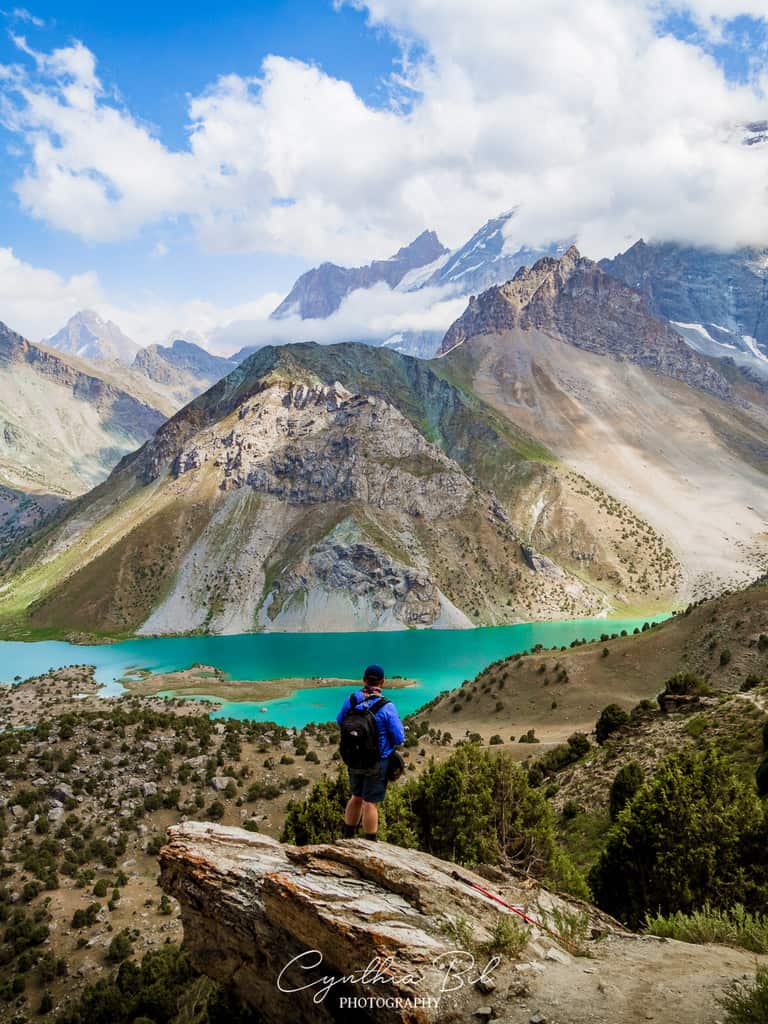
Disclaimer: This posts might contain affiliate links, meaning that if you make a purchase through these links, I may earn an affiliate commission. Thank you for helping to support this website!
TABLE OF CONTENTS
1. Visiting Tajikistan in 2024 – Tajikistan entry requirements
1.1 do i need a visa to travel to tajikistan.
Starting from 1 January 2022, citizens of the European Union, USA, Canada, Australia, New Zealand, the United Arab Emirates, Israel, and many more countries can travel to Tajikistan visa-free for a period of 30 days . This visa-free policy is valid at airports and land borders. However… there are still restrictions with this visa-free policy, which I explain further below.
Citizens of 121 countries, including India and Singapore, have been granted the right to receive an e-visa for 60 days within a period of 90 days from the entry date you fill in, which means you don’t have to enter on the first day of entry but within 90 days before your 60 days are up.
It costs US$30 for a single or double entry and you can pay by debit or credit card. Make sure to have a paper-version of the e-visa as you’ll need a stamp on both your passport and e-visa to avoid problems upon exiting the country.
If you are not on the list of nationalities who are not required to get a visa or can apply for an e-visa, you must then contact the embassy or consulate in person and supply a range of documents. You may be required to attend an interview before being granted your visa.
No matter what type of visa you’re eligible for, upon arrival you’ll have to fill out a migration card . You need to keep this one on you until you’re exiting the country.

Some important things to consider, especially when traveling visa-free:
If you want to visit the Pamir Highway and the GBAO (Gorno-Badakhshan Autonomous Region) located in the east of Tajikistan, the area where the Wakhan Valley and Pamir Highway are, you need to get a GBAO permit. You can apply for this permit on arrival at the OVIR office in Dushanbe , Khujand , Khorog and Murghab.
However… if you’re planning to arrive in Tajikistan via the Pamir Highway in Kyrgyzstan , you should already have the GBAO permit on you. I’ve also heard that the border guards at the land border might give you a hard time or even deny you entry without an (e-)visa, even if you’re eligible for visa-free entry .
If you’re planning to travel along the Pamir Highway, the easiest and best option – for now – would be to apply for an e-visa, even if you’re eligible for a visa-free arrival ( all countries on the 30-day free-visa list are also eligible for an e-visa ). The reason for this is to avoid any issues at the land border and you can apply for the GBAO at the same time. You just tick the checkbox on your visa application and pay an extra $20. Don’t forget to print out the visa and permit!
It’s also important to know that if you’re entering Tajikistan visa-free and you’re planning on staying longer than 10 days in the country, you need to register at the OVIR office within 10 days. Registrations costs around 210 TJS (around $20). If you want to skip a visit to the office, you can ask your hostel/hotel/guesthouse to do the registration for you for 250 – 300 TJS (around $22 – $27).
Sometimes e-visa get denied or “stuck” in the system. The best option is then to use the services of a visa agent. I recommend iVisa . They ask for an additional $20 fee but it might save you time and headaches.
☛ I always try to keep my guides as much updated as possible so if you recently traveled to Tajikistan and have any updates or information, please let us know in the comments below!

1.2 Can I extend my Tajikistan visa?
You can’t extend a Tajikistan visa. To stay longer than the 60 days included, you must leave the country and re-apply for a new Tajikistan visa. However, there is no limit to the amount of times you can exit and re-enter Tajikistan on visa runs, taking into account you re-apply every time for a new visa.
1.3 What happens if I overstay my Tajikistan Visa?
It would be a wise choice to keep in mind to leave Tajikistan the exact day that your visa ends as overstaying could prove to be very tricky. You will not be permitted to leave the country if your visa has expired, you may be required to attend court, and pay a hefty fine along with asking for assistance from your home embassy. It’s just not worth the hassle, so don’t do it!
1.4 Tajikistan vaccination requirements
There are no compulsory vaccination requirements for visiting Tajikistan. Some are recommended if you plan on travelling to Tajikistan including – Hepatitis A & B, Poliomyelitis, Tetanus, Typhoid and Diphtheria. There is no yellow fever vaccination certificate required for visiting Tajikistan.

2. When is the best time to visit Tajikistan?
If you’re not such a big fan of the summer heat, September and October are great months to visit Tajikistan. The hiking trails in the mountains are still accessible, the local markets are overflowing with fresh fruit and vegetables and the leaves are just starting to turn for the start of Autumn.

The complete guide to the Fann Mountains in Tajikistan
If the heat doesn’t bother you, anytime between June and September can be good. Not only is the Pamir Highway completely snow-free during this period so that you can fully appreciate the spectacular beauty when trekking in the high mountains, it’s also easier to find shared transport for travelling the Pamir Highway during these busier summer months.

2.1 What is the hottest month in Tajikistan?
Tajikistan has on average around 300 sunshine-filled days a year but the hottest time of year is between June and September with temperatures reaching 40ºC in the plains – Khujand, Khatlon and Dushanbe, Tajikistan. The climate can change dramatically depending on the elevation and Tajikistan is also the wettest of all the Central Asian republics.
2.2 Should I visit Tajikistan in winter?
If you choose to travel to Tajikistan in winter, the plains are where you’ll find the best weather. If you like freezing temperatures then you’ll not be disappointed, especially if you decide to tour between November and February. Temperatures can get as low as -30°C!
If you’re hoping for some deep snow skiing adventures then you might also considering visiting neighbour Kyrgyzstan or Kazakhstan . Various mountain passes also close during the winter months so it’s not the best time to travel along the Pamir Highway…

Everything you need to know about Skiing in Kyrgyzstan
3. Tajikistan Travel Insurance
Travel insurance isn’t mandatory for visiting Tajikistan, however, I would strongly advise you to get coverage if you plan on travelling in Tajikistan. You just don’t know when you may need it and for peace of mind, it’s definitely worth it! Not only is Tajikistan an adventurous destination, getting cover for activities and traveling at high altitudes would be a wise decision.

What are the 3 best budget-friendly travel insurance companies
If you don’t have travel insurance yet, I highly recommend HeyMondo as it covers both medical costs, activities at high altitudes and theft.
Need Travel Insurance for Central Asia? I use and highly recommend HeyMondo Travel Insurance . As a reader of Journal of Nomads, you get a 5% discount of your insurance plan!

4. How many tourists visit Tajikistan?
In 2020, The New York Times featured Tajikistan in an article about the best places to visit that year and the number of tourists had been growing each year, then the pandemic hit and forced the country to close its borders to international visitors.
Like so many countries, Tajikistan’s economy is dependent on tourists and visitors spending money. As the country slowly begins to rebuild its tourist economy, it’s now more important than ever to shed light and advertise this truly fascinating and epic country.
5. What is the best way to get to Tajikistan?
You can enter Tajikistan via air or overland from the bordering countries of Uzbekistan , Kyrgyzstan , Afghanistan and China.
5.1 Where do you fly into Tajikistan?
Many international flights connect Dushanbe, the capital of Tajikistan, with Europe and the rest of the world. The airport in Khujand also hosts international flights.
Some people however choose to fly into airports in Kyrgyzstan and travel to Tajikistan from here, especially if you intend to travel the Pamir Highway because flights to Kyrgyzstan can be more available and less expensive.
5.2 How to travel to Tajikistan by road
If you plan on travelling to Tajikistan by road it depends on where you’re coming from and what border crossings are open at the time of travel. Tajikistan shares a border with Uzbekistan , Afghanistan, Kyrgyzstan and China.
At the moment, the border crossings with Uzbekistan are open to foreign travellers but most land border crossings between Tajikistan and Kyrgyzstan, China and Afghanistan remain closed to foreign travellers. Check on the site of Caravanistan for current information on border crossings.
The Kyzylart border between Kyrgyzstan and Tajikistan along the Pamir has reopened since late July 2023, but it might still be complicated to pass. You also need a GBAO permit to enter Tajikistan via this border.

6. How to get around in Tajikistan/Is it easy to travel around Tajikistan?
It can be quite tricky travelling around Tajikistan, especially if you plan on visiting sites outside of the major cities. This is largely because the country does not have a regional public transport system, which means that intercity bus or train connections are basically non-existent.
Let me tell you more about the options that are available for you to see more of this wild and mountainous country and experience the adventure of a lifetime.

6.1 Getting around Tajikistan by bus
In Dushanbe, as well as some of the larger cities, public buses are plentiful. Marshrutkas (minibuses) will pick you up along particular routes for a very small charge.
However, do not expect to arrive at your chosen destination quickly. These minibuses will stop anywhere to pick up and drop off passengers.
6.2 Getting around by shared taxi
A shared taxi is a taxi that you share with usually 4 to 5 other passengers. It doesn’t have a fixed schedule but leaves once the taxi is full. It’s a good plan to have an idea of how much you should pay for a ride beforehand so confirm the price with the driver and tell him clearly that you want to share the taxi with other passengers.
Due to Tajikistan’s limited public transport network, it’s pretty difficult to travel outside any of the major cities unless you use a shared taxi of course. They make for a great option if you want to travel further than the city limits.
It’s the most common method of transport if you plan on covering some distance. In order to be as cost efficient as they can, people aim to fill their empty seats to help balance out the huge rise in costs of petrol.
Travelling within a city is really easy in a shared taxi too. Many drivers use their phone as a meter that starts at around 10 Somoni making short distances very affordable and roughly the same price as taking a bus.

5 top things to do at Iskanderkul Lake
6.3 Getting around by train
The north and south of Tajikistan each have their own train networks that are not directly connected, making overland train travel in Tajikistan very slow, limited and dependent on where you hope to travel to.
Train travel is only an option to travel from Khujand to Uzbekistan en from Dushanbe to Kulob, Bokhtar (formally Qurghonteppa) and the Afghanistan border.
6.4 Hitchhiking in Tajikistan
It’s very common for local people to hitchhike daily in Tajikistan so hitchhiking as a foreigner is definitely doable and worth it. It’s viewed as a valid way of travelling throughout the country because not everyone owns a vehicle and public transport is pretty non-existent. Keep in mind that most drivers will ask for a small fee to travel with them.
6.5 Driving in Tajikistan
Roads in Tajikistan are not smooth going and tend to be in pretty poor condition. With the high price of petrol and breakdown or recovery companies being non-existent in Tajikistan, there are a few solid reasons not to drive through Tajikistan.
However, if you dream of driving through epic landscapes, chasing that feeling of adrenaline and looking for adventure, then driving in Tajikistan could be for you! If you choose to rent a 4×4 car then make sure to book ahead, especially in the summer months.
Alternatively, if you choose to drive your own car in Tajikistan it’s important to be aware of the traffic police. It can be a common occurrence for Tajik police to randomly stop passing cars and demand a small bribe.
Although the Pamir Highway is open all year round, if you’re hoping to travel in winter be aware that many of the routes can be blocked by snow. During the spring, there is the risk of roadblocks from rockslides and also mudslides, so be prepared for anything making sure that you have plenty of supplies and a plan in an emergency.
A third option for travelling in Tajikistan is to rent a car with a driver. There is normally a fixed price for this plus extra per each kilometer travelled but make sure the vehicle is 4WD especially if you hope to head up into the mountains.
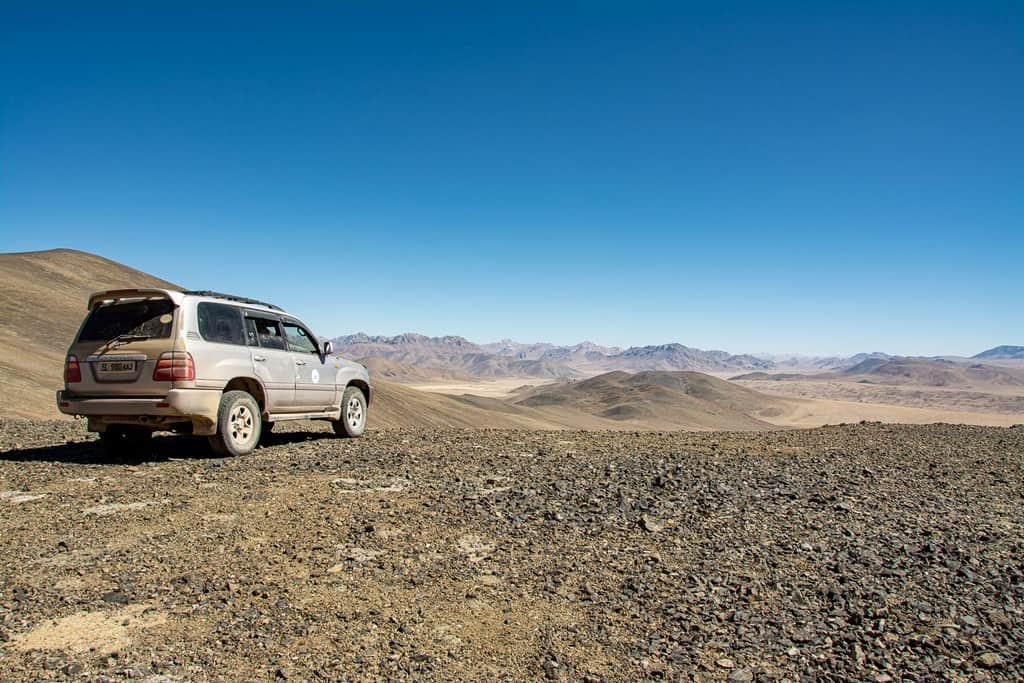
7. Is Tajikistan safe to visit?
Tajikistan in general, can be considered a safe country to visit with low rates of crime (a lot lot lower than f.eg. the USA!!). It’s considered a dangerous country to visit at it’s unknown (people tend to be afraid of the unknown…) and its neighboring country Afghanistan doesn’t have the best reputation. A country ending with -stan gets quickly associated with danger.
And yes, it’s true that there was a terrorist attack in 2018 where 8 cyclists were struck by a vehicle. Just so you know, this is not something that happens on a daily, or even yearly basis. My home country Belgium, considered to be super safe, has known more violent attacks on a bigger scale than this (remember the airport bombings in 2016?).
I’m not downplaying anything but I can honestly tell you that you’re way way way more at risk by walking in a big European or American city at night than when you’re traveling around Tajikistan.
You only need to be aware at the border regions of the country. Last year, Tajikistan got into a violent dispute with Kyrgyzstan and the borders remained shut for a long while. Today, the situation has been stabilized but you should check the current situation in advance if you’re planning to cross any land border.
The only real dangers in Tajikistan are food poisoning and altitude sickness. It’s almost inevitble that you’ll get sick at some point as our foreign stomachs just can’t handle the water there (take plenty of Immodium tablets with you…). Never drink tap water and always use a filter (I always use a Lifestraw bottle or steripen ) to drink water that doesn’t come from a plastic bottle you bought in a shop!
As for the altitude sickness, Tajikistan is over 90% mountains, often reaching altitudes above 3000 meters. Take the time to acclimatize and never ascend more than 1000 meters in one day! If you’re worried or prone to altitude sickness, seek medical advice and/or bring Diamox, especially if you’re planning on traveling the Pamir Highway where you’ll easily reach altitudes of +4000 meters.
Another thing to be wary of is corruption, especially if you’re traveling and/or driving without a local guide, and getting overcharged by taxi driver.
Tajikistan solo travel/Is Tajikistan safe to travel alone?
I always traveled with companions to Tajikistan so, although I would say yes, it’s safe to travel alone, I can’t tell you out of experience. Nicole from The Adventures of Nicole traveled many times by herself to Tajikistan and here’s how she experienced solo (female) travel in Tajikistan.
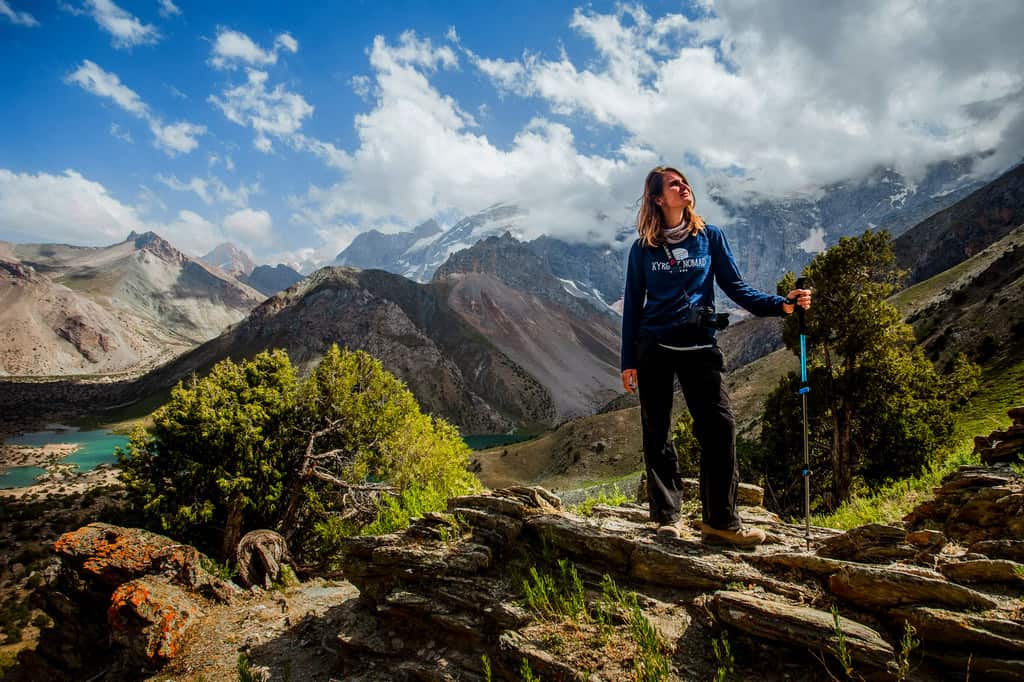
8. Money and currency in Tajikistan
8.1 what kind of money do they use in tajikistan.
The Tajik Somoni (TJS) is the official currency used in Tajikistan.
- Banknotes circulating in Tajikistan: 10, 20, 50, 100 and 200 Somoni.
- Coins circulating in Tajikistan: 1, 5, 10, 20, 25, 50 Dirams and 1, 3 and 5 Somoni
I always use the Xe.com app to convert and stay up-to-date with the current exchange rates. At this time of writing, the current exchange rates are:
- $1 USD = 11 TJS
- €1 Euro = 12 TJS
- £1 British Pound = 13 TJS
8.2 Which credit cards are accepted in Tajikistan?
Visa and MasterCard are two credit cards that are accepted at certain accessible ATM’s, hotels and restaurants in Dushanbe and larger cities.
However, the majority of Tajikistan works on a cash-only basis and paying with a credit card can be nearly impossible throughout most of the country. Always make sure that you have cash on you and don’t depend on your credit card when travelling to Tajikistan.
8.3 ATMs in Tajikistan
Back in 2016, two of Tajikistan’s banks went bankrupt and since then, withdrawing money from a cash machine can prove to be quite tricky. You will find ATMs in the larger cities but not along the Pamir Highway so make sure that you carry some cash on you if you plan on heading there or further from the cities. There are only a few ATMs outside of Dushanbe and Khujand.
8.4 Exchanging money in Tajikistan
You can exchange money in larger cities such as Dushanbe, Khujand and Khorog but make sure your notes are in good condition as exchanging older, worn notes can sometimes be difficult. Also only exchange your cash at authorised and official currency exchanges. You can also pay with US$ as they’re widely accepted in the country.
8.5 How much money do you need in Tajikistan? Is it cheap to visit Tajikistan?
If you happen to wonder what the cost to visit Tajikistan is, let me tell you a bit more about the money side of things. Although Tajikistan is one of the poorest areas in Central Asia, organised tours in Tajikistan are usually quite costly.
It is possible though to travel independently around Tajikistan for a lot less than tour company prices. It all depends on where you plan on going and how long you want to stay. If the Pamirs are calling to you, you may choose to hire a driver who has his own vehicle.
Services are not cheap in Tajikistan despite it being one of the poorest countries in Central Asia. Petrol isn’t cheap so that’s important to factor in if you plan on hiring a rental car. Meals along the Pamir highway will cost you around $2 each and homestays per night are around $12.
In the capital of Dushanbe, you can find cheaper accommodation in hostel dorm rooms, around $4 a night and the cost of public transport within the city is really dependent on where you want to go. Costs tend to be a lot lower outside of the Pamirs.
If you’re travelling to Tajikistan on a budget then it’s possible to have a daily spend of around $40 including food, accommodation and travel, depending where you’re traveling and what you plan on doing each day.
8.6 Should you tip in Tajikistan?
Tipping is expected in more upmarket restaurants, particularly in the cities; however, check your bill as a 10% service charge may have already been added. It’s also a lovely gesture to tip any supportive trekking guides or private drivers (standard tipping rate is 10%).

9. Tours in Tajikistan
Exploring Tajikistan by going on an organized tour is a wonderful, worthwhile and convenient way to see some of Tajikistan’s most beautiful spots. I work together with local travel operators who offer customized tours so you can contact me if you need help with Tajikistan tour planning .
I also organize the unique 16-day Highlights of Tajikistan Adventure Tour during which you go with a small group on an adventurous road trip along the Pamir Highway , stay with local people and experience the culture in the Jisue and Wakhan Valleys , hike to various alpine lakes in the scenic Pamir Mountains and join a 3-day trek in the stunning Fann Mountains !
How many days do you need for Tajikistan?
It’s all relative to what you want to see and do whilst visiting Tajikistan. Many of the organised tours are between 7 to 10 days but if you want to see and experience more and you have the time and budget, then you should definitely spend at least 14 days here to visit Tajikistan’s Highlights such as traveling along the Pamir Highway and hiking in the Fann Mountains .
10. Where to stay in Tajikistan — Accommodation in Tajikistan
10.1 hostels, hotels and airbnb in tajikistan.
Hostels are a good option in Tajikistan’s larger cities. Not only are they affordable, around $20 per night, but they are also great places to meet travel partners. Teaming up with others who are planning on travelling the Pamir Highway for example is a clever way to save money and also fill a shared car.
Hotels are more and more popular, especially in Dushanbe, Khorog and Khujand. There are varying choices to suit different budgets but it’s possible to find a room for around $30 per night. Smaller towns that are popular with locals also have some hotel options that offer cheaper prices compared to the cities.
It’s also worth checking out the accommodation options on Airbnb. You can sometimes find entire apartments for rent at very reasonable rates, $25 per night.
10.2 Homestays/guesthouses in Tajikistan
If you’re looking for an authentic way to spend your evening whilst staying in Tajikistan, then you should definitely spend some time in a homestay or guesthouse. In most towns and cities you will likely find a good selection to choose from.
Spending an evening staying in a local person’s home and sharing food is a really lovely way to soak up the culture of Tajikistan. You’ll pay around $13 per night which normally includes dinner and then breakfast the following day. You’ll more than likely receive a friendly welcome and maybe even stay for lunch too.
When travelling on the Pamir Highway, homestays are the best option for a tight budget and there are many to choose from. A word of warning though, be wary of what you eat whilst in homestays as it’s common to get an upset stomach.
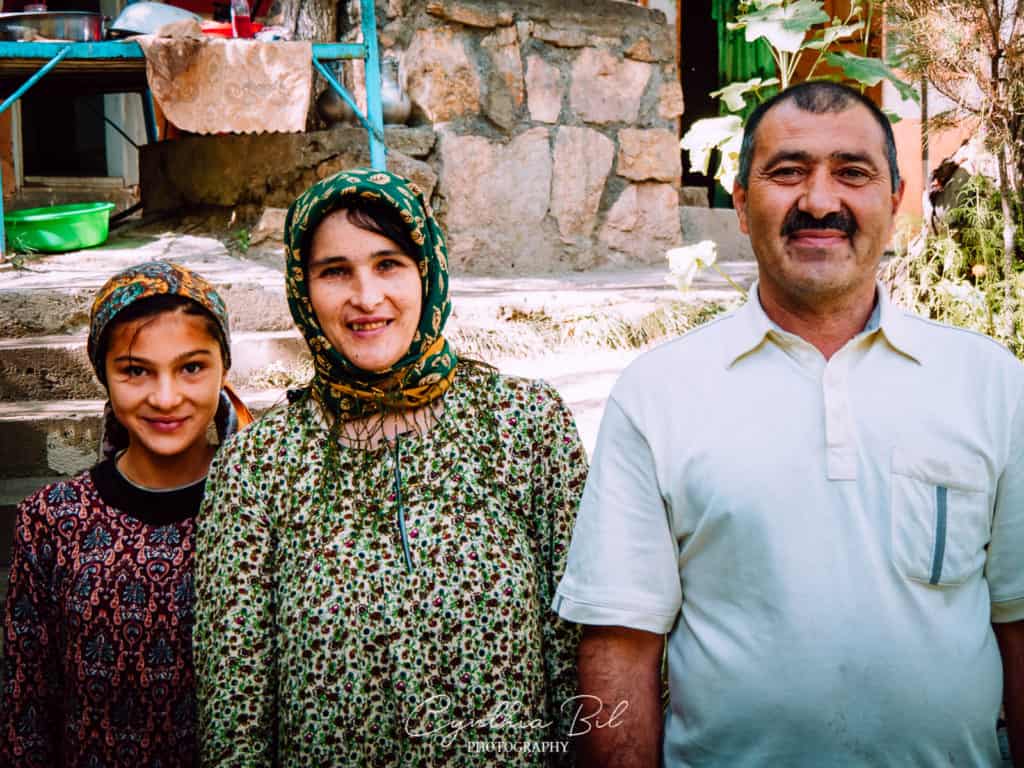
10.3 Camping in Tajikistan
If you love the big outdoors, then wild camping in Tajikistan might be just for you! Camping is a fantastic way to soak up the epic landscapes of Tajikistan. It’s important to note that although it’s fairly straightforward and easy to camp throughout the country, that you should adhere to a few wild camping rules. Make sure you don’t camp in the same pitch for more than once night, or on private land without getting permission first.
Also make sure that you have plenty of supplies – food and water – depending on how rural you choose to go. Some guesthouses will also grant you permission to camp on their land for around $2 per night. Be smart and plan ahead if you do feel drawn to camp whilst travelling in Tajikistan and keep an eye on the weather too.

11. Tajikistan Food and drinks
The food in Tajikistan is typically Central Asian but with the added influence from Afghanistan and Russia. With plenty of dairy and grilled meat in their dishes, it’s traditional to be served bread (non) and tea with every meal.
If you happen to be in the country during late summer, you’ll be spoiled for choice with fruit such as watermelons, pomegranates, grapes, figs, peaches and apricots.
11.1 5 Tajik dishes you have to try
Oshi Palav (pilaf/Plov) is known as the ‘King of Meals’ in Tajikistan. UNESCO has recognised it as part of the country’s cultural heritage and there are hundreds of varying recipes for this famed Central Asian dish. Ingredients include rice, meat, vegetables and seasoning that are all slow-cooked or fried together on a kazan – a traditional cooking pot.

Qurutob is Tajikistan’s national dish and consists of tomatoes, cucumber, peppers, with meat and fatir (a puff pastry like flatbread). This unique salad dish gets its name from ‘Qurut’ – salted, dried balls of yoghurt that have been soaked and then the mixture is used as a base for the dish. It’s traditionally a dish made to be shared with others using your hands and it’s commonly served on a large plate called a tabaq.
Sambusa/samosa is a type of savoury meat pie with origins dating back as far as the 10th century. The world knows it for its famous triangular shape and Tajiks sometimes choose to fry them or bake them. You will find a few different types of sambusas in Tajikistan, some filled with meat and others using vegetarian ingredients.

Shurbo is one of Tajikistan’s deliciously hearty soups made using a medley of vegetables and meat, usually either mutton or beef. It’s commonly served alongside non or fatir breads.
Shakarob is a form of qurutob (tomato and onion salad) that has been made without using meat but includes chakka- a type of Middle Eastern dairy named as cheese or yoghurt. It’s a great dish to be enjoyed later in the evening in Tajikistan as it’s light and easy to prepare. It’s also a great choice for vegetarians visiting Tajikistan.
11.2 Is vegetarian food available in Tajikistan?
You may be hard-pushed to find a lot of purely vegetarian options on offer in Tajikistan. If you find yourself in more tourist places and larger cities, there will be far more opportunities for you to find a restaurant that will either serve or adapt one of their existing dishes to exclude meat.
Bread is plentiful along with qurutob, balls of salty cheese. Fruit and vegetables are widely available to buy in the food markets but be cautious of any raw meals such as salads served to you in restaurants. Instead opt for something that has been cooked.

11.3 What is the national drink of Tajikistan?
Green tea is the most commonly served beverage and also the national drink in Tajikistan. It is a very large part of Tajik culture and you’ll be offered it before, between as well as after a meal. It is served from a fine china teapot into handleless cups known as piala. Black tea is also popular, especially during winter.
11.4 Alcohol in Tajikistan
Tajikistan is a Muslim country, meaning that alcohol is not really permitted. But, despite this, you will find vodka served in most cafes and eateries. Vodka also remains a very popular drink, especially for the Tajik generation who grew up during Soviet Rule.

12. Packing list for Tajikistan
12.1 what should i wear in tajikistan.
Your clothing choices will reflect the season and the area that you plan on travelling to in Tajikistan.
If you happen to be trekking then warm, thermal and waterproof layers will come in useful. If you’re travelling in Tajikistan throughout the hotter, summer months then light cotton clothes would be appropriate in the cities.
Bear in mind that although there are no set rules regarding style of clothing, Tajikistan is a Muslim country and if you plan on visiting mosques or other religious and sacred places, your clothing must be loose and cover your arms and legs below the knee.
You can wear shorts and T-shirts in the cities but better leave any sleeveless shirts at home. If you like to explore less-touristic places like small towns and villages, dress modestly. Wear a T-shirt or a tunic over long trousers or a long skirt. Three-quarter pants or skirts are also fine, just don’t walk around the village in a vest top and short shorts.

12.2 Travel essentials for Tajikistan
Here’s a list of essential items for Tajikistan travel. It’s important to note that whilst in Tajikistan you keep your travel documents and passport on you most of the time. It’s common as a visitor for military and police officials to ask for your papers as well as at checkpoints.
- Water Filter Bottle : I strongly advise not to drink tap water in Tajikistan. Buy bottles of water in the local supermarkets or better, bring a water bottle with a filter . It’s not only good for your belly and wallet, but it’s also great for the environment because you don’t have to buy any plastic bottles of water. I use and highly recommend the Lifestraw Water Filter Bottle .
- Anti-diarrhea tablets : yes, I’m afraid that this is an essential as well… 80% of the travelers I’ve met struggle at some point with stomach issues, due to a certain bacteria in the food. I always have Furazolidone tablets (which you can buy over the counter at a local pharmacy) as it has proven its worth. These tablets tackle the bacteria causing bowel problems within a day.
- International travel adapt or : the power sockets inTajikistan are of type C and F (the same as in Europe). The standard voltage is 220 V and the standard frequency is 50 Hz. In case you need an adaptor, I use and recommend this all-in-one Universal Travel Adaptor as you can use it worldwide.
- Power bank : you’ll need a power bank if you’re planning on traveling the Pamir Highway, the mountains and in general outside the cities. It’s in any case always handy to have with you in case of a power outage occurs, even in the major cities). I use and recommend Anker Power Bank as it has a 20,000mAh cell capacity providing at least 5 full charges for my phone. I can even charge my camera batteries with it!
- Anti-theft money belt : handy and safe when you travel with cash
- Photography equipment : you can’t visit Tajikistan without capturing its beauty on camera! Read my guide photography essentials and cameras for travel photographers for more information.
- Trekking gear and warm clothing (even in summer) if you’re heading into the mountains and the Pamir highway

The Complete Packing List for Traveling and Trekking in Central Asia
13. Are drones allowed in Tajikistan?
Drones are allowed in Tajikistan, however, you must follow certain laws when flying a drone in the country. You’re not required to purchase a drone permit if you are using yours for recreational use however if it’s for commercial use, then you must obtain a permit.
14. How is the internet in Tajikistan?
The internet in Tajikistan is filtered and some websites have been deliberately blocked. 3G is accessible whilst in the larger cities and towns however in more rural places outside the cities, you can expect a very slow internet speed.
If you are in Dushanbe, you can find some internet cafes that will offer WiFi allowing you to stay in touch with the rest of the world! If you plan on travelling the Pamir Highway and the Wakhan Valley it’s good to know that WiFi is almost non-existent.
14.1 Which is the best SIM card in Tajikistan and how to get one?
Beeline and Babilon-M are the better providers for Dushanbe, but in Murghab, Tcell and Megafon are better. You can nowadays also get a tourist SIM card at Dushanbe airport or at a Tcell or Megafone shop. These SIM cards are only active for 10 days at a time.
If you’re planning to stay longer than 10 days in Tajikistan, you’ll have to go to a shop of the internet provider with your passport and a registration slip of your accommodation to reactive your SIM card for another 10 days. You always have the option to choose to ‘roam’ with your SIM card from home but it’s likely to cost you a lot in charges.
14.2 Recommended apps for Tajikistan
- Maps.me : This is a very practical app to find your way in Tajikistan. You can download the map of the country for offline usage. The app gives you accurate directions and shows you where you can find the nearest restaurants, bus stations, ATM, hotels, places with wi-fi, points of interest. It also tells you the number of the bus you need to take when you travel within a city.
- Wikiroutes : Wikiroutes is a handy app if you travel by public transportation. It shows you the bus and/or metro route and tells you where to hop on and off.
- Google Translate : Translates written and spoken Tajik, Persian and Russian. You can download Persian and Russian for offline use ( see 17. What languages are spoken in Tajikistan below for more info on the spoken language in Tajikistan ).
- Xe currency: a very handy currency conversion app that always uses the latest rates in effect. It’s useful to keep track of how much things cost in Tajikistan.
- Booking.com : I made all my reservations for hostels and guesthouses inTajikistan through this hotel and hostel booking website, which is also available as a phone app. No other app comes close to it in terms of inventory and price.

15. Culture and etiquette in Tajikistan
65% of the total population of the people of Tajikistan are ethnic descendants from Persia. The Pamiris, who reside in the Gorno-Badakhshan Autonomous Province make up part of this percentage. However, they speak a different language and also belong to a different sect of Islam. The Muslim faith has helped shape the music, art and food in Tajikistan as well as the national identity and culture.
Due to years of conflict, deep scars still are present within the country’s consciousness. Tajik customs centre around respect and hospitality and people tend to be very family-orientated and friendly. The culture is similar to that of both Iran and Afghanistan dating back thousands of years.
One of the ways people show respect to one another can be seen in their greetings. It’s a sign of good manners to place the left hand over the heart and bow slightly and is customary for the elderly to be given a place of honour in social situations, with men and women often being separated.
Some handy tips while traveling:
- Bread is sacred. Try not to leave chunks on your plate or drop it on the floor. Especially don’t put it under your lap and save for later and, even worse, throw it in the bin (this will deeply upset the people)!
- Remove your shoes before going inside a guesthouse, homestay or any home. Even if you don’t need to, it’s a sign of respect.
- Veggies/vegans! When traveling in the cities and eating at restaurants, you’ll be fine. But… if you’re staying at guesthouses or homestays in the mountains, it’s a huge sign of honour for the hosts to present the guest with meat at dinner. You could try not eating the meat but it might seem a bit disrespectful if you can’t explain your reasons.

16. What is the religion in Tajikistan?
The majority of people in Tajikistan are Suni Muslims and practice Islam which is the predominant religion throughout Central Asia. The religion was introduced by the Arabs during the 7th century and is an integral part of the country’s culture. Although religious freedom was declared by the Tajik government, a few public holidays are celebrating significant dates in the Islam faith, such as Eid al-Qurban (Feast of the Sacrifice) usually somewhere in August or September.
17. Do people in Tajikistan speak English?
English is very slowly becoming a more widespread spoken language in Tajikistan, especially with the younger Tajik generation living in the cities. Along with the exposure to the language via television and the internet, the ability to speak and understand English offers new career opportunities to the youth in Tajikistan. However, don’t depend on it, especially in rural areas.
17.1 What languages are spoken in Tajikistan?
Tajik, the main language in Tajikistan, is a dialect of Persian and a language spoken in Afghanistan and Iran. Other widely spoken languages include Russian with minority languages Uzbek, Pamiri, Kyrgyz and Yaghnobi.
It will benefit you to know some Russian or Persian whilst traveling in Tajikistan. I also you install the Google Translate App for Tajik translations (only online) and download Persian and Russian into your app that you can use offline.
17.2 Useful expressions to know before visiting Tajikistan
- ‘Assalomu alejkym’ – Hello (general greeting)
- ‘Hayr’ – Goodbye
- ‘Shumo chi khel?’ (shoo-moh-chee-khel?) – How are you?
- ‘Naghz, rahmat’ – Fine, thank you.
- ‘Rahmat/Tashakur’ – Thank you
- ‘Lutfan/ iltimos’ – Please
- ‘ Bubahshed’ – Excuse me (sorry)
- ‘Shumo az kujo hasted’ OR ‘shumo az kujoed?’ – Where are you from?
- ‘In (pronounced ‘ee’ for ’i’ sound) chand pool? ’ – How much is this?

18. Recommended books about Tajikistan
When traveling in Uzbekistan, I would recommend bringing a small pocket phrasebook like the Lonely Planet Central Asia Phrasebook & Dictionary as it contains some useful phrases.
I would also recommend reading one or more of the following books:
- Tajikistan Bradt Travel Guide is one of the most comprehensive travel guide books about Tajikistan
- Lonely Planet Central Asia is ideal if you’re also planning on visiting other destinations in Central Asia
- Trekking in Tajikistan is a very informative book that specifically covers about 25 different routes in Tajikistan and is a must for any serious hikers out there
- The History of Tajikistan: Silk Roads and Summits , is a great book if you want to learn more about Tajikistan’s history
- The Silk Roads: A New History of the World : a journey through time, a revelatory new history of the world, connecting all the vast webs of roads to gain a greater understanding of modern history

I hope that you have enjoyed reading my Tajikistan travel guide. I wish you a beautiful adventure if you are planning a trip to this interesting and vast, mountainous land. Happy travels!
Do you still have questions about your upcoming journey to Tajikistan? Let me know in the comments below or send me an emai l!
Related posts

Best Tips and complete Packing List for Traveling in Central Asia in 2024 – When to go and what to wear when visiting Central Asia

Volunteering in the South of Tajikistan: English Language and Education Centers SWORDE-TEPPA
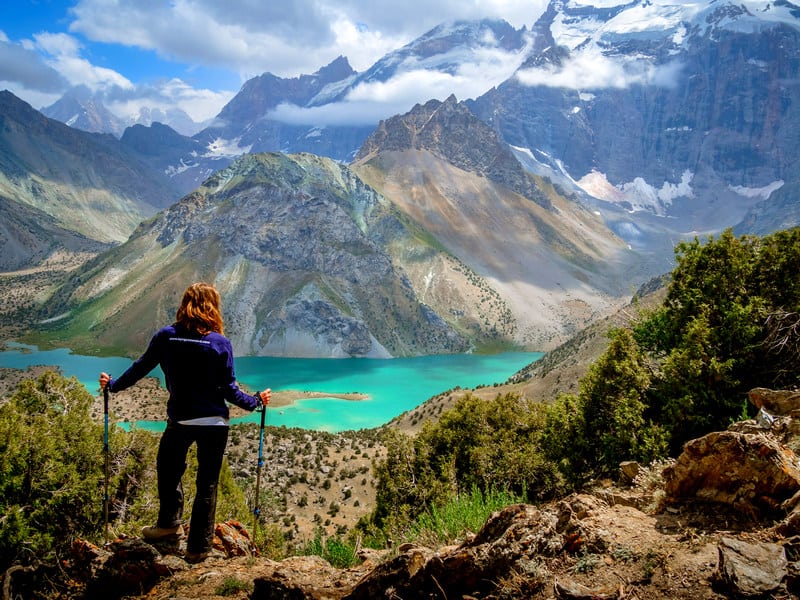
The Complete Guide to the Fann Mountains in Tajikistan

5 Top Things to do at Iskanderkul Lake in Tajikistan
Leave a comment cancel reply.
Your email address will not be published. Required fields are marked *
Save my name, email, and website in this browser for the next time I comment.
A guide for traveling to Tajikistan (Tips + 3-week itinerary)
By Joan Torres 2 Comments Last updated on April 29, 2024

Wanna travel to Taliban Afghanistan with Against the Compass?

We have one tour scheduled for the Wakhan Corridor in Afghanistan.
August 18th to September 2nd, 2024
The ex-Soviet Republic of Tajikistan is a truly wild country that you don’t want to miss in your Silk Road journey.
Home to the Pamir range, one of highest mountain ranges in the world, the mountains of Tajikistan attract the most adventurous travelers, especially those wanting to drive the M-41, or Pamir Highway, an impressive road and architectural masterpiece that goes through some of the remotest and most beautiful mountain scenery in Central Asia .
With tourism increasing year by year, the country is daily becoming more prepared to receive international travelers and, after spending 1 month in the country, I have compiled this guide that contains all the tips needed for traveling to Tajikistan , plus a compelling 3-week itinerary.
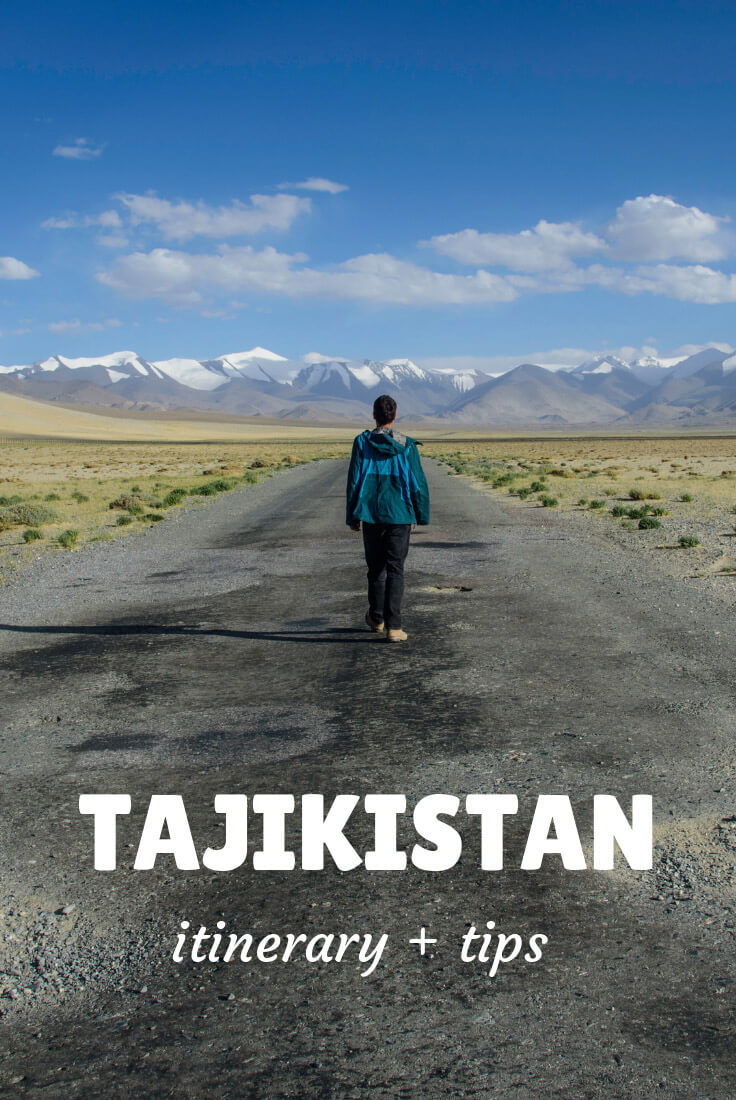
In this Tajikistan travel guide you will find:
Table of Contents
- Travel Insurance
- Best time to visit
- The country and culture
- Scams and corruption
- Food and alcohol
- Transportation
- Useful books
- Accommodation
- More information
our recommended travel insurance for Tajikistan
With all the adventure plans, IATI Insurance is the best insurance for any kind of adventurous destination, like Tajikistan.
🪪 How to get a visa for visiting Tajikistan
In 2022, tajikistan implemented a free-visa policy for up to 52 countries.
The free visa for Tajikistan is valid for both airport and land borders, and these countries include:
Argentina, Australia, Austria, Bahrain, Belgium, Brunei, Canada, Chile, Croatia, Cuba, Czech Republic, Denmark, Dominican Republic, Ecuador, Estonia, Finland, France, Germany, Greece, Hungary, Iceland, Indonesia, Italy, Jamaica, Japan, Jordan, Kuwait, Latvia, Liechtenstein, Lithuania, Luxembourg, Malaysia, Maldives, Monaco, Netherlands, New Zealand, Norway, Philippines, Poland, Portugal, Qatar, Saudi Arabia , Singapore, South Korea, Spain, Sri Lanka, Sweden, Switzerland, Thailand, Turkey, United Arab Emirates, United States
Problem > GBAO Permit
The Gorno-Badakhshan Autonomous Region (GBAO) is the region located in the east of Tajikistan, where the Pamir Highway and Wakhan Valley are.
If you want to visit it, you’ll have to get an extra permit.
How to get a GBAO permit:
- By applying for an e-visa and ticking the GBAO checkbox in the application form of the e-visa. That costs 20USD. While this might seem a convenient option, it makes the free VOA become totally useless.
- At the Tajikistan Embassy.
- At the Migration Police Office (OVIR) in Dushanbe, find the location here . This costs 20 Somoni.
Read: 30 Tips for traveling to Kazakhstan
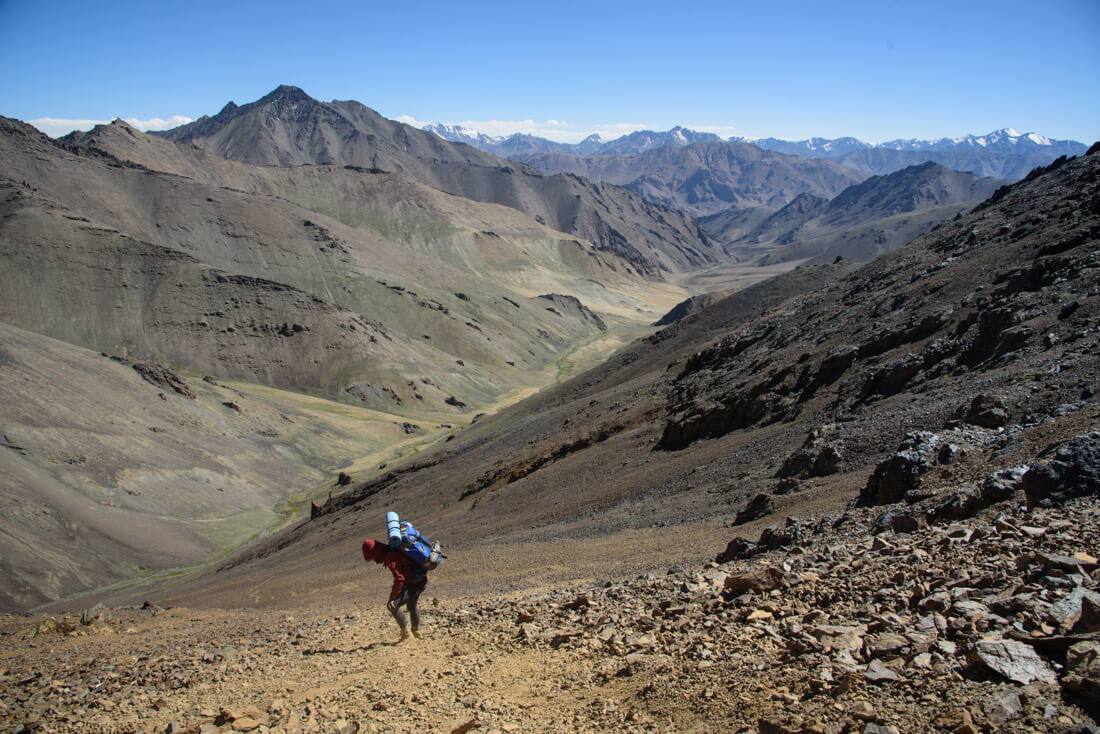
The rest of the nationalities might be able to apply for an e-visa
And you can apply through the official portal , also valid for any port of entry.
The visa costs 50USD, is valid for 60 days, is single entry, and takes 1 or 2 working days.
Double-entry visa for Tajikistan
For the e-visa, it’s finally possible to buy a multiple-entry tourist visa for Tajikistan.
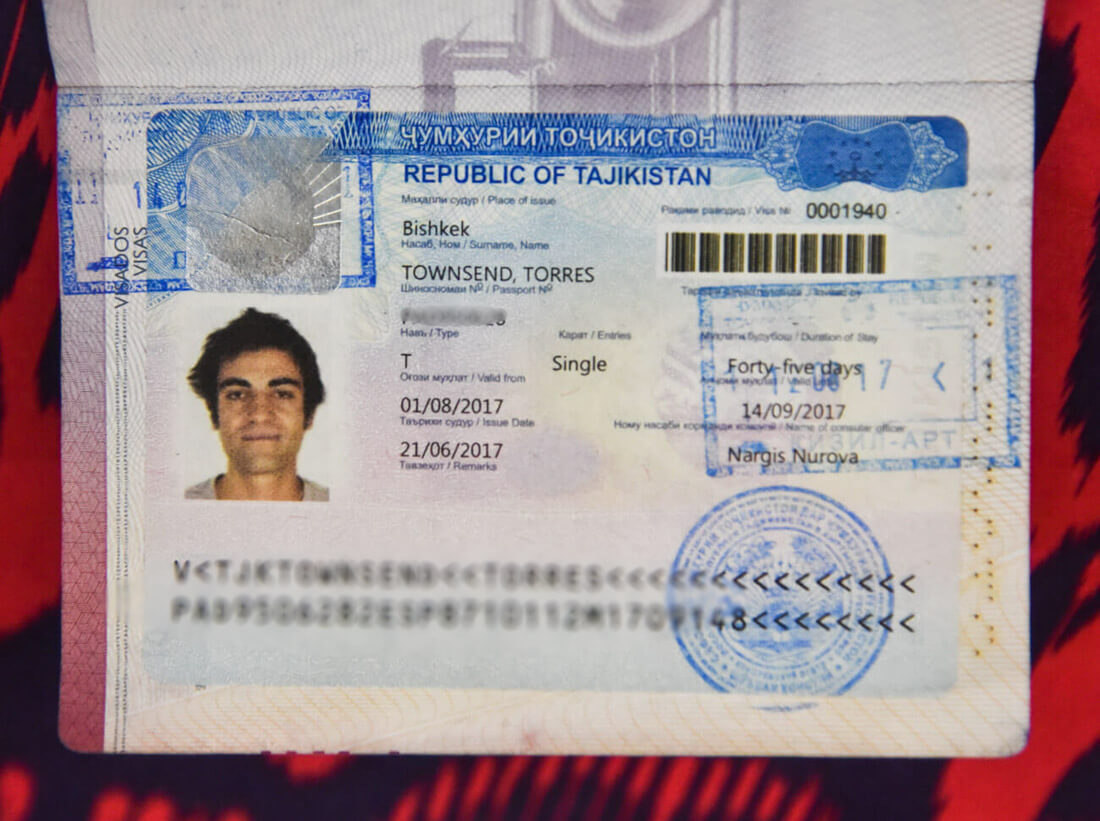
🚑 Travel Insurance for Tajikistan
Tajikistan is an adventurous destination, with crazy high mountains, the Pamir Highway averaging around 4,000 meters above sea level, so you should get travel insurance with the following features and benefits:
- It covers adventure activities, including trekking in high altitudes
- It offers long-term plans, perfect for big overlanding trips around the Stans.
For that, I recommend IATI Insurance because it gathers all the above, plus readers of this blog get a 5% discount .
⛅ Best time to visit Tajikistan
If you plan to do some trekking in eastern Tajikistan, you should come in summer.
I remember being in Alichur, a small village in the Pamir Highway and one of the coldest places in Central Asia, and, in the morning, during August, it was -5ºC and there was a freezing, strong wind, so it felt even colder.
Imagine the weather there during the rest of the year.
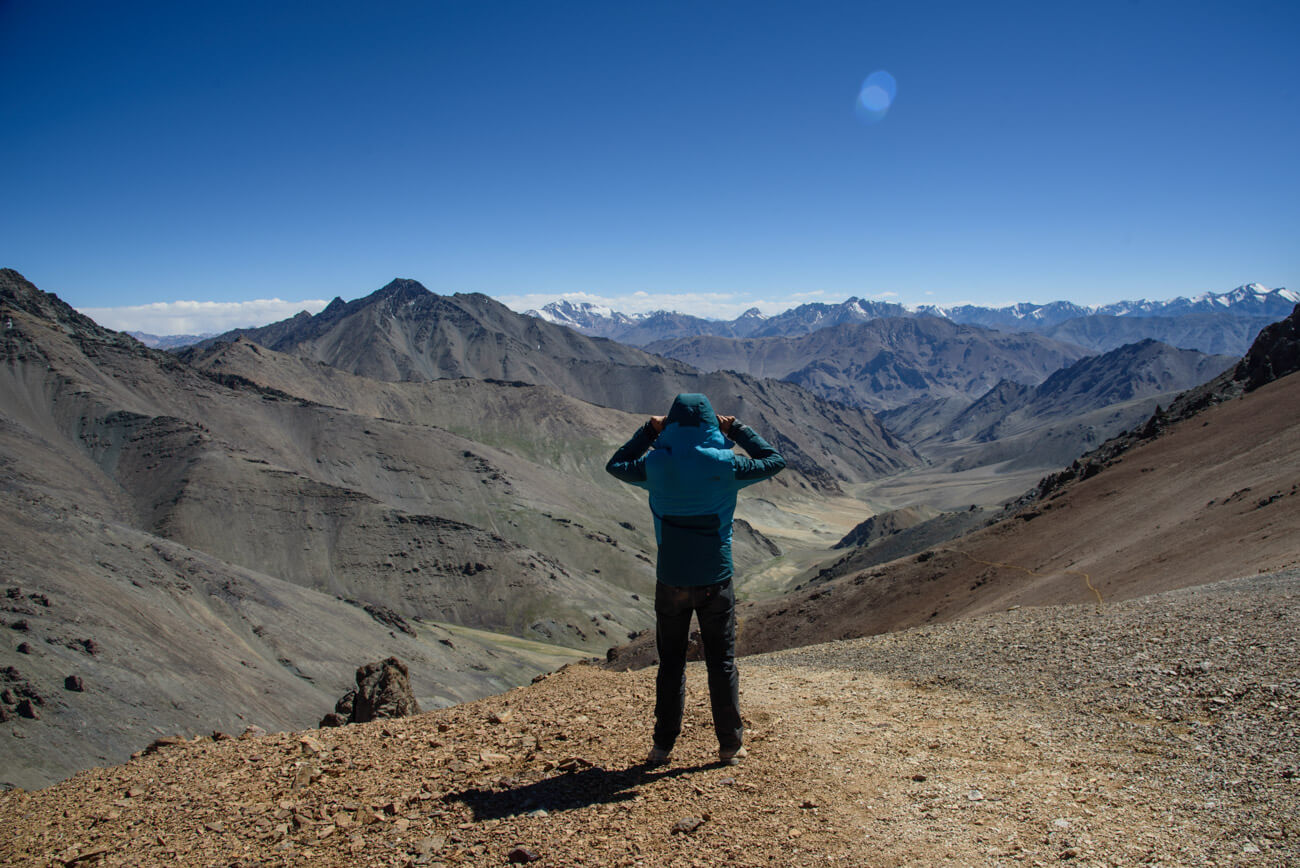
Nevertheless, the Pamir Highway is open all year long so, if you are self-driving, you can drive it at any time.
Actually, my friend Joao Leitao from Nomad Revelations drove it in winter.
On the other hand, the Fann Mountains in west Tajikistan are at lower altitude, hence warmer, so they can be visited during spring and fall.
I did the 7 lakes trek in September and it was particularly hot!
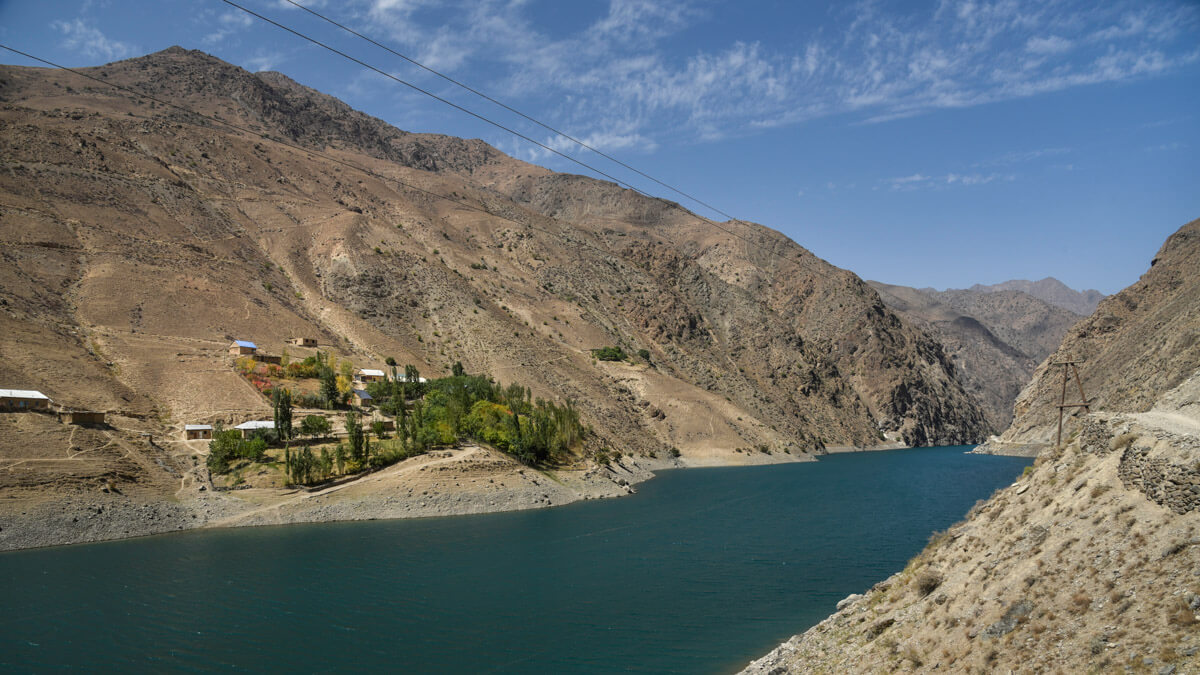
🕌 The country, the people and its culture
After the Soviet Union’s dissolution in 1991, Tajikistan went through a dark period of Civil War that lasted pretty much until 1997 and it was not only in 1999, that they formed an actual, stable government, even though Emomali Rahmon , who is still today President of Tajikistan today, had already been ruling from 1994.
It was one of the countries most affected by the Soviet Union’s breakdown, as all their economy and development depended on the Russians so, after getting their independence, the country went to ruin.
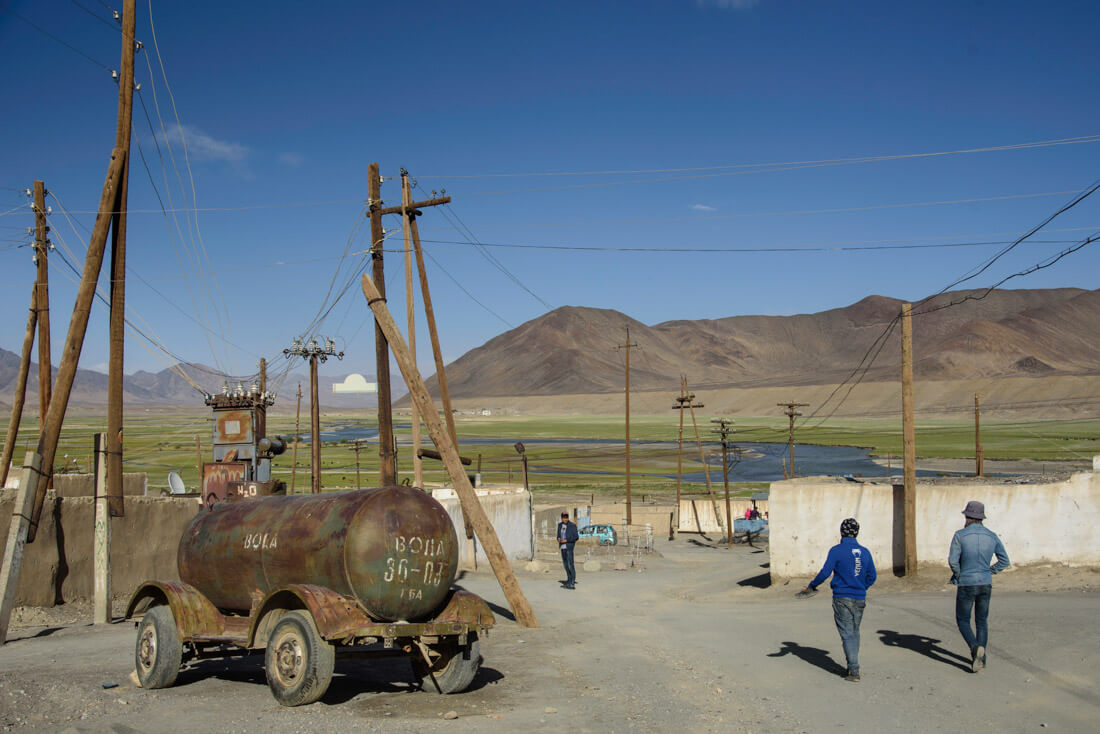
That crisis can still be seen today, as this is clearly the least developed of all the Stans (not counting Turkmenistan), a country with high rates of unemployment, and the fact that most of their infrastructure is still from the Soviet Union times.
It is also the least Westernized country, also due to the fact they are far from Russia so, unlike Kyrgyzstan and Kazakhstan , their cultural influence is not that visible, hence they have less international exposure.
Actually, after having some conversations with quite a few highly educated Tajiks in Dushanbe, I felt that they don’t really know anything about what is going on in the outside world.

They were people with very few Western values and no apparent ambition who asked me many times why I would ever want to travel to Tajikistan.
Moreover, Tajikistan is one of those fake democracies where elections are celebrated but there is only one political party, so the same President has been ruling since 1994.
There is no freedom of speech and I remember when my Australian friend, Sam, was talking to a local man for about half an hour at the main square in Dushanbe, a man in a suit came to ask what was going on and invited him to leave.
This means that, still today, the Government doesn’t like their citizens to get international exposure.
The Tajiks – Tajiks are a Persian ethnic group who live mainly in Tajikistan and Afghanistan , but also in Xinjiang (China) and Uzbekistan .
Actually, nearly half of the total Tajik population live in Afghanistan.
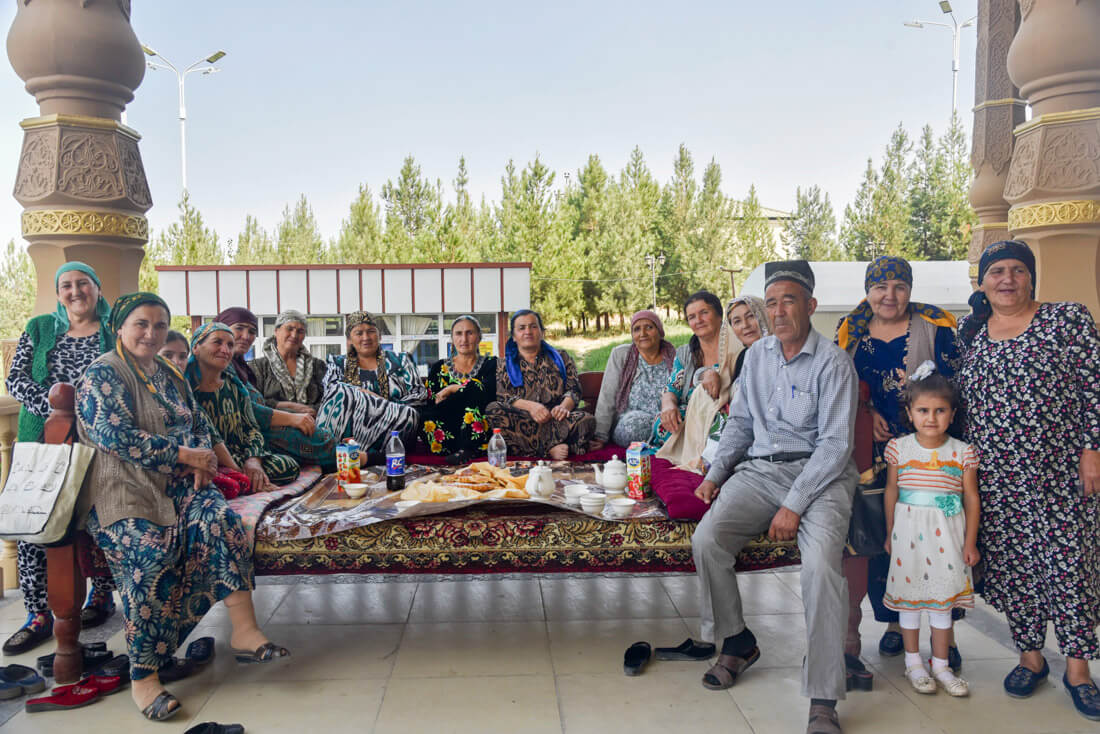
Nevertheless, you should know that, like all the Stans, Tajikistan is ethnically mixed and, actually, most of the people living in the Pamirs are Kyrgyz, whereas those in the Wakhan Valley are Wakhis, so if you want to meet the real Tajiks when you are traveling to Tajikistan, you will have to explore Dushanbe and the western part of the country.
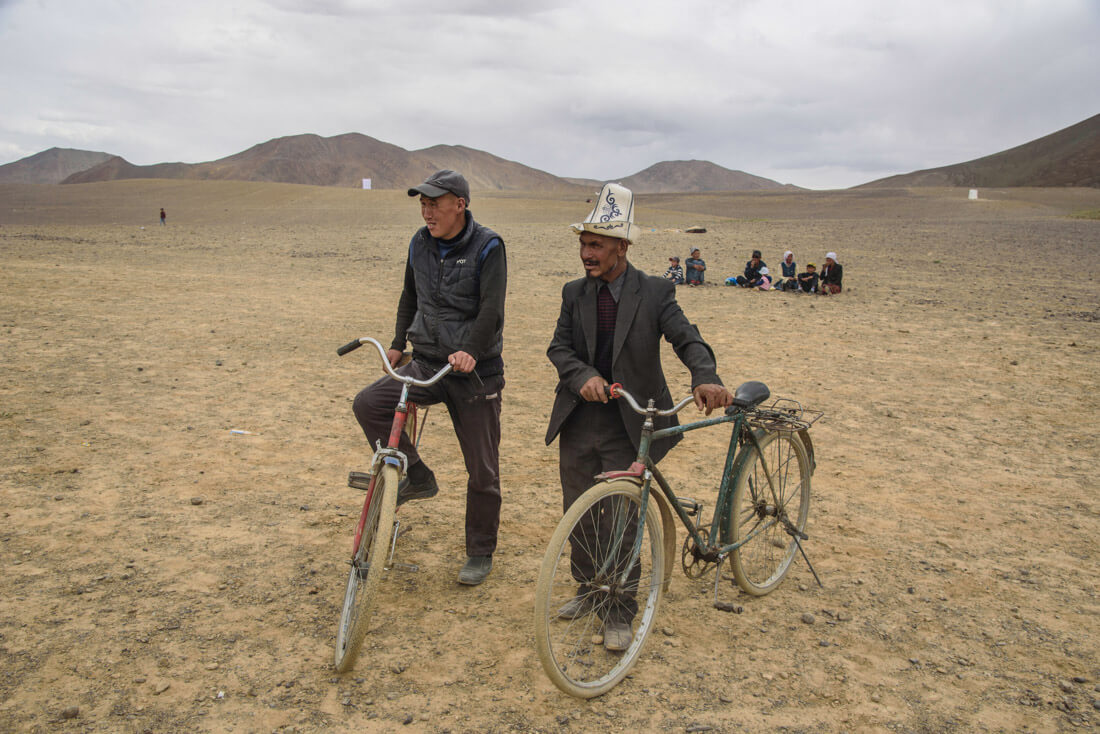
Language – Tajik, which is a dialect of Persian (the language spoken in Iran and Afghanistan) is the official language. Russian is, of course, widely spoken among most people. English tends to be a problem across all the country. I recommend you learn some basic Russian before you visit Tajikistan.
Religion – Tajiks are Suni Muslims but, like in all Central Asia, religion is not a very big deal. However, I felt that Tajiks were the most religious people in all Central Asia, especially those from the Fann Mountains. I remember that the men there never said hello or shook hands with my girlfriend.
Read: 65 Tips for traveling to Uzbekistan
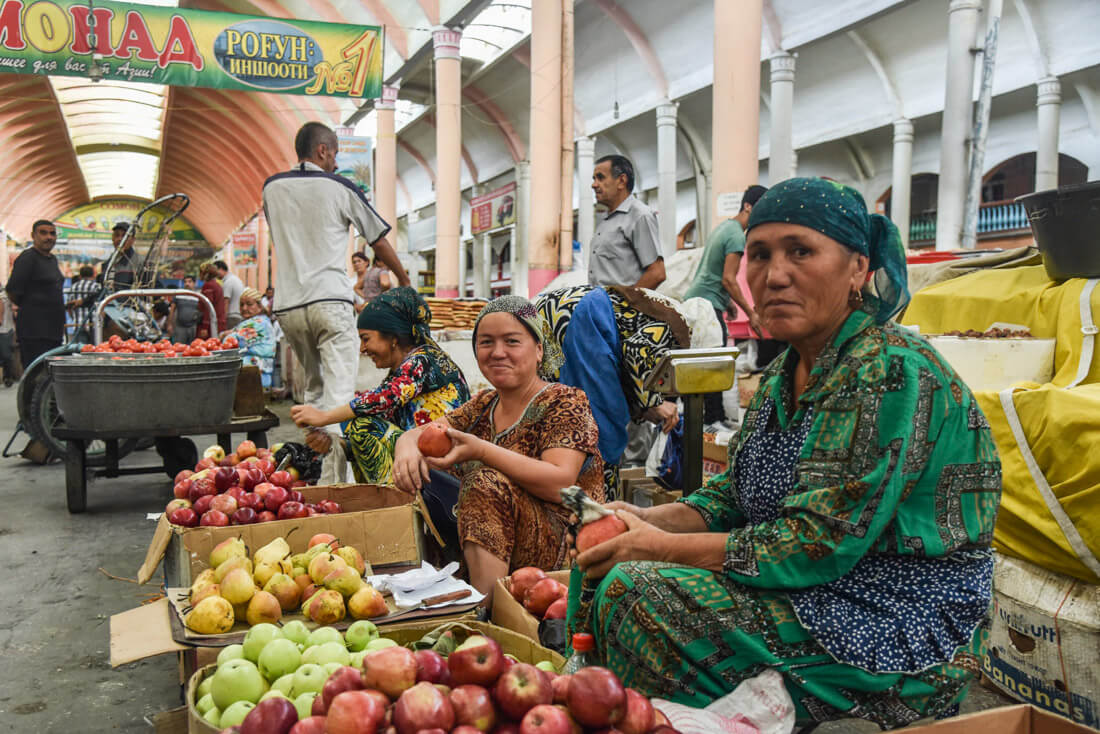
🛫 How to travel to Tajikistan
Travel to tajikistan by air.
Traveling to Tajikistan by air is very easy, as there are many international flights connecting Dushanbe with Europe.
If you intend to travel the Pamir Highway, many people fly into Osh, the largest city in southern Kyrgyzstan and the beginning of the M-41 on the Kyrgyz side.
Travel to Tajikistan by land
Moreover, if you want to travel to Tajikistan by land, know that it shares a border with 4 countries and most of them have multiple border crossings.
Kyrgyzstan – There are 6 border crossings and 4 of them are open to foreigners. The most obvious is the Kyzyl Art border crossing , which is the one that follows the Pamir Highway. For more information, read the latest Caravanistan updates .

Uzbekistan – There are 5 border crossings with Uzbekistan and all of them seem to be open. I personally crossed the one at Konibodom , that links Khujand with the Fergana Valley , but if you don’t plan to visit that region, it is not very convenient. The Oybek border crossing is the one that connects Khujand with Tashkent and Penjakent is the one that connects the Fann Mountains with Samarkand. For more information, check the latest updates on Caravanistan .
Afghanistan – You can cross at Ishkashim, the gate to the Wakhan Corridor and a very safe part of Afghanistan; or the border crossing south of Dushanbe, which is also open but leads to Kunduz, a not very safe part of Afghanistan. Both borders are open but, if you plan to travel back to Tajikistan, remember to have a double entry visa.
China – Apparently, Kulma Pass is open now, as long as you have a valid printed visa on your passport. For more information, check the latest updates on Caravanistan .
Kulma Pass leads directly to the Karakoram Highway that connects Kashgar with Islamabad in Pakistan. Read here the full guide .
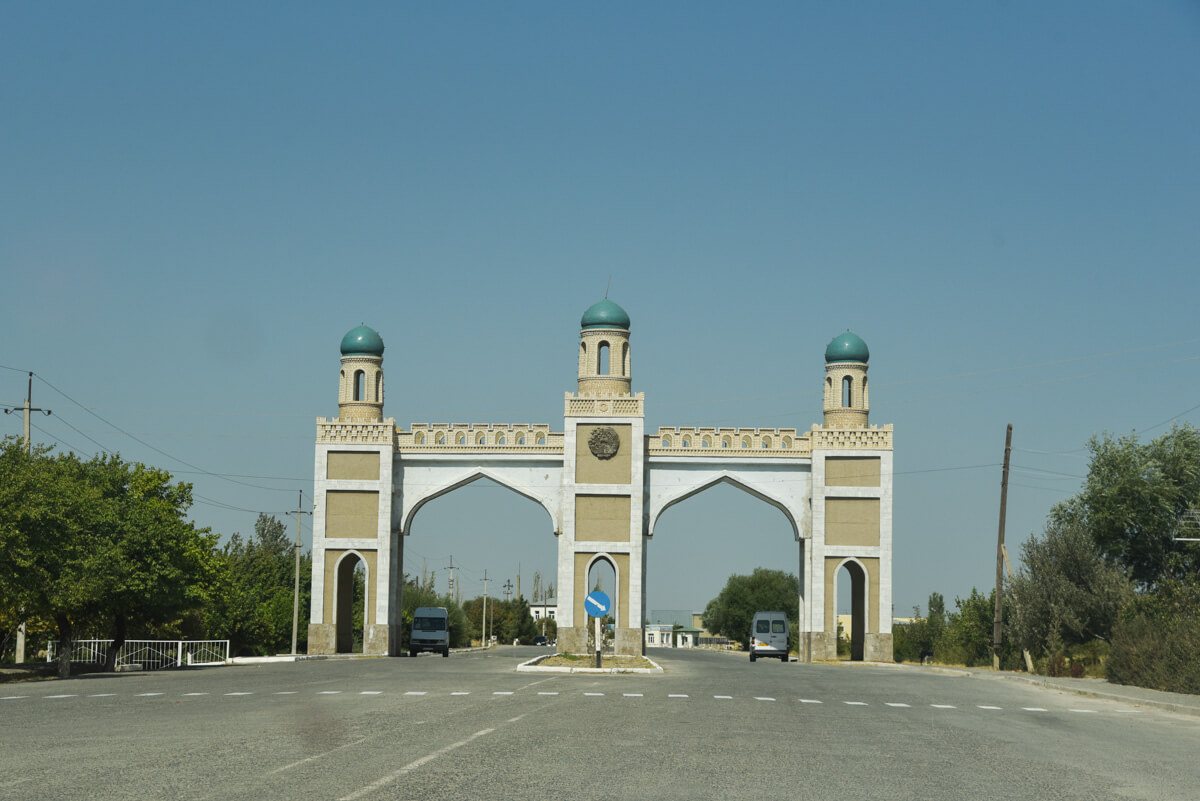
⚠️ Is it safe to travel to Tajikistan?
In summer 2018, 4 cyclists traveling across Tajikistan were murdered in Danghara , an area relatively close to Dushanbe. ISIS claimed the attack.
That accident triggered a big concern among many travelers and the Tajiks are concerned that it might affect their tourism negatively.
This unfortunate event, however, has been a one-off thing and I personally think that it shouldn’t affect your decision to travel to Tajikistan. A similar case happened in Morocco in December 2018 when 2 Scandinavian girls were killed and, so far, it doesn’t seem that tourism has been affected.
Aside from that, Tajikistan is a safe country with very low crime rates.
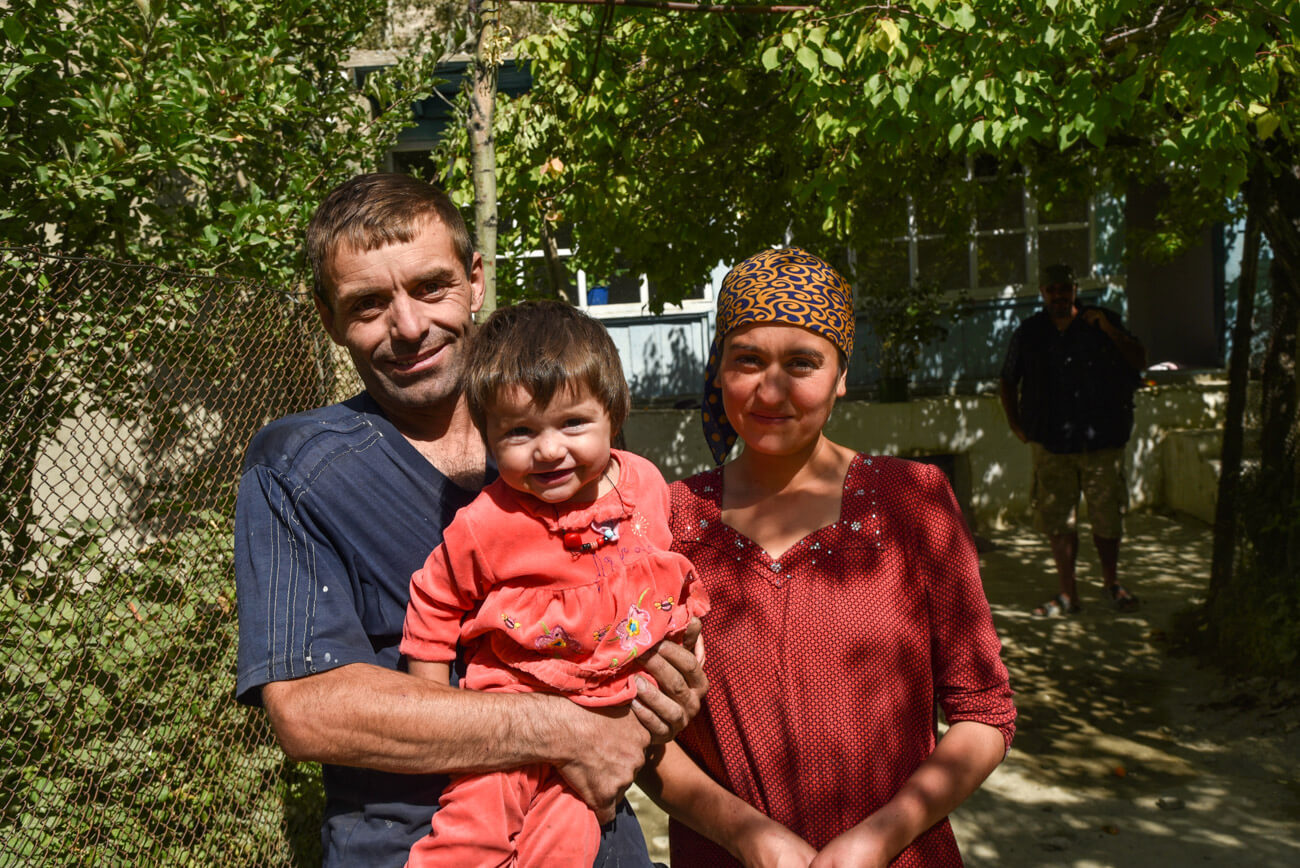
Scams and corruption when visiting Tajikistan
I still remember being in the car with a homestay owner, on our way to Khujand, when he gave some money to a policeman after stopping at one checkpoint.
Why did you give him money? – I said
Oh, this is just the standard bribing procedure. If we don’t pay him, then he would try to find a reason to fine or arrest us.
The corruption in Tajikistan is a well-known fact and some of these police officers also try to rip off foreigners but luckily, as tourists, there is not much they can do to you unless you are credulous and believe their lies.
Common scams include policemen telling you that there is a problem with your Tajik visa or making you pay an entrance fee to a place that, obviously, doesn’t require an entrance fee.
Dude, just think:
How the hell there is going to be something wrong with your visa? And also, where have you been where you need to purchase an entry ticket from a policeman?
Just say no and continue with your business.
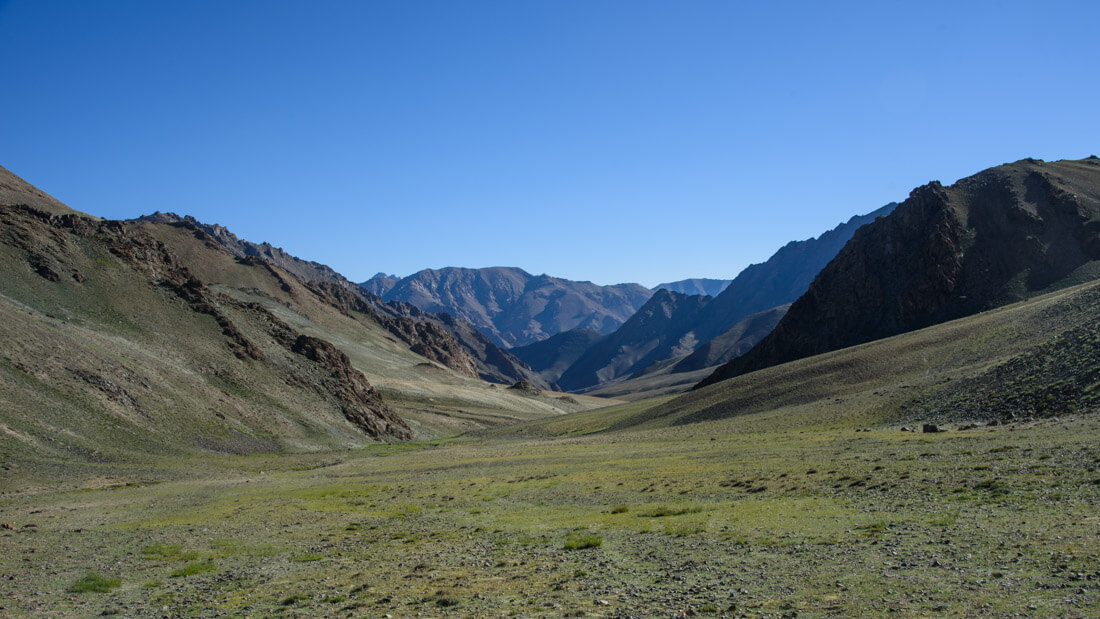
💻 Internet and connectivity in Tajikistan
Wi-Fi – From Murghab to Khujand and Dushanbe, the Wi-Fi connection when you are traveling in Tajikistan is one of the worst I have ever seen. In Dushanbe, the Wi-Fi in my hostel was particularly bad and then every day I would go work to a fancy café and the internet was down every now and then. In the Pamir Highway and the Wakhan Valley, Wi-Fi doesn’t exist.
SIM Card – 3G was just OK anywhere outside of the Pamir Highway. I bought MegaFon and, for a few Somonis, I got plenty of GBs.
eSIM for browsing, calling and traveling in Tajikistan
Basically, an eSIM is a regular SIM card with a digital format that works like a normal physical SIM card, with the added benefit that you can buy it from home before the beginning of your trip, hence avoiding the hassle of buying it at your destination.
With Holafly , you can get a SIM Card for a wide range of destinations, including Tajikistan .
Moreover, you can benefit from a 5% discount with the following code: AGAINSTTHECOMPASS
Get a VPN for traveling in Tajikistan
You should always use a VPN when you travel, especially when you connect to public Wi-Fi networks.
Your connection will be much safer.
Moreover, you will be able to access content which is typically censored in Tajikistan.
I recommend ExpressVPN – Extremely easy to use, fast and cheap.
If you want to learn more about VPN, check: Why you need a VPN for traveling .
💰 Money when you travel in Tajikistan
The official currency is the Tajik Somoni and approximately:
1 USD = 10.84 TJS
ATMs and credit cards – You can find ATM’s in the big cities (not in the Pamir Highway).
How much does it cost to travel to Tajikistan
It really depends on where you go and, ultimately, how you travel the Pamir Highway.
Typically, meals cost something between 1 and 3USD and budget homestays around 10-15USD, which tends to include dinner and breakfast.
In Dushanbe, you can find dorms for 3-4USD and the local transportation ranges from 2 to 10USD, depending on where you go.
For all costs referred to the Pamir Highway , read my guide .
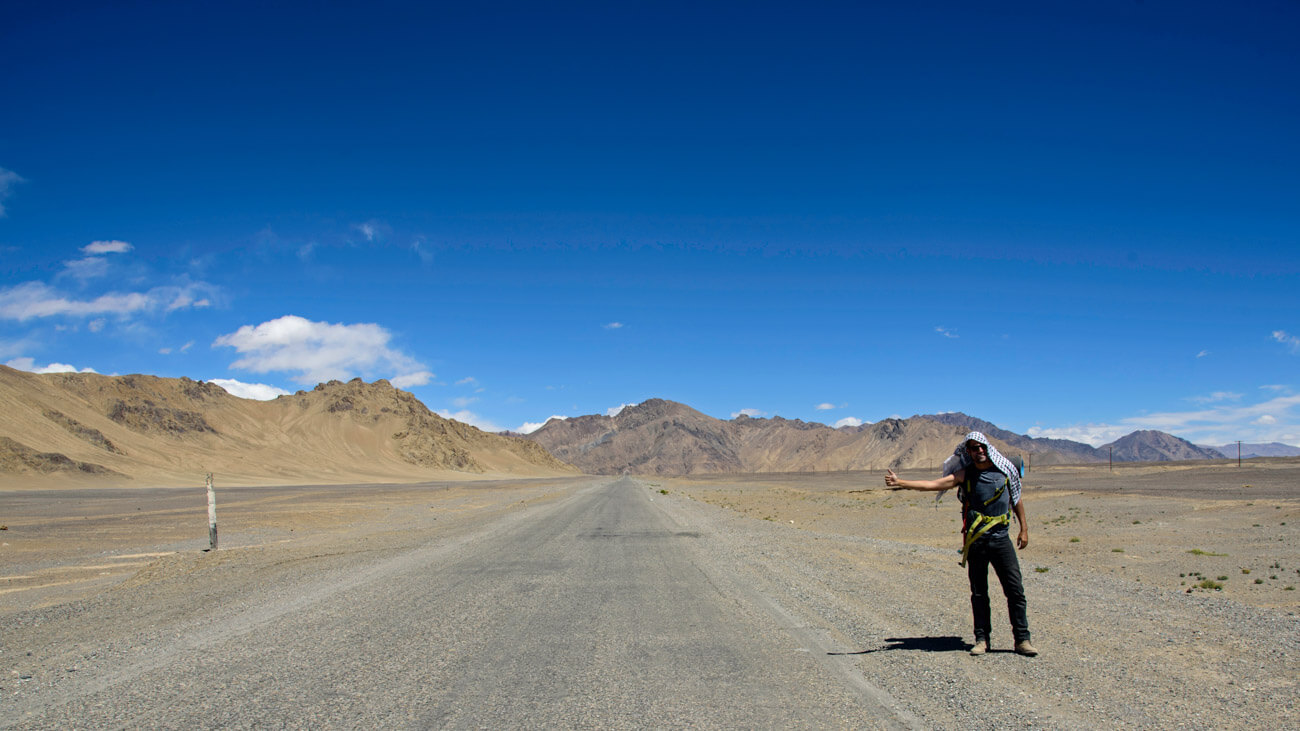
🍲 Food and alcohol when visiting Tajikistan.
Like in all Central Asia, the food won’t be the highlight of your visit in Tajikistan.
In the Pamirs and different homestays, you are likely to eat shorpo for every meal, which is a meat broth.
In local restaurants, you will just find things like shahslik , meat skewers; lagman , a noodle soup; manti , fatty meat dumplings; or plov , rice fried in lamb fat.
As per alcohol, as in all ex-Soviet countries, beer and especially vodka are found everywhere.
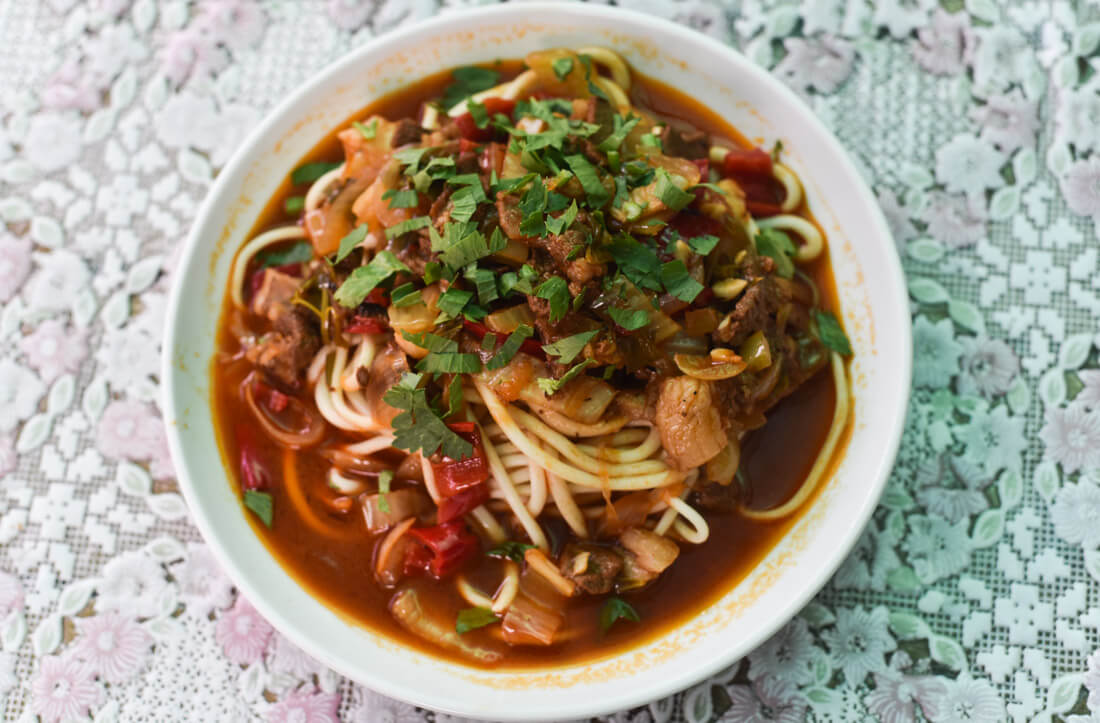
🛺 Transportation when you travel around Tajikistan
The below information refers to types of transportation in western Tajikistan, not the Pamir Highway. For this, read my guide to the Pamir Highway .
Marshrutkas – Marshrutkas is what former Soviet countries call their public minivans. They are really cheap and travel between most towns and cities.
Local shared taxis – Actually, we used more local shared taxis than marshrutkas and, as far as I could see, they are the most preferred option among locals.
Hitchhiking – Highly doable and easy! We actually had one of our most crazy hitchhiking experiences, when we spent more than 48 hours in a truck, on our way from Khorog to Dushanbe.
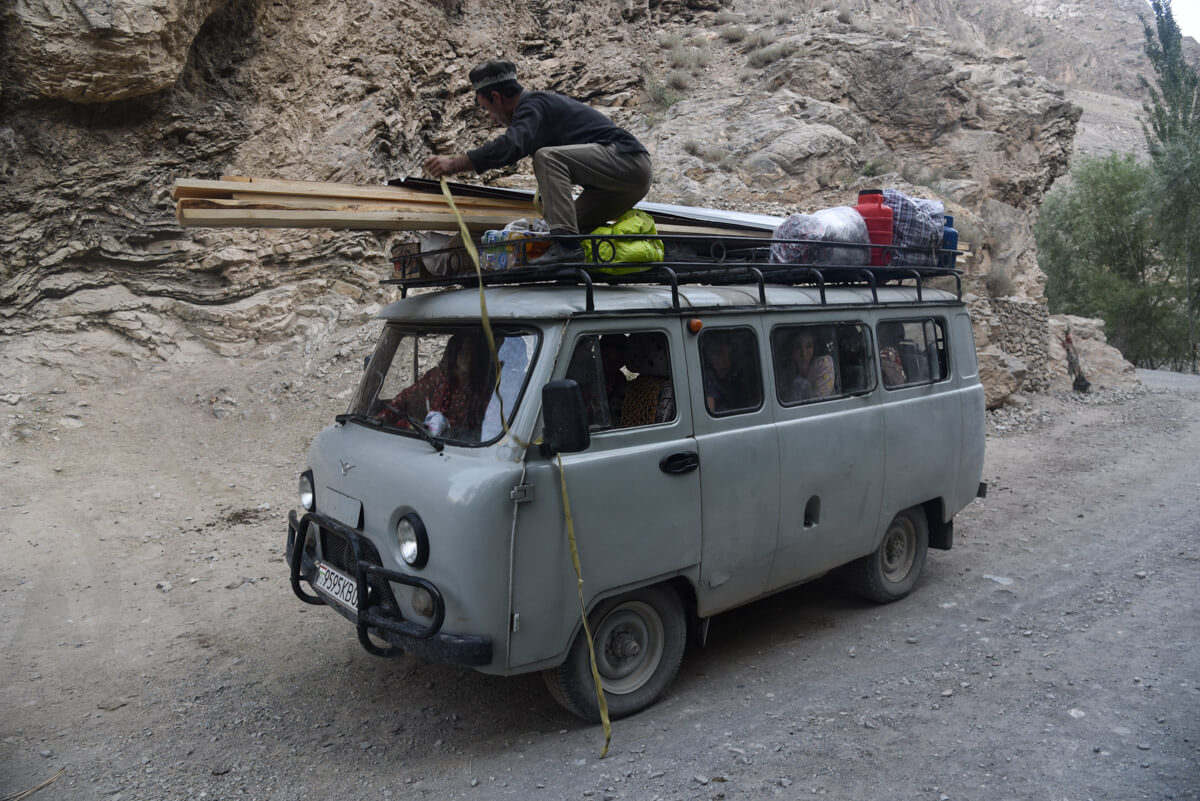
📚 Books for traveling to Tajikistan
For more book options, check: the best 28 books on the Silk Road
Tajikistan Travel Guide by Bradt – The most comprehensive travel guide to Tajikistan. I bought all the Bradt guides to Central Asia (e-Book format). They are, by far, the most insightful guides I have ever read recently.

Central Asia Travel Guide by Lonely Planet – I am not a fan of this guide, but if you are traveling to all the Stans and want to buy just one book, it is a good choice as well.
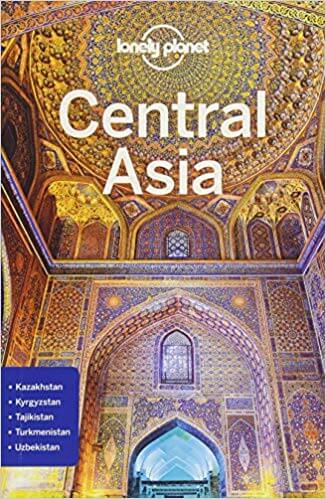
🏨 Accommodation in Tajikistan
Homestays – On the Pamir Highway, homestays are the way to go. I recommend you stay in random homestays, not in the popular ones. This way, the benefits will be spread more equally plus random homestays are cheaper.
Hostels – Hostels are popular, from Khorog to Dushanbe and Khujand.
Hotels – In Khorog, Dushanbe, and Khujand you can find hotel options for mid-range travelers.
Yurts – In the Pamirs, you can also find nomadic yurt camps where Kyrgyz nomads live.

Traveling to Tajikistan – 3-week Itinerary
I traveled to Tajikistan from Kyrgyzstan via Kyzyl Art Pass and left through Uzbekistan at Konibodom, so this Tajikistan itinerary reflects the direction I took.
Map of the Tajikistan itinerary
Things to do in Tajikistan – Pamir Highway (8-9 days)
Built by the Soviets in 1930, the Pamir Highway is an architectural masterpiece that goes through some of the remotest landscapes you can ever imagine.
Officially, it starts in Osh (Kyrgyzstan) and ends in Afghanistan but the highest and most beautiful part of it lies in Tajikistan.
The following information is just a small summary. For the full guide, read my 6,000-word guide to the Pamir Highway .
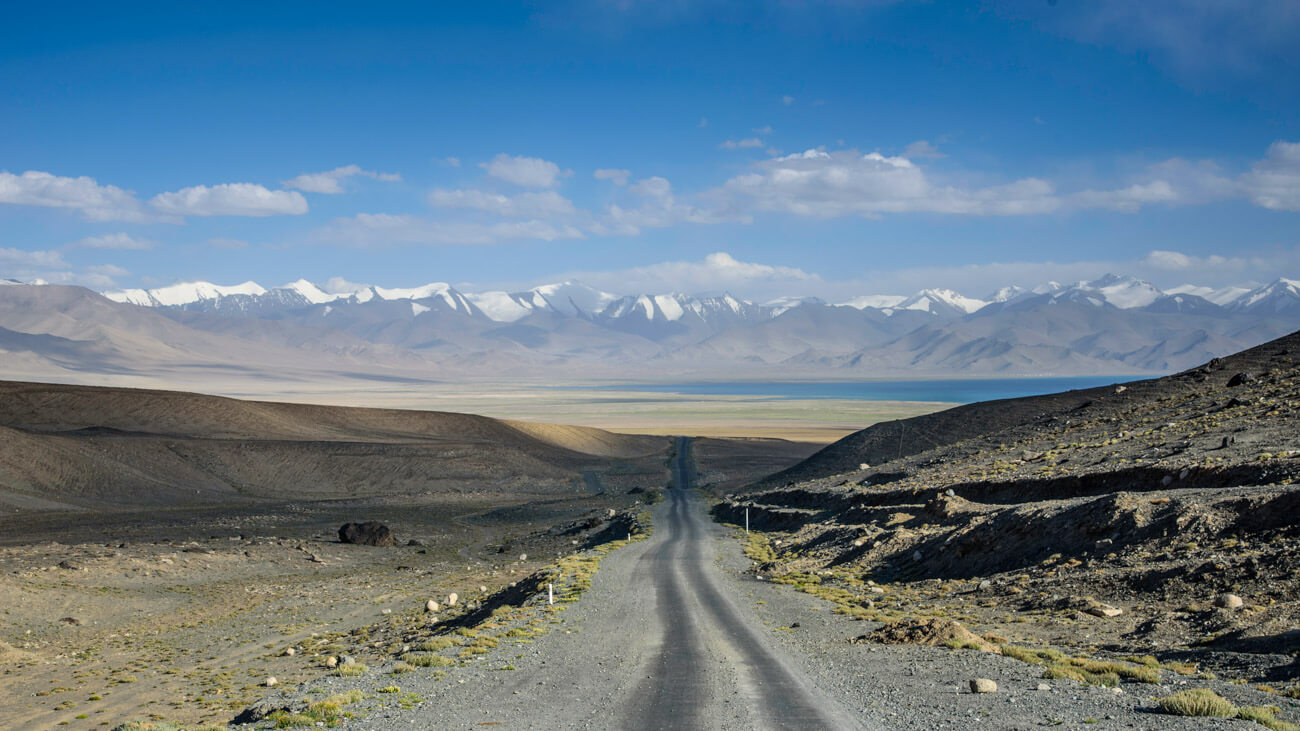
How many days are needed for the Pamir Highway?
Well, it is really hard to say. We spent more than 2 weeks between the Pamir Highway and the Wakhan Valley but that is because we stopped in many places plus we also did a 3-day trek.
Normally, most people take a 5 or 7-day tour (starting from Osh), which also includes the Wakhan Valley, but, to be very honest, it is not enough to explore the side valleys, which is where the most stunning landscapes are.
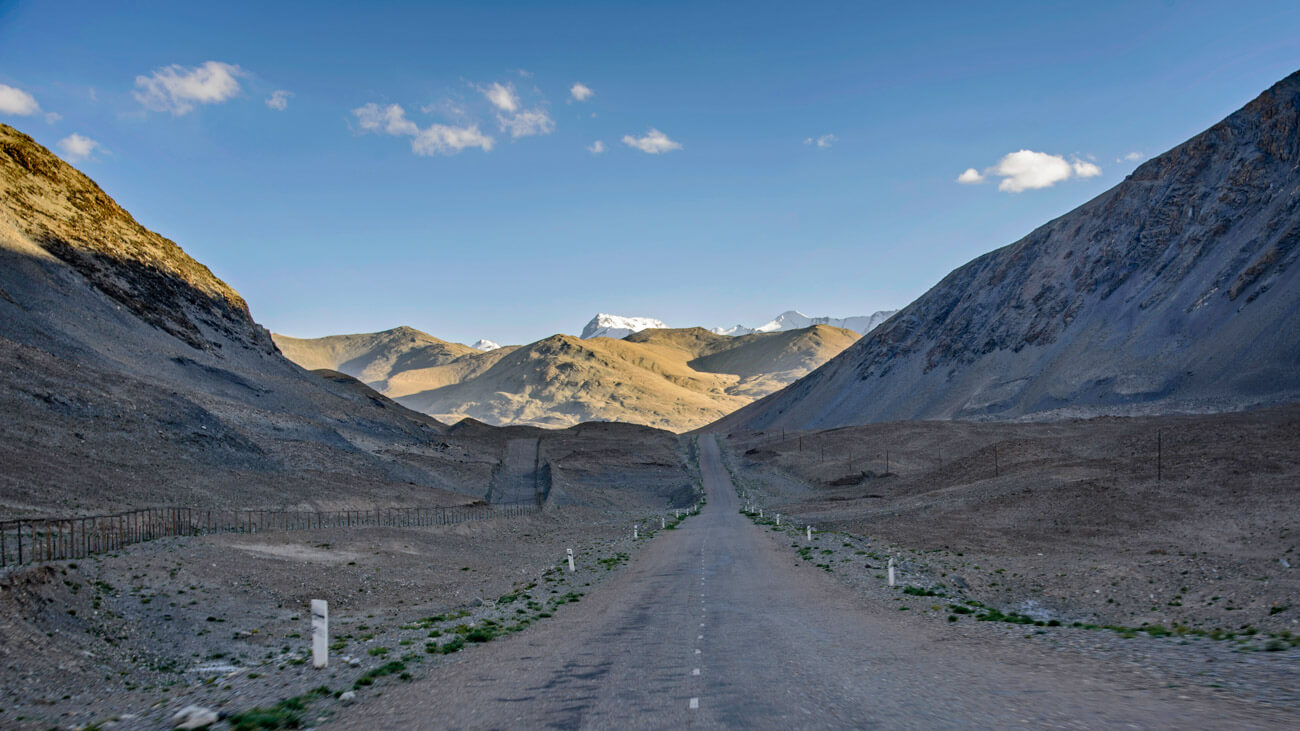
If you don’t have the time, I get it but, if you do, here are all the places you need to stop at:
Karakul (1 night) – The first big settlement coming from Kyrgyzstan, Karakul has a very big lake and with some pretty cool snow-capped mountains at the background.
Murghab (2-3 nights) – Murghab is the main town on the M-41 and a base for visiting other places and valleys. We first stayed 2 nights because we waited for a festival and then we stayed a 3rd night after coming back from the trek.
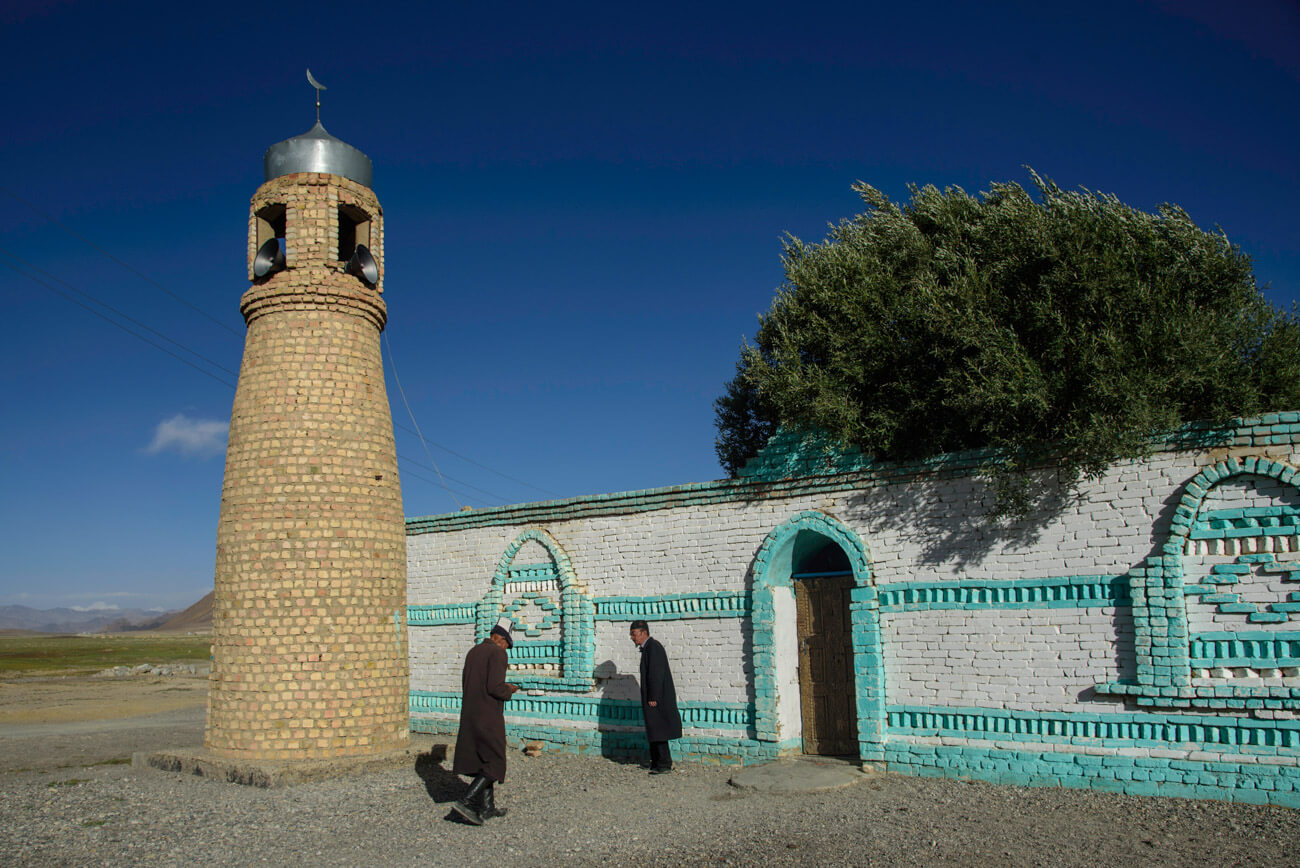
Gumbezkul Pass trek (2-3 nights) – If you have your own car, you can do this trek in 1 day but we did it in 3, cause we walked all the way from Murghab and spent one amazing night with some real nomads in the middle of nowhere.
Alichur (1 night) – Very cool landscapes, yaks, trekking and Marco Polo sheep safaris.

Bulunkul (Stopover) – The coldest place in Central Asia is home to a beautiful lake. The trek from Alichur to here is a popular one. You can find a few homestays.
For most travelers, the Pamir Highway is, definitely, one of the best things to do in Tajikistan.

Places to visit in Tajikistan – Wakhan Valley (3-4 days)
Many travelers tend to classify the Wakhan Valley as part of the Pamir Highway (M-41), which is completely wrong because they are 2 different places.
Actually, to reach the Wakhan Valley you need to leave the road and drive towards Afghanistan for several kilometers.

Anyways. The Wakhan Valley is one of my most favorite places in entire Central Asia and my most favorite place in my Tajikistan itinerary.
And the reason is that, besides being home to intriguing and jaw-dropping landscapes, the Wakhan is of great historical importance as the ancient border between North Asia and South Asia and on the remarkable Silk Road route, which can be seen in the many fortresses and other sites of cultural heritage there.
Moreover, in the 20th century, the Wakhan Valley marked the border between the Soviet Union and Afghanistan and the Soviet tanks came through here to invade Afghanistan in the 70s.
Today, the river you will go along during your whole journey, whose other side is in Afghanistan, is the main entry point for smuggling products, especially heroin, and, from the window of your car, you can wave and say hello at the many Afghans across the river, from whom you are separated by only a couple of meters.
Once again, this is a small summary, so for more information, don’t forget to check my guide to the Wakhan Valley in Tajikistan.

These are all the places we stopped at:
Langar (1 night) – The first big settlement you find is Langar.
We personally didn’t like Langar, as it is the only place in the Wakhan where the locals are very pushy in trying to promote their homestays, plus it is actually far from the river.
I recommend you continue for a few kilometers to Hisor, a more genuine village and with nicer views to actual Afghanistan.
Vrang (stop) – Vrang is another old village that has an ancient Buddhist temple. It is worth stopping for a few hours.
Yamchun (1 night) – The most striking fortress in the Wakhan, which stands with the Afghan Hindu Kush on its background.
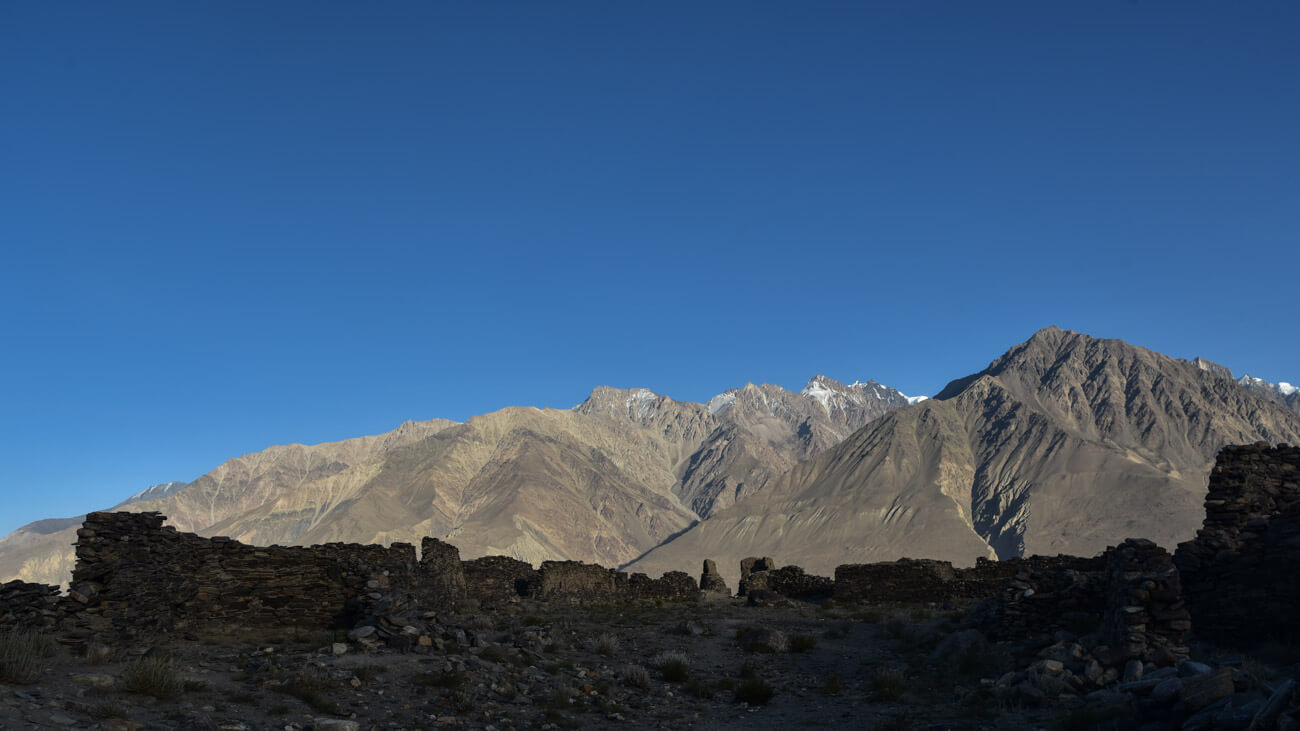
It also has some famous hot springs called Baby Fatima that are believed to have some fertility benefits.
Namadgut (1 night) – There is nothing in particular to see here but travelers don’t tend to stop here, so it is quite untouched. That is why here we had the best cultural experience with a local woman who blessed us with her hospitality.
Kaakha Fortress – The second most famous fortress after Yamchun has also great views to Afghanistan.
Ishkashim (1 night) – The main town in the Wakhan Valley. It used to hold the Afghan market in no man’s land but it is temporarily closed. It is also the border to Afghanistan for those interested in doing the Afghan Wakhan corridor.
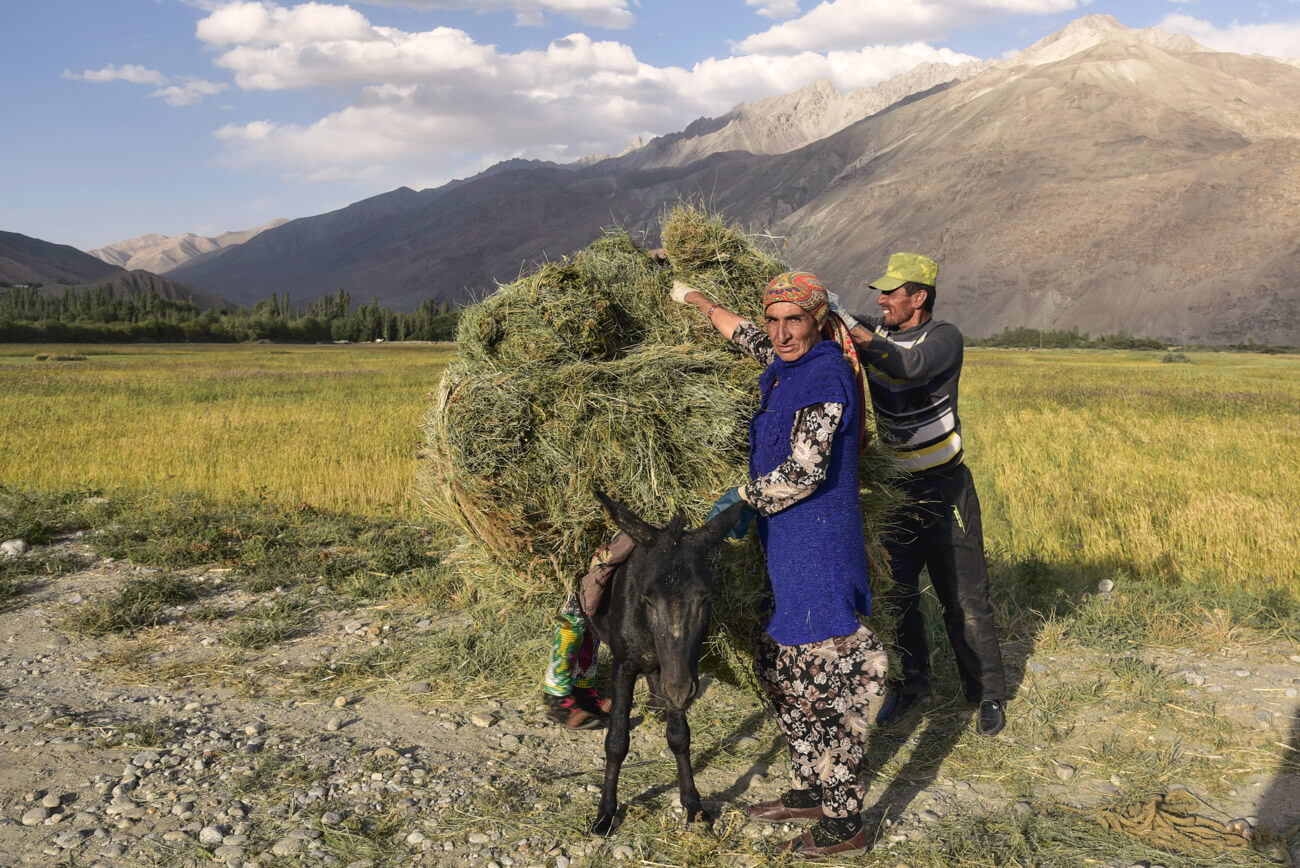
Tajikistan itinerary – Khorog (2 days)
After nearly two weeks of showering with buckets, using holes and bushes as toilets, exclusively eating shorpo and with no internet at all, getting to Khorog felt particularly good.
It is not a very big town but it has a good local market where you can buy many food items that were not available in the Pamir Highway, like cheese, and supermarkets with cold beer.
There is also an Indian restaurant that tends to be filled with travelers and a really good Tajik restaurant by the river, serving high quality grilled meat and other stuff.
Other than this, Khorog is a place to just chill, where we spent 4 days just catching up with work and filling our bellies with decent food.
By the way, the famous Afghan market takes place on Saturday.

Where to stay in Khorog
Backpacker Hostel – Pamir Lodge – All right, it is a cool place and there is a friendly atmosphere. However, the hostel has the capacity for nearly 100 people and it only has two toilets and two showers, so when I came in August, it was very difficult to find them empty, apart from being quite dirty of course.
Backpacker Hostel – Hostel Do Nazarbayg – An alternative to Pamir lodge. You will find fewer backpackers but the location is much better and it is not that busy.
Guest House – Riverside – A quieter, more homestay-style place.
The journey to Dushanbe – 1 day
The road to Dushanbe is a very long way.
Shared taxis take around 12 hours and cost 30USD. They leave from near the market but you need to be there early, 7am at most.
We arrived before 8am and there weren’t any marshrutkas or taxis left, so we decided to hitchhike and it took us 3 days, spending more than 48 hours in a truck.
The distance is only 518km but the road is really bad but beautiful and interesting as, again, it goes along the Afghan border for the most part of it.
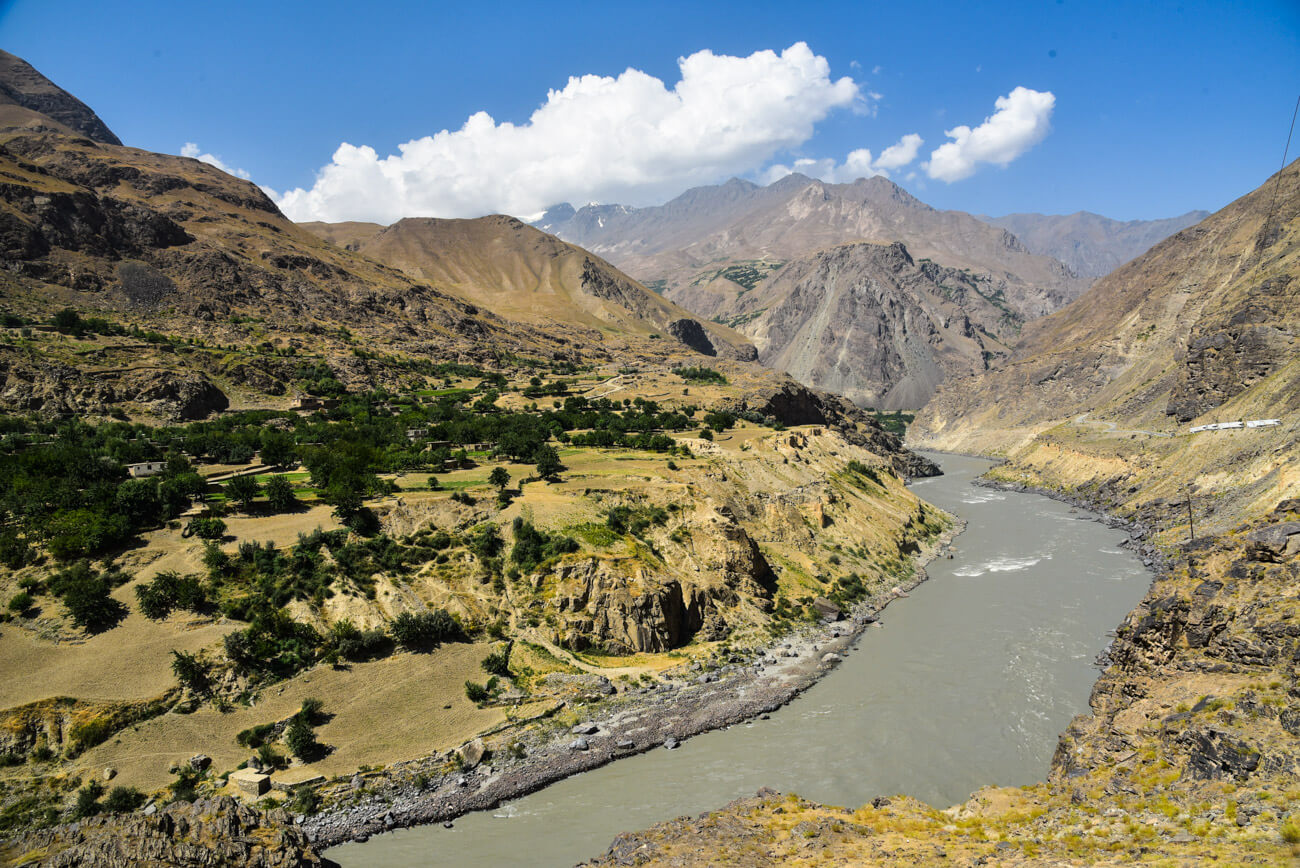
Things to do in Tajikistan – Dushanbe (2 days)
The capital of Tajikistan is another place to chill for a few days while you collect some visas, like the Uzbek or Turkmen visas.
Well, not the Uzbek visa anymore, as from February 2019, they started issuing visas on arrival. Check my Uzbekistan travel guide for more information.
Dushanbe has cafés with real coffee, a variety of restaurants and a few pubs where to hang out at night.
What I liked about Dushanbe is that it was my first introduction to the real Tajikistan, as most people you meet in the eastern part are Kyrgyz, Wakhis or Pamir, so you will see a significant difference with the people living here, especially in the way women dress.
Don’t forget to check the main bazaar and the Rudaki Park, which holds the second tallest flagpole in the world
Where to stay in Dushanbe
Backpacker Hostel – Green House Hostel – We spent so many days here because the hostel was really comfortable. Comfy beds, a big kitchen and a living room with awesome couches.
Budget Guest House – Hello Dushanbe – If you want a less backpacker-friendly place, Hello Dushanbe may be slightly more expensive but the facilities are great. It has both private rooms and a dorm.
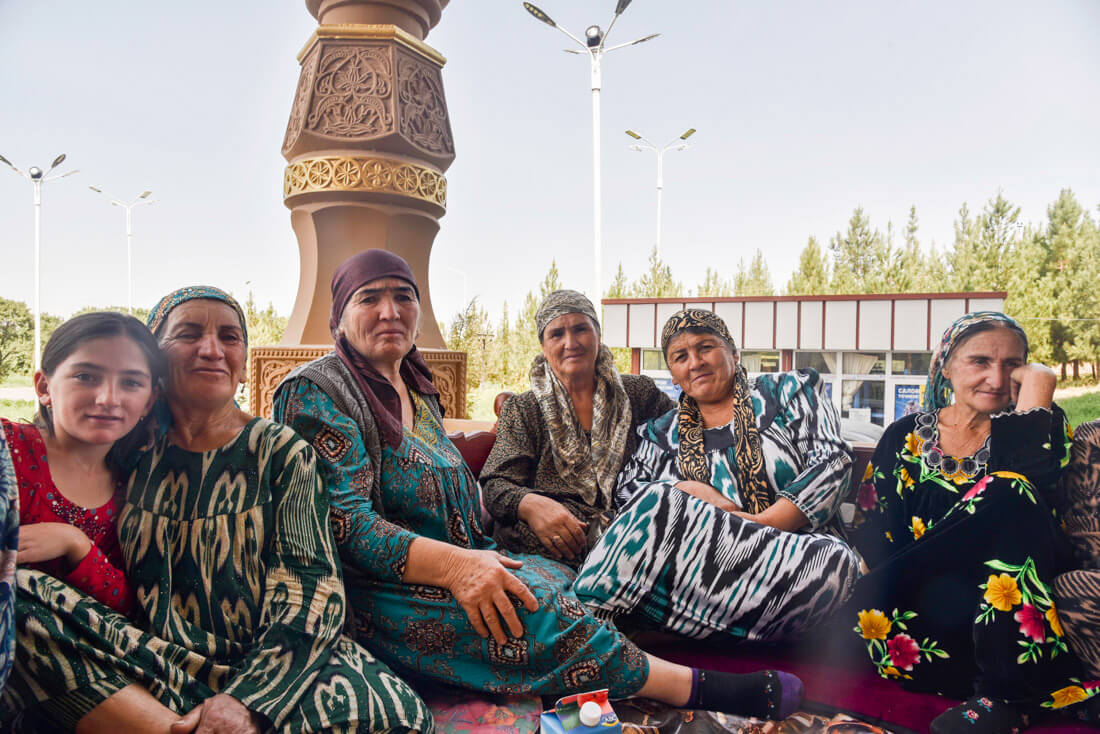
Hissor Fortress – Day trip from Dushanbe
If you are bored to be in Dushanbe, we also did a day trip to a fortress named Hissor, which was built by the Uzbeks in the 18th century, as this part of Tajikistan used to belong to the Emirate of Bukhara. The north was part of the Russian empire.
All right, the fortress itself was boring, as it was overly refurbished, but we always like to get out of town, take a local marshrutka and just see other towns, so it was worth it only for this reason.
How to get to Hissor fortress
From Dushanbe, you need to take a marshrutka to a town named Khisor. From there, take a taxi or hitchhike back to the fortress which is 4 or 5km away.
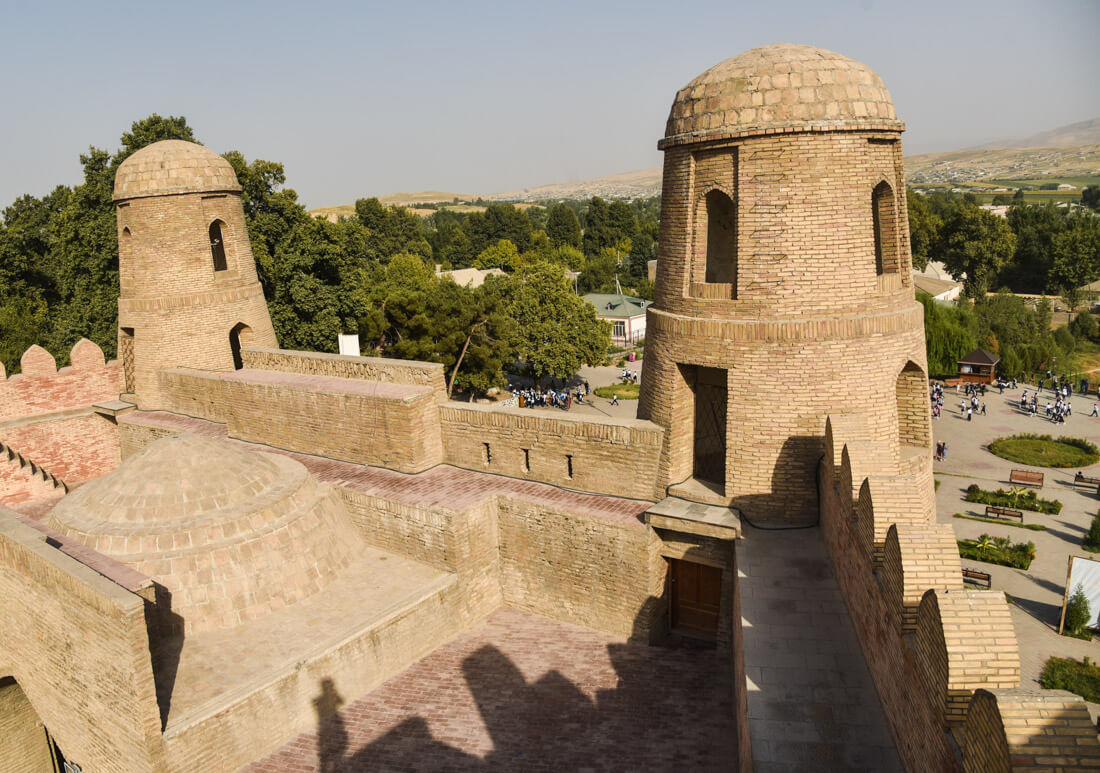
Places to visit in Tajikistan – Penjakent and the Fann Mountains (3-4 days)
Once again, this is a small summary.
For all the information needed, read my guide to the Fann Mountains .
While they are not as stunning as the valleys around the Pamir Highway, the Fann Mountains are also very pretty and their main advantage is that, unlike the Pamirs, they are heavily populated and filled with several tiny villages where actual Tajik people live.

Therefore, visiting the Fann Mountains is a great opportunity to discover the real Tajik rural life, so different from anything you have seen during your Tajikistan itinerary.
Most people come to the Fann Mountains to visit Iskanderkul lake but I recommend going to the area around Penjakent and doing the 7 Lakes Trek .
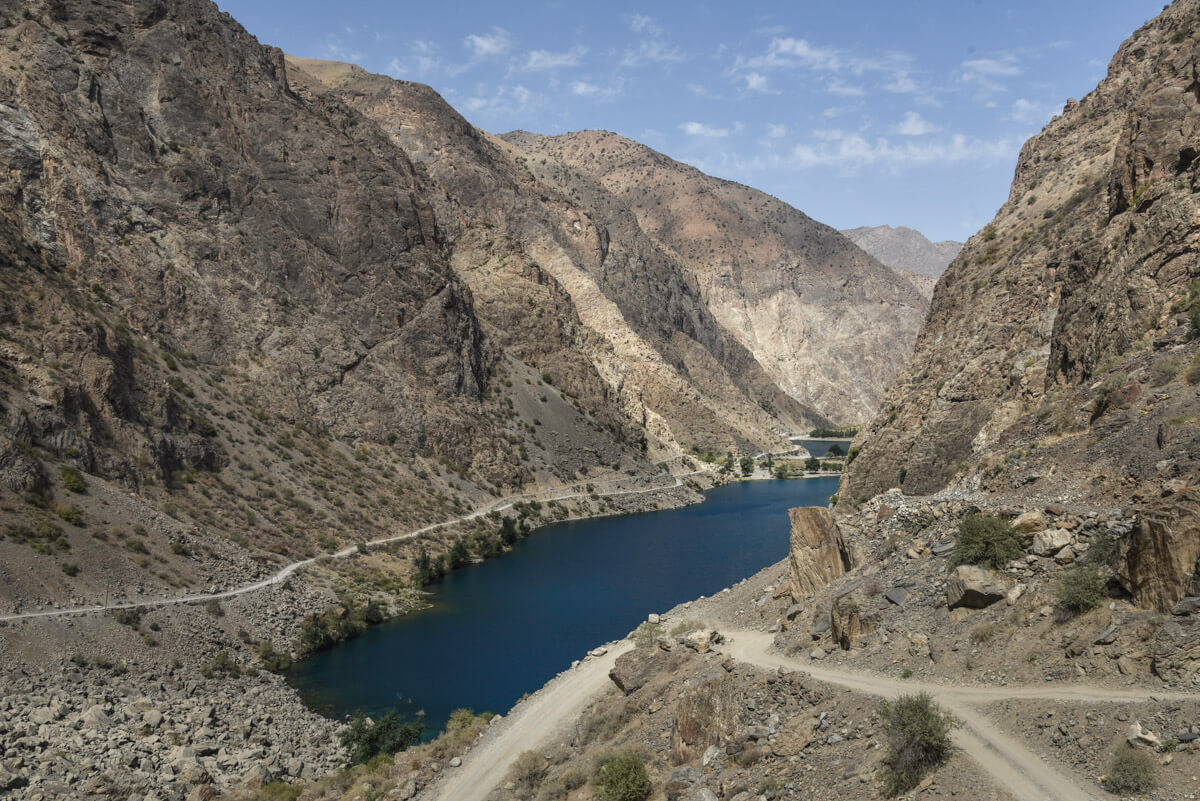
The reason is that, although Iskanderkul is a beautiful lake, no people live there plus it is always busy with domestic tourists, which isn’t a bad thing, but you won’t see much of the local culture.
On the other hand, the 7 Lakes trek starts in Penjakent and goes through several tiny villages where you can do homestays.
From Penjakent, we took a UAZ-452, the classic Soviet mini-van, and drove to a village named Rachnapollon.
That area is really off the beaten track, so the driver himself invited us to stay at his place, for free, but we decided to give him a generous tip because he had been feeding us.
How to get to Penjakent
First, take a local shared taxi from Dushanbe to Penjakent, which costs 70TJS (8USD) . It is a 230km journey.
In Penjakent, for just a few somonis, we got in the UAZ-452 to Rachnapollon, from where we started walking on the next day.
Remember to check my guide to the Fann Mountains

Places to visit in Tajikistan – Khujand (2-3 days)
Khujand is the purest Tajikistan in its most genuine form and one of the oldest cities in Central Asia (2,500 years old).
It is the second largest city in the country, a city with little international exposure that has kept its traditional values.
Most travelers use it as a mere transit point, as it is close to the closest border with Tashkent, but I recommend spending here two nights at least.
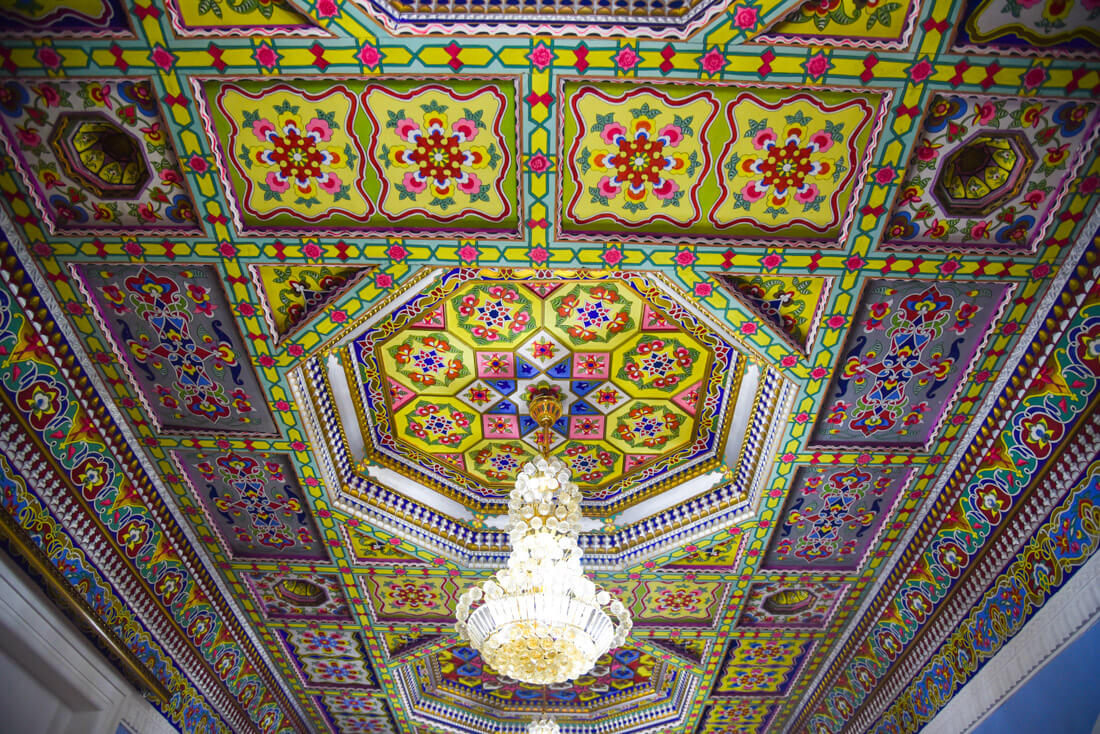
Things to do in Khujand
Don’t forget to check the traditional bazaar, one of those traditional bazaars where everybody asks for a photo and gives you free stuff; and all the mausoleums and historical buildings around the main square. The Arbob Palace is also worth checking out.
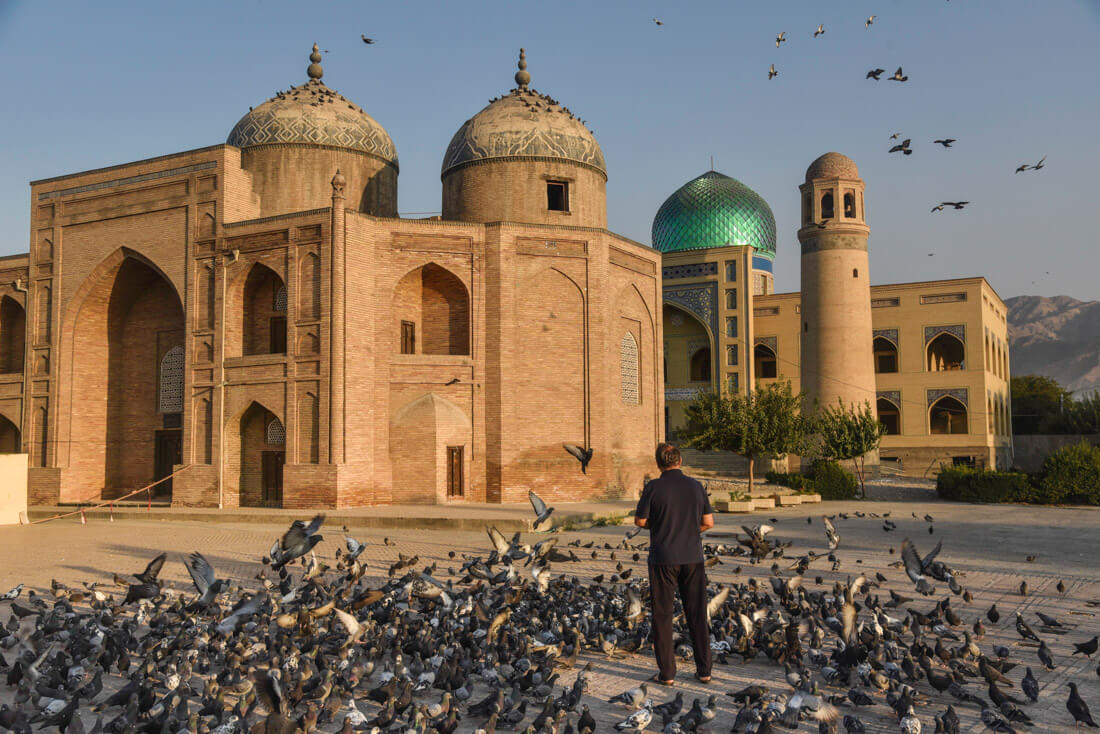
Where to stay in Khujand
Budget Hostel – Somoni Hostel – The best choice for backpackers and a really cool hostel.
Budget Hotel – Golden Apartments – The alternative to a backpacker hostel.
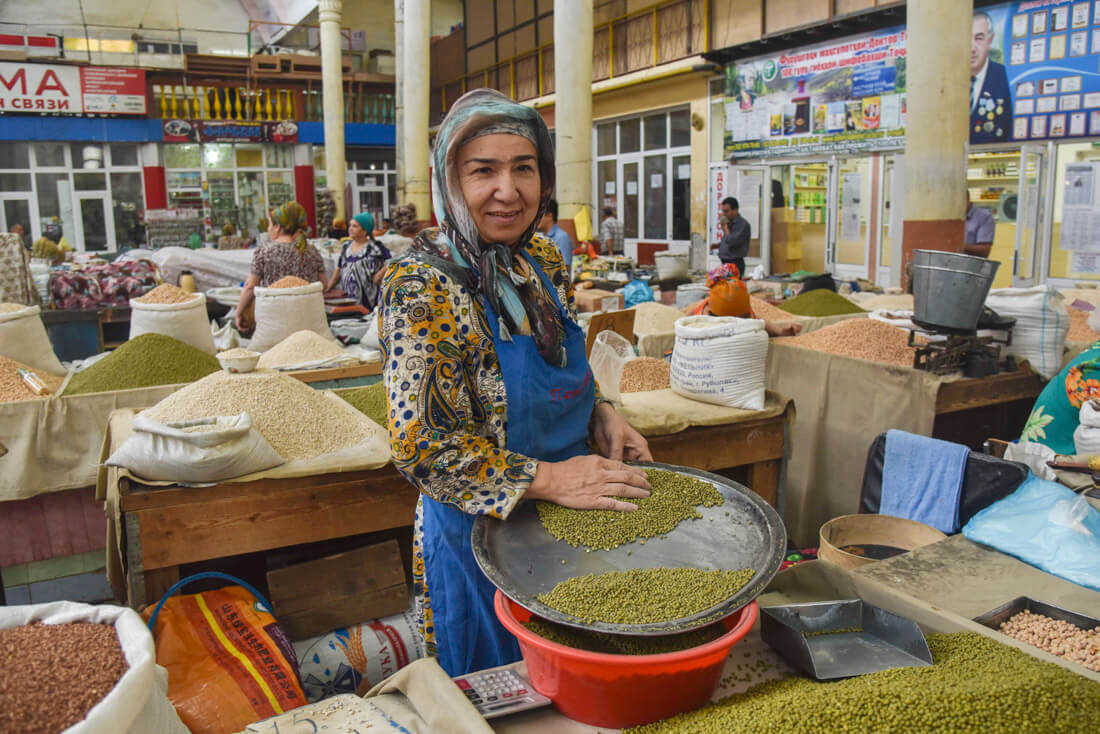
❗ More information for visiting Tajikistan
📢 In my Travel Resources Page you can find the list of all the sites and services I use to book hotels, tours, travel insurance and more.
All guides and articles for traveling in Tajikistan destination
- Travel Guide to Wakhan Valley
- Fann Mountains Travel Guide
- Travel Guide to Pamir Highway
Travel guides to other countries in Central Asia
- Kyrgyzstan Travel Guide
- Travel Guide to Uzbekistan
- Travel Guide to Kazakhstan
- Pakistan Travel Guide
- Afghanistan Travel Guide
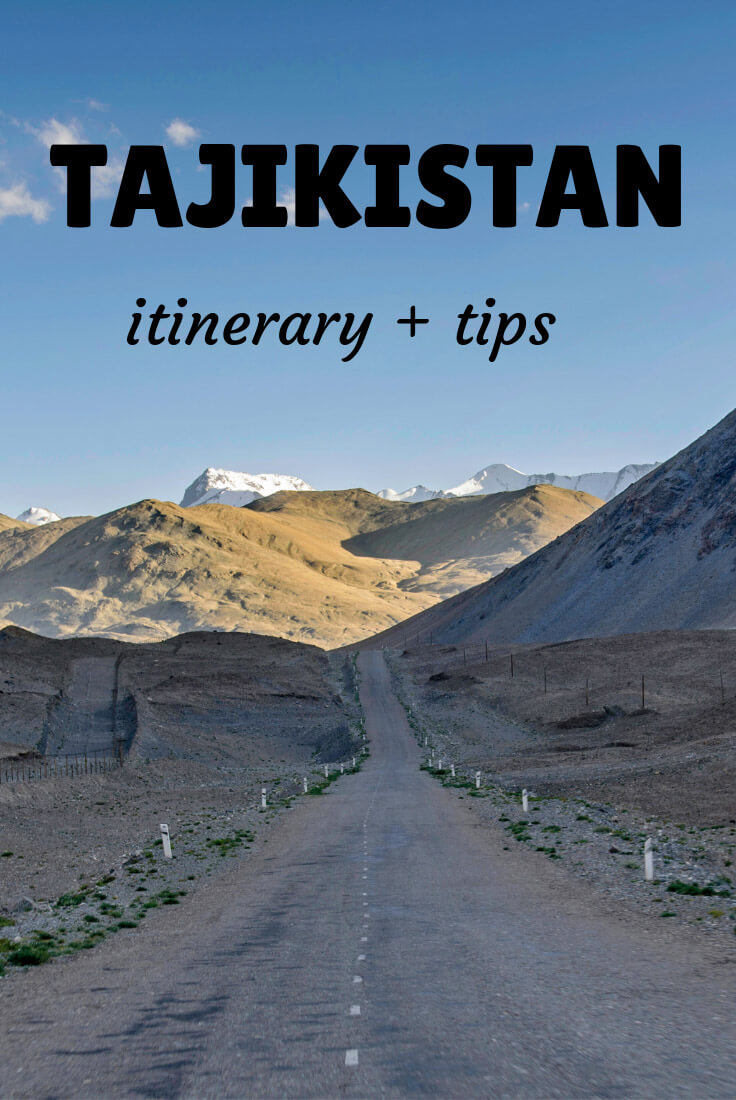
Hi, first of all thanks for sharing all this info, it is very rare to find such a helpful person.I saw your itinerary, you crossed the wakhan valley from the Tajik side, I wanted to ask you what type of permit should you ask for? I will be doing the pamir, so I will have to ask for GBAO permission. Do I still have to apply for an Afghan visa to cross the wakhan valley from the Tajik side or is the GBAO enough?
Hi there. Sorry, I am a bit confused about your question. There are two Wakhan Valleys: Tajik and Afghan. I did visit Tajik Wakhan, but I never visited Afghan Wakhan. To visit Tajik Wakhan you need GBAO permit. To visit Afghan permit you need an Afghan visa but now that it’s under Taliban rule, I don’t know how can you visit it.
Leave a Comment Cancel reply
Your email address will not be published. Required fields are marked *
Notify me when new comments are added.
Join our Expeditions
From Syria to Iraq in Pakistan, Against the Compass is finally running expeditions to the most epic and off-the-beaten-track countries.
We have scheduled expeditions for every month of the year.
Latest posts
- How to Travel to Libya in 2024
- Backpacking Venezuela Travel Guide (2024)
- How to travel to Afghanistan during Taliban rule (2024)
- How to visit Los Llanos in Venezuela
- How to visit Angel Falls and Canaima National Park
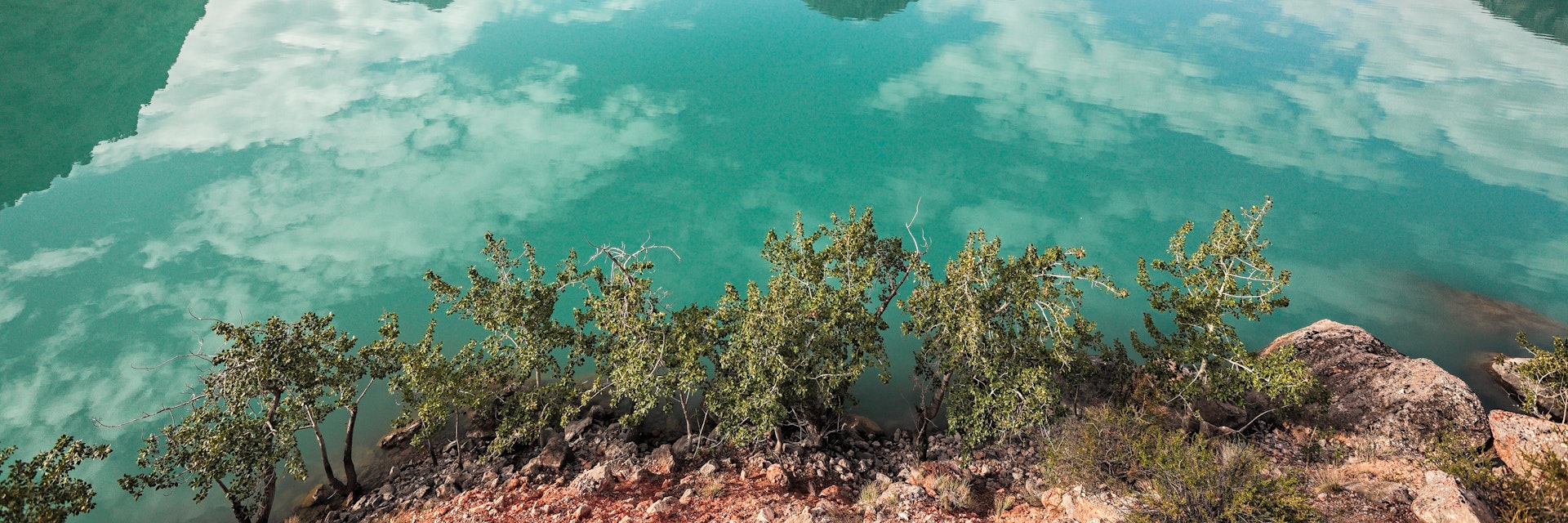
Damon Lynch
The term 'predominantly mountainous' doesn't do justice to a country where over 90% of the land is upland. This fact of nature has given Tajikistan a precious advantage over its neighbours, namely some of the most inspiring, high-altitude landscape in the world. Within an hour of Dushanbe lie multi-hued lakes, peaks that beg to be climbed and high passes that thrill even reluctant travelers. In among this natural splendor are scattered villages and towns that survive cheek-by-jowl through each extreme season. It hasn't been easy for these traditional communities to adapt to the changing world beyond their mountain strongholds, but despite this they are unfailingly welcoming of outsiders and cheerfully excuse cultural faux-pas as part and parcel of their proud democracy. Welcome to 'The Roof of the World'!
Attractions
Must-see attractions.
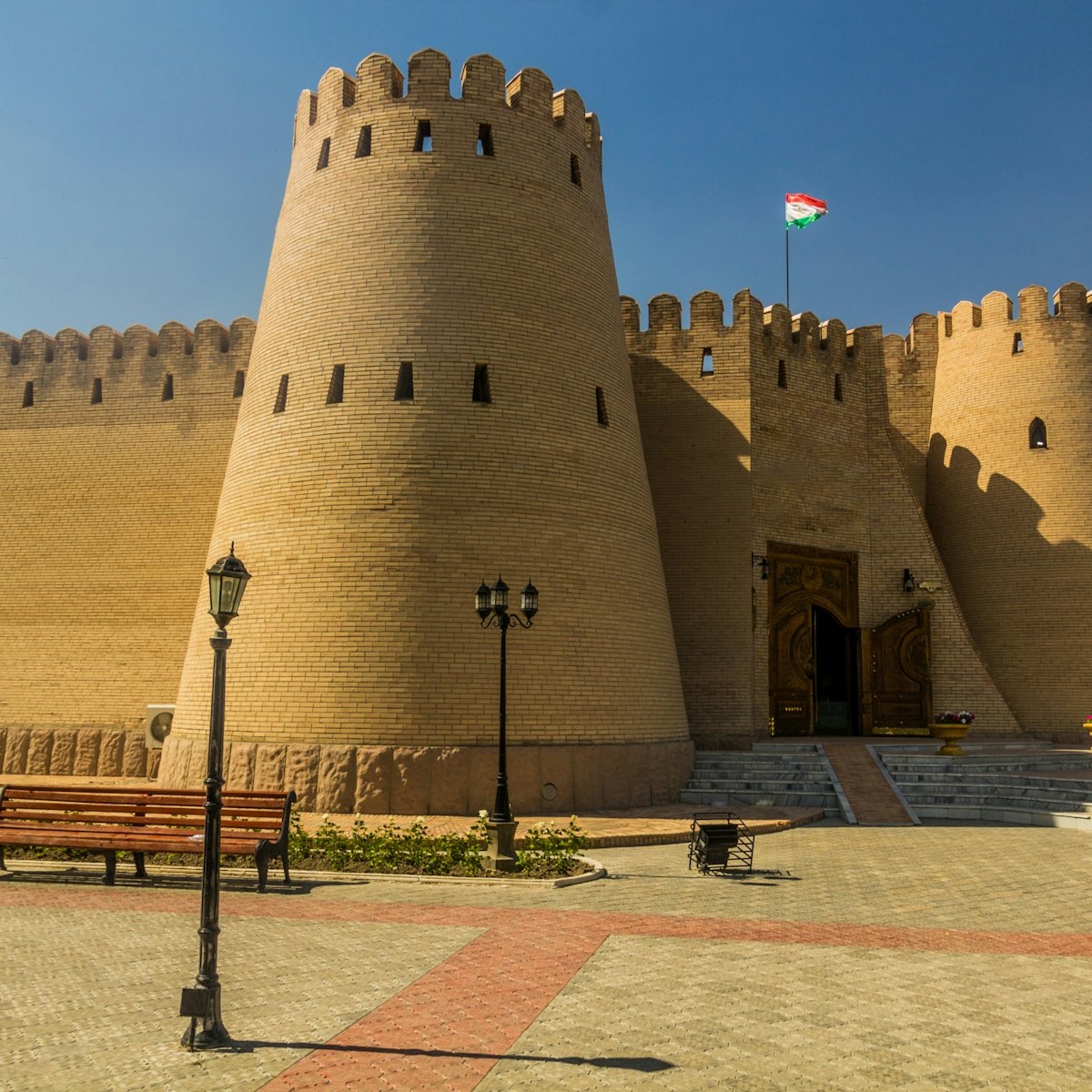
The city’s top sight is the citadel, the reconstructed corner of which is open to visitors. From the top of the 10th-century ramparts, the disintegrating…

Panchshanbe Bazaar
The core of this great bazaar, reputedly the largest in Central Asia, is an unusually elegant, purpose-built hall (1964) with arched entrance portals and…
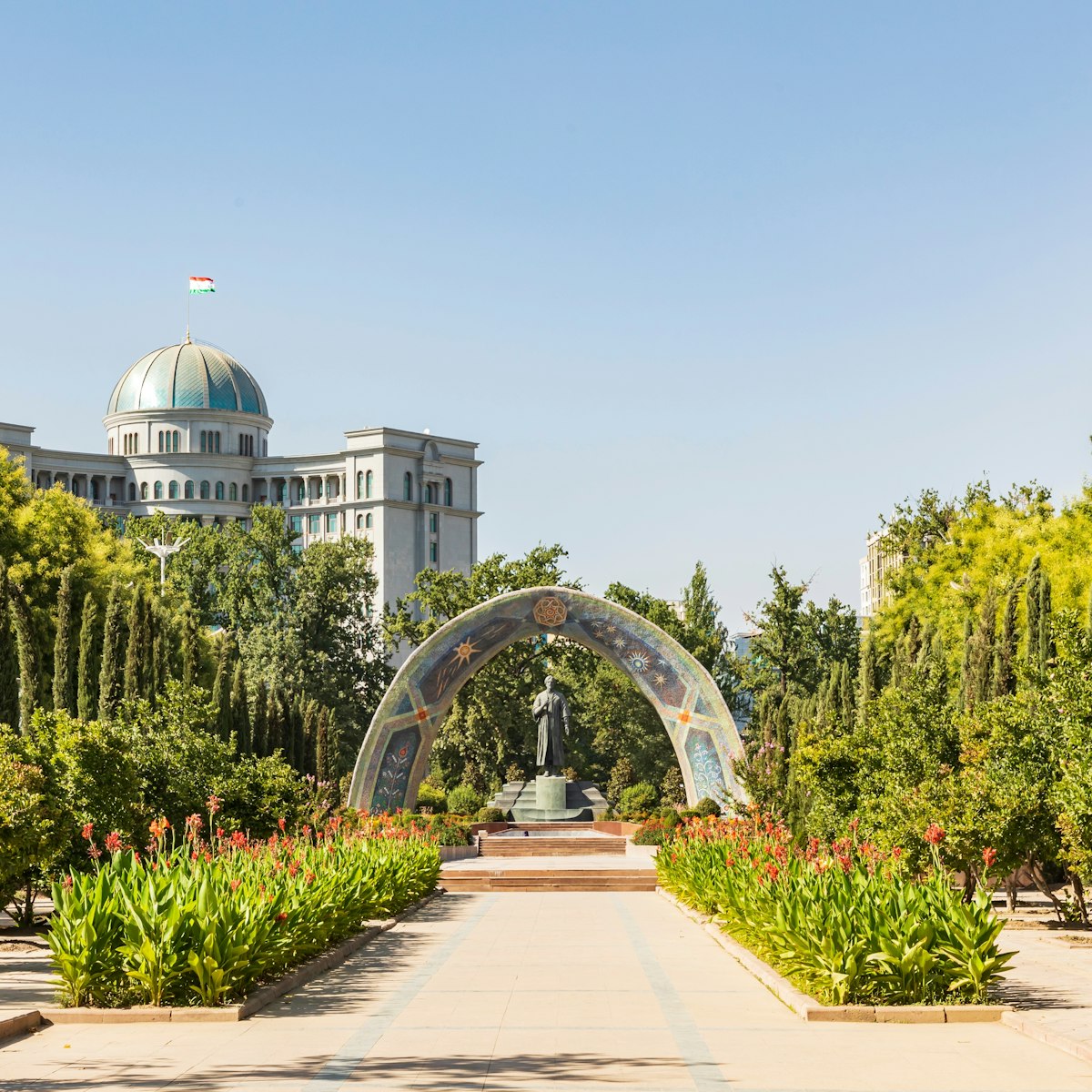
Rudaki Park
Extensive Rudaki Park, with its beautiful canopy of mature trees, offers a series of pathways through flower gardens and alongside lakes and fountains…
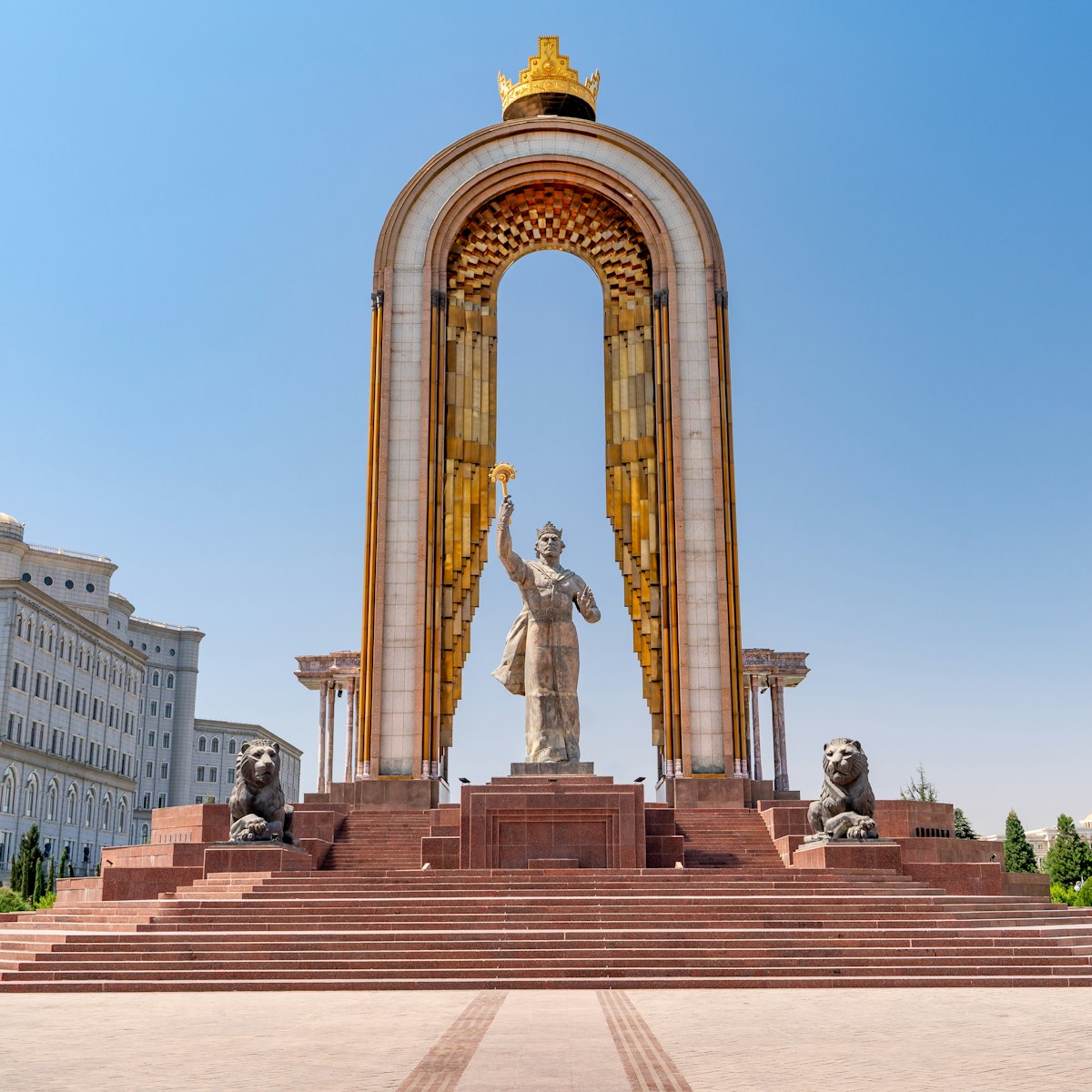
Statue of Ismoil Somoni
One of Dushanbe’s most impressive modern monuments, this statue celebrates the 10th-century founder of the Samanid dynasty. With an art-deco quality to…

Ethnography Museum
Sharing the same complex as the National Museum of Antiquities, this small museum houses an exquisite collection of traditional Tajikistan clothing …

Hulbuk Fortress
The Pamir Highway
Destroyed by the Mongols, the sparse remnants of this fortified palace have been undergoing excavation since 1951 and now a fine reconstruction of the…
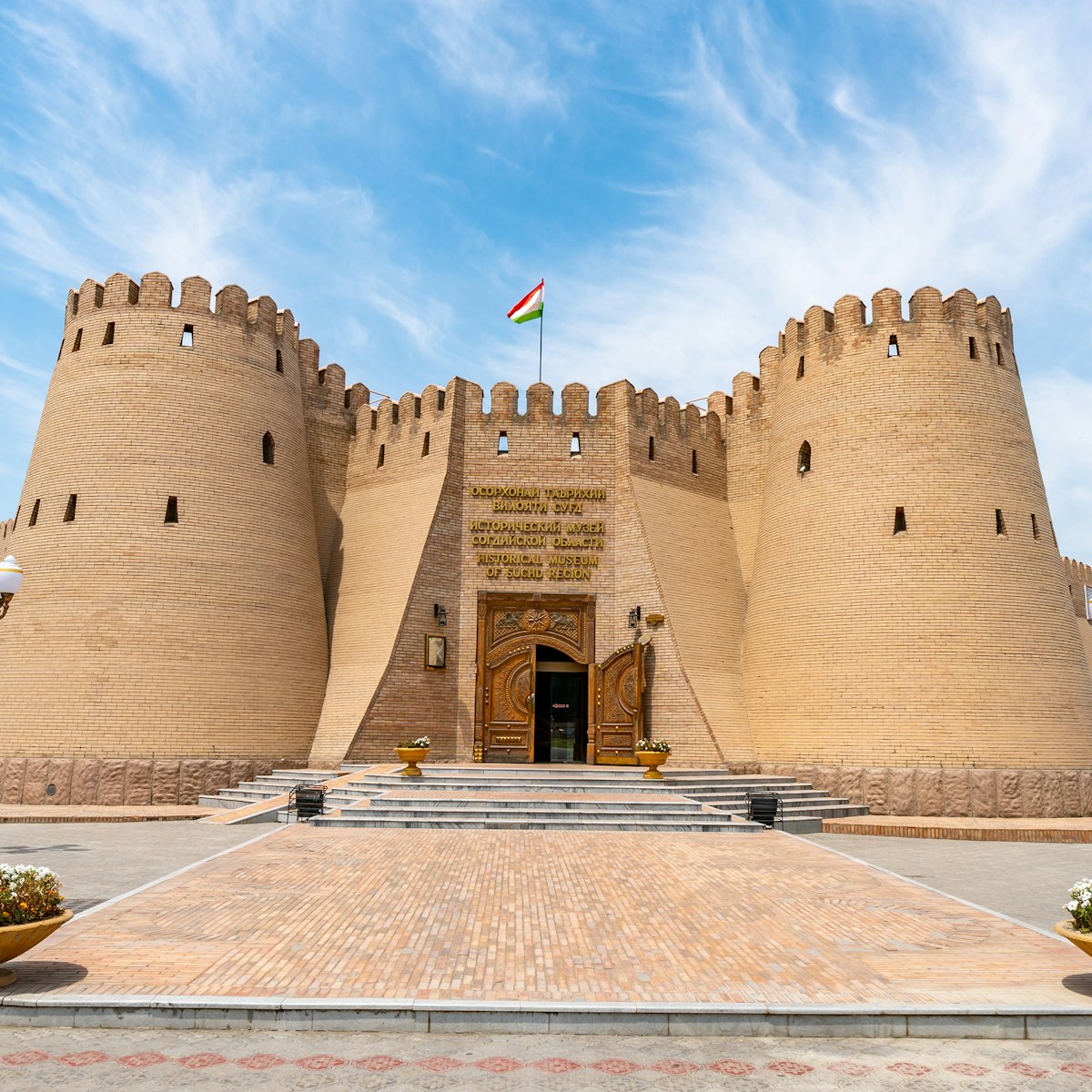
Historical Museum of Sughd Province
Built within the reconstructed southeastern bastion of the city wall, this museum houses a fascinating set of modern marble mosaics depicting the life of…
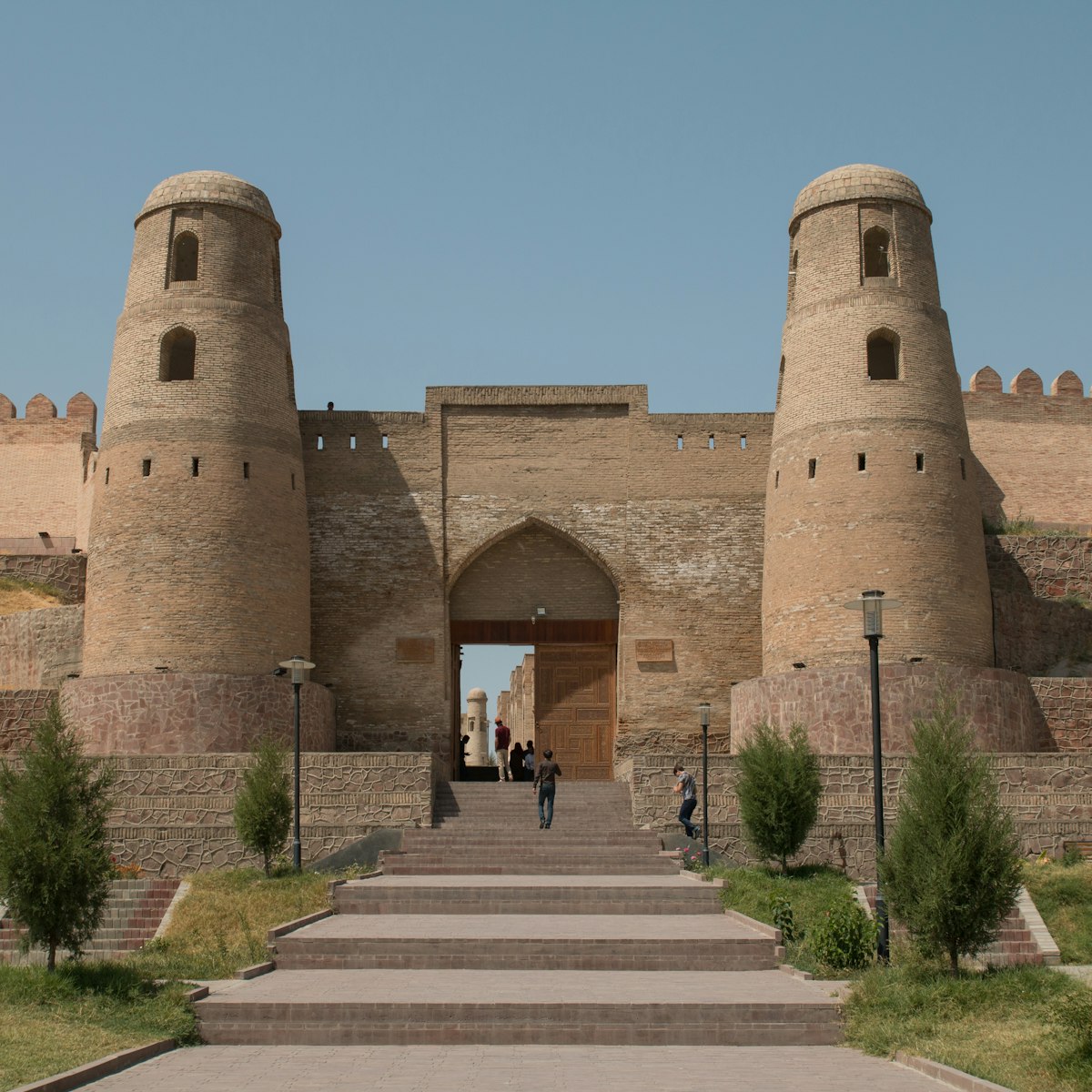
Hissar Fort
Pictured on the 20TJS banknote and just 30km west of Dushanbe, the remains of this 18th-century fort make for an interesting day trip from the capital…
Latest stories from Tajikistan
Filter by interest:
- All Interests
- Adventure Travel
- Art & Culture
- Beaches, Coasts & Islands
- Food & Drink
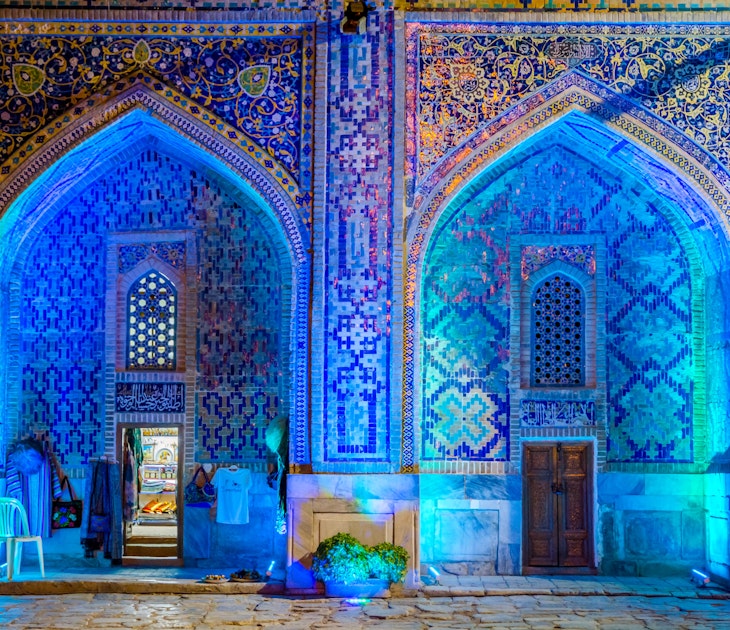
Oct 21, 2019 • 3 min read
With the new year just around the corner, it’s the perfect time to start planning your 2020 adventures.
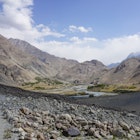
Nov 19, 2018 • 8 min read
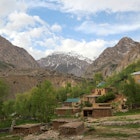
Mar 22, 2018 • 4 min read
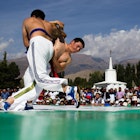
Feb 22, 2017 • 5 min read
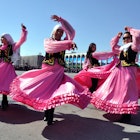
Mar 17, 2016 • 4 min read
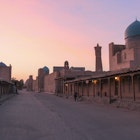
Aug 3, 2015 • 5 min read
in partnership with getyourguide
Book popular activities in Tajikistan
Purchase our award-winning guidebooks.
Get to the heart of Tajikistan with one of our in-depth, award-winning guidebooks, covering maps, itineraries, and expert guidance.
Tajikistan and beyond
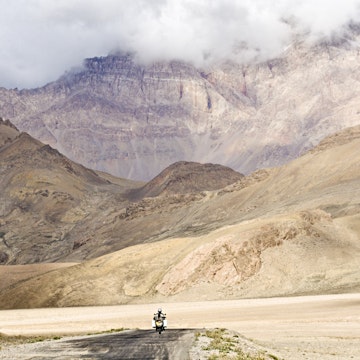
- Destinations
Wild Junket

Tajikistan Travel: All You Need to Know
Last Updated on November 15, 2021
Tajikistan travel isn’t for the faint-hearted, but it can be rewarding and refreshing. Here’s my detailed up-to-date Tajikistan travel guide.
Central Asia — affectionately known as the ‘Stans’ — sprawls across a large part of the continent, covering high mountains, vast deserts and steppes. For years, it was disconnected from the outside world while under the ruling of the Soviet Union. Today, Central Asia remains an under-explored region and a secret among those who have traveled there.
Any trip to Tajikistan is an adventure. Tajikistan is truly blessed with some of the most inspiring, high-altitude landscape in the world. After all, over 90% of the country is mountains. For visitors tolerant of a few traveling hardships (outdoor loos, cold water, potholed roads), the country more than compensates with a rare glimpse into life on ‘The Roof of the World’.

Table of Contents
Where is Tajikistan?
Tajikistan visa and permits, when to travel tajikistan, how much time to travel tajikistan, by hired car/driver, by shared taxis, independent travel or guided tour, the pamir highway, wakhan corridor, the fann mountains, khoburubot pass, hisor fortress, where to stay in tajikistan, what to eat in tajikistan, health & hygiene in tajikistan, internet and phone in tajikistan, is it safe to travel tajikistan, what to pack for tajikistan, inspired pin it, my tajikistan travel guide 2021.
Tajikistan is the smallest, and poorest republic in Central Asia . It is sandwiched between notorious Afghanistan and China, but also borders Uzbekistan and Kyrgyzstan .
As part of the Soviet Union before its independence in 1991, virtually no visitors crossed the border prior to that. Then the 1990s brought a particularly cruel civil war for the people of Tajikistan, which wrought havoc and set the country back considerably.
Recent economic developments have seen responsible steps made in accommodating the increasing numbers of travellers and a balance is being achieved, maintaining the cultural and environmental heritage of the communities.

How to Travel to Tajikistan
The main airport in Tajikistan is the Dushanbe International Airport. The new French-built terminal was opened in 2014.
Tajikistan has two national carriers: Tajik Air and the new private airline Somon Air. To get to Dushanbe, you’ll have to stop over in Dubai, Istanbul, or other destinations within Central Asia such as Bishkek, Almaty, and Urumqi.
I flew Turkish Airlines from Amsterdam to Dushanbe via Istanbul . The flight was rather pricey, at US$900. But you can get better deals if you fly via Almaty or Dubai and have longer layovers. To fly from New York to Dushanbe will set you back around US$1400 return. You can find good deals by flying to Almaty first.
Check for Flights to Dushanbe
As overland travel in Central Asia is more popular than flying, you might find yourself traveling to Tajikistan overland.
Uzbekistan — While relations with Uzbekistan are the worst among Tajikistan’s neighbors, the Uzbekistan Oybek border is the most popular crossing and the roads to the crossing are in the best condition. In recent years, Tajik vehicles have not been allowed into Uzbekistan. You may need to take one vehicle to the border and catch a ride on another after crossing the border.
Kyrgyzstan — There are a couple of options, mostly from Osh and none make for a very smooth journey. A scenic, albeit rough journey into Tajikistan is via the Pamir Highway which runs from Osh to Khorog to Dushanbe. The journey takes 2-3 days from Osh-Khorog and 3 days on the rougher stretch from Khorog to Dushanbe.

As compared to other countries in Central Asia , Tajikistan is relatively easy to enter without much hassle. Most nationalities need a tourist visa to enter Tajikistan, but you can easily apply for that on the official Tajikistan e-visa website .
A single-entry visa costs US$50 and takes 2-3 working days to approve. You’ll get it delivered to your email once it’s processed. Only nationals from Armenia, Azerbaijan, Belarus, Georgia, Kazakhstan, Kyrgyzstan, Moldova, Mongolia, Jordan, Russia and Ukraine do not need a visa for visits up to 90 days.
Besides the Tajikistan visa, you’ll also need a GBAO (Gorno-Badakhshan Autonomous Oblast) permit if you’re traveling the Pamir region. This permit costs US$15 and can be applied together with your Tajik e-visa online.
If you need a multiple-entry visa, then it gets a bit more complicated. Embassies no longer issue multiple-entry visas; they advise to apply for two single-entry visas instead. Basically, get one single-entry visa before entering Tajikistan, and apply for the second one after you have entered. We did that, and it worked perfectly for all of us.

The best time to travel Tajikistan is in summer, between June and September, as some of the roads in the Pamir Mountains are only passable at this time of the year. In fact, many tour operators don’t even run Pamir Mountain trips outside of this season.
Spring (March – May) and fall (October – November) have milder temperatures but there are a lot of showers that make driving in the mountains dangerous. Trekking is still possible and quite beautiful in fall, although it can get quite cold toward the end of October and snow can be expected at higher elevations.
Winter stretches from November to March. During winter, many roads and passes will be closed, so your best bet at getting around the Pamir region will be by flight. Winter can be a great time to visit for those wanting to ski Tajikistan’s nearly untouched mountains.

This depends on how much time you have. I know of people who have spent months traveling all over Tajikistan.
The absolute minimum time you need to travel Tajikistan is 2 weeks. On our 12-day Tajikistan trip , I felt that the pace was too fast and we didn’t have time to explore each place. You definitely want at least 15 days to experience Tajikistan properly.
We had two days in Dushanbe, one day in Afghanistan and seven days driving all over the Pamir region and that was already a fast-paced trip. We were spending 3-8 hours driving each day and reaching our destination in the afternoon and then moving onto a new place the next day. For those visiting the Fann Mountains, you would want to spend 2-5 days in the area trekking in the mountains to the beautiful lakes.
Most Tajik visas given out are 45 days in length which is a decent amount of time to get to know the country.

How to Get Around Tajikistan
Getting around Tajikistan is by far the biggest challenge when traveling in Tajikistan. Because of the country’s mountainous nature and poor infrastructure, there are few public buses and no train system to speak of. Petrol prices are also really high.
Most travelers will hire a car and driver to travel around the Pamirs. There are no buses between villages and in the mountains. You won’t be able to rent a car and drive on your own. The roads are extremely hard to navigate — most parts are unpaved and rocky. You’ll find yourself driving along the edges of steep cliffs or high up on mountain passes most of the time.
It’s best to hire a 4×4 for these roads. We had only normal vans on our trip and they broke down quite a few times while going up the windy, rugged roads. Make sure to check with your driver or operator that you are using 4WDs on your trip. The best online resource to hire a car and driver is Caravanistan , where you can also connect with other travelers to share a vehicle.
It is actually possible to fly to the Pamirs. There is a flight service on Tajik Air from Dushanbe to Khorog, the gateway to Pamir, but the flight is infamous for the danger involved. The tiny Anatov 28 plan literally skims through the mountains and only takes off if there is clear visibility.
The plane only flies when there are enough passengers that day. That means you could be waiting for days for clear skies. To book it, you need to go through the travel agents at the airport or personally at the Tajik Air office. Refer to this page for more details.
If you are traveling independently in Tajikistan, most of your transportation in Tajikistan will be by shared taxi, minibus/marshrutka, private 4×4 hire. Shared taxis and marshrutka/minibuses tend to only leave when full from taxi stands and bus stations in cities and towns. They typically have a fixed price per seat, so if you are in a hurry and would like to depart sooner it’s possible to pay for the empty seats.
Like elsewhere in Central Asia, almost anyone with a car works as a taxi driver (I’m pretty sure Uber stole the idea from Central Asia!). Even when planning to hitchhike many drivers will still expect some payment.

As I mentioned, you WILL need to hire a car/driver if you want to explore the Pamir region properly and see the rugged backcountry. There are no buses or shared taxis in the mountains and the remote high-altitude areas.
It can be worthwhile traveling with a tour operator to save time and hassle if you’re tight on time. Check out Caravanistan for other local tour operators or connect with other travelers to share a vehicle.
Otherwise, here are a few tours that are organized by well-reputed adventure tour operators:
- G Adventures — They offer overland trips in Central Asia that include Tajikistan. The shortest one is a 6-day trip that covers the Fann Mountains, and the longest is a 23-day Central Asia trip that extends to Uzbekistan, Kyrgyzstan and Kazakhstan.
- Intrepid Travel — Another popular travel company that offers a 13 day trip in Tajikistan and Kyrgyzstan including the Pamir Highway.

Where to Go in Tajikistan
With over 90% of the country covered by tall mountains, Tajikistan is a spectacular place to explore for adventure seekers. There’s plenty to see and do whether you have two weeks or a month in Tajikistan. Here are some of the highlights of Tajkistan:
Tajikistan is home to one of the world’s best road trips – the Pamir Highway . It is the second highest international highway (after the Tibet Highway), and it’s a bone-crunching 2000Km switchback through the western arm of the Himalayas. Mostly unpaved, potholed, often flooded and one-car wide, it’s an experience not to be missed.
The route has been in use for millennia, and it used to form one link of the ancient Silk Road trade route. There’s an ongoing debate on where the Pamir Highway begins (some say it’s Mazari Sharif in Afghanistan, some say Termiz, Uzbekistan). All sources, however, agree that the highway ends in Osh, Kyrgyzstan.
The majority of the Pamir Highway is in Tajikistan and it is one of the main tourist draws for the country. We traversed part of the Pamir Highway on our 12-day Tajikistan Pamir Mountains trip. Most travellers drive the length of the Tajik Pamir highway between Osh (Kyrgyzstan).
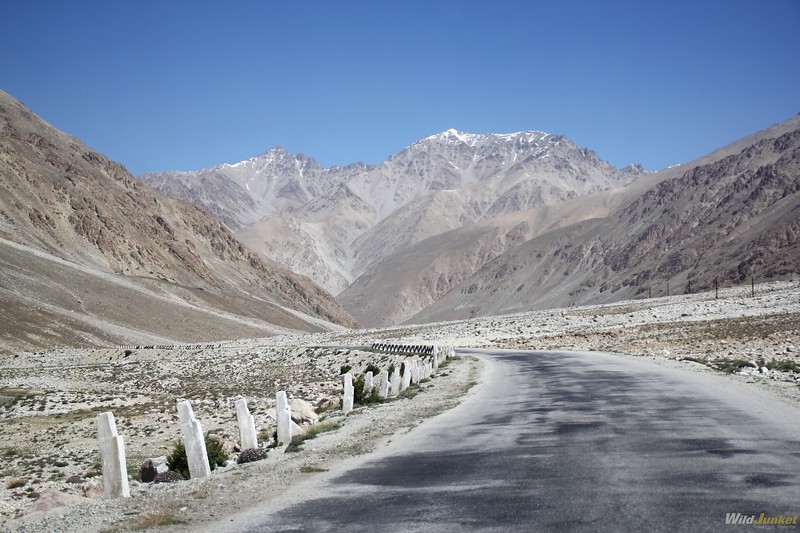
Another major highlight of Tajikistan is the Wakhan Corridor , a narrow strip of territory wedged between the Pamir Mountains and the Karakoram range. The Wakhan Corridor runs along the natural border of Tajikistan and Afghanistan, and it’s dotted with picturesque villages, nestled in fertile plots of intensively cultivated land and half-buried under fruit orchards.
From the Wakhan Corridor , you can see the Hindu Kush Mountains in Pakistan rising above Afghanistan. Apart from the beauty of the journey, there are several sites of interest along the way, including castle ruins, ancient shrines decorated with ibex horns and sets of petroglyphs.
In the 19th century, the corridor acted as a buffer between the Russian Empire and the British Empire. Today, it is a remote and hard-to-reach area with a small population of just 12,000 people. The Wakhan Corridor on the Afghanistan side is said to be a trekkers’ paradise and it’s the only officially safe part of Afghanistan.

Besides the Pamir Highway road trip, the Fann Mountains is probably the second most popular area to explore in Tajikistan. Located in the Sughd Province in northern Tajikistan, these spectacular peaks are definitely worth visiting for some trekking. We didn’t visit this area on our trip, but one of my friends did and she raved all about it.
The Fann Mountains boast about a hundred peaks, with several rising to altitudes of more than 5,000 meters (16,400 feet). The area is also known as “The Land Of Lakes”, thirty of which can be seen rather easily and each displays its own color. The Fann Mountains provide a great alternative for those who don’t want to embark on the epic Pamir Highway trip, but still want to see the beautiful scenery that Tajikistan is famous for.
Flickr image by Oleg Brovko
Bulunkul Lake is a shallow, freshwater lake in the GBAO (Gorno-Badakhshan Autonomous Province) of Tajikistan where the Pamir is located. The lake covers an area of 3900 hectares but dense vegetation covers most of its surface. It’s 1.5km from Yashikul, an even bigger and more beautiful lake. These fresh-water alpine lakes, situated over 12,000 feet above sea-level, are surrounded by dense vegetation, wetlands, sand and pebble plains.
There’s a village that goes by the same name, Bulunkul, located right next to the lake. Bulunkul is known as the coldest point of Tajikistan. It’s a remote and desolate village that’s sparsely populated. Amidst the clusters of houses in the village are abandoned Soviet trucks and yurts that the Pamiris use for cooking and protection from the cold.

On our way back to Dushanbe from Qalai Khum, we took a different route and drove the Khoburubot Pass (also known as Western Pamir Tract) instead. This high-altitude pass stands at 3,252m high and goes through the most picturesque river valley and gorges.
We were really surprised by how different the landscapes looked on this route. The harsh and arid landscapes we were driving through for the past two weeks were now replaced by green fertile soil and lush vegetation. It felt like we had traveled through continents to get to this eden.

About 15km west of Dushanbe stands a historical fortress built around 2,500 years ago. The main arched gates were built in the 16th century, and have now been completely renovated. Hisor Fortress used to be the residence of Bek, a deputy of the Bukhara king. The main gate features two cylinder towers and a lancet arch between them. This type of architecture is typical for most of Bukhara buildings built in that era.
Today, most of the fortress has been artificially restored. Only a small part of the original building remains. During our visit, we spotted at least 6 wedding couples who were parading in their shimmering gowns and getting photos taken for their big day. I’d definitely recommend making a daytrip here from Dushanbe if you get the chance.

Like most capital cities in Central Asia , Dushanbe isn’t anything worth writing home about. Meaning ‘Monday’ in the Tajik language, Dushanbe was named this way because it grew from a village that originally had a popular market on Mondays. These days, it’s flourished into a city of around 800,000 people.
Despite being rather spread out, Dushanbe is quite a leafy city, built around parks, lakes and fountains. Not a bad place to get acquainted with Tajik culture and history or decompress after a few weeks on the dusty Pamir Highway. Some places worth visiting are the Tajikistan National Museum, Dushanbe Bazaar and the Dushanbe Flagpole (second tallest free-standing flagpole in the world, at a height of 165 metres).

Due to the lack of tourism infrastructure, you won’t find many upscale hotels in Tajikistan. In most parts of the country, you’ll only find budget hotels or guesthouses. When traveling Tajikistan, homestays are the main form of accommodation (though there are a couple of guesthouses in bigger towns). They are all fairly basic, although they are usually clean.
In homestays, you’ll usually sleep on thin mattresses on the floor, with three or four people to a room. If you’re lucky, you might get a proper mattress and bed. Showers are definitely a luxury. Meals are usually provided in homestays and they tend to be hearty and simple Tajik meals.
Toilets tend to be a small outdoor shed with a hole in the ground. In the more remote parts toilet paper is often not provided so definitely bring some with you.

Hotel Meridian – Dushanbe
We spent most time at this hotel as it was our base both before and after the trip into the Pamirs. It’s a comfortable 3-star hotel offering good value for money. Located in a quiet district near Dushanbe Mall, it’s a short walk from several good restaurants but quite a distance from Rudaki Avenue and other main sights of the city. Read the Tripadvisor reviews here.
Dushanbe Serena Hotel – Dushanbe
For something more upscale and centrally located, check out this 5-star hotel located along Rudaki Avenue (the main artery of the city). It’s within walking distance from the city’s main sights and museums. Plus it has a swimming pool, which you’ll really appreciate when traveling here in summer. Check for the latest rates here.
Karon Palace Hotel – Qalai Khum
This was the best hotel we stayed at on the entire trip. It’s a luxurious 4-star hotel right in the small town of Qalai Khum. Most people pass through here on their way to the Pamir region. It wasn’t included in our tour but most of us paid extra for an upgrade after roughing it in the Pamirs. Check here for the latest rates.
Lal Hotel – Khorog
There are quite a few nice and affordable guesthouses/hotels in Khorog that overlook the river. We stayed at Lal Hotel , a family-run hotel that’s small and intimate but very comfortable and modern at the same time. It has an excellent location in the centre of town, within a few minutes’ walk to the tourism office and bazaar. Book your stay here.
Hanis Guesthouse – Ishkashim
A budget-friendly place to stay, Hanis Guesthouse is a basic but fun and welcoming guesthouse located close to the entrance of Ishkashim. It’s quite a big guesthouse and popualr with backpackers so you’ll get to meet other travelers here. They organize cultural dance and music shows during festivals. Book your stay here.

- Plov — The national dish (as in most of Central Asia) is a rice dish cooked with beef or mutton, and carrots. It’s all fried together in vegetable oil or mutton fat in a special wok over an open flame.
- Kurutob — This unequivocably Tajik dish is a mix of bread and onions in a yogurt sauce (with the occasional meat and vegetables). It is still eaten with hands from a communal plate.
- Sambusa — My favorite street food in Central Asia is also known as somsa in Uzbekistan and Samosa in India and many other parts of the world. Sambusas are baked pastries stuffed with minced meat (lamb or beef), crispy on the outside.
- Shashlik — These barbequed meat skewers are usually grilled on coal. Choose from liver, chicken, mutton and beef.
- Dolma — Tracing its roots back to the Turkic culture, this dish is made up of steamed rolls wrapped with grape leafs and meat inside.
- Mantu — A hugely popular dish all over Central Asia, mantu is a dumpling dish wrapped with meat inside, served with sour cream and fried onions.
- Shurbo — This is a fresh vegetable soup with lamb or beef, served with green onion and basil. We found this served in almost every meal we had in Tajikistan.
- Melons and watermelons are extremely popular among locals and are very cheap in local markets

As Tajikistan is 93% mountains, no doubt you will be traversing at altitudes above 10,000 feet (or 3,048 meters), where altitude sickness can be a threat. Make sure you bring some Diamox (Acetazolamide) to prevent and reduce the symptoms of altitude sickness. This medication can decrease nausea, dizziness, and shortness of breath. You’ll need prescriptions to get it in most countries. Read more about Diamox here.
The number one health rule when traveling in Tajikistan: do not drink tap water. I’ve heard that boiled water is okay, but we stuck to bottled water on our trip. Our tour operator provided us with water throughout the trip, but you should check with your guide before you head into the mountains. If they don’t provide water, you can easily find big 5L barrels of water in supermarkets in Dushanbe, and also in Khorog and Kalai Klum.
Food hygiene is an issue in Tajikistan. Make sure to wash your hands before every meal and after you use the toilet. Most of the people in my group, including myself, had diarrhoea at some point on the trip. I have a strong stomach and rarely get sick from food, but this was the first time I actually fell ill from food poisoning.
If you do get sick, check out the pharmacy at Dushanbe Mall . They do have the local version of Diamox and motion sickness pills (for some treacherous drives in the Pamir). To seek out treament, the best place to go is the Prospekt clinic (on Sanoi Street) in Dushanbe, which has English speaking doctors.

Don’t expect the cell service in Tajikistan to work the way it does at home. The cell coverage is good in Dushanbe, Khorog and other towns, but it’s generally non-existent in high-altitude regions.
Major service providers in Tajikistan are Beeline, MegaFon and Tcell . They have varying service in different regions of the country, it’s hard to choose the right one. We all got our SIM cards at the Tcell branch in Dushanbe Mall, but you can also find many service providers on Rudaki Avenue. Data bundles are quite cheap, at around US$10 for 3GB of data.
WiFi can be found in some guesthouses and hotels but you won’t find any in homestays. The only reliable WiFi you can find in the Pamir region is in Khorog.

You’ve probably heard the recent news of several traveling cyclists being murdered in Tajikistan by ISIS. It really hit home for me, since we saw so many cyclists on the way and the incident happened right after I returned from Tajikistan. Prior to this incident, there weren’t many terrorist attacks in Tajikistan.
Tajikistan is on the heroin highway from Afghanistan, where the drugs are then travelled onwards through Russia and into Europe. As a result Tajikistan has quite a serious problem with the drugs. Criminal gangs who operate the business are unlikely to target travellers, but it pays to be aware of the problem if traveling close to the Afghan border.
During our trip, I felt completely safe and didn’t sense a hint of danger at all. Our guide and drivers took good care of us. The only time I felt slightly out of my comfort zone was when we crossed over to Afghanistan, and that was due to the way men treated women (another story coming up!).
That said, I’d advise to follow the news closely and check your country’s advisory before visiting to make sure you’ll be safe in Tajikistan. I also recommend traveling with a tour operator just to have some protection and security.

If you are traveling Tajikistan in summer like I did (June to August), don’t be misguided by the info you find on the internet. Many resources say that temperatures dip below zero in many parts of Tajikistan even in summer, but we found the weather to be really warm throughout our trip.
The average daytime temperature was around 30 to 40 degrees Celsius, and night-time temperature was in the 20s. Even at the coldest place we stayed at (also the highest point at 3500m or 11,800 feet above sea level), the temperature didn’t go below 10 degrees Celsius. However, if you are traveling around the Fan Mountains area, it gets colder as you are at higher altitudes so make sure to bring an extra layer of fleece or a thicker jacket.
As Tajikistan is an Islamic country, try to dress conservatively. Most Tajiks are secular Muslims though, so they are not that conservative as and many even drink beer and vodka. For women, you are fine with short-sleeved t-shirts and long loose pants. Shorts and tight-fitting skinny jeans should be avoided. Covering your hair is not required, but do have a scarf handy with you just in case you find a mosque you’d like to explore.
Pack mainly t-shirts, a thin jacket, quick-dry pants, and just one windproof jacket for the chilly nights. Remember to bring a flashlight (for night runs to the outdoor toilets), toilet paper and hand sanitizer.
Here are some of the essentials to pack for a summer trip to Tajikistan:
1. North Face quick dry t-shirt : You’ll need around 4-5 of these quick dry t-shirts that are comfortable for hot weather. You can easily wash them and they’ll dry in one day.
2. Moisture Wicking Tees : For chilly mornings and evenings, these long sleeve t-shirts are great to keep you warm even when the temperature rises later in the day.
3. Soft Shell Jacket : Pack a thin waterproof, soft shell jacket regardless of the weather you’re traveling. It’s particularly useful for the rain. This also acts as an extra layer between your shirt and down jacket or parka. I used this almost everyday on my trip.
4. Quick-Dry Pants : These are something I wear on almost every trip. They’re lightweight, thin, comfortable and waterproof. I can wear them in winter and summer, without feeling too warm or cold.
5. Hiking Boots : A pair of sturdy hiking boots that are waterproof and protective for hiking in the mountains of Tajikistan. I’ve used mine for around 2 years now and they’ve been to many countries and different types of terrain with me. Instead of getting those high boots that are ridiculously heavy and thick, I think it’s better to travel with hiking shoes like these.

I hope you’ve found this Tajikistan travel guide to be useful! Let me know if you have any questions about Tajikistan travel in the comments field below.
Disclaimer: This post contains affiliate links i.e. if you book a stay through one of my links, I get a small commission at NO EXTRA COST to you. Thank you for your support!

Nellie Huang
Nellie Huang is the founder of WildJunket. Originally from Singapore, Nellie has traveled to over 150 countries across 7 continents. She is a book author and Lonely Planet guidebook writer. As an adventure travel blogger, she has a special interest in unusual destinations and deep experiences. Follow her travels on her Facebook and Instagram .
Leave a Comment Cancel Comment
Save my name, email, and website in this browser for the next time I comment.
This site uses Akismet to reduce spam. Learn how your comment data is processed .
The Comments
Thanks, Nellie for sharing Tajikistan travel guide information. Can you please tell what will be the right time to visit Tajikistan.
hey Liam, I wrote about the best time to visit Tajikistan in the post. If you’re planning to explore the whole country, then definitely May-August when the roads are not blocked from snow. Have a read! :)
Mimi Woodbridge
Thank you. Very informative.
EI TYNG THENG
Hi Nellie, thanks for sharing this travel information. It is really useful for me! It would be glad if you could share with me any recommended tour that I can join as I am planning to travel alone. Thanks!
hi Ei, I’m sure you’ll enjoy Tajikistan! Unfortunately I wouldn’t recommend the tour operator I worked with as the trip wasn’t 100% perfect. Sorry that I can’t be of more help but do check out caravanistan.com where there are forums to check recommendations.
Hello now the relationship between Uzbekistan and Tajikistan is really good. After the death of the first Uzbek president, the new President opened up the borders, anyone wishing to cross to Tajikistan is now no problem at all.
You May Also Like
Video: paragliding off lion’s head in cape town, best bagan temples to visit, staying in an overwater bungalow in maldives — what it’s like.
Winter is here! Check out the winter wonderlands at these 5 amazing winter destinations in Montana
- Travel Tips
A Guide For Traveling To Tajikistan (Tips + 3-week Itinerary)
Published: September 16, 2023
Modified: December 27, 2023
by Ella Mcgowan
- Plan Your Trip
- Travel Guide
Introduction
Welcome to Tajikistan, a hidden gem nestled in the heart of Central Asia. With its breathtaking mountain landscapes, pristine lakes, vibrant bazaars, and rich cultural heritage, Tajikistan offers a unique and off-the-beaten-path travel experience that is bound to leave you captivated.
Despite being one of the smallest countries in the region, Tajikistan boasts a wealth of natural and cultural wonders that will amaze even the most seasoned traveler. From the soaring peaks of the Pamir Mountains to the historical Silk Road cities, there is something here for everyone.
This comprehensive guide is designed to help you plan your trip to Tajikistan, providing you with valuable tips and insider information to ensure a smooth and unforgettable journey. Whether you are a nature lover, adventure seeker, history buff, or simply craving a unique travel experience, Tajikistan has it all.
Discover the vibrant capital city of Dushanbe, where modernity meets tradition in a perfect blend. Explore the rugged beauty of the Pamir Mountains, often referred to as the “Roof of the World,” and witness the breathtaking landscapes that will leave you in awe. Immerse yourself in the colorful markets and ancient cities along the historical Silk Road route. And don’t forget to indulge in Tajikistan’s warm hospitality and rich cultural traditions.
As you dive into this guide, you will find valuable information on how to prepare for your trip, including visa requirements and entry procedures. We will also provide tips on health and safety to ensure a worry-free journey. With a 3-week itinerary that highlights the must-visit destinations, you’ll have a well-rounded experience of Tajikistan’s diversity.
So, pack your bags, embrace the spirit of adventure, and get ready to embark on an extraordinary journey to Tajikistan. This guide will be your trusted companion, revealing the hidden treasures and insider secrets of this fascinating country.
Part 1: Preparing for your trip to Tajikistan
Before embarking on your adventure to Tajikistan, it’s essential to make some preparations to ensure a smooth and enjoyable trip. Here are some key factors to consider:
- Travel Documents: Ensure that your passport is valid for at least six months beyond your intended departure date. Check the visa requirements for your nationality and apply in advance if necessary. Remember to make copies of your passport and other important documents.
- Travel Insurance: It is highly recommended to have travel insurance that covers medical emergencies, trip cancellations, and lost belongings. Verify that your policy includes coverage for adventurous activities such as trekking and mountaineering.
- Health Precautions: Consult your doctor or a travel health clinic to get up-to-date information on vaccinations and health precautions for Tajikistan. It is advisable to carry a basic first aid kit and any necessary medications.
- Climate and Packing: Tajikistan experiences a wide range of climates, from hot summers to freezing winters. Pack appropriate clothing for the season and the regions you plan to visit. Don’t forget essentials like comfortable walking shoes, sun protection, a hat, and a reusable water bottle.
- Money Matters: The local currency in Tajikistan is the Tajik Somoni (TJS). While credit cards are accepted in major cities, it’s wise to carry some cash for smaller establishments, especially in rural areas. ATMs are available in urban centers, but it’s always helpful to have some USD or Euros as a backup.
- Language: The official language of Tajikistan is Tajik, which is similar to Persian. English is not widely spoken, so it’s useful to learn a few basic phrases in Tajik or Russian to communicate with locals.
- Cultural Etiquette: Tajikistan is a predominantly Muslim country, so it’s important to respect local customs and dress modestly, especially when visiting religious sites. It’s also customary to remove your shoes before entering someone’s home.
- Transportation: Research transportation options within Tajikistan, particularly if you plan to explore remote areas. Shared taxis and public buses are common modes of transport, but be prepared for long and bumpy rides. Hiring a driver or joining a guided tour can provide a more comfortable and convenient experience.
- Safety: Tajikistan is generally a safe country to visit, but it’s always advisable to take precautions. Be aware of your surroundings, avoid traveling alone at night, and follow any local advice or restrictions. Stay updated on the latest travel advisories for the region you plan to visit.
By considering these factors and making necessary preparations, you’ll be well-equipped to embark on your unforgettable journey in Tajikistan. Part 2 of this guide will explore the different ways to get to Tajikistan, so stay tuned!
Part 2: Getting to Tajikistan
Getting to Tajikistan is an adventure in itself, as the country is located in a remote part of Central Asia. However, with proper planning, it is possible to reach this enchanting destination. Here are some transportation options to consider:
- By Air: The most convenient way to get to Tajikistan is by air. The international airport in the capital city of Dushanbe, called Dushanbe International Airport (DYU), is well-connected to major cities in Europe, Asia, and the CIS countries. Several airlines offer direct flights to Dushanbe, including Turkish Airlines, Aeroflot, and Uzbekistan Airways.
- By Land: If you prefer a more adventurous route, you can enter Tajikistan by land. The country shares borders with Uzbekistan, Kyrgyzstan, China, and Afghanistan. There are land border crossings available, but it’s important to check visa requirements and any travel advisories beforehand. Shared taxis, buses, or private cars are common modes of transport for crossing the borders.
- By Train: Tajikistan does not have its own extensive railway network, and the train system is limited. However, you can reach neighboring countries and then take a shared taxi or bus to enter Tajikistan. For example, you can take a train to Termez in Uzbekistan and then cross the border into Tajikistan.
- By Bus: International buses operate between Tajikistan and neighboring countries such as Uzbekistan, Kyrgyzstan, and Afghanistan. These buses are an affordable option, but be prepared for long journeys, rough roads, and border crossings.
- By Car: If you enjoy road trips and have the time, driving to Tajikistan can be a thrilling experience. However, it is important to be aware of the challenging road conditions, including unpaved roads in some remote areas. Renting a car or hiring a driver who is familiar with the local terrain can make your journey safer and more enjoyable.
Once you arrive in Tajikistan, there are multiple transportation options available to navigate within the country. Public buses, shared taxis, and private cars are common modes of transport. It’s advisable to book transportation in advance, especially for longer journeys and remote areas.
Now that you know how to get to Tajikistan, it’s time to explore the visa requirements and entry procedures. Part 3 of this guide will provide you with all the information you need to ensure a hassle-free entry into this captivating country.
Part 3: Visa Requirements and Entry Procedures
Before traveling to Tajikistan, it’s essential to understand the visa requirements and entry procedures. Here’s what you need to know:
- Visa Requirements: Most visitors to Tajikistan require a visa to enter the country. However, citizens of some countries are exempt from visa requirements or eligible for visa-on-arrival. It is important to check the Tajikistan embassy or consulate website in your country for the most up-to-date information regarding visa requirements.
- Types of Visas: Tajikistan offers several types of visas, including tourist visas, business visas, and transit visas. The tourist visa is the most common for travelers visiting for leisure purposes. Visas can be single-entry or multiple-entry, and the duration of stay can vary. It is recommended to apply for the appropriate visa type based on your travel plans.
- Visa Application Process: The visa application process for Tajikistan typically involves submitting a completed visa application form along with the required documents, including a valid passport, passport-sized photos, proof of travel itinerary, and supporting financial documents. Some embassies or consulates may require a letter of invitation from a hotel or travel agency in Tajikistan.
- Visa-on-Arrival: While it is generally advisable to obtain a visa in advance, Tajikistan offers visa-on-arrival for certain nationalities at Dushanbe International Airport. However, it is essential to confirm the availability and requirements of visa-on-arrival with the embassy or consulate before traveling.
- Registration: Upon arrival in Tajikistan, it is mandatory to register with the local Migration and Citizenship Service within three days. If you are staying in a hotel, they will usually take care of the registration process for you. However, if you are staying in a private accommodation or camping, you will need to register yourself.
- Border Crossings: Tajikistan has several border checkpoints with neighboring countries, including Uzbekistan, Kyrgyzstan, China, and Afghanistan. It’s essential to check the latest information, border crossing points, and travel advisories before planning your route. Some border crossings may have specific restrictions or require special permits.
- Customs and Immigration: When entering Tajikistan, you will need to complete an immigration form and declare any items of value. It’s important to adhere to customs regulations and ensure you have the necessary documentation for any restricted or prohibited items you may be carrying.
- Visa Extension: If you wish to stay in Tajikistan beyond the duration permitted by your visa, it is possible to extend your visa. You will need to visit the State Migration Service office in Dushanbe or other regional offices to apply for a visa extension. It is advisable to start the extension process well in advance of your visa expiration date.
It’s crucial to note that visa requirements and entry procedures can change, so it’s always recommended to check with the Tajikistan embassy or consulate in your country or consult an experienced travel agent for the most up-to-date information.
Now that you are familiar with the visa requirements and entry procedures for Tajikistan, it’s time to explore the health and safety tips for traveling in this captivating country. Part 4 of this guide will provide you with essential information to ensure a safe and healthy journey.
Part 4: Health and Safety Tips for Traveling in Tajikistan
Ensuring your health and safety when traveling to Tajikistan is of utmost importance. Here are some essential tips to help you stay safe and healthy during your visit:
- Travel Insurance and Medical Preparations: Before traveling to Tajikistan, make sure you have comprehensive travel insurance that covers medical emergencies, evacuation, and repatriation. Consult your healthcare provider or a travel clinic to get the necessary vaccinations and medications for Tajikistan.
- Stay Hydrated and Eat Safe: Drink bottled water or use purified water for drinking and brushing your teeth. Be cautious when consuming food and stick to well-cooked meals to minimize the risk of foodborne illnesses. Avoid street food, unpeeled fruits, and undercooked meat or seafood.
- Altitude Sickness: If you plan to visit high-altitude areas, such as the Pamir or Fann Mountains, be aware of the risk of altitude sickness. Gradually acclimatize by spending a couple of days at lower altitudes and staying hydrated. Consult your healthcare provider for preventive measures and medication if necessary.
- Protect Yourself from Sun and Insects: Tajikistan has long sunny days, especially during the summer months. Apply sunscreen with a high SPF, wear protective clothing, and use mosquito repellent to prevent sunburns and insect bites.
- Personal Safety: Although Tajikistan is generally safe, it’s important to take basic precautions. Stay vigilant in crowded areas, keep your belongings secure, and avoid displaying signs of wealth. Respect local customs and traditions, especially when visiting religious or conservative areas.
- Transportation Safety: Use licensed taxis or arrange transportation through reputable companies. When traveling by road, be cautious as driving conditions can be challenging, especially in mountainous regions. Follow safety guidelines and wear seat belts when available.
- Emergency Numbers: Familiarize yourself with the emergency contact numbers in Tajikistan, including local authorities, your embassy or consulate, and your travel insurance provider. Keep a copy of these numbers handy in case of any emergencies.
- Respect Nature and Wildlife: Tajikistan is blessed with incredible natural beauty, and it’s important to preserve it. Respect nature, follow designated trails, and avoid littering. If you encounter wildlife, maintain a safe distance and do not disrupt their habitat.
- Local Customs and Etiquette: Familiarize yourself with Tajik culture and customs to show respect to the locals. Dress modestly, especially when visiting religious sites or rural areas. Always ask for permission before taking photographs of individuals.
- Be Prepared and Stay Informed: Stay updated on the latest travel advisories and news related to your destination. Research the local culture, traditions, and etiquette to enhance your travel experience and interact respectfully with the locals.
By following these health and safety tips, you can ensure a memorable and worry-free trip to Tajikistan. In Part 5 of this guide, we will explore Dushanbe, the vibrant capital city of Tajikistan, and discover its cultural and historical attractions.
Part 5: Exploring Dushanbe: The Capital City
Welcome to Dushanbe, the vibrant capital city of Tajikistan! Nestled in the picturesque Hissar Valley, Dushanbe offers a fascinating blend of history, culture, and modernity. Here are some highlights to explore during your visit:
- Somoni Park: Start your exploration in the heart of the city at Somoni Park, a beautifully manicured public space named after the national currency. Admire the iconic statue of Ismail Samani, a revered Tajik hero, and soak in the lively atmosphere.
- Rudaki Park: Located near the city center, Rudaki Park is a great place to relax and unwind. Take a leisurely stroll, enjoy the beautiful fountains, and immerse yourself in the serene ambiance of this popular recreational spot.
- National Museum of Tajikistan: Discover the rich history and culture of Tajikistan at the National Museum. Explore the exhibits showcasing archaeological artifacts, traditional costumes, ancient manuscripts, and artwork that offer insights into the country’s past.
- Gurminj Museum of Musical Instruments: For music enthusiasts, a visit to the Gurminj Museum is a must. Explore the extensive collection of traditional musical instruments and learn about Tajikistan’s rich musical heritage.
- Flagpole of National Unity: Marvel at one of the tallest flagpoles in the world at the Flagpole of National Unity. Standing proudly at 165 meters, it symbolizes the unity and pride of the Tajik people.
- Navruz Palace: Visit Navruz Palace, a stunning architectural masterpiece adorned with intricate Tajik designs. This grand building is not only an official state residence but also hosts cultural events and exhibitions.
- Dushanbe Bazaar: Immerse yourself in the vibrant atmosphere of a traditional bazaar at Dushanbe Bazaar. Explore the bustling market stalls, sample local delicacies, and shop for souvenirs, spices, and handicrafts.
- Haji Yakoub Mosque: Experience the Islamic heritage of Tajikistan with a visit to Haji Yakoub Mosque. Admire the intricate tilework, serene courtyards, and peaceful ambiance of this beautiful place of worship.
- Dining and Nightlife: Indulge in the local flavors at the various restaurants and cafes scattered across Dushanbe. Sample traditional Tajik dishes, such as plov (rice dish), shashlik (grilled meat), and somsa (stuffed pastry). In the evenings, enjoy lively nightlife at the city’s bars, clubs, and live music venues.
- Botanical Garden: Escape the hustle and bustle of the city and explore the peaceful surroundings of the Botanical Garden. Wander through the flower-filled pathways, relax by the tranquil ponds, and soak in the natural beauty of this serene oasis.
Dushanbe’s welcoming atmosphere, charming parks, and cultural treasures make it a delightful city to explore. Immerse yourself in the local culture, interact with friendly locals, and savor the unique charms of Tajikistan’s capital.
In Part 6 of this guide, we will venture into the majestic Pamir Mountains, a mesmerizing region known for its breathtaking landscapes and remote mountain communities.
Part 6: Discovering the Pamir Mountains
Prepare yourself for an unforgettable adventure as we venture into the majestic Pamir Mountains, also known as the “Roof of the World.” This remote and breathtaking region of Tajikistan offers unparalleled natural beauty and a glimpse into the traditional way of life of the Pamiri people. Here are some highlights to discover during your exploration:
- Wakhan Valley: Begin your journey by exploring the stunning Wakhan Valley, a narrow strip of land bordering Afghanistan. Marvel at the rugged beauty of the Pamir River as it carves through towering cliffs, and visit the ancient Sarhad-e-Broghil Fort and ancient petroglyphs along the way.
- Murgab: Make a stop at Murgab, the highest town in Tajikistan at an altitude of over 3,600 meters. Experience the unique culture and hospitality of the local Kyrgyz community and visit the nearby Karakul Lake, a surreal and pristine alpine lake nestled between towering mountains.
- Bartang Valley: Embark on a journey through the picturesque Bartang Valley, known for its remote and untouched landscapes. Encounter traditional Pamiri villages, turquoise rivers, and breathtaking viewpoints. Don’t miss the opportunity to hike to Jizeu, a high altitude lake surrounded by jaw-dropping peaks.
- Yamchun Fortress and Hot Springs: Visit the ancient Yamchun Fortress, perched high on a hilltop overlooking the Panj River. Explore the intricate mud-brick structure and take in the sweeping views of the surrounding valleys. Afterwards, reward yourself with a dip in the nearby hot springs, known for their therapeutic properties.
- Po-i-Kalyan: Discover the fascinating Po-i-Kalyan complex in the town of Khorog. Admire the intricate architecture of the Khorog Mosque and Madrasa, and explore the Khorog Regional Museum to learn about the history and culture of the region.
- Ishkashim: Immerse yourself in the vibrant local culture by visiting the bustling town of Ishkashim. Explore the Ishkashim Bazaar, where Afghan and Tajik traders gather to sell their wares, and learn about the unique traditions and customs of the Pamiri people.
- Pamir Highway: Embark on a breathtaking road trip along the iconic Pamir Highway, one of the highest and most scenic mountain roads in the world. Marvel at the dramatic landscapes, towering peaks, and remote villages along this epic journey.
- Homestay Experience: To truly immerse yourself in the local culture, consider staying with a local family in one of the homestays scattered throughout the Pamir Mountains. Experience their warm hospitality, savor traditional Pamiri cuisine, and gain insights into their way of life.
- Trekking and Mountaineering: If you’re an adventure enthusiast, the Pamir Mountains offer excellent opportunities for trekking and mountaineering. From multi-day treks to challenging ascents of peaks like Peak Lenin, the highest peak in the region, there’s a thrilling adventure awaiting all levels of experience.
The beauty and tranquility of the Pamir Mountains will leave you in awe, offering an escape from the rush of everyday life. Explore the stunning landscapes, connect with the hospitable locals, and create memories that will last a lifetime.
In Part 7 of this guide, we will venture into the captivating Fann Mountains, another natural wonder of Tajikistan that promises breathtaking scenery and outdoor adventures.
Part 7: Exploring the Fann Mountains
Prepare to be mesmerized as we venture into the captivating Fann Mountains, a jewel in Tajikistan’s natural landscape. This stunning range is renowned for its pristine lakes, majestic peaks, and picturesque valleys, offering a paradise for outdoor enthusiasts and nature lovers. Here are some highlights to explore during your journey through the Fann Mountains:
- Iskanderkul: Begin your exploration of the Fann Mountains at the breathtaking Iskanderkul Lake. Surrounded by towering peaks and lush greenery, this azure lake offers a serene setting for picnics, leisurely walks, and admiring the natural beauty.
- Seven Lakes: Embark on a legendary trek through the Seven Lakes of the Fann Mountains. Each lake boasts its own unique charm, ranging from vivid turquoise to deep emerald hues. Hike through dense forests, traverse scenic passes, and camp by these stunning bodies of water.
- Haft Kul: For a more remote and off-the-beaten-path experience, head to Haft Kul (Seven Glacial Lakes) in the Zarafshan Range. These high-altitude lakes are nestled amidst snow-capped peaks and offer a tranquil and untouched setting.
- Chimtarga Peak: For those seeking a challenge, tackle the ascent of Chimtarga Peak, the highest peak in the Fann Mountains. This fascinating mountaineering experience rewards you with breathtaking panoramic views of the entire region.
- Alauddin Lakes: Journey to the picturesque Alauddin Lakes located in a remote alpine valley. These emerald lakes are surrounded by stunning mountain peaks, providing a paradise for camping, hiking, and photography enthusiasts.
- Alaudin Pass: Trek through the stunning Alaudin Pass, a high-altitude route that connects the Fann Mountains to the Zeravshan Valley. Marvel at the dramatic landscapes, meadows of wildflowers, and the sense of achievement as you cross this breathtaking mountain pass.
- Saritag Valley: Explore the enchanting Saritag Valley, known for its picturesque waterfalls, lush green meadows, and colorful alpine flowers. Take in the tranquility of this hidden gem as you hike through its pristine landscapes.
- Waterfalls of the Fanns: Discover numerous cascading waterfalls scattered throughout the Fann Mountains. Among the most notable are Marguzor Waterfalls and Nitrate Waterfall, each offering a unique display of natural beauty.
- Pik Saroy: Challenge yourself with a climb to Pik Saroy, a prominent peak in the Fann Mountains. Experience the exhilaration of conquering this summit and be rewarded with breathtaking views of the surrounding peaks and valleys.
The Fann Mountains offer a haven for outdoor adventurers, trekkers, and nature enthusiasts. Experience the awe-inspiring beauty, engage with the friendly locals, and create memories amidst the stunning landscapes of this captivating region.
In Part 8 of this guide, we will travel back in time along the historical Silk Road, exploring the cities of Khujand and Istaravshan, where ancient history and vibrant culture intertwine.
Part 8: Experiencing the Silk Road: Khujand and Istaravshan
Travel back in time along the historic Silk Road as we explore the ancient cities of Khujand and Istaravshan. These cities showcase the rich cultural heritage and architectural wonders that have stood the test of time. Here’s what you can experience in these captivating Silk Road destinations:
- Khujand: Start your journey in Khujand, the second-largest city in Tajikistan and a bustling hub of trade and culture. Visit the impressive Kamoli Khujandi Square, adorned with a statue of the renowned Persian poet and philosopher, Abu Abdallah Rudaki. Explore the Panjshanbe Bazaar, one of the oldest and most vibrant open-air markets in Central Asia, where you can find a variety of goods and immerse yourself in the local atmosphere.
- Timur Malik Fortress: Discover the ancient Timur Malik Fortress in Khujand, a historical site that dates back to the 6th century. Climb the fortress walls to enjoy panoramic views of the city and explore the museum within, which showcases artifacts from the region’s rich history.
- Arbob Cultural Palace: Immerse yourself in Tajik culture at the Arbob Cultural Palace in Khujand. Attend a traditional music or dance performance, or visit the art gallery to admire the works of local artists, which encompass Tajikistan’s vibrant artistic expressions.
- Istaravshan: Journey further along the Silk Road to Istaravshan, one of the oldest cities in the region with a history spanning over 2,500 years. Explore the UNESCO-listed Istaravshan Historical Reserve, home to remarkable architectural gems such as the 16th-century Kukhna Mosque and the 15th-century Kok Gumbaz (Blue Dome) Mosque, showcasing intricate tilework and distinct Persian architectural influences.
- Chor-Gumbaz Madrasa: Delve into the sacred history of Istaravshan with a visit to the Chor-Gumbaz Madrasa, an ancient Islamic school. Admire the beautifully crafted facade and marvel at the peaceful courtyard, providing a serene atmosphere for contemplation.
- Zarafshan Valley: Venture into the picturesque Zarafshan Valley near Istaravshan, known for its stunning landscapes and traditional villages. Explore the village of Mug Tepa, where you can witness traditional craftsmanship and visit the workshops of local artisans.
- Tastamakan Caravanserai: Discover the Tastamakan Caravanserai, an ancient Silk Road inn that once served as a resting place for travelers and traders. Marvel at the architectural elements and imagine the bustling activity that took place within its walls during the glory days of the Silk Road.
- Local Cuisine: Indulge in the regional cuisine of Khujand and Istaravshan. Sample delicious dishes such as plov (rice pilaf), shirin (sweet) and khalvat (savory) halva, and traditional Tajik pastries. Don’t miss the opportunity to try traditional shashlik (grilled meat skewers) for a flavorful culinary experience.
- Local Handicrafts: Take the chance to admire and purchase traditional handicrafts, such as ceramics, textiles, and intricate embroidery, that showcase the exquisite craftsmanship of the region.
Khujand and Istaravshan offer a glimpse into the rich history and cultural heritage of Tajikistan. Explore the ancient sites, savor the local flavors, and appreciate the enduring legacy of the Silk Road in these captivating cities.
In Part 9 of this guide, we will delve deeper into the vibrant Tajik culture and traditions, providing insights into the warm hospitality and unique customs that make Tajikistan a remarkable destination.
Part 9: Immersing in Tajik Culture and Traditions
Immerse yourself in the rich cultural tapestry of Tajikistan as we delve into the vibrant traditions and warm hospitality that define this remarkable country. From traditional arts and crafts to religious customs, here’s a glimpse into Tajik culture:
- Hospitality: Tajik people are known for their warm and welcoming nature. If you’re invited into someone’s home, be sure to accept the invitation and embrace the opportunity to experience Tajik hospitality firsthand. Expect to be treated to a feast of traditional dishes and generous servings of tea.
- Tajik Cuisine: The culinary traditions of Tajikistan reflect the country’s rich cultural heritage. Indulge in flavorful dishes such as plov (rice pilaf), manti (dumplings), and shashlik (grilled meat). Don’t forget to taste the national drink, green tea, or sample the refreshing sour yogurt drink known as doogh.
- Traditional Music and Dance: Tajikistan’s musical heritage is diverse and vibrant. Experience the soul-stirring melodies of traditional Tajik instruments such as the long-necked dutar or the tambur. Watch captivating traditional dance performances, where graceful movements depict folk stories and celebrations.
- Handicrafts and Textiles: Tajikistan is renowned for its intricate handicrafts and textiles. Explore local markets and artisan workshops to discover intricately woven carpets, colorful Suzani embroidery, and delicate ceramics. Support local artisans by purchasing these authentic and beautifully crafted pieces.
- Traditional Attire: Traditional Tajik clothing reflects the country’s cultural heritage and local customs. Women often wear brightly colored dresses adorned with ornate embroidery, while men opt for long robes known as chapan. Being respectful of these traditions is appreciated when visiting rural areas or attending cultural events.
- Religious Customs: Islam is the predominant religion in Tajikistan, and religious customs hold a significant place in everyday life. When visiting mosques or religious sites, dress modestly and remove your shoes before entering. Be respectful of worshippers and follow any guidelines or restrictions.
- Festivals and Celebrations: Tajikistan is known for its rich calendar of festivals and celebrations. Experience the vibrancy of Navruz, the Persian New Year, which is a significant cultural event celebrated with music, dance, and feasts. Other festivals, such as Eid al-Fitr and Eid al-Adha, are also celebrated with great enthusiasm and joy.
- Language: The official language of Tajikistan is Tajik, which is closely related to Persian. While Russian is also widely understood, learning a few basic Tajik phrases can go a long way in connecting with the local people and showing respect for their culture.
- Respecting Customs and Traditions: When visiting Tajikistan, it’s important to be mindful of local customs and traditions. Dress modestly, particularly in religious or rural areas, and be respectful of local customs. Seek permission before taking photographs of individuals, especially in more conservative settings.
By immersing yourself in Tajik culture and traditions, you’ll gain a deeper appreciation for the country and its people. Enjoy the warm hospitality, savor the traditional cuisine, and embrace the chance to connect with the vibrant cultural heritage of Tajikistan.
In Part 10 of this guide, we will provide practical tips to make your journey in Tajikistan even more enjoyable and hassle-free.
Part 10: Practical Tips for Traveling in Tajikistan
Here are some practical tips to ensure a smooth and enjoyable journey as you travel through the beautiful landscapes of Tajikistan:
- Pack Appropriately: Be prepared for diverse weather conditions by packing layers, as the climate can vary greatly depending on the region and altitude. Bring sturdy walking shoes, a hat, sunglasses, and sunscreen for protection against the sun.
- Stay Hydrated: Drink plenty of water, especially in high-altitude areas like the Pamir and Fann Mountains. Carry a reusable water bottle and stay well-hydrated to avoid altitude sickness and dehydration.
- Observe Local Customs: Familiarize yourself with local customs and respect cultural norms when visiting religious sites or rural areas. Dress modestly and be mindful of local traditions, seeking permission before taking photos of people or religious sites.
- Stay Connected: Get a local SIM card upon arrival in Tajikistan to stay connected with family and friends. Local network providers offer affordable data and call packages. Ensure your phone is unlocked before traveling.
- Money Matters: Carry cash in small denominations, as credit cards may not be widely accepted, especially in rural areas. ATMs are available in major cities, but it’s advisable to carry enough cash for smaller establishments and remote regions.
- Language: While Russian is widely understood in Tajikistan, learning a few basic Tajik phrases can go a long way in enhancing your interactions with locals. Carry a phrasebook or language app for easy reference.
- Photography: Tajikistan offers incredible opportunities for photography. Respect individuals’ privacy and ask for permission before capturing their portraits. Be cautious when taking pictures of sensitive locations such as military or government buildings.
- Communicate and Plan: Inform your embassy or consulate of your travel plans and register with them if required. Share your itinerary with family or friends and keep them updated on your whereabouts. Stay informed about any travel advisories or safety precautions for the areas you plan to visit.
- Transportation: Plan your transportation in advance, especially for long-distance journeys or off-the-beaten-path destinations. Public transportation options include shared taxis and buses, but hiring a private driver or joining a guided tour can provide convenience and flexibility.
- Health and Safety: Prioritize your health and safety by carrying a basic first aid kit, insect repellent, and any necessary medications. Stay updated on vaccinations and consult a healthcare provider or travel clinic before your trip. Follow basic safety precautions and be aware of your surroundings.
By following these practical tips, you’ll be well-prepared for your journey through Tajikistan. Embrace the unique experiences, vibrant culture, and stunning landscapes that await you, and create memories that will last a lifetime.
Congratulations! You are now equipped with a comprehensive guide to exploring the enchanting country of Tajikistan. From the vibrant capital city of Dushanbe to the breathtaking Pamir and Fann Mountains, and the historical Silk Road cities of Khujand and Istaravshan, Tajikistan offers a plethora of unique experiences for every traveler.
As you traverse this hidden gem of Central Asia, remember to immerse yourself in the rich culture and traditions of Tajikistan. Embrace the warm hospitality of the locals, savor the flavors of Tajik cuisine, and appreciate the intricate craftsmanship showcased in the traditional arts and handicrafts.
While on your journey, stay mindful of practical tips for a smooth and enjoyable travel experience. Respect local customs and traditions, stay hydrated, and be prepared for diverse weather conditions. Take in the breathtaking landscapes, explore ancient historical sites, and indulge in thrilling outdoor adventures.
Always prioritize your health and safety by staying informed about travel advisories, obtaining the necessary vaccinations, and carrying essential medications. Respect nature, practice responsible tourism, and leave a positive impact on the local communities and environment.
Tajikistan is a country that will mesmerize you with its natural beauty, rich history, and warm-hearted people. Let your senses be captivated by the soaring mountains, crystal-clear lakes, and vibrant bazaars. Immerse yourself in the cultural treasures, befriend the locals, and create memories that will last a lifetime.
So, pack your bags, embrace the spirit of adventure, and embark on an extraordinary journey to Tajikistan. Let this guide be your trusted companion as you explore the hidden gems and experience the wonders that await you in this captivating country.

- Privacy Overview
- Strictly Necessary Cookies
This website uses cookies so that we can provide you with the best user experience possible. Cookie information is stored in your browser and performs functions such as recognising you when you return to our website and helping our team to understand which sections of the website you find most interesting and useful.
Strictly Necessary Cookie should be enabled at all times so that we can save your preferences for cookie settings.
If you disable this cookie, we will not be able to save your preferences. This means that every time you visit this website you will need to enable or disable cookies again.

No videos yet!
Click on "Watch later" to put videos here
Tajikistan Travel Guide – Everything You Need to Know

Welcome to Tajikistan, a jewel nestled in the heart of Central Asia, where rugged mountains meet vibrant cultures, and ancient traditions unfold against a backdrop of breathtaking landscapes. Tajikistan, with its warm hospitality, invites travelers to embark on a journey of discovery.
What’s the Best Time to Visit? 📅
The best time to visit Tajikistan as a tourist largely depends on your preferences and the type of experience you are seeking, considering the diverse climate and geography of the country. Here are the main seasons to consider:
- Spring is a beautiful time to visit Tajikistan. The weather is generally mild, and nature comes to life with blossoming flowers and lush greenery. This is an excellent season for trekking and exploring outdoor landscapes.
- Summer is the peak tourist season, offering warm temperatures and clear skies. It’s an ideal time for trekking, especially in the Fann Mountains, and for exploring cities like Dushanbe. However, some lowland areas can get quite hot.
- Autumn is another favorable time to visit, with cooler temperatures and the continuation of clear weather. The landscapes take on vibrant autumn colors, making it a scenic time for outdoor activities.
- Winter is not the most popular time for tourism, especially in mountainous regions where temperatures can drop significantly. However, if you enjoy winter sports, this season provides opportunities for skiing in places like the Fann Mountains.
Overall, the best time to visit Tajikistan depends on your specific interests:
- Trekking and Outdoor Activities: Spring, summer, and early autumn provide the best conditions for trekking and exploring the country’s mountainous landscapes.
- Cultural Sightseeing: Spring and autumn are pleasant times for cultural exploration in cities like Dushanbe, Khujand, and Penjikent when temperatures are moderate.
- Winter Sports: If you’re interested in skiing or winter sports, the winter months offer opportunities, particularly in mountainous regions with appropriate facilities.
It’s important to note that weather conditions can vary, and it’s advisable to check specific regions and altitudes when planning your visit. Additionally, keep in mind that some high-altitude areas may experience harsher conditions, and accessibility can be affected during certain seasons. Always check current travel advisories and weather forecasts before planning your trip to Tajikistan.
What’s the Best Way to Get Around? 🚌
Getting around Tajikistan as a tourist can involve a mix of transportation modes due to the country’s diverse geography and varying road conditions. Here are some common ways to travel within Tajikistan:
- Shared taxis and marshrutkas (minibuses) are common modes of transportation between cities and towns. They are cost-effective, although comfort levels can vary.
- Hiring a private taxi for long-distance travel or for exploring local attractions can be convenient. Negotiate the fare in advance, and it’s advisable to use registered and official taxis.
- Renting a car is a good option for travelers who prefer flexibility and want to explore more remote areas. Keep in mind that road conditions can vary, and a 4×4 vehicle may be necessary for certain routes.
- Public buses operate between major cities and towns, providing an affordable option for budget-conscious travelers. However, be prepared for crowded conditions.
- Domestic flights are available between some cities. This option is convenient for covering long distances quickly, but flight schedules may be limited.
- Hitchhiking is common in Tajikistan, especially in more remote areas where transportation options are limited. However, it’s essential to exercise caution and consider local customs and safety.
- Cycling enthusiasts may choose to explore Tajikistan by bike. The challenging terrain offers both rewarding experiences and breathtaking scenery. Plan routes carefully and be prepared for varying elevations.
- The Pamir Highway is a famous route for travelers seeking stunning mountain landscapes. Consider joining organized tours that provide transportation, guides, and accommodation along the way.
- In more remote and mountainous regions, walking and trekking are common modes of transportation. Guided trekking tours can offer a unique way to experience the natural beauty of Tajikistan.
- In regions with lakes and rivers, boat travel may be an option. This includes areas around Lake Iskanderkul and other bodies of water.
Before traveling, check the current conditions of roads and transportation options, especially if you plan to visit more remote areas. Additionally, consider the altitude and climate, as these factors can impact travel plans. Always be flexible and prepared for unexpected changes, and make sure to respect local customs and regulations while traveling in Tajikistan.
Where to Stay? 🏨
Tajikistan offers a range of accommodation options catering to different preferences and budgets. Here are some recommendations for places to stay in popular tourist destinations:
- As the capital city, Dushanbe has a variety of hotels ranging from luxury options to budget-friendly accommodations. Many hotels are centrally located, providing convenient access to key attractions such as the National Museum of Tajikistan and Rudaki Park.
- Khujand, the second-largest city, has hotels and guesthouses suitable for various budgets. Look for accommodation options in the city center to be close to landmarks like Panjshanbe Bazaar and Sheikh Muslihiddin Mosque.
- In the Pamir region, including cities like Khorog and Murghab, you’ll find a mix of guesthouses and homestays. Accommodations in this region offer a unique opportunity to experience local hospitality while exploring the stunning landscapes.
- Penjikent, an ancient Silk Road city, has hotels and guesthouses catering to tourists. Stay in the city center to explore the archaeological site of Penjikent and the nearby Seven Lakes.
- For those visiting Iskanderkul Lake, consider staying in nearby guesthouses or campsites. This allows you to enjoy the natural beauty of the area while having comfortable accommodations.
- The Fann Mountains offer trekking opportunities, and many tourists choose to stay in local homestays or campsites. Some organized trekking tours also provide accommodation along the trekking routes.
- Kulob, a historical city, has a range of accommodation options, including hotels and guesthouses. It’s a good base for exploring nearby attractions like Hulbuk Fortress.
- Sarazm, an archaeological site, may have limited accommodation options nearby. Consider staying in nearby towns or cities and arranging transportation to visit Sarazm.
When choosing accommodation, consider factors such as your travel itinerary, preferred level of comfort, and the type of experience you want. In more remote areas, be prepared for simpler accommodations that may offer a more authentic local experience. Always check reviews, consider online booking platforms, and communicate with accommodation providers to ensure a comfortable stay in Tajikistan.
What to Eat? 🍽️
Tajik cuisine is a delightful blend of flavors influenced by Central Asian, Persian, and Russian culinary traditions. Here are some must-try foods for tourists in Tajikistan:
- Plov is a classic Central Asian rice dish cooked with meat, vegetables, and aromatic spices. It often includes lamb or beef, carrots, onions, and garlic.
- Shashlik is skewered and grilled meat, usually marinated in a mix of spices and sometimes yogurt. Common meats include lamb, beef, or chicken.
- Manti are steamed dumplings filled with minced meat, onions, and various seasonings. They are often served with yogurt or a garlic sauce.
- Sambusa, similar to samosas, are pastry pockets filled with spiced meat, vegetables, or lentils and then deep-fried until golden brown.
- Laghman is a noodle dish with various toppings like meat, vegetables, and sometimes legumes. It’s seasoned with aromatic spices and is a hearty and flavorful option.
- Kabuli Palaw is a dish of rice cooked with carrots, raisins, and meat. It’s often flavored with spices like cumin and cardamom.
- Non is a type of flatbread that is a staple in Tajik cuisine. It comes in various shapes and sizes and is often served with meals.
- Kurut are small, round balls of dried yogurt, and they are a popular snack. They have a unique taste and texture and are often enjoyed with bread.
- Chakka is a sour milk product, similar to cottage cheese. It can be consumed as is or used in various dishes and snacks.
- Tajikistan is known for its high-quality cheese, particularly in the Pamir region. Try locally produced cheeses, often made from sheep or yak milk.
- Gandzh is a dish made from chickpeas or lentils, flavored with spices and sometimes served with rice. It’s a vegetarian option that’s both hearty and nutritious.
- Shir Choy is a traditional Tajik beverage made from yogurt, water, and salt. It’s a refreshing drink, especially during hot weather.
- Chakka Sobi is a noodle soup, often enjoyed during colder months. It typically includes meat, vegetables, and handmade noodles.
Don’t miss the opportunity to explore local markets and try street food to fully experience the diverse and delicious flavors of Tajikistan. Whether you’re a fan of meaty dishes or prefer vegetarian options, Tajik cuisine has something for every palate.
What to See? 🔍
Tajikistan is a country blessed with stunning natural landscapes, rich cultural heritage, and historical sites. Here are some must-see places for tourists in Tajikistan:
- The Pamir Highway, one of the world’s highest and most scenic roads, offers breathtaking views of the Pamir Mountains. Travel through high mountain passes, picturesque valleys, and visit traditional Pamiri villages.
- Nestled in the Fann Mountains, Iskanderkul Lake is a crystal-clear alpine lake surrounded by lush greenery. It’s a perfect destination for hiking, picnics, and enjoying the serene beauty of nature.
- The capital city, Dushanbe, boasts cultural and historical attractions such as the National Museum of Tajikistan, the Ismaili Centre, and the Rudaki Park. Explore the city’s lively bazaars and parks.
- Khujand, Tajikistan’s second-largest city, is known for its historical sites. Visit the Panjshanbe Bazaar, Sheikh Muslihiddin Mosque, and the Arbob Palace.
- Located near Dushanbe, the Hissor Fortress is a historic site with a museum and ancient structures, including a madrasa and a mausoleum.
- The Seven Lakes in the Fann Mountains are a series of stunning alpine lakes connected by rivers and waterfalls. The area is popular for trekking and offers breathtaking views.
- Khorog, the capital of the Gorno-Badakhshan Autonomous Region, is set against a backdrop of mountains and the Panj River. Explore the Khorog Botanical Garden and the local bazaars.
- Sarazm is an ancient archaeological site and UNESCO World Heritage site, providing insights into the region’s prehistoric settlements.
- Penjikent is an ancient Silk Road city with well-preserved ruins, including a citadel and wall paintings. Visit the Penjikent Archaeological Museum for a deeper understanding of the city’s history.
- The Shakhdara Valley is known for its dramatic landscapes, including steep gorges and lush valleys. It’s an excellent destination for trekking and exploring local villages.
- Perched on a hill in the Wakhan Valley, the Yamchun Fortress offers panoramic views of the surrounding mountains. Nearby, the Bibi Fatima Hot Springs provide a relaxing experience.
- The Ismaili Centre in Khorog is an architectural marvel and a cultural center for the Ismaili community. The building itself is worth a visit for its unique design.
Tajikistan’s diverse landscapes and cultural heritage offer a wide range of experiences for travelers. Whether you’re interested in history, adventure, or simply enjoying the natural beauty, these destinations provide a glimpse into the country’s rich tapestry.
What to Do? 📸
Tajikistan offers a diverse range of activities for tourists, from exploring ancient Silk Road cities to trekking in the Pamir Mountains. Here are some must-do things for tourists in Tajikistan:
- Embark on an epic road trip along the Pamir Highway, one of the highest and most scenic roads in the world. Marvel at the breathtaking landscapes of the Pamir Mountains, visit remote villages, and experience the hospitality of the Pamiri people.
- Take a stroll through the capital city, Dushanbe. Visit the National Museum of Tajikistan, explore the vibrant bazaars, and enjoy the greenery of parks like Rudaki Park.
- Hike and trek in the Fann Mountains, home to stunning alpine lakes, picturesque valleys, and challenging mountain trails. The Seven Lakes area is particularly renowned for its beauty.
- Relax by the shores of Iskanderkul Lake, a tranquil alpine lake surrounded by lush greenery. Take in the scenic beauty and consider hiking in the surrounding mountains.
- Stay in homestays in rural areas to experience authentic Tajik hospitality. This provides a unique opportunity to engage with local communities, learn about their way of life, and enjoy homemade Tajik cuisine.
- Discover the history and culture of Khujand, Tajikistan’s second-largest city. Visit the Panjshanbe Bazaar, Sheikh Muslihiddin Mosque, and stroll along Kamoli Khujandi Street.
- Sample traditional Tajik dishes such as Plov, Shashlik, and Manti. Don’t miss the chance to try local fruits and nuts, which are often available in abundance.
- Explore historic Silk Road cities like Penjikent and Sarazm. Admire the ancient ruins, visit museums, and learn about the rich history of these once-thriving trading centers.
- Explore Khorog, the capital of the Gorno-Badakhshan Autonomous Region. Visit the Khorog Botanical Garden and the Pamiri Culture Center to learn about the unique traditions and culture of the Pamiri people.
- If you have the chance, attend a Pamiri wedding celebration to experience the vibrant traditions, music, and dance of the Pamiri people.
- Explore the Wakhan Valley, known for its stunning landscapes and historical sites. Visit the Yamchun Fortress, Bibi Fatima Hot Springs, and enjoy the panoramic views of the Pamir Mountains.
- Engage in outdoor activities such as trekking, mountaineering, and horseback riding, especially in the scenic regions like the Pamir Mountains and Fann Mountains.
- Check the local calendar for cultural festivals and events. Attending festivals provides insight into Tajik traditions, music, and celebrations.
- Explore local markets and shops to purchase handmade Tajik handicrafts such as carpets, textiles, and ceramics. Support local artisans and take home unique souvenirs.
These activities offer a diverse and immersive experience in Tajikistan, allowing you to appreciate the country’s natural beauty, cultural heritage, and the warmth of its people.
Culture and Safety 🦺
When traveling to Tajikistan, understanding the local culture and prioritizing safety are essential for a rewarding and secure experience. Here are some considerations for both culture and safety:
- Tajikistan is a predominantly Muslim country with a strong cultural heritage. Respect local customs, particularly in more conservative areas. Dress modestly, especially when visiting religious sites.
- Greetings are important in Tajik culture. A common way to greet is with a handshake. Use polite phrases such as “Salaam aleikum” (Peace be upon you) and “Khuda hafez” (Goodbye).
- Tajik people are known for their hospitality. If invited into someone’s home, it is customary to bring a small gift as a token of appreciation.
- Always seek permission before taking photographs, especially of individuals. In some areas, photography may be restricted, particularly near government buildings and military installations.
- Show respect for elders, and use proper titles when addressing people. This reflects the importance of age and experience in Tajik culture.
- Be aware of cultural sensitivities and differences. Avoid sensitive topics, such as politics and religion, unless invited to discuss them in an appropriate setting.
- Check travel advisories and updates before your trip. Stay informed about any potential risks or safety concerns.
- Consult a healthcare professional for any necessary vaccinations before traveling to Tajikistan. Carry essential medications and be cautious about food and water hygiene.
- Familiarize yourself with local laws and regulations. Be aware of the rules regarding photography, public behavior, and any restrictions in certain areas.
- Exercise caution when traveling on roads, especially in mountainous areas. Be prepared for challenging road conditions and consider hiring a local driver who is familiar with the terrain.
- If traveling to high-altitude areas, such as the Pamir Mountains, be aware of the potential effects of altitude sickness. Acclimatize gradually and stay hydrated.
- Stay informed about the political and social environment in the regions you plan to visit. Avoid participating in political activities or discussions.
- Use reputable currency exchange services, and be cautious when carrying large amounts of cash. Credit cards may not be widely accepted in more remote areas.
- Know the emergency contact numbers in Tajikistan and the location of the nearest embassy or consulate. Be aware of the availability of medical services.
- Consider purchasing travel insurance that covers medical emergencies, trip cancellations, and other unforeseen events.
- Be prepared for varying weather conditions, especially if traveling to different regions. Pack accordingly, considering both hot and cold climates.
By respecting local customs, staying informed about safety considerations, and exercising common-sense precautions, you can ensure a safe and culturally enriching experience in Tajikistan. Engaging with the local culture and people can add depth to your journey and create lasting memories.
In conclusion, a journey to Tajikistan unfolds as a mesmerizing adventure through the heart of Central Asia, where travelers are embraced by stunning landscapes, ancient cultures, and the warmth of Tajik hospitality. From the rugged Pamir Mountains to the vibrant Silk Road cities, each step reveals a tapestry of history and natural beauty. Tajikistan invites tourists to not just witness, but to immerse themselves in a land where tradition meets modernity, and where the spirit of exploration is rewarded with unforgettable memories. In this hidden gem of Central Asia, every moment is an opportunity to discover the unique allure and charm that make Tajikistan a truly captivating destination.
You may also like

State of Palestine Travel Guide – Everything You Need to Know

South Sudan Travel Guide – Everything You Need to Know

Democratic Republic of the Congo Travel Guide – Everything You Need to Know
Travel destinations.
- Experiencing Australia 20
- Experiencing Cambodia 5
- Experiencing China 24
- Experiencing Cruise 6
- Experiencing France 5
- Experiencing Germany 3
- Experiencing Indonesia 10
- Experiencing Italy 11
- Experiencing Japan 10
- Experiencing Korea 7
- Experiencing Malaysia 6
- Experiencing Maldives 7
- Experiencing Myanmar 10
- Experiencing New Zealand 17
- Experiencing Singapore 15
- Experiencing Switzerland 4
- Experiencing Taiwan 14
- Experiencing Thailand 18
- Experiencing Vietnam 5
Not Another Backpacker
Tajikistan is a small country in Central Asia. Although it’s often overshadowed by its neighboring countries, it’s one of the best destinations in the world for adventurous travelers.
Here, you can find mountains as high as 7000 meters, stunning hiking trails, beautiful alpine lakes, and even the second-highest highway in the world.
During my travels in Central Asia, I devoted one month to exploring Tajikistan. I traveled the Pamir Highway, enjoyed stunning hikes in the Pamir Mountains, and immersed myself in remote Tajik villages.
In this detailed travel guide, I’ll tell you everything you need to know for your travels in Tajikistan; the best places to visit, how to get around, and things to consider when planning your trip!
Note: Your trust is important to me. Therefore, I’d like to point out that this article contains referral links (also known as affiliate links). This means I get a small commission if you buy a product after clicking on one of the corresponding links marked with a *. There are no extra costs for you, but it helps me keep this blog ad-free. Thank you!
Related Posts about Tajikistan
Is iskanderkul lake in tajikistan worth visting, 10 best things to do in dushanbe city, pamir highway in tajikistan: tour highlights + tips, quick facts and travel tips for tajikistan.
- Capital: The capital of Tajikistan is Dushanbe City , which has approximately 1.2 million inhabitants and is located on the Western side of the country.
- Language: The official language in Tajikistan is Tajik, but most people speak Russian as well.
- Currency: The currency in Tajikistan is Somoni. Currently, 1 USD is worth about 11 Tajik Somoni.
- Climate: Tajikistan is home to a continental climate, which means the winters are cold the summers are warm. However, due to the altitude, some places in Tajikistan are cold all year long.
- Best time to visit: For most activities, you want to visit Tajikistan in the summer months of June, July, and August, when the weather is at its warmest.
- Religion: The majority of the population in Tajikistan is Muslim.
- Dress Code: Tajikistan is one of the most conservative countries in Central Asia. To not attract any unwanted attention, I recommend female travelers cover their shoulders and knees when traveling in this part of the world.
- SIM-Cards: You can buy several SIM-Cards in Tajikistan. I was recommended Tcell and MegaFon, but neither of them provides coverage in all of Tajikistan. In some parts of the country, Tcell may work better than MegaFon, whereas, in other places, MegaFon works better.
- Wi-Fi: In cities like Dushanbe, you won’t have trouble finding Wi-Fi, but if you plan a visit to remote parts of the country, you should expect to be offline for a while.
Most Popular Things to Do in Tajikistan

These are the best things to do in Tajikistan:
1. Travel the Pamir Highway!
Although Central Asia has become a slightly more popular travel destination over the past years, the country of Tajikistan is still far from most tourist maps. So, if you’ve come to Tajikistan, I am sure of one thing: You’re a real adventurer at heart.
In this case, you should definitely travel the Pamir Highway . It’s the second-highest country on the planet and leads across the entire country.
Along the way, you can visit remote Tajik villages, hike in the Pamir Mountains, and swim in gorgeous alpine lakes. It’s an adventure you’ll never forget and undoubtedly the number one thing to do in Tajikistan!
2. Go Hiking in the Fann Mountains!
You can’t wait to slip into your hiking boots and venture out into the wild? Then you should head to the Fann Mountains in the northwest of the country. Most people come here to visit the Seven Lakes, which are connected and surrounded by spectacular hiking trails. However, if you don’t have much time, you can visit the lakes by car as well.
Unfortunately, I’ve never had the chance to visit the Seven Lakes myself, but if you’re interested in the topic, you should check out this article by Timetravelturtle.
3. Visit Iskanderkul Lake!
If you’re short on time, you should consider visiting Iskanderkul Lake – the largest lake in the country. It sits 2195 meters above sea level on the Gissar Range of the Fann Mountains and is surrounded by beautiful hills.
Although you can find some short hiking trails around here, Iskanderkul Lake is mainly a place to chill out and kick back. You can cover the area easily in one or two days to squeeze it into your itinerary.
Food in Tajikistan
I have to be completely honest: Tajikistan is one of the worst countries for food I’ve ever been to (no offense).
Especially when traveling to remote parts of the country, you won’t have many options, and you’ll probably find yourself eating more or less the same meals every day. In guest houses, they often serve meat stews or yak meat with fried potatoes. However, if you’re in a city, you’ll have a few more options.
These are some meals and snacks worth trying:
- Osh: Osh is a very popular dish that is similar to the Uzbek dish Plov. It consists of rice, meat, carrots, and spices, and can be found in most Tajik restaurants.
- Sambusa: If you’re looking for street food, you should try Sambusa. These pastries are filled with meat and onions, before being baked in a tandyr (tandoori oven).
- Manti: A Manti is a steamed dumpling that is typically stuffed with meat. It’s one of the best snacks in Tajikistan and can be found all over Central Asia.
How to Get to Tajikistan

A lot of people visiting Tajikistan travel by land from Uzbekistan or Kyrgyzstan, but you can also fly into the country. These are the best ways to get to there:
- Traveling to Tajikistan from Uzbekistan: The best way to travel from Uzbekistan to Tajikistan is by land. From Samarkand, you can take a taxi to the Tajik border, which takes around one hour. Once, you’ve crossed to the other site, you can hire a shared taxi to take you straight to Dushanbe. This is about a four-hour drive.
- Traveling to Tajikistan from Kyrgyzstan: Unfortunately, the Tajik-Kyrgyz border is closed at the moment, which means you’ll either have to take a detour through Uzbekistan or China or take a flight.
- Traveling to Tajikistan from Afghanistan: At the time of writing, there was no information on any legal land crossings between Tajikistan and Afghanistan.
- Traveling to Tajikistan from China: If you’re really adventurous and you want to travel to Tajikistan from China, you can cross over at the Kulma-Pass from the Chinese Xinjiang region. I personally haven’t done this myself, but if you want more information, you can check out this article .
- Flying into Tajikistan: If you’re not crossing by land, you can also fly to Dushanbe. I usually book my flights through Skyscanner* , which automatically searches the web for the cheapest ticket prices.
Visa and Entry Requirements
US citizens, as well as nationals from most other countries, need a visa to travel to Tajikistan . You can either apply for your visa online or upon arrival. However, when traveling to Tajikistan without obtaining a visa prior to arrival, you may need to apply for an entry permit called IATA. To check whether you qualify for a visa on arrival in Tajikistan, visit Visaguide .
Also, keep in mind that you need to register your visa at the Department of Visa and Registration within three days of arrival. If you plan to visit the Pamir Highway, you will also need to apply for a GBOA permit , which can be done when registering your visa.
Note: Visa regulations and entry requirements can change without my knowledge. Please double-check all travel requirements yourself before traveling to Tajikistan.
How to Get around Tajikistan
When traveling around Tajikistan, there are several options to get around:
- Shared taxis and minibusses: If you want to travel to popular tourist destinations, you can share a taxi with other travelers or catch a minibus.
- Private taxis: Alternatively, you can also hire a private taxi. The cost will be higher, but you can go on your own terms.
- Pamir Highway tour: If you want to see a lot of the country, you should book a tour along the Pamir Highway. It’s the best way to explore remote villages off the beaten path.
How to Find Accommodation in Tajikistan

In cities like Dushanbe, you can easily book accommodation online, for example through these booking platforms:
- Agoda*: Agoda is my preferred platform for booking accommodation in Central Asia. Here, you can find amazing last-minute deals and earn cash back on your completed bookings.
- Booking.com*: Alternatively, you can also use Booking.com. In my experience, Agoda offers slightly better deals, but Booking.com offers competitive prices and a large selection of hotels as well.
- Hostelworld*: Compared to other countries, you won’t find many hostels in Tajikistan. Still, in cities like Dushanbe, you may find some treasures on Hostelworld (my tip: stay in Green House Hostel* – the ultimate backpackers in town).
Keep in mind: If you travel to remote parts of the country, you’ll have to find accommodation once you arrive at your destination. Many guest houses in small villages do not have an online presence (probably because of the lack of internet).
ATMs in Tajikistan
One of the most frustrating things when traveling in Tajikistan is dealing with ATMs. ATMs in the country have ridiculously low withdrawal limits of 1000 Somoni or less (approx. 90 USD or less) as well as daily limits. Also, many ATMs only accept VISA card , which can be a problem if you only use MasterCard.
So, if you travel the Pamir Highway or to other remote parts of the country, it’s a good idea to take out enough money to hold you afloat in Dushanbe. At Halyk Bank , you can find three ATMs (two outside and one inside), where you can take out 1000 Somoni a day per ATM, so 3000 Somoni (approx. 270 USD) in total per day. This bank accepts both VISA and MasterCard.
If you need to take out more money than that, you can go inside and take out money from the teller for a 2% transaction fee . However, expect to wait in line for a little while and make sure nobody cuts you off!
Alternatively, you can also bring some cash with you when traveling to Tajikistan, so that you don’t have to deal with ATM-transactions. It’s fairly easy to find currency exchanges where you can exchange Euros or US-Dollars into local currency.
Is Tajikistan safe to visit?
The US travel advisory level for Tajikistan is currently set at level two (exercise increased precaution) and states that travelers should reconsider travel along the Afghan border due to the possibility of terrorist attacks. In the past few years, there have been reported terrorist attacks and in 2018, four Western cyclists were killed and five more were injured by Islamist militants in the Danghara District.
Still, most terrorist attacks are not targeted towards tourists and although you should be cautious, I personally do not think that Tajikistan is particularly unsafe to travel (sh*t can happen anywhere…). You will need a permit if you want to travel along the Afghan border (GBAO-permit) and there are many checkpoints along the roads where this will be checked regularly. I traveled along the Afghan border and have never felt endangered.
Travel Costs in Tajikistan

Although Tajikistan is fairly cheap, it’s a little more expensive than other countries in Central Asia, like Uzbekistan and Kyrgyzstan. Especially accommodation in remote areas can be comparably expensive. This is what you can expect to spend when traveling to Tajikistan:
- A meal in a restaurant: A meal in a restaurant costs 2 – 5 USD, depending on what you get.
- Accommodation: In cities and larger towns, you can find a standard double room for around 15 – 20 USD, but if you plan on traveling the Pamir Highway, you should expect to pay 20 – 25 USD per person. In remote parts of the country, this price typically includes dinner and breakfast, but the comfort of the accommodation can vary. If you’re lucky, you get a comfortable private room, but when traveling the Pamir Highway you’ll sometimes have to share a room with the entire group.
- A beer in a restaurant: A local beer in a restaurant costs about 1 USD.
- Transport: The cost of transportation depends on the distance you travel and the type of transport you choose. Typically, you can get to most destinations within a few hours for less than 20 USD. Taxis in Dushanbe cost only a few dollars for short fares.
- Pamir Highway Tour: The price for a Pamir Highway Tour depends on how many kilometers you want to cover and how many days you’re going out for. With a group of five people, we paid 380 USD per head for a 12-day trip. This does not include accommodation and food.
Travel cost including the Pamir Highway : Appr. 55 USD per day on the Pamir Highway
Travel cost excluding the Pamir Highway: 20 – 40 USD per day
Note: The cost per day does not include flights/ transport to and from Tajikistan. Also, keep in mind that everyone has a different travel style. The costs listed are based on an average, but you may be able to travel around Tajikistan on a lower budget than listed, or you may end up spending more if you prefer comfort.
- January 2024
- December 2023
- February 2023
- January 2023
- December 2022
- November 2022
- October 2022
- September 2022
- August 2022
- September 2021
- August 2021
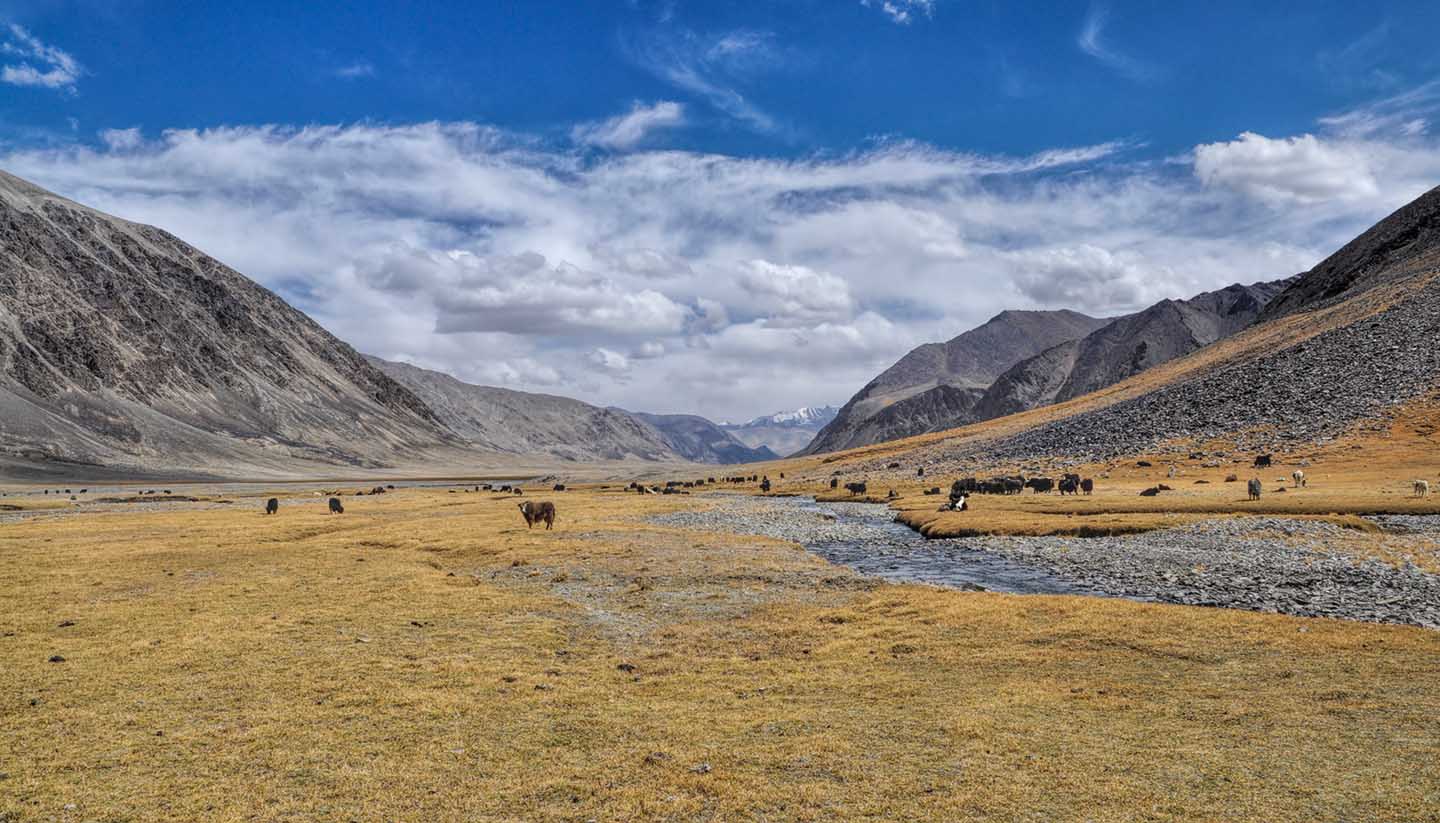
Introducing Tajikistan
About tajikistan.
- Images of Tajikistan
- History, language & culture
- Weather & geography
- Doing business & staying in touch
Plan your trip
- Travel to Tajikistan
- Where to stay
While you’re there
- Things to see & do
- Shopping & nightlife
- Food & drink
- Getting around
Before you go
- Passport & visa
- Public Holidays
- Money & duty free
Book your flights
Tajikistan travel guide
Following in the footsteps of ancient Silk Road traders, modern travellers come to Tajikistan to experience a magical journey across the ‘Roof of the World,’ a land of soaring mountain ranges, deep ravines and high-altitude deserts.
Although Tajikistan is one of the most remote countries in the world, even its most inaccessible nooks host life; the mountains and deserts are home to Kyrgyz nomads, who eke out simple, self-sufficient lives as they have done for generations. Intrepid travellers will endure some of the coldest temperatures on the planet to visit them, but these chilly conditions are tempered by the Kyrgyz’s warm hospitality.
An independent state since 1991, Tajikistan spent much of the last two centuries under Tsarist and Soviet rule. Ethnic Tajiks form the majority of the population, but there are also minority ethnic groups of Russian, Uzbek and Kyrgyz origin – a mix brought about by Stalin’s “divide and conquer” strategy.
Tajikistan’s landscapes are just as dramatic as its political history. In the mountainous west, lofty peaks plunge into deep valleys where villages cling precariously to the cliffs-side above fast flowing rivers. In these settlements, where most of the population are subsidence farmers, any available patch of land is terraced and cultivated with potatoes, cabbage and wheat.
Over in the east, the mountains plateau into a vast, high-altitude desert that looks like the surface of the moon. This is a hostile part of the world, as Marco Polo noted when he travelled through the region. “No birds fly here because of the height and the cold,” he wrote.
Most arrive in Tajikistan via its capital, Dushanbe, one of the prettier cities in Central Asia with its gilded palaces, leafy parks and neoclassical facades. Emerging from the shadows of Soviet rule, Dushanbe is desperate to impress; it boasts the largest teahouse and tallest flagpole in the world, which are, aside from a few museums and markets, about the extent of its attractions.
But Tajikistan isn’t about the destination, it’s about the journey; a journey through history and geography, where warm a welcome awaits those intrepid enough to visit.
143,100 sq km (55,251 sq miles).
8,669,464 (UN estimate 2016).
57.2 per sq km.
President Emomali Rahmon since 1994.
Prime Minister Qohir Rasulzoda since 2013.
Travel Advice
The Foreign, Commonwealth & Development Office ( FCDO ) provides advice about risks of travel to help British nationals make informed decisions. Find out more about FCDO travel advice .
Before you travel
No travel can be guaranteed safe. Read all the advice in this guide and see support for British nationals abroad for information about specific travel topics.
Follow and contact FCDO travel on Twitter , Facebook and Instagram . You can also sign up to get email notifications when this advice is updated.
Travel insurance
If you choose to travel, research your destinations and get appropriate travel insurance . Insurance should cover your itinerary, planned activities and expenses in an emergency.
This advice reflects the UK government’s understanding of current rules for people travelling on a full ‘British citizen’ passport from the UK, for the most common types of travel.
The authorities in Tajikistan set and enforce entry rules. If you’re not sure how these requirements apply to you, contact the Tajik Embassy in the UK .
COVID-19 rules
There are no COVID-19 testing or vaccination requirements for travellers entering Tajikistan.
Passport validity requirements
If you’re visiting Tajikistan, your passport must have an ‘expiry date’ at least 3 months after the date you arrive and have 2 blank pages.
Check with your travel provider that your passport and other travel documents meet requirements. Renew your passport if you need to.
You will be denied entry if you do not have a valid travel document or try to use a passport that has been reported lost or stolen.
Visa requirements
You must have a visa to enter or travel through Tajikistan.
If you overstay your visa, you will not be allowed to leave Tajikistan until you get an exit visa. You can pay for an exit visa at the Ministry of Foreign Affairs Consular Office. You may also get a fine, depending on how long you have overstayed. Exit visas are not available at airports in Tajikistan.
Applying for a visa
Apply online for an e-visa from the Tajikistan Ministry of Foreign Affairs.
Make sure you get the correct type of visa. Once you’re in Tajikistan, you can apply for a visa extension at the Ministry of Foreign Affairs .
Travelling through Tajikistan
You must have a transit visa to travel through Tajikistan on your way to another country. These are usually valid for 3 days. If you need to stay longer, you must get a longer visa from the Ministry of Foreign Affairs once you arrive.
Registering with the authorities
If you are staying in Tajikistan for longer than 10 days, you must register with the Office for Registration of Foreign Citizens (OVIR) located at 5 Mirzo Tursunzoda Street, Dushanbe. Hotels are no longer permitted to complete the registration on your behalf. If you later stay at different addresses, you must register again separately.
If you do not follow the registration procedure, you may not be allowed to leave Tajikistan until your registration process is resolved. This may result in fines or detention. There have been cases where lack of registration has resulted in detention at Dushanbe airport.
Travel permit for the Gorno-Badakhshan Region
You must get a permit, in addition to a Tajik visa, to travel to the Gorno-Badakhshan Autonomous Region. If you’re in the UK, contact the Tajik Embassy to apply for a permit before you travel. If you’re in Tajikistan, contact the Consular Department of the Ministry of Foreign Affairs .
The Tajikistan government sometimes stops issuing permits to tourists at short notice due to security concerns. The Tajik Embassy can tell you whether the government is issuing permits for travel to the Gorno-Badakhshan Autonomous Region.
Travel permit for the Khatlon Region
You must get a permit, in addition to a Tajik visa, to travel to the areas bordering Afghanistan in the Khatlon Region, including Panj and Kumsangir. Apply for a permit from the Consular Department of the Ministry of Foreign Affairs in Dushanbe before you travel.
Vaccination requirements
At least 8 weeks before your trip, check the vaccinations and certificates you need in TravelHealthPro’s Tajikistan guide .
HIV screening
If you plan to stay for more than 90 days, you must show a medical certificate that you’re HIV-free or take a test. FCDO advises against taking the test in Tajikistan due to the poor quality of medical facilities.
Customs rules
There are strict rules about goods you can take into or out of Tajikistan. You must declare anything that may be prohibited or subject to tax or duty.
There is a high threat of terrorist attack globally affecting UK interests and British nationals, including from groups and individuals who view the UK and British nationals as targets. Stay aware of your surroundings at all times.
UK Counter Terrorism Policing has information and advice on staying safe abroad and what to do in the event of a terrorist attack. Find out how to reduce your risk from terrorism while abroad .
Terrorism in Tajikistan
Terrorists are very likely to try and carry out attacks in Tajikistan.
Attacks could be indiscriminate and occur at any time, including in places frequented by foreign nationals, such as:
- transport hubs
- religious sites and places of worship
- sporting and cultural events
- shopping centres and crowded places
Examples of previous significant attacks include:
In 2019, it was reported that 17 people were killed in an armed attack on a Tajik security checkpoint on the Tajikistan-Uzbekistan border. Islamic State Khorasan Province (ISKP) claimed responsibility
There are infrequent incursions by armed criminal and terrorist groups across the Afghanistan Border into Tajikistan, mainly at night. In August 2023, 3 terrorists were reportedly killed by Tajik border forces
Political situation
Avoid any demonstrations or large gatherings of people and remain vigilant in public places. Be alert to any security announcements by the Tajik authorities.
Protecting your belongings
Dushanbe is relatively safe, but there have been occasional muggings and petty crime against foreigners. Take the same precautions you would in the UK.
Rape and sexual assault
There have been cases of sexual assault, including rape, reported to the British Embassy. This includes suspected use of ‘date rape’ drugs targeting foreigners. Alcohol and drugs can lead to you being less alert, less in control and less aware of your environment. You should:
- not leave drinks unattended
- not accept drinks from strangers
- be aware of how much you are drinking
- not accept lifts from strangers or acquaintances at any time
Intimidation at Dushanbe International Airport
There have been cases of harassment by officials at Dushanbe International Airport. This includes requests for payment for allegedly incorrect documentation or other offences. Check with your hotel that your documentation and papers are in order before passing through border control at the airport. If you’re harassed or intimidated, report it to your travel agent or the consular bureau at the airport.
Laws and cultural differences
Tajikistan has a secular constitution. (A secular state claims to treat all its citizens equally regardless of religion.) Most Tajik citizens are Muslims. Some, particularly in rural areas, may be conservative in outlook. Be aware of local traditions, customs, laws and religions at all times.
Personal ID
Always carry a copy of your passport’s photo page, as officials often ask for ID. You can present a copy rather than an original passport if a police officer asks you on the street.
Smoking ban
Although rarely enforced, smoking while walking on the street is illegal and punishable by a fine.
Illegal drugs and prison sentences
Possession and use of drugs is illegal. If found guilty, you could get a lengthy prison sentence in very basic conditions.
Woman travelling alone
Women travelling alone in Tajikistan may receive unwanted attention, harassment or difficulties based on gender. Consider not going out alone at night. See advice for women travelling abroad .
Using cameras in secure areas
Taking photos of anything related to the military or security may get you into trouble with the authorities.
LGBT+ travellers
Same-sex sexual activity is not illegal under Tajik law. However, local attitudes are conservative and the levels of tolerance and acceptance in society may vary, particularly outside the main cities. Take care about showing affection in public. Read more advice for LGBT+ travellers .
Tajikistan is mainly a cash-only economy. Very few businesses accept credit cards and none accept travellers cheques.
Only change money at officially authorised currency exchanges. US dollars are the most widely accepted foreign currency. Euros or Russian roubles are also easy to exchange. It may be difficult to exchange other currencies.
There is an increasing number of ATMs in Dushanbe and other larger towns, but none in rural areas. Most ATMs only accept Visa cards.
Transport risks
Road travel.
If you are planning to drive in Tajikistan, see information on driving abroad .
You’ll need to have both the 1968 version of the international driving permit ( IDP ) and your UK driving licence with you in the car. You cannot buy an IDP outside the UK, so get one before you travel.
Driving standards
Vehicles in Tajikistan are often poorly maintained and driving standards are basic. Petrol stations are rare outside towns and there are no breakdown companies. Make sure you take all you need for your journey and allow for delays. Consider bringing a satellite phone for travel outside towns to use in an emergency. Neighbouring countries may close borders temporarily.
Roads outside the main towns are poorly maintained and often only accessible by 4-wheel-drive vehicles. Conditions are particularly dangerous in spring due to the risk of avalanches and landslides.
Many interior roads are only open in the summer months. It is possible to drive from Dushanbe to the north and Tajikistan’s second city, Khujand, using a tunnel. This road is particularly dangerous in winter due to icy conditions. Drivers can be trapped for a long time if caught in an avalanche due to the remote location.
Flooding in the spring and winter often damages and closes roads in areas of the Gorno-Badakhshan Autonomous Region and other parts of the country. Many roads, including the Pamir Highway, are open but not fully repaired.
In 2022, the UK sanctioned Aeroflot, Rossiya Airlines and Ural Airlines. It is now illegal under UK law for any British national or British company to do business with these airlines. This includes the purchasing of flight tickets.
Extreme weather and natural disasters
Earthquakes.
Earthquakes are a risk in Tajikistan. Most are small and affect remote areas of the country, particularly the east in the Gorno-Badakhshan Autonomous Region. Avalanches and landslides often block roads in the spring and early summer. Learn earthquake safety procedures and follow the advice of the local authorities. The US Federal Emergency Management Agency website has advice about what to do before, during and after an earthquake .
In late spring and summer, there can be seasonal flooding and mudslides caused by melting glaciers. Take care, follow local advice and be aware that conditions can change suddenly.
Heavy snowfall in winter can cause delays and cancellations at airports and disrupt travel, particularly in mountainous regions where there’s an increased risk of avalanches. Take local advice on road conditions during or following severe weather.
This section has safety advice for regions of Tajikistan. It only covers regions where FCDO has specific advice.
You should also read FCDO ’s overall travel advice and safety and security advice .
Tajikistan-Kyrgyzstan border
The land border with Kyrgyzstan remains officially closed.
There is a risk of conflict over recognition of Tajikistan’s border with Kyrgyzstan. There are regular security incidents along the border with exchanges of gunfire.
In September 2022, armed conflict between the Kyrgyz and Tajik militaries resulted in over 100 deaths, including civilians. There was significant destruction of civilian property and infrastructure. Around 140,000 civilians were displaced. There is a risk of further violence and border closures at any time. Do not walk off-road – there are both marked and unmarked minefields.
Tajikistan-Afghanistan border
The land border with Afghanistan is closed. Armed clashes may occur without notice near the border with Afghanistan. Stay alert and be cautious in these areas. Do not walk off-road – there are both marked and unmarked minefields.
Tajikistan-Uzbekistan border
Some border crossings with Uzbekistan are open.
Gorno-Badakhshan Autonomous Region
There is a risk of civil unrest in Khorog and other towns in the Gorno-Badakhshan Autonomous Region. There were serious disturbances in 2021 and there have been violent clashes in and around Khorog since 2022 with casualties. There is an increased security presence. Some roads in Khorog, Rushan and other parts of Gorno-Badakhshan Autonomous Region are temporarily closed. The security situation can change at short notice, with the possibility of further unrest.
If you’re travelling in the region, be alert in public places and check for security announcements by the local authorities.
Border crossings
Tajikistan’s borders with neighbouring countries can close without notice. Land border crossings between Tajikistan and Kyrgyzstan, China and Afghanistan are closed to foreign travellers.
Check with the Tajikistan authorities or the British Embassy before you travel to see which crossings are open.
Tavildara Region
Take local advice in the Tavildara Region of central Tajikistan, as there are minefields dating from the civil war in the mountains.
Medical and rescue facilities are unreliable where they exist at all.
Before you travel check that:
- your destination can provide the healthcare you may need
- you have appropriate travel insurance for local treatment or unexpected medical evacuation
This is particularly important if you have a health condition or are pregnant.
Emergency medical number
Call 03 (non-English speaking) and ask for an ambulance.
Contact your insurance company promptly if you’re referred to a medical facility for treatment.
Vaccinations and health risks
At least 8 weeks before your trip check:
- the latest information on vaccinations and health risks in TravelHealthPro’s Tajikistan guide
- where to get vaccines and whether you have to pay on the NHS travel vaccinations page
The legal status and regulation of some medicines prescribed or bought in the UK can be different in other countries.
Read best practice when travelling with medicines on TravelHealthPro .
The NHS has information on whether you can take your medicine abroad .
Brand name drugs in Tajikistan may be counterfeit.
Healthcare facilities in Tajikistan
Tajikistan has poor medical facilities and a shortage of basic medical supplies. Medical facilities outside Dushanbe are quite basic and in some locations almost non-existent.
Tajikistan has a limited mountain rescue capability. This will be further limited in cases where individuals need rescue in high altitude or where weather conditions do not allow. Weather conditions can change rapidly at short notice, particularly in mountainous and high altitude locations.
FCDO has a list of English-speaking doctors in Tajikistan .
Travel and mental health
Read FCDO guidance on travel and mental health . There is also mental health guidance on TravelHealthPro .
The Foreign, Commonwealth & Development Office ( FCDO ) cannot provide tailored advice for individual trips. Read this travel advice and carry out your own research before deciding whether to travel.
Emergency services in Tajikistan
Emergency services do not speak English.
Ambulance: 03 (103 from mobile phone)
Fire: 01 (101 from mobile phone)
Police: 02 (102 from mobile phone)
Contact your travel provider and insurer
Contact your travel provider and your insurer if you are involved in a serious incident or emergency abroad. They will tell you if they can help and what you need to do.
Refunds and changes to travel
For refunds or changes to travel, contact your travel provider. You may also be able to make a claim through insurance. However, insurers usually require you to talk to your travel provider first.
Find out more about changing or cancelling travel plans , including:
- where to get advice if you are in a dispute with a provider
- how to access previous versions of travel advice to support a claim
Support from FCDO
FCDO has guidance on staying safe and what to do if you need help or support abroad, including:
- finding English-speaking lawyers , funeral directors and translators and interpreters in Tajikistan
- dealing with a death in Tajikistan
- being arrested or imprisoned in Tajikistan
- getting help if you’re a victim of crime
- what to do if you’re in hospital
- if you’re affected by a crisis , such as a terrorist attack
Contacting FCDO
Follow and contact FCDO travel on Twitter , Facebook and Instagram . You can also sign up to get email notifications when this travel advice is updated.
You can also contact FCDO online .
Help abroad in an emergency
If you’re in Tajikistan and you need emergency help from the UK government, contact the British Embassy in Dushanbe .
FCDO in London
You can call FCDO in London if you need urgent help because something has happened to a friend or relative abroad.
Telephone: 020 7008 5000 (24 hours)
Find out about call charges

Book a Hotel
© Columbus Travel Media Ltd. All rights reserved 2024

Tajikistan Travel Guide
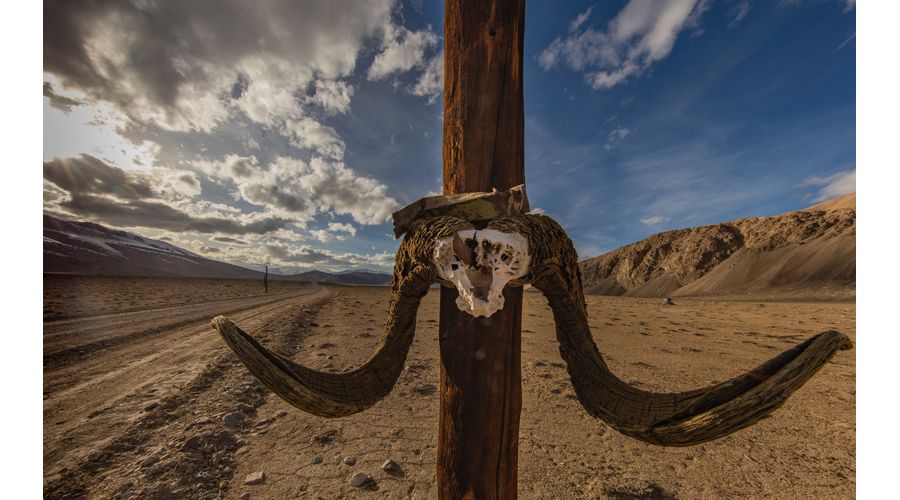
The ex-Soviet Republic of Tajikistan is a truly wild country that you don’t want to miss in your Silk Road journey.
The term ‘predominantly mountainous’ doesn’t do justice to a country where over 90% of the land is upland. This fact of nature has given Tajikistan a precious advantage over its neighbors, namely some of the most inspiring, high-altitude landscape in the world.
Within an hour of Dushanbe lie multi-hued lakes, peaks that beg to be climbed and high passes that thrill even reluctant travelers.
Home to the Pamir range, one of highest mountain ranges in the world, the mountains of Tajikistan attract the most adventurous travelers, especially those wanting to drive the M-41, or Pamir Highway, an impressive road and architectural masterpiece that goes through some of the remotest and most beautiful mountain scenery in Central Asia.
With tourism increasing year by year, the country is daily becoming more prepared to receive international travelers, but for visitors tolerant of a few travelling hardships (outdoor loos, cold water, potholed roads), the country more than compensates with a rare glimpse into life lived on ‘The Roof of the World’.
Use this Tajikistan travel guide, including top Tajikistan travel experiences, tips for travel in Tajikistan, plus tips on staying safe while you are there.
Tourist Information
Tajik, Russian, Uzbek
Somoni (TJS).
Climate and Recommended Time to Visit
The best time of year to visit Tajikistan is largely dependent on what you plan to do. With 300 sunny days a year it won’t be easy to pick a wrong time to visit, although the sweltering temperatures of around 40ºC in the summer months (June-September) don’t suit everybody.
The lower lying cities such as Dushanbe, Khujand, Kulab, and even Khorog can be downright scorching hot in summer.
Winter temperatures between November and February hover around freezing in the capital but can plunge to between -20 and -40º C in the Pamirs. Some mountain passes are closed at this time. Winter can be a great time to visit for those wanting to ski Tajikistan’s nearly untouched mountains
The best seasons are spring (March – May) and autumn (September-October). Spring is mild but wet and avalanches and landslides can leave roads impassable. Autumn is also mild and is perfect for trekking.
Fall is the best time to visit cities as temperatures start to cool down in September and steadily drop through October. Trekking is still possible and quite beautiful in fall, although October can get quite cold toward the end of the month and snow can be expected at higher elevations.
Top Attractions and Must-See Sights
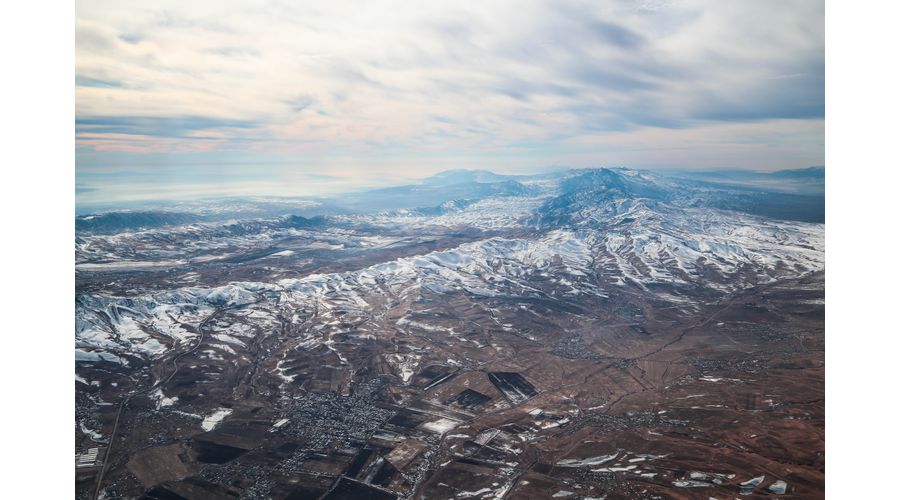
The Pamir Highway (M41)
The Roof of The World, or ‘Bam-i-Dunya’ as the Pamiris call it .
The Pamir Highway is the most popular reason people come to Tajikistan. This is the mother of all road trips.
The Pamir Highway actually extends from Mazar-i-Sharif, Afghanistan, makes a quick ben into southeastern Uzbekistan, traverses Tajikistan from west to east to north and then terminates in Osh, Kyrgyzstan.
The main stretch of the Pamir Highway most tourists travel on is between Dushanbe and Osh. This road trip will take you through high altitude passes, Pamiri and Kyrgyz villages, jagged mountains, crystal clear lakes, and even give you glimpses into the Pakistani Hindi Kush and rural northern Afghanistan just a mere few meters across the Panj River. It also provides access to many treks into the Pamirs ranging in difficulty from easy to hardcore mountaineering.
Expect to pay in the range of 0.70¢-0.90¢ USD per kilometer for a Landcruiser or Pajero with driver.
The cheapest way to do this trip would be, of course, cycling or walking if you’re really determined.
If a private 4×4 even split amongst travelers is out of your budget and you aren’t up for a looooong bike ride or walk, the next cheapest option is to go by means of shared taxis. Shared taxis will be a fraction of the cost of a Landcruiser of Pajero.
The Wakhan Valley
Many include the excursion through the Wakhan Valley as an alternative route on their Pamir Highway trip. From Khorog, rather than follow the true M41 through the Ghunt Valley toward Jelondy and Bulunkul, you will head south to the beautiful Tajik Wakhan Valley and meet back up with the M41 via the Khargush Pass near Bulunkul.
The Wakhan Valley follows the Afghan border through some truly amazing scenery with glimpses of the ice-capped Hindu Kush forming the natural border of Afghanistan and Pakistan across the Pamir River, which forms the natural border between Tajikistan and Afghanistan.
You will pass through the picturesque villages of Ishkashim, Namadgut, Darshai, Yamchun, Yamg, Vrang, Zong, Langar, and finally Ratm as you travel along the valley.
At every turn there’s sights your eyes will be glued to, but to name a few places to see in the Wakhan there is: Garam Chashma ( hot spring ), Qaaqa Fortress, Darshai Gorge, Yamchun Fortress, Bibi Fatima ( hot spring ), Vrang’s Buddhist Stupa, and so many more.
This is the bustling capital of Tajikistan and a likely entry point for those flying into the country. There are a number of attractions around the city including: The World’s Tallest Flagpole, The World’s Largest Teahouse, The Green Bazaar, Rudaki Park, and more.
This is the largest city in the GBAO region and home to most of Tajikistan’s Ismaili population- Ismailis are Shia and known for their very progressive interpretation of Islam. Khorog is a great jumping off point for many adventures in the Badakhshan, making arrangements if you plan to travel across the border into Afghanistan. Make sure to spend an afternoon at Khorog’s Central Park, where you’ll find a large swimming pool, carnival, walking paths, a couple chaikhanas, and home to the PECTA office.
The Tajik Fergana Valley
Khujand is the main city in the Tajik Fergana Valley with enough sites to keep you busy for a couple days. Make sure to visit the bustling Panshanbe Bazaar, Sheikh Massal ad-Din Mausoleum & Complex, the ancient Citadel & Kamoli Khujandi Park, and the tallest Lenin Statue still standing in Central Asia.
This large lake sits smack in the middle of Tajikistan and only exists because of disaster. In 1911 a magnitude 7.4 earthquake shook down a mountain face that crushed the villages of Usoi and Sarez, naturally creating the Usoi Dam. This dam blocked off the Murghab River and began to fill the valley.
This is a beautiful lake in remote Tajikistan, but you should have a guide and permit before visiting.
Just north of the Ak-Baital Pass is Karakul ( sometimes spelled Qarakul ), Tajikistan’s largest lake sitting alongside the village of the same name. Karakul is believed to be a crater formed by a meteor impact about 10 million years ago, that is now a salt lake, but still freezes in the winter.
Attempts are being made to declare Karakul the highest navigable lake in the world, beating out Lake Titicaca in Peru/Bolivia.
Bartang Valley
The Bartang Highway is a wild adventure for anyone wanting to explore into the remote Bartang Valley in the Western Pamir. The most popular excursion along the Bartang Highway is the short and gentle trek to the beautiful village of Jizeu. From KM 23, cross the suspension bridge across the Bartang River and follow the trail for about 2 hours to reach the lower village of Jizeu.
The trek to the wildly remote Khafrazdara Valley & Grum Grijmailo Glacier begin from the quaint village of Pasor, as well as the start of the journey to Lake Sarez from the village of Barchidev.
Other stops along the Bartang Highway include: trekking around Basid & Badara, the adorable village of Savnob, going beyond Jizeu into the Ravmed Valley, and more.
Zorkul is a large lake and nature reserve that sits right on the Afghan border near to the Khargush Pass and Keng Shiber. North of Zorkul back towards Shakhty are grand Neolithic cave paintings. There are several treks that can be done in the Zorkul area.
Alichur is a village of several white-washed rectangular buildings just off the highway of predominantly Kyrgyz families. There are several guesthouses here marked with signs as well as stolvonaya- meaning canteen. The locals in Alichur are really friendly and will likely come hang out while you wander the village. There are many yurts that sit just off the highway around Alichur and along the highway nearby, and you’ll likely even see people out herding yaks in the pasture.
As far as must-see sights in Alichur there aren’t many. There is a mosque in the middle of the village, and there are a few treks that can be started from Alichur to Zorkul and toward the Bazardara Valley.
Madiyan Valley
Madiyan Valley is reachable from the Pamir Highway, where you’ll head west down a dirt track just south of Murghab. There is a settlement named Ak-Tal in the valley that has lush green sceneries and trees along the river. Continuing deeper into the valley you’ll eventually reach Madiyan hot springs, but will require you to cross the river to reach them.
For those looking for a trek, you can trek up and over the Gumbezkul Pass to connect with the Pshart Valley that is located just north of Murghab. Madiyan Valley sits within the Tajik National Park, so you are supposed to have a permit on you.
Best Hotels In Tajikistan
Lotte palace dushanbe.
This unassuming hotel with a colorful exterior is 5 km from the National Museum of Tajikistan and 10 km from Dushanbe Airport.
The casual rooms, some with balconies, offer free Wi-Fi and flat-screens, as well as desk areas and minifridges. Upgraded rooms add whirlpool tubs. Stylish suites provide separate living rooms.
Free perks include parking, an airport shuttle service, and breakfast, served in a casual restaurant. Other amenities include an indoor pool and a gym, plus sauna and steam rooms. There’s also a quirky lounge, a garden with pagodas, and meeting space, plus karaoke. Loaner bikes are available (fee).
Hilton Dushanbe
Located in Tajikistan’s capital city of Dushanbe, Hilton Dushanbe hotels’ location on Ayni Street is just 7 minutes from the airport and within easy reach of government offices, businesses and popular attractions. Experience exceptional hospitality, spacious rooms and upscale amenities within walking distance of significant historical sites, beautiful monuments and tranquil gardens and parks.
Hotel Shumon
Located in the heart of the commercial and business part of the city. You will be surrounded by a warm and pleasant atmosphere from the moment you arrive to the hotel. Hotel Shumon staff will endeavor the best efforts to make you feel comfortable in the elegantly decorated rooms, and your stay at the hotel will be unforgettable!
Hotel Atlas
Whether you’re a tourist or traveling on business, 4 star ATLAS Hotel is a great choice when staying in Dushanbe. Nestled in the heart of Dushanbe, it is well connected to all the city’s business and top tourist destinations.
The atmosphere in the hotel is warm and welcoming with an air of elegance and charm. Supermarkets are accessible to the hotel. Banks and foreign exchange facilities are within reach. The 24-hour staff will get you anything and everything you need, be it chocolates with your coffee or ticket for Opera ballet.
Best Restaurants In Tajikistan
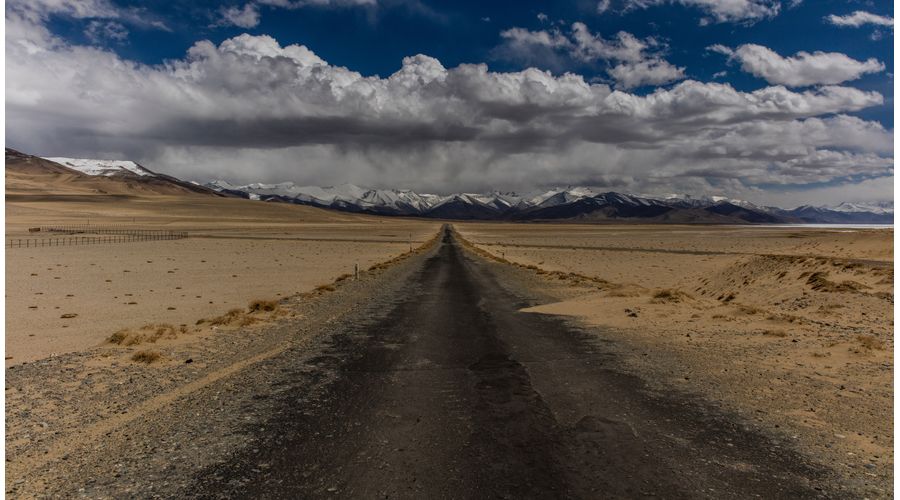
Al Sham features some of the very best Arabic and Middle Eastern cuisine in the capital. The interior features wood-crafted walls with traditional Arabic characters etched into them, while the exterior offers outdoor terrace seating. Arabic music plays in the background while diners enjoy a variety of meze , grilled meats and kebabs. Belly dancers often provide entertainment in the evenings. Diners here can expect to experience true Arab hospitality, from the service to the cuisine.
Chaykhona Rokhat
Known as a Dushanbe classic, Chaykhona Rokhat was constructed in 1958, when Tajikistan was still a republic of the Soviet Union. The restaurant is a combination of Soviet-era and grand-Persian style influences, and is a favorite spot for drinking tea, a locally brewed Sim-sim beer, or indulging in some local cuisine.
Sim-Sim Restaurant
Sim-Sim is the locally brewed Tajik beer and the brewery’s restaurant is located just outside the main drag of the city center. Traditional dishes are served here including plov or osh – pilaf rice – with shredded carrots or turnips and pieces of meat, usually lamb or beef. Diners can enjoy Sim-Sim and smoke hookah on the patio overlooking Varzob River while listening to local tunes.
How to Stay Safe in Tajikistan
In summer 2018, 4 cyclists traveling across Tajikistan were murdered in Danghara , an area relatively close to Dushanbe. ISIS claimed the attack.
That accident triggered a big concern among many travelers and the Tajiks are concerned that it might affect their tourism negatively.
This unfortunate event, however, has been a one-off thing and we think that it shouldn’t affect your decision to travel to Tajikistan.
The corruption in Tajikistan is a well-known fact and some of these police officers also try to rip off foreigners but luckily, as tourists, there is not much they can do to you unless you are credulous and believe their lies.
Common scams include policemen telling you that there is a problem with your Tajik visa or making you pay an entrance fee to a place that, obviously, doesn’t require an entrance fee.
Aside from that, Tajikistan is a safe country with very low crime rates. So stay alert and if possible, travel with a local.
Our articles may contain affiliate links. We may get paid a small commission when you use our links with no additional cost of your part! See our Privacy Policy page for more details.
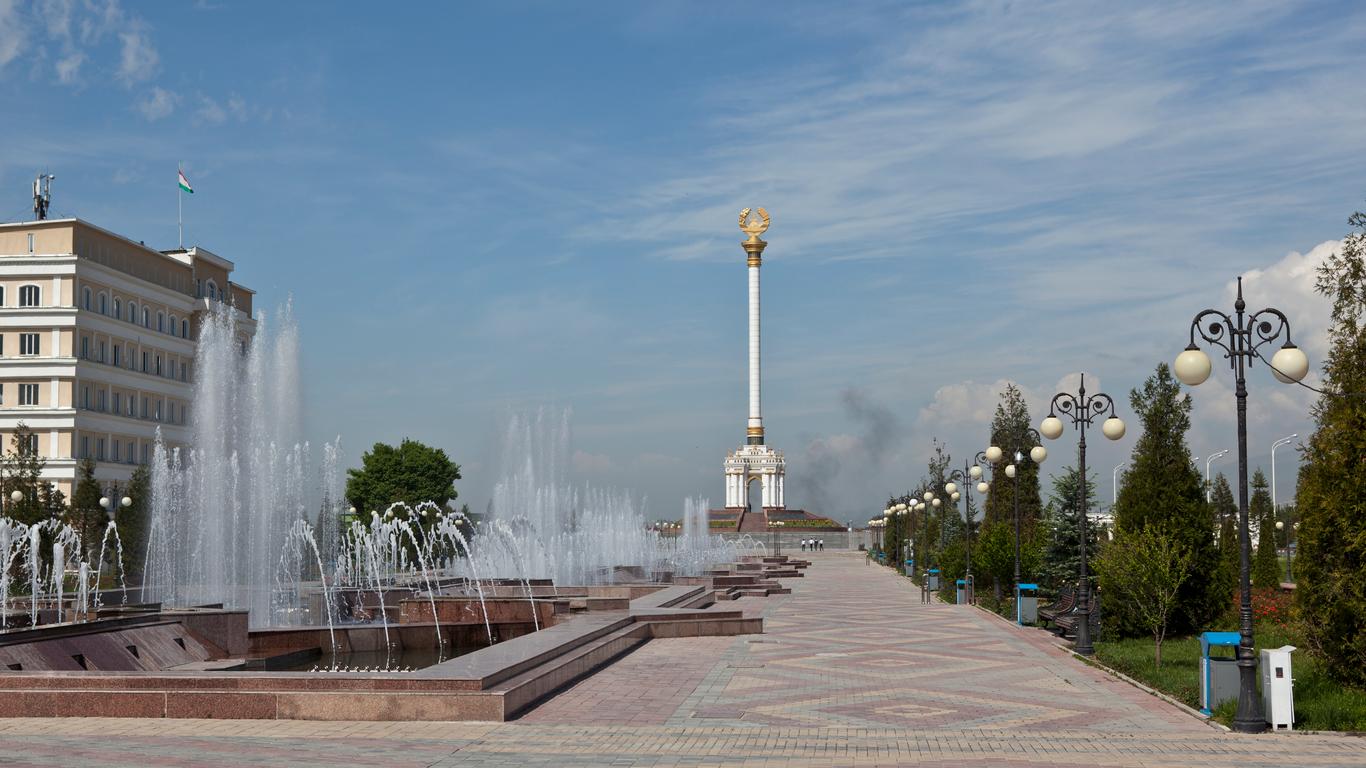
Tajikistan travel guide
Tajikistan tourism | tajikistan guide, you're going to love tajikistan.
Mostly mountainous, Tajikistan is the country of dramatic landscapes, deep-blue lakes, and secluded villages.
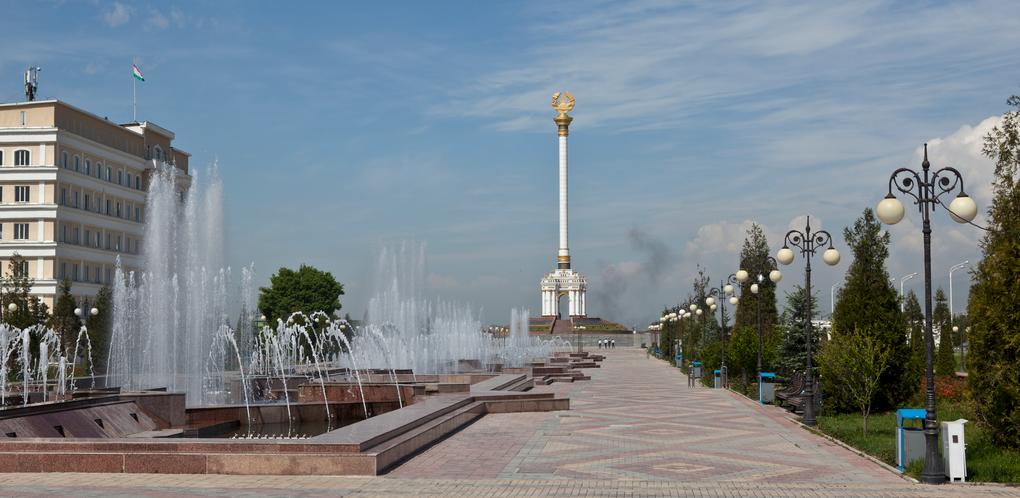
What to do in Tajikistan
1. stay with locals.
One of the best ways to experience authentic Tajikistan is by staying with a local family at one of the many remote villages. Firm believers in the power of cultural exchange, several on-site NGOs list the homestays where tourists can spend a few days.
2. Go on a Regatta at the Roof of the World
Not for the faint of heart, this recurring sports event takes place every year near the Karakul village. The regatta includes kite-surfing, kayaking, and rowing under extreme weather conditions.
3. Experience the Bazaars
Overflowing with ripe, colorful fruits in the summer, the bazaars in Tajikistan are as authentic as it gets. Other must-buy items include local handicrafts.
4. Explore Dushanbe
The capital city of Tajikistan is the perfect place to explore before heading out to the mountains if traveling to Tajikistan for the outdoors activities.
5. Don't Leave Without Eating Qurutob
Qurutob is Tajikistan's national dish, a refreshing mix of sautéed vegetables (tomatoes, onions, cucumbers, carrots), yogurt, and spices.
When to visit Tajikistan
The best time to visit Tajikistan is from June to September. Although it will be hotter in the cities, temperatures are milder in the mountains and it's the best time of year for hiking.
How to Get to Tajikistan
Entry requirements.
Nationals from Russia and former Soviet Union countries don't need a visa to enter Tajikistan, as long as they're not staying for more than three months.
Citizens from all other countries can apply for an e-visa before traveling to Tajikistan. Although border control officers can check visa validity online, it's best to keep a print out of the document on hand.
Tajikistan is served by two international airports: Dushanbe International Airport and Bokhtar International Airport. The first is the one with the most international connections, receiving regular flights from several cities in Russia, Istanbul, Frankfurt, and Dubai.
When traveling to Tajikistan by train, keep in mind you'll need transit visas for all the countries you'll be traveling through (Uzbekistan, Turkmenistan, and Kazakhstan). There are regular trains from Moscow to Tajikistan and a trip takes about 5 days.
Popular airports in Tajikistan
Popular airlines serving tajikistan, where to stay in tajikistan.
In addition to homestays where visitors can stay with local families in remote villages, Tajikistan offers a good selection of mid-range international chain hotels, especially in the cities. Meals are usually charged separately.
Where to stay in popular areas of Tajikistan
Most booked hotels in tajikistan, how to get around tajikistan, public transportation.
Most towns and cities in Tajikistan are served by a somewhat reliable network of minivans and shared taxis. There are no other forms of public transportation in the country, with travelers preferring to rent a car to get around.
Shared Taxis
While the network of long-distance buses and minibuses is under expansion, locals and travelers rely on shared taxis to travel from the capital Dushanbe to other destinations in the country.
Most travelers opt to rent a car with a driver or hire a shared taxi for as many days as needed. Roads aren't always in great condition, and this is a safe and convenient way to get around by car.
Travelers looking to rent a car and drive around Tajikistan themselves must be at least 21 years old, have a valid driver's license issued by their country of origin and show their passport. Payments are usually made in cash, but ask ahead if credit card payments are accepted.
The Cost of Living in Tajikistan
In Dushanbe, it's easy to pay with credit cards, but elsewhere, cash is the preferred mode of payment. ATMs are usually widely available in the capital and the main cities up north. If traveling to remote locations, make sure to withdraw as much cash as needed before the trip. Shopping for milk, bread, rice, and some vegetables at a supermarket can cost around 67 TJS (6.90 USD). An inexpensive meal will cost around 30 TJS (3 USD) while a meal for two at a mid-range restaurant is about 110 TJS (12 USD).

The Ultimate Pamir Highway, Tajikistan Travel Guide (2024)
- Last Updated: February 5, 2024
Everything you need to know about travelling the Pamir Highway in Tajikistan. A detailed travel itinerary, how to book a car and driver, things to do along the way, where to stay and how much it will cost.
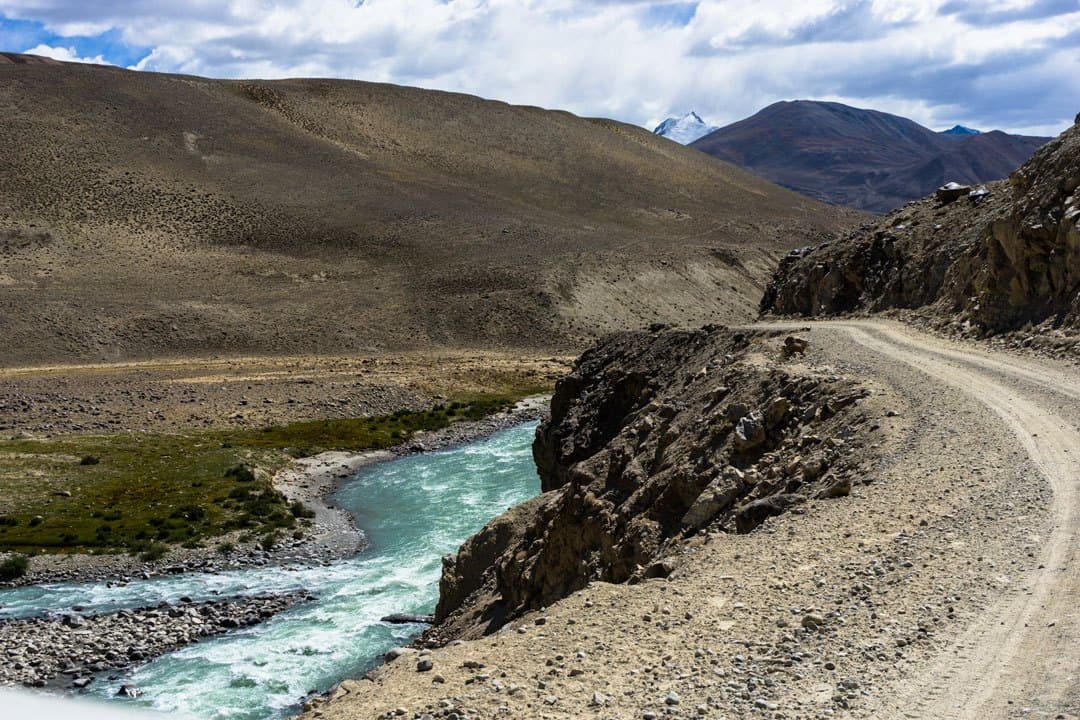
Basketball-sized stones rained down on us from the roadside cliffs above. The earth shook violently, and the sound of exploding dynamite echoed down the valley.
We stopped in our tracks and stared fearfully across the narrow Pamir River. 30m from us was Afghanistan’s Badakhshan province, which was currently under the attack of Taliban rebels.
We looked at Mohammed and waited for his instructions. Our guide simply laughed. “The Afghans are building a road.”
The Pamir Highway is one of the world’s greatest road trips . Unofficially starting in Mazar-e-Sharif in Afghanistan and unofficially ending in Osh in Kyrgyzstan, this captivating route was once part of the historic Silk Road.
Weaving between soaring mountains and along sprawling desert, the trek that today makes up the majority of people’s exploration connects Osh to Khorog, a small town in the heart of the Pamir Mountains.
Highway M41 rises over the second highest border crossing in the world and hits the border of Tajikstan and Afghanistan before cutting in on a direct route to Khorog.
At this point most people continue along the border and into the infamous Wakhan Valley , flanked by the Pamir Mountains on one side, and the Hindu Kush on the other.
BREAKING NEWS: Registrations are now open for our NOMADasaurus Pamir Highway and Tajikistan Tour in 2024!
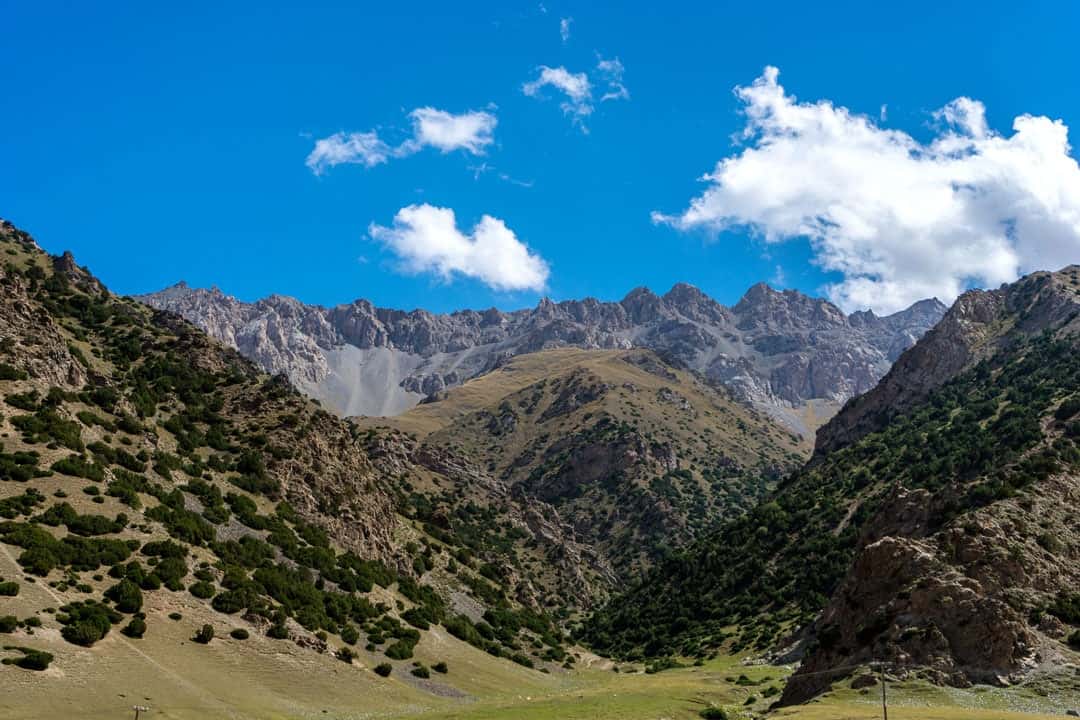
No images or stories can prepare you for just how beautiful the Wakhan Corridor is. For as many days as you care to take you traverse the fine line between two misunderstood nations.
Tajikistan is more remembered for its civil war and as a major heroin trade route than anything else. The problems of Afghanistan are well-documented and often overstated.
Still in this narrow passage all one can think about is how surreal its scenery is.
We spent 7 days travelling along the Pamir Highway in September 2015, renting a 4×4 in Osh with two other travellers. This is our route, tips and stories from our amazing road trip along the roof of the world.
Table of Contents
Getting a Tajikistan Visa and GBAO Permit
Public transport, hitchhiking the pamir highway, things to do in sary moghul, where to stay in sary moghul, things to do in karakul, where to stay in karakul, things to do in murghab, where to stay in murghab, things to do in bulunkul, where to stay in bulunkul, things to do in langar, things to do in yamg, where to stay in yamg, why we didn’t stay in langar, things to do in yamchun, where to stay in yamchun, things to do in khorog, where to stay in khorog, exchanging money on the pamir highway, camping along the pamir highway, extending your pamir highway adventure, pamir highway from dushanbe or khorog.
- Getting The Tajik Visa And GBAO Permit
- How To Travel The Pamir Highway
- Day 1 – Osh To Sary Mogol
- Day 2 – Sary Moghul To Karakul
- Day 3 – Karakul To Murghab
- Day 4 – Murghab To Bulunkul
- Day 5 – Bulunkul To Yamg
- Day 6 – Yamg To Yamchun
- Day 7 – Yamchun To Khorog
- Budget For The Pamir Highway
- Camping Along The Pamir Highway
- Extending Your Trip
- Travelling From Dushanbe Or Khorog
When we travelled through Tajikistan we had to acquire a visa in advance. In addition to this if you want to travel along the Pamir Highway you must also get a permit for the Gorno-Badakhshan Autonomous Oblast (GBAO) region.
We did this at the embassy in Bishkek in less than a day for $62 ($60 for our 45-day double entry Tajik visa, and $2 for our GBAO permit for the same length of time).
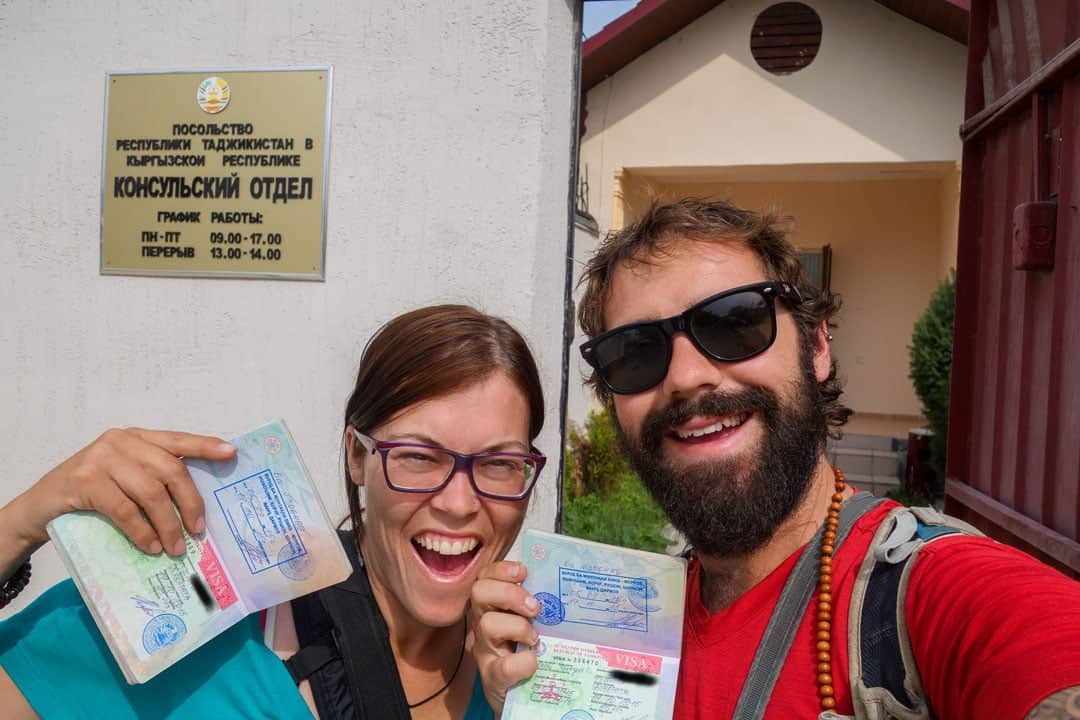
However we now have good news! Most people can now obtain an e-visa for Tajikistan, including the GBAO permit! The cost is US$70 for a 45-day single entry visa that can be used at all border crossings and international airports.
Click here to apply for your Tajikistan e-visa.
Note: If you want a double entry visa (to travel into Afghanistan’s Wakhan Corridor for example) you still need to apply at the embassy. We recommend the one in Bishkek .
How to Travel the Pamir Highway
There are a couple of ways to travel the Pamir Highway, and all of them have their ups and downs. It really depends on your travel style and budget.
BIG UPDATE – We originally used Osh Guesthouse to book our 4×4 Pamir Highway Tour, but during our latest trip to Kyrgyzstan talking to tourism directors we were informed about a new company which has better vehicles, experienced drivers and can organise a perfect itinerary. In fact Osh Guesthouse approached them this year to partner together, they are that good. For that reason we now recommend you to get in contact with Talant from Visit Alay to book your trip along the Pamir Highway. He speaks perfect English and is passionate about delivering a great experience. He has also been trained by USAID in tourism product development, which is the organisation we worked with from 2016-2020 in Kyrgyzstan, Uzbekistan and Tajikistan. You can pre-book the vehicles and drivers now before you arrive in Bishkek, Osh or Dushanbe, which saves a lot of headache.
This is the option we went with and recommend. Having your own transport and driver allows you to go at your own pace, stop for photos and breaks and have a bit of comfort as well.
We organised our 4×4 rental from Osh Guesthouse in Osh, Kyrgyzstan. This place has become quite famous for helping travellers plan their Pamir Highway road trip, and the owner is friendly and willing to provide assistance.
He also speaks great English and has all the connections sorted, so even if you aren’t staying there it’s worth dropping by to speak to the owner.
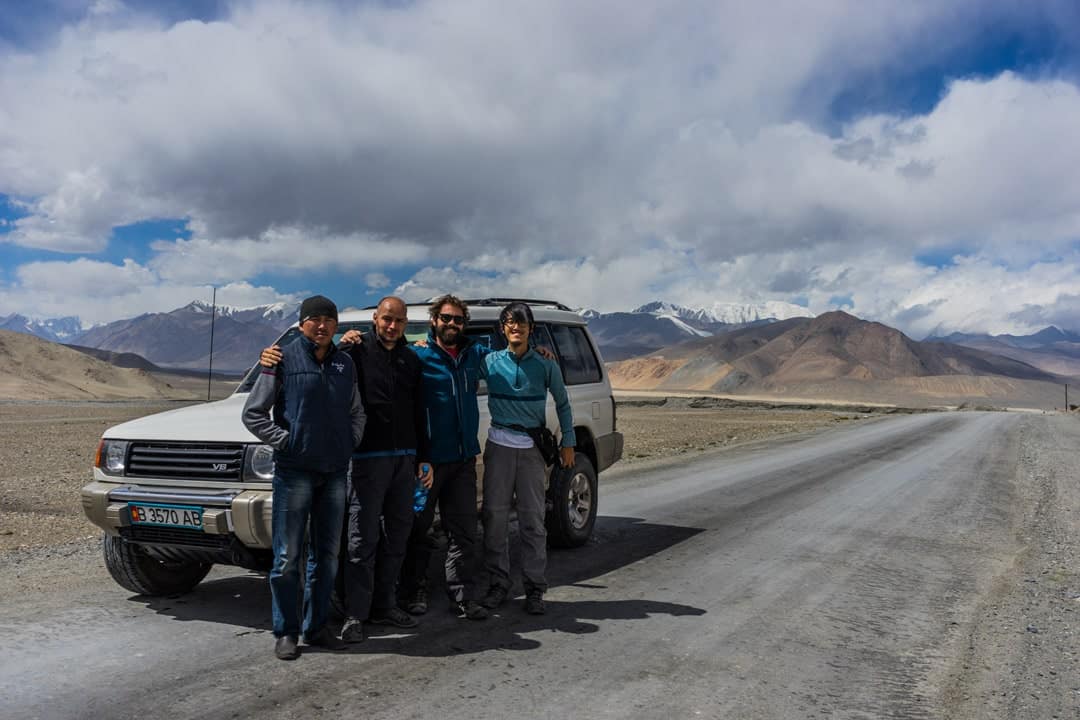
When renting a 4×4 you will be charged per kilometre. This sounds pretty crazy, and to be honest it is. But that’s just how it works down here. You also pay a small daily stipend for your driver.
You will plan out your route (distances are already known) and any side trips you want to take in advance. Any additional kilometres driven will be charged extra, and must be paid for in cash directly to the driver.
You must also pay for the driver to return to Osh, charged at a lower rate if you wish to exit in Khorog or Dushanbe (unless he happens to be from Khorog or Dushanbe).
If you don’t have a group of 4 people, we recommend putting your name on the board in Osh Guesthouse saying you are looking for extra people to join you on the Pamir Highway. This will help keep your costs down. You can also do a call out on the Caravanistan forum .
One of the guys who we travelled with had actually been in Osh for a week already waiting to find people to join him on the trip.
Unfortunately every time a group came in they were already a 4, so he had to bide his time until he could find more travellers.
This isn’t always the norm, but something to keep in mind if you are showing up in Osh and expect there to be hundreds of people to jump in with.
Of course if your budget allows you can go by yourself or as a 2 or 3. This is totally up to you.
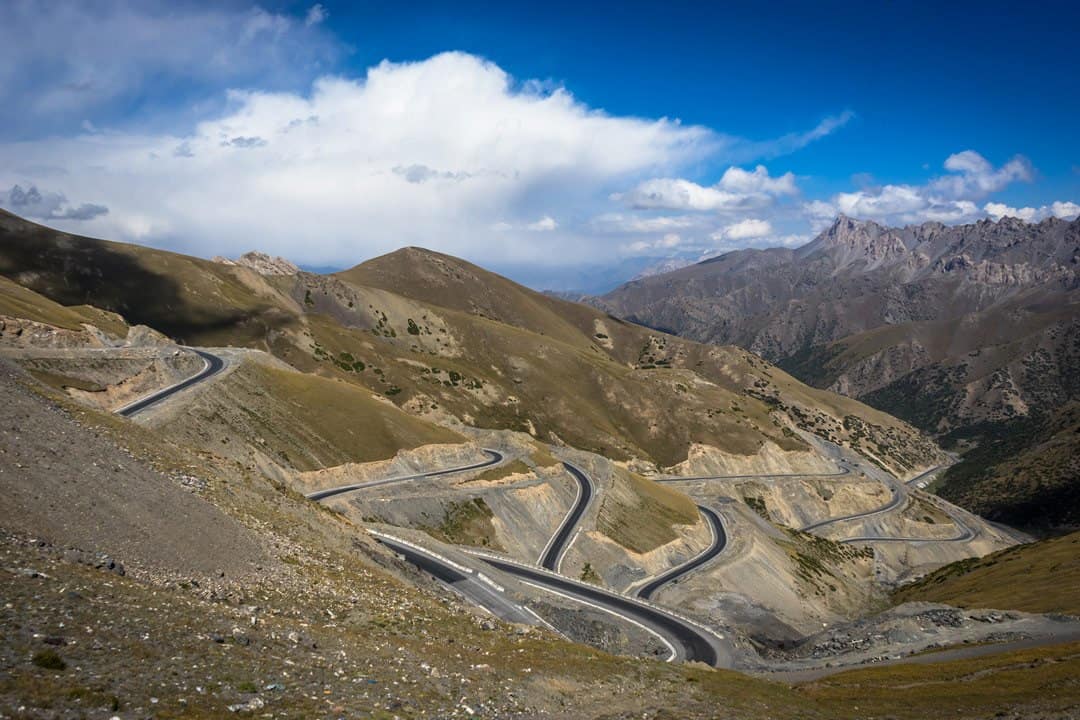
This is actually one of the worst ways to travel the Pamir Highway, but completely doable if on a tight budget.
Transport isn’t comfortable or regular from Osh to Khorog, and you can expect to spend a lot of hours crammed into a dilapidated marshrutka bouncing over horrible roads staring out of a closed, dirty window. But it’s all part of the adventure, right?
Public transport on the Pamir Highway is definitely possible if you’re more interested in the scenery outside the window as opposed to the side adventures that can be had along the way.
You can get a minivan from Osh to Murghab in one day, and then take local rides into the Wakhan Corridor. However if you do this we highly recommend you split the trip from Osh to Murghab into two days, with a night in Sary Tash, due to the huge rise in elevation.
It is very possible to get altitude sickness, as you’ll be going from around 1000m up to 4655m in one day.
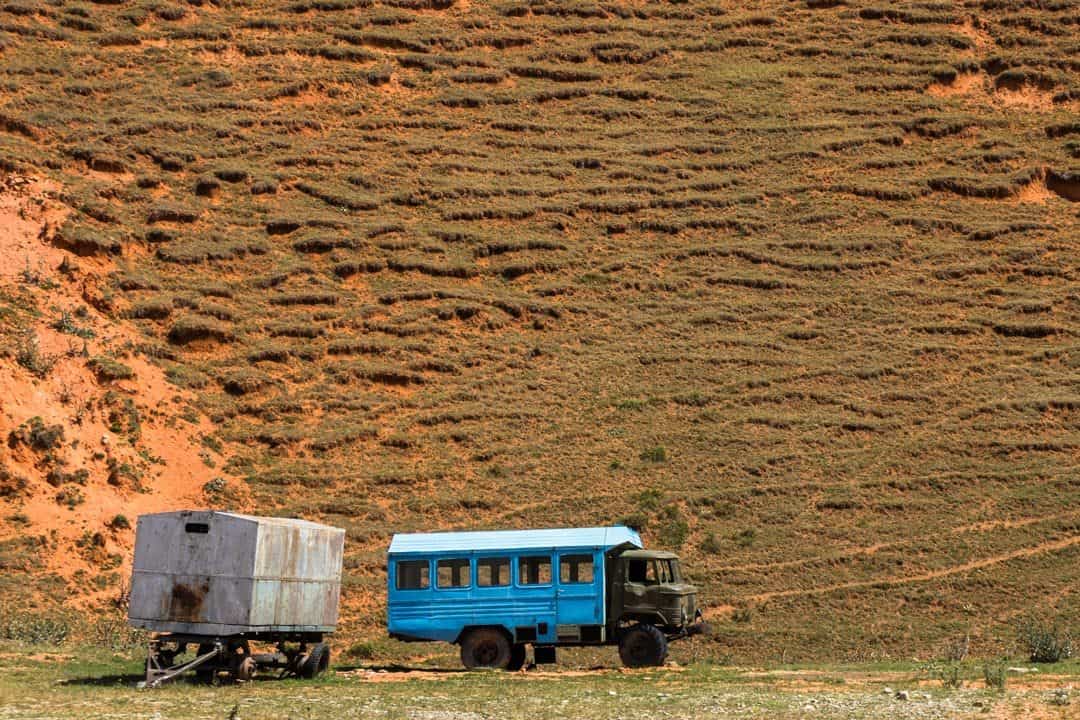
Absolutely doable, and we met quite a few people hitchhiking. One thing to keep in mind is that once you enter the Wakhan Valley most of the traffic will be from people who have rented vehicles, tours or shared taxis – not the kind of people who will pick up some hitchhikers for free
That being said with patience and persistence you can find rides to get you hitchhiking the Pamir Highway and Wakhan Valley.
If you have your own car or motorbike self-driving the Pamir Highway is probably the absolute best experience you can have!
The roads are horrible and the going is slow, but having the time to go at your own pace is something you will really relish.
Obviously the chances of picking up a decent car or motorbike in Central Asia isn’t huge, so if you’re considering this option you probably will be looking at bring your own vehicle from Europe.
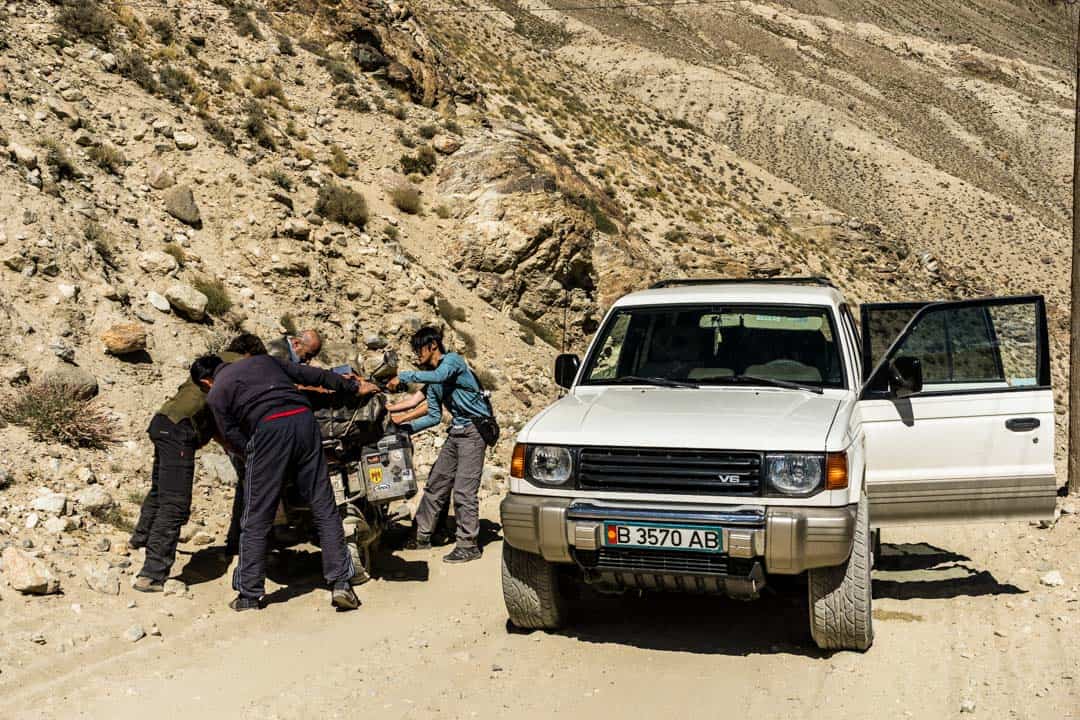
This is it – the Holy Grail for cycle tourists. The second highest international road in the world and some of the most challenging and beautiful scenery imaginable.
We lost count of the number of cyclists we saw peddling the Pamir Highway, and almost all we had met after they had completed it said it was one of the best experiences of their lives.
We are not cycle tourists , so can’t give advice on this. But definitely check out Crazy Guy On A Bike for some great tips about it.
This is the most expensive option for travelling the Pamir Highway, but it might also be the best (depending on your point of view).
There are quite a few companies that offer Pamir Highway tours, and these are all in excess of a few thousand dollars. The main benefits are you get a newer, comfortable and reliable vehicle, an English-speaking guide and all the logistics are covered for you, so you can literally just focus on taking epic photos and soaking up the culture.
If it’s in your budget or you’re the kind of person who doesn’t like landing in a foreign country without everything pre-planned a group tour on the Pamir Highway is a good choice.
But in our experience you can do it much, much cheaper and get the exact same experience by doing it yourself .
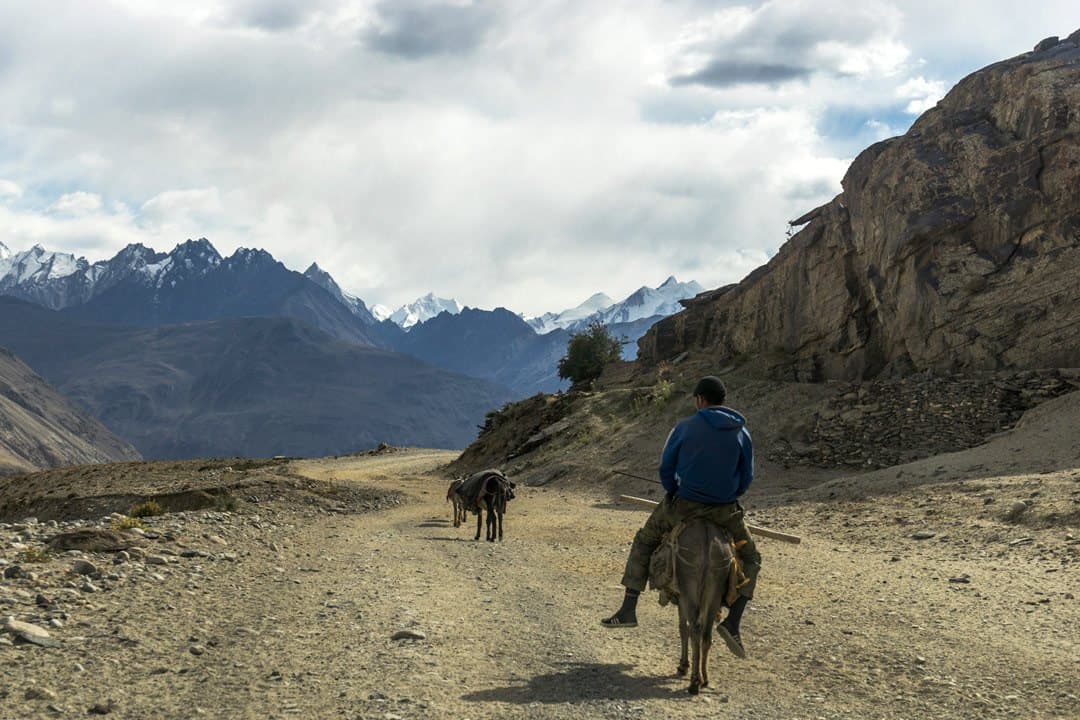
Day 1 – Osh to Sary Mogol
Starting our seven-day adventure from the Kyrgyz city of Osh, our driver Mohammed picked our group of four up in his Mitsubishi Pajero and headed towards the Tajikistan border.
It only took a few hours from Osh before the landscape changed from craggy fields to steep alpine gorges. The famed Pamir Mountains began to rise all around us; speckled at first, then gradually becoming more dramatic.
At the border town of Sary Tash, where one road leads to China and the other to Tajikistan, we took a detour and instead stopped off in Sary Mogol for the night.
Peak Lenin stood 7134m tall in the distance, its permanent snow-capped summit looking like a water painting in the afternoon sun.
Mohammed dropped us at the CBT Guesthouse and we wasted no time in exploring the rugged Soviet-esque village.
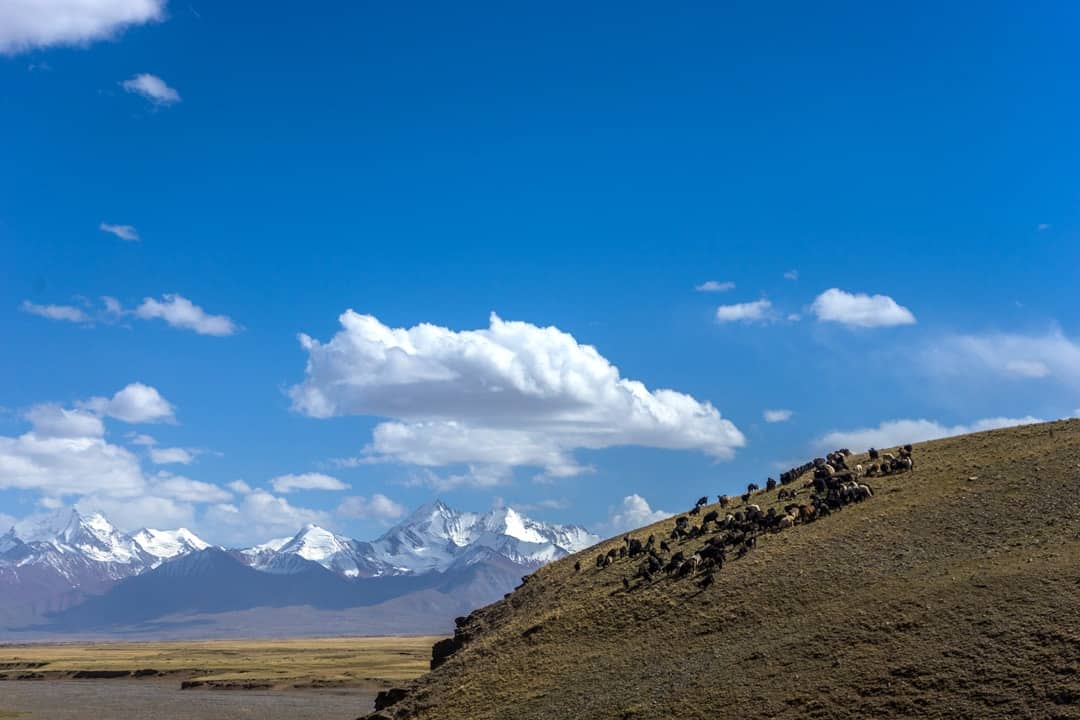
Despite being a popular stopover for trekkers and alpinist who wish to summit Peak Lenin, our presence generated an excited interest with the young community.
Kids and adults alike would call our greetings from their windows and men would stop to ask us where we were from.
Passing a game of football between some local children, we were eagerly recruited and took part in a 30-minute match in a dirt yard.
Abandoned cars and trailers were scattered throughout the village – a sight that would become common along the Pamir Highway.
Before night fell we returned to the guesthouse for a large vegetarian meal and fell asleep on the floor, surrounded by other travellers and trekkers just as thrilled at being in such a beautiful part of the country.
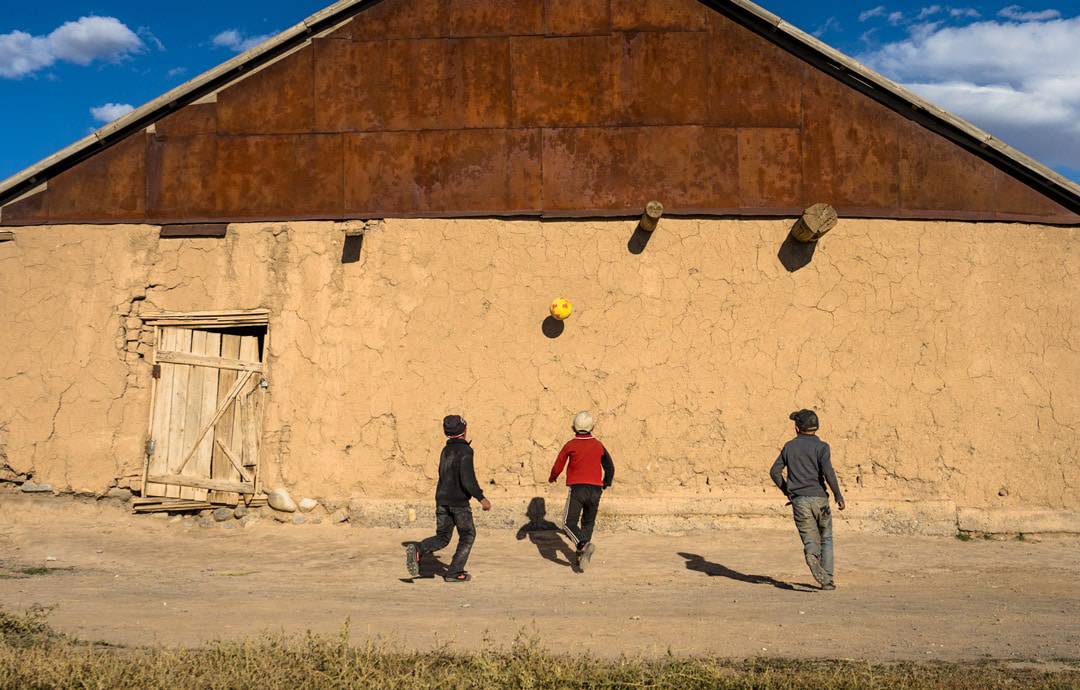
There aren’t a lot of things to do in Sary Moghul itself, but it acts as an amazing launchpad for some of Kyrgyzstan’s best adventure activities.
For those who are experienced in high-altitude trekking, a summit attempt of Peak Lenin is perhaps the most incredible opportunity in the country.
This is one of the easiest 7000m+ peaks in the world, and besides an immense level of fitness and stamina, no advanced mountaineering skills are required.
Don’t be lured into a false sense of security though – it is still a very dangerous hike if you aren’t properly prepared! Consider going on a guided tour (you should already know if you think you could tackle this on your own).
Sary Moghul also acts as a great base for trekking in the surrounding mountains, and organising horse riding adventures. Check with the CBT Guesthouse for routes, ideas and information.
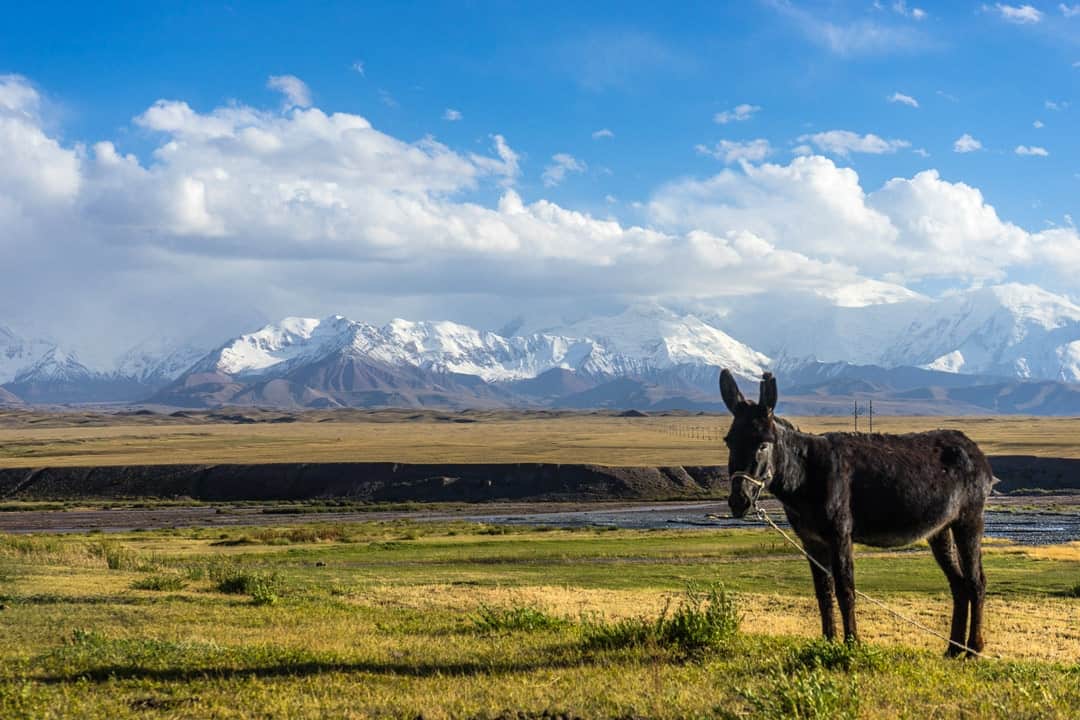
We stayed at the CBT Guesthouse and enjoyed it. It was the most expensive place along our Pamir Highway road trip, but it was quite high quality.
For US$20 per person we got a night’s accommodation, a large vegetarian dinner and a typical Pamiri breakfast (bread, jams, tea, etc).
We slept on a thin mattress on the floor with about 15 other people in the room. If you want to camp they also have places to pitch your tent.
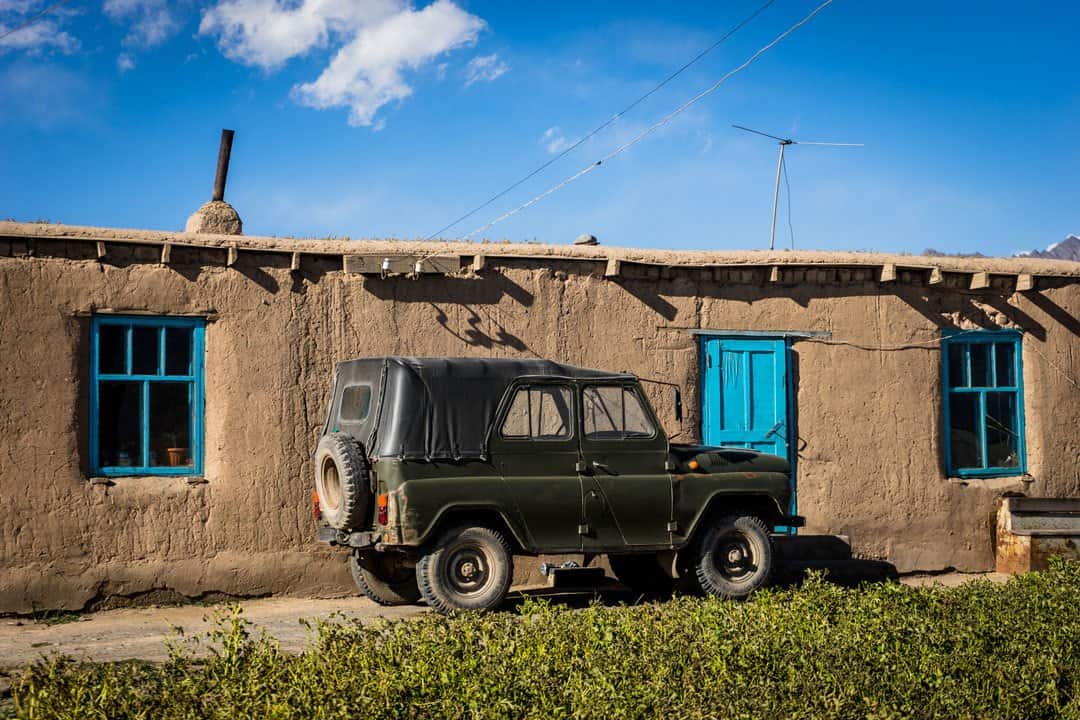
Day 2 – Sary Moghul to Karakul
Morning came quickly and we set off with Mohammed towards the international border. Exiting Kyrgyzstan was a simple affair, providing that the correct ‘fees’ were paid to the officers.
Mohammed took our passports to be stamped out and returned happy, but with his wallet visibly lighter.
A 25km section of ‘no-man’s land’ separates Kyrgyzstan and Tajikistan, and is the second highest international border crossing in the world. It is not uncommon to see cycle tourists camping in this dead zone, unable to make the crossing in one day.
Entering Tajikistan was much the same. Our visas and special GBAO permits were checked and Mohammed took care of the legalities. When he returned he sighed. “Immigration, narcotics, medical, police, customs, they all want bribes. You pay them money, no problem. You don’t pay, you wait all day at the border.”
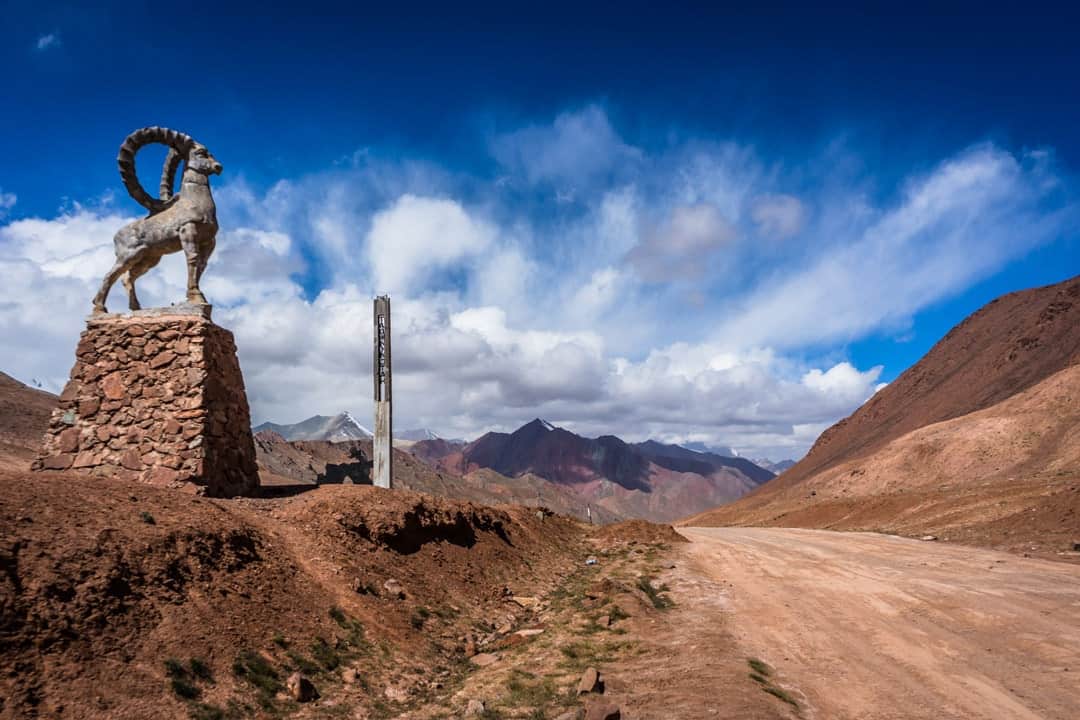
Seeing as we were now cleared to enter Tajikistan, it was clear that Mohammed had paid the unofficial fees to make our passage easier. We asked him much he paid. “Too much,” was his response.
The first village we reached in Tajikistan was Karakul, named after the sprawling lake on its edge. We chose Sadat’s Homestay to be our resting place for the night.
With welcoming hosts, and only $12 per person including a bed, lunch, dinner and breakfast, it was simply splendid.
The village was quieter than Sary Moghul, and after walking along the lake’s shore we found ourselves at a decrepit prison, complete with the shell of an old Russian tank near its perimeter.
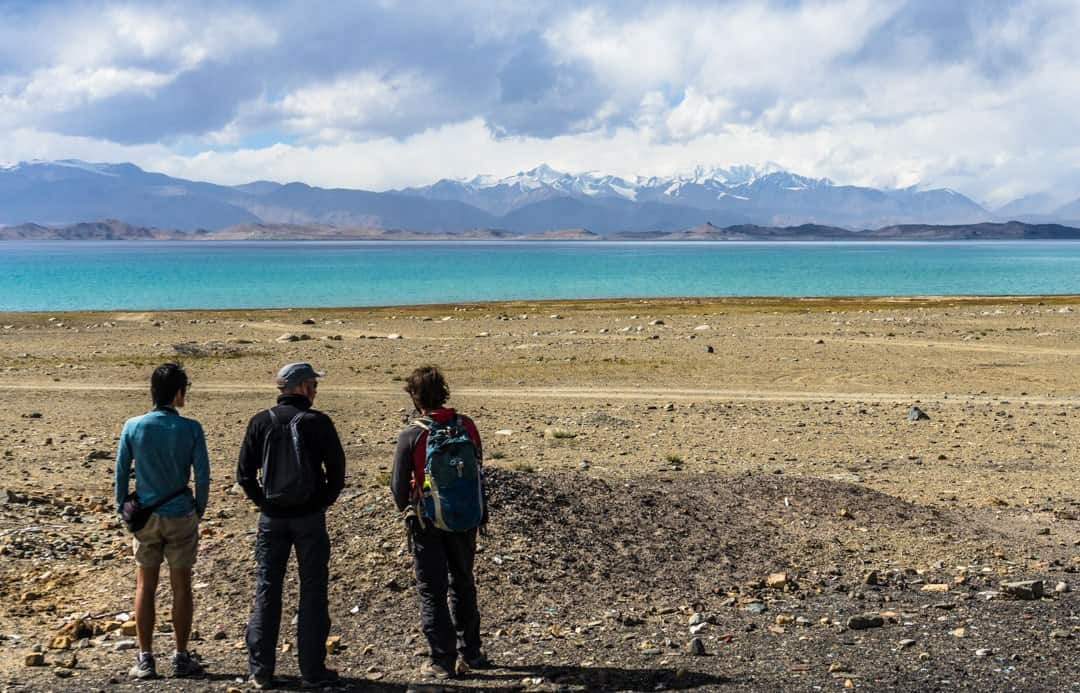
Our group decided to break through a hole in the fence to explore further. Suddenly a soldier called out and came sprinting over to stop us, Kalashnikov in hand.
We stopped dead in our tracks and slowly showed him that we were unarmed, and simply curious tourists. Luckily he used his mouth rather than his gun to warn us that this was not actually an abandoned prison, but an active military base. We apologised and quickly returned to the village.
The reason the base looked so empty was because the soldiers were in the town, playing volleyball with the villagers. We stopped to watch their game, made small talk with the army and then returned to Sadat’s Homestay for dinner and bed.
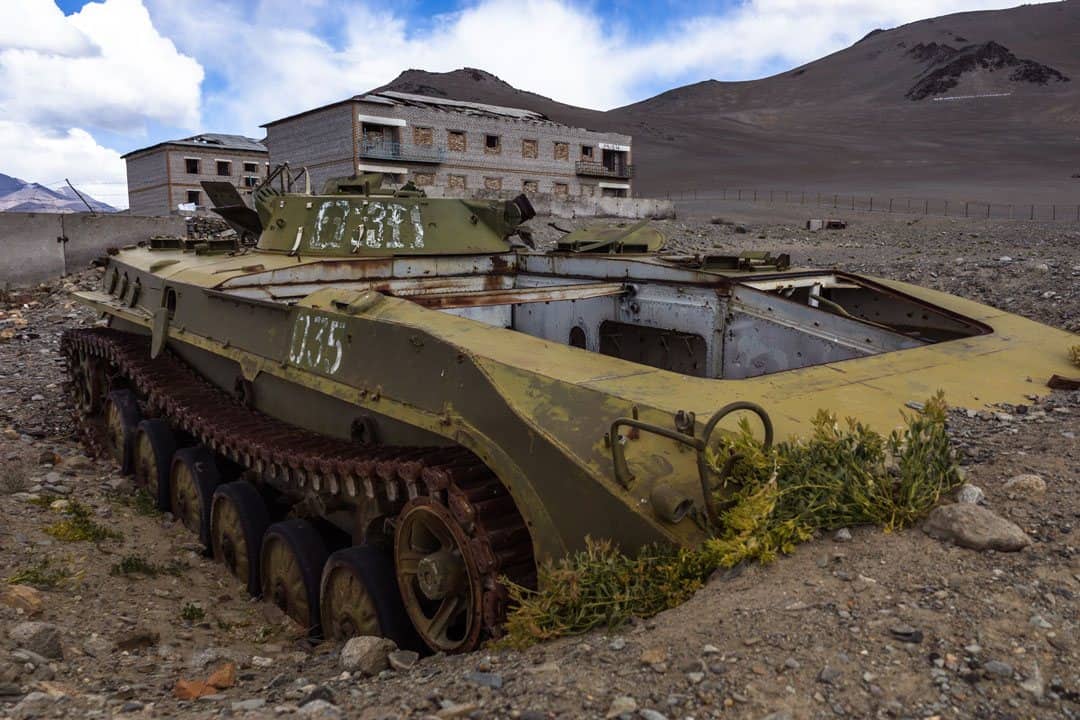
Besides admiring the beautiful lake, there isn’t actually a lot to do in Karakul. As mentioned we tried to break into the prison, which turned out to be an active military base, so we don’t recommend that.
Simply walk around and enjoy the atmosphere of the village. It makes for some beautiful photos. Have a chat to the locals, and if you’re lucky you might even catch a volleyball match.
If you’re in Karakul for longer you can do some hiking around the flats and up to the mountains. Just make sure you stay well away from the Chinese border, which is quite close to the village.
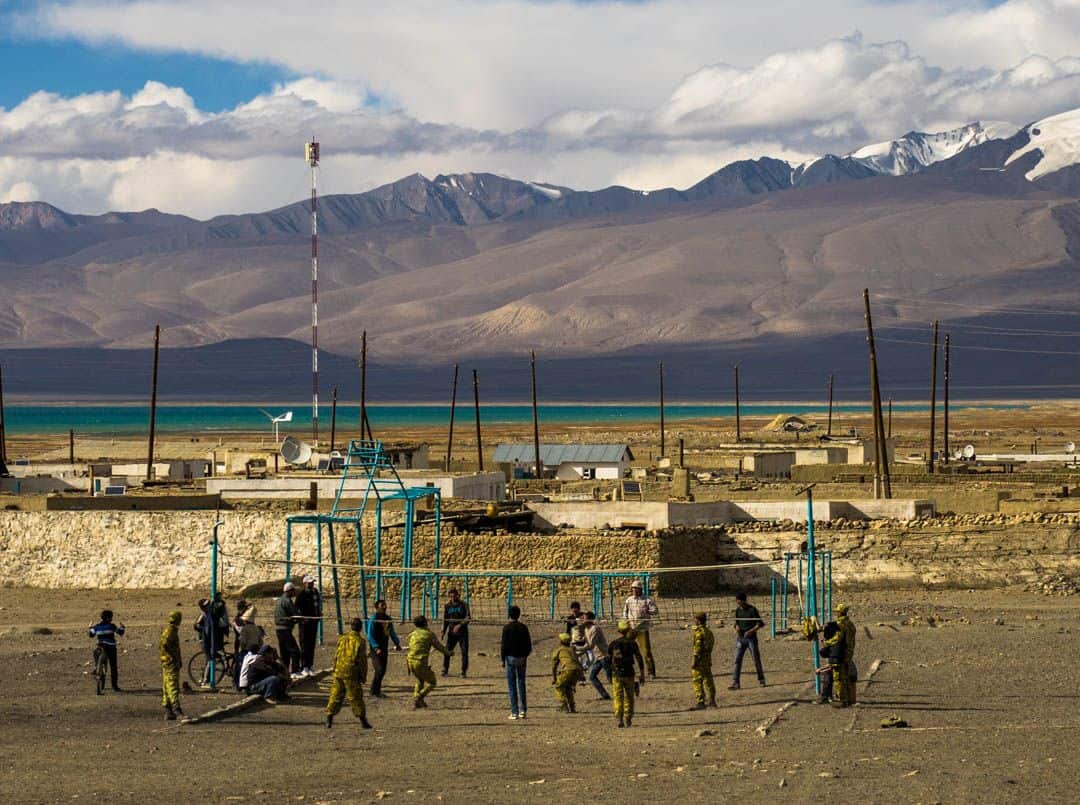
We stayed at Sadat’s Homestay, and it was absolutely brilliant! The lady running it, Sadat, is very welcoming and makes some delicious food. Look out for the blue fence on the right hand side of the village when looking at it from the road.
The cost was also the cheapest we came across on the entire Pamir Highway – $12 per person for lunch, dinner and breakfast. We were the only people there and slept on the floor next to a wood-fired stove.
There are other options in Karakul, and our driver tried to make us stay at another one for $15 a night. However we got the feeling it was his friend’s place and kept walking around, and were stoked that we found Sadat’s.
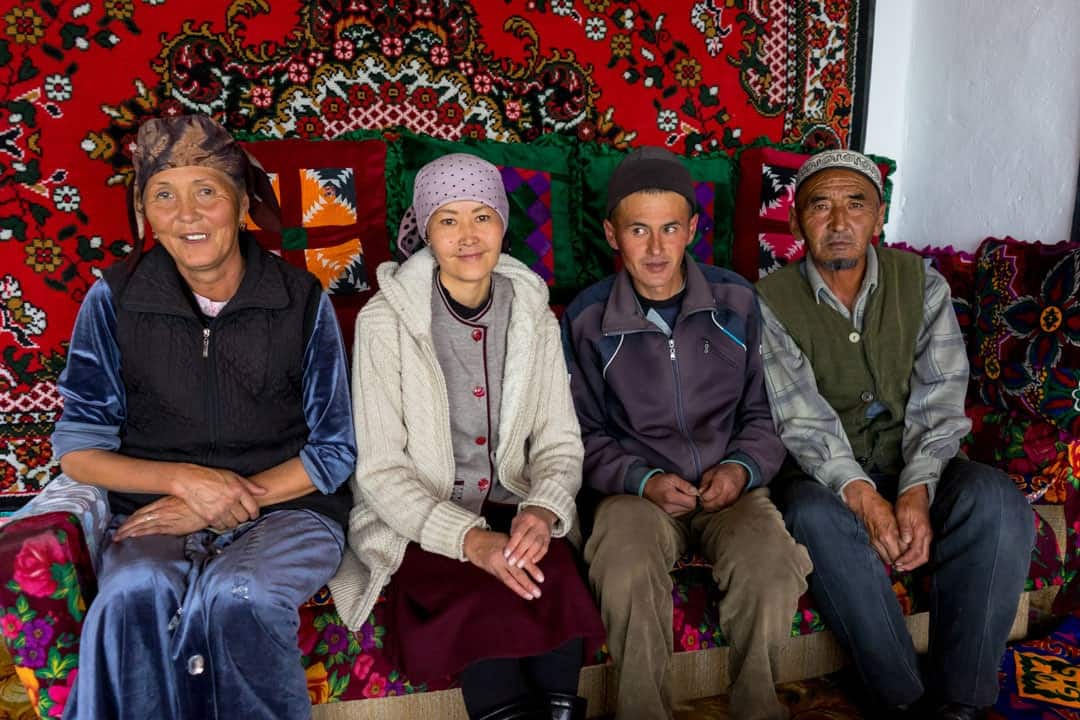
Day 3 – Karakul to Murghab
That’s what we awoke to on a chilly Wednesday morning. Light at first, but soon the snowflakes got heavier and began to coat the village in a brilliantly white layer.
It was only the beginning of September, but already winter was coming fast in the mountains.
We wandered around Karakul before breakfast, and life was continuing as usual. Ladies were collecting water from the well, kids were running off to school and the men were getting ready to head into the fields to tend for their livestock.
We said goodbye to our friendly hosts and set off in a blizzard towards the south. It was only another short drive to the region’s largest town, Murghab.
Anywhere else in the world Murghab would be a blip on the map, but here in the GBAO it was the major trade and transport hub for the region.
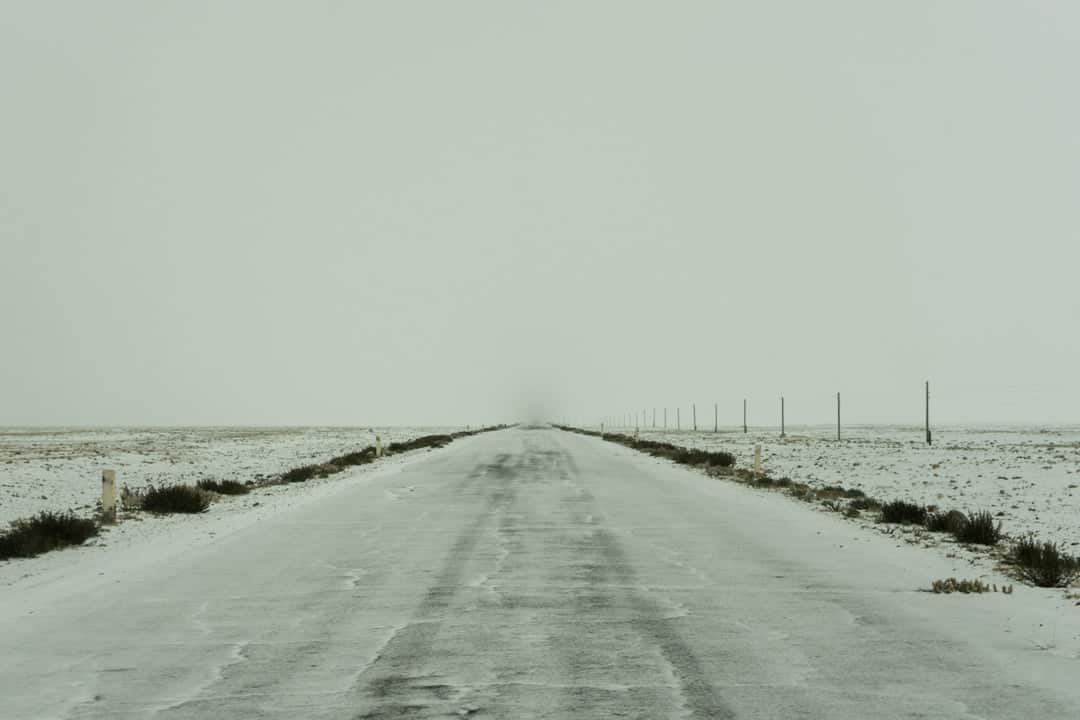
Between Karakul and Murghab is the Akbaytal Pass, the highest point along the entire Pamir Highway. At 4655m above sea level, it’s not uncommon for people to feel lightheaded when climbing it.
Eventually arriving in Murghab we checked into the famous Pamir Hotel and treated ourselves to our first shower since leaving Osh.
The list of attractions of things to see in Murghab is limited to the local bazaar, operating out of shipping containers, and the small mosque.
Still, it was a nice place to wander, and after a few hours we found ourselves back at the hotel playing card games and sipping on Tajik beer.
Almost every other foreigner we met was a cycle tourist, many who had ridden to Tajikistan from Eastern China or Western Europe, giving an idea of the type of adventurous souls you meet on the Pamir Highway.
We met a young Australian man named Harley who had ridden is Suzuki dirt bike all the way from his home in Queensland. Clearly Tajikistan is not somewhere you encounter those seeking a relaxing vacation.
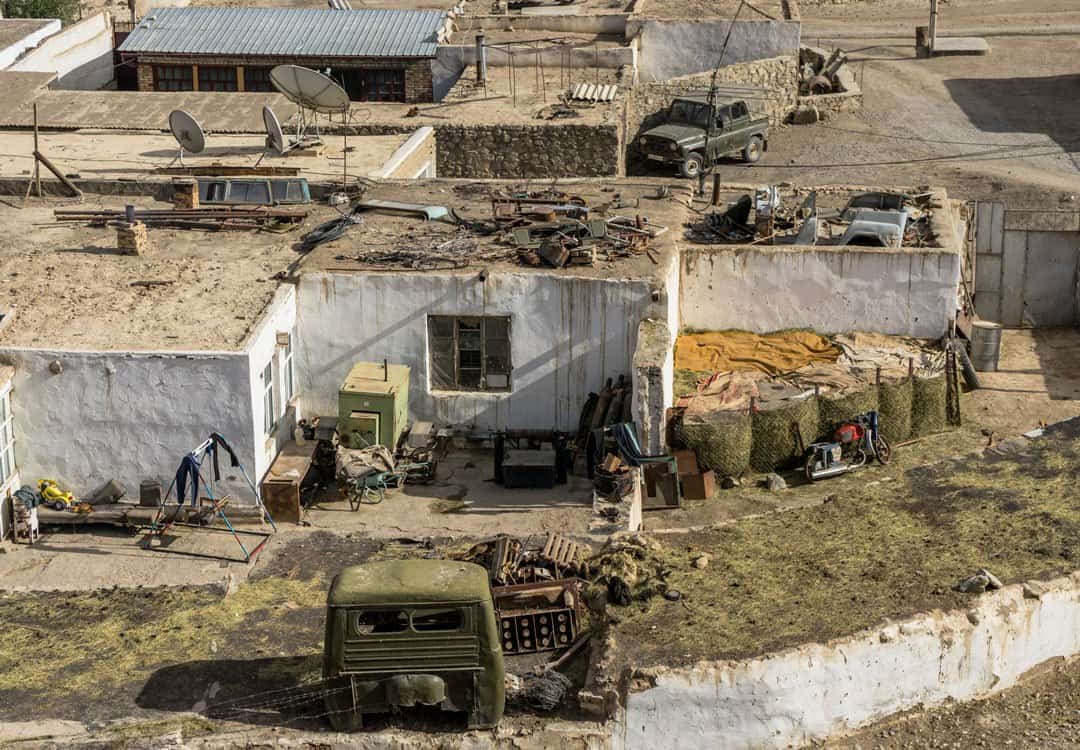
Walking around the container market is perhaps the best thing to do in Murghab. You can buy just about anything you would need there, from fresh vegetables to mobile phones and everything in between.
If you head out towards the back of Murghab you can find a small mosque. This is worth checking out as well. Otherwise just work your way through the streets then make the most of the comfortable accommodation back at the Pamir Hotel.
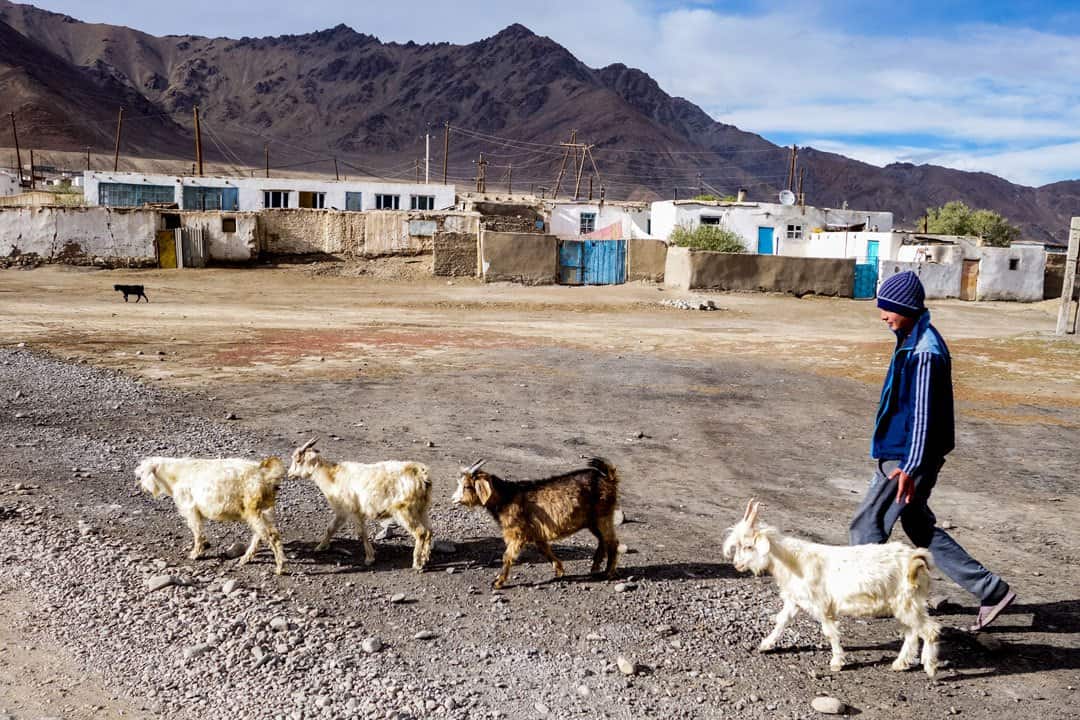
The Pamir Hotel is on the main road and is the largest accommodation in town. It is also the first one to fill up, as it offers decent meals and the first hot showers out of Osh.
The cost was $25 per night for a large room with shared bathroom. Naturally when we arrived there was no running water, so the minute it turned on there was a huge rush to jump in the shower. But as promised, the water was hot!
There are other home stays you can find on the outskirts of town. Stop by the META office (similar to the CBT in Kyrgyzstan) to find out more.
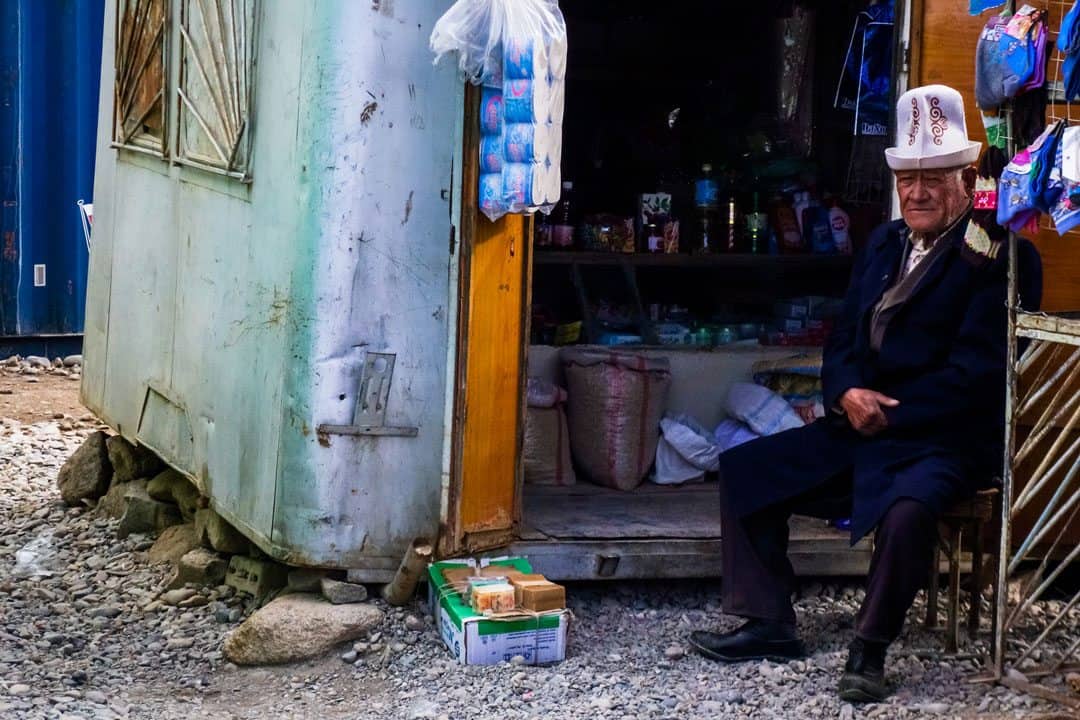
Day 4 – Murghab to Bulunkul
The scenery exiting Murghab quickly changed to become rockier and more imposing. We beelined it for Bulunkul, which has the solemn reputation of being Central Asia’s coldest town.
After Karakul’s snow only two days earlier, we feared the worst, but luckily for us the weather was delightfully sunny.
Bulunkul could be considered less of a village and more of a collection of mud-brick dwellings. It looked like the set of an armageddon movie.
Busted trailers and vehicles were dumped in random places and mud-brick homes were propped up with random pieces of scrap metal.
Still with the snow-capped mountains in the background it made for a stunning and intriguing scene.
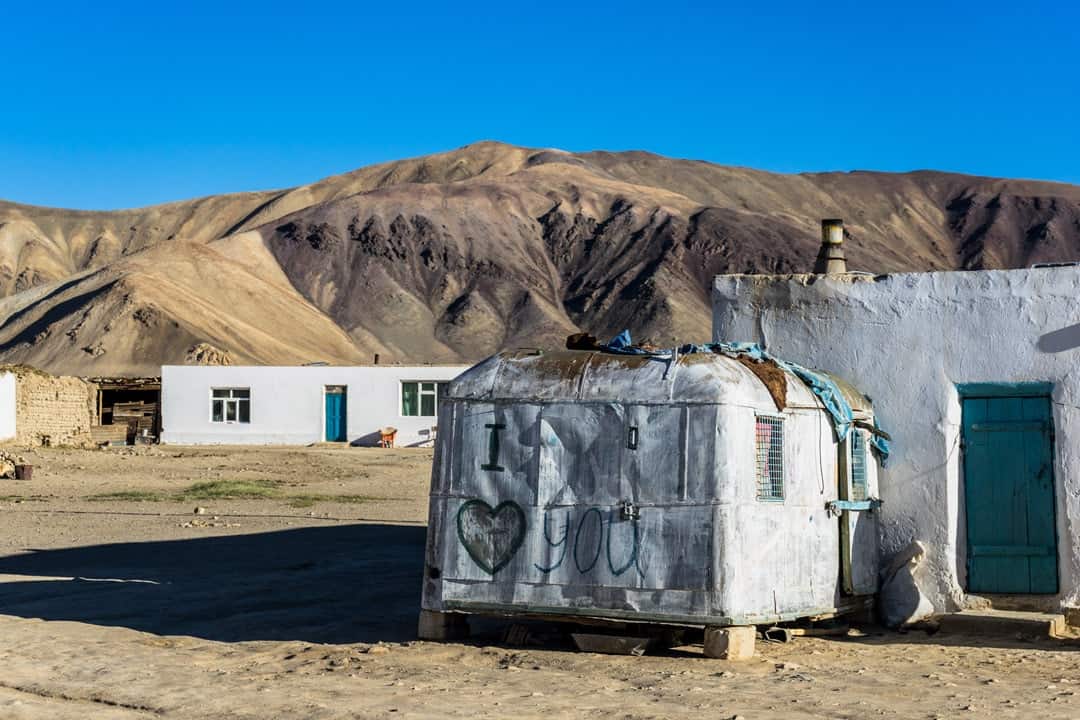
We made our way to a homestay, cooked our own lunch and left Mohammed to drink tea with the family while our group trekked up a nearby hill to get a glimpse of Yashilkul Lake.
Reaching the top of the rise we were met with Yashikul Lake’s turquoise beauty shimmering in the daylight. A sign warned us that special permits were required to trek any further, so instead we aimed our sights towards the closest peak.
20 minutes of scrambling brought us to the summit, and our efforts were rewarded with near-360 degree views of the entire valley. We snapped our pictures before escaping the wind and heading back towards the village.
Yaks wandered around and kids played games. We soaked up the atmosphere for a while longer before retiring for the night.
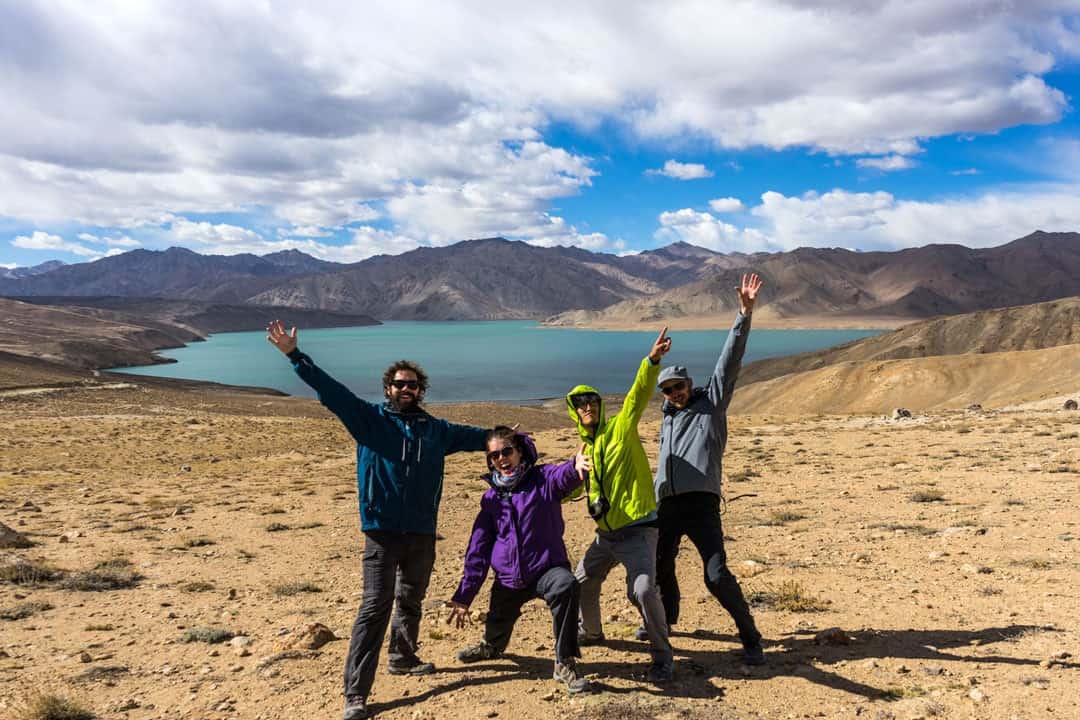
Definitely trek up to the nearby Yashikul Lake and admire the immense beauty of the region. If you have permits you can continue trekking for days, and we wish we had more time to do so.
Get up for sunrise and catch the small ponds and lakes perfectly still on a calm morning.
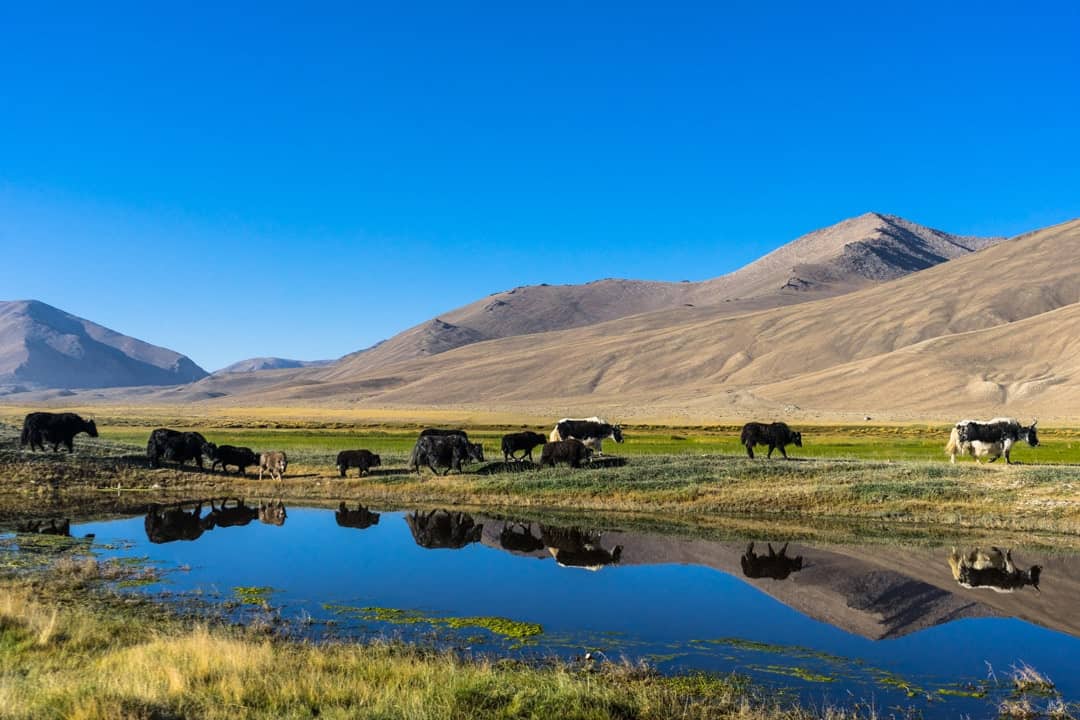
We stayed at the main homestay in town. We can’t remember the name of it, but it’s owned by the guy in charge of the meteorological station in town. Just look for the big weather station on the roof. Your driver will know it.
The cost was $15 per night with dinner and breakfast included. The food was superb, and the sleeping quarters were similar to everything else we had encountered – a thin mattress on the floor.
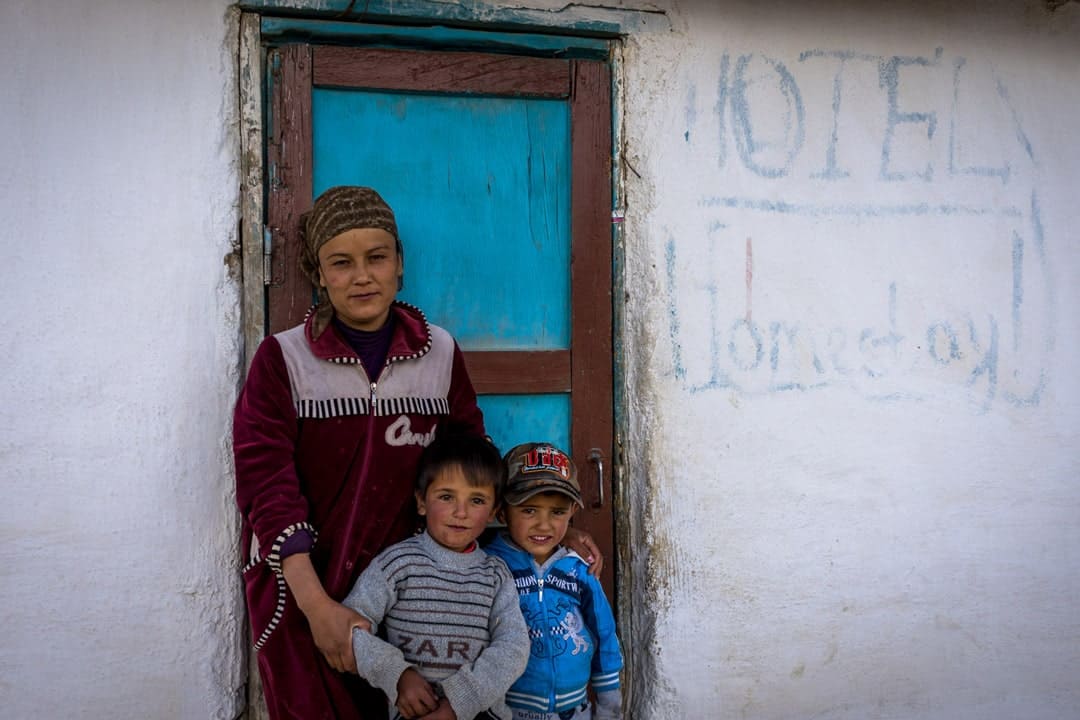

Day 5 – Bulunkul to Yamg
Our fourth day was destined to be the most spectacular of all. Here we would leave the M41 Pamir Highway and join the stretch of road that follows the Afghan border along the Wakhan Valley.
Before we reached the security control point we spotted “Panorama Peak” on our left, a steep ridge that our cycling friend Nick has told us about. Mohammed parked the Pajero and left us to trek on our own.
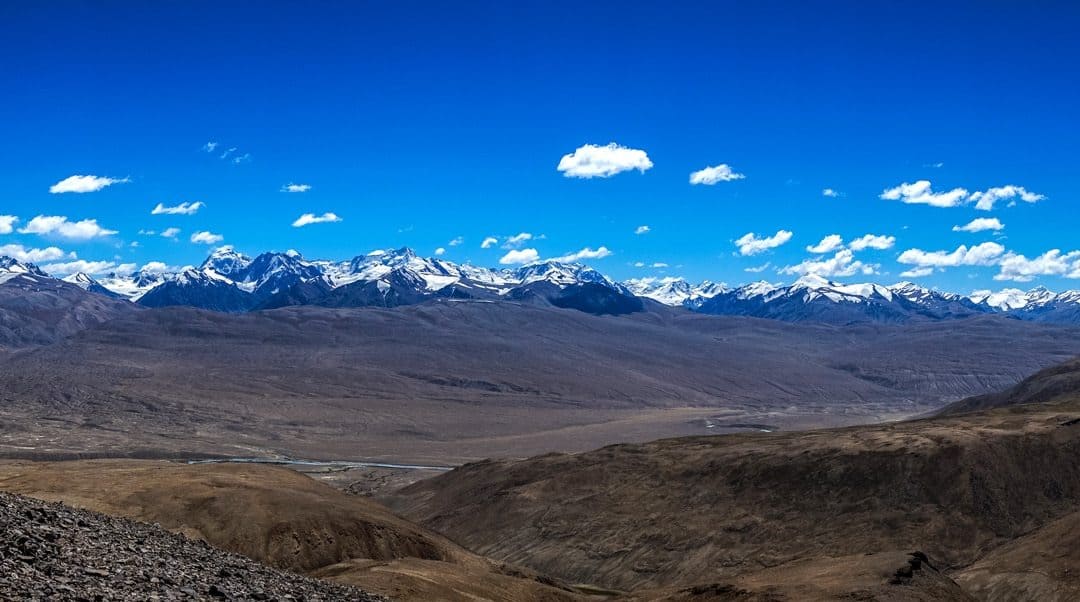
It took almost two hours of an uphill battle to reach the peak, the rocky terrain made even more dangerous with the altitude. At 4500m above sea level exerting your body at this height can bring about lethal altitude sickness.
Our fitness levels were up to the challenge, and we managed to reach the summit without incident.
The views we gained were what people come to this region for. In the distance the infamous Hindu Kush, the “Killer of Hindus”, formed an impenetrable mountainous barrier throughout this strange stretch of land in Afghanistan.
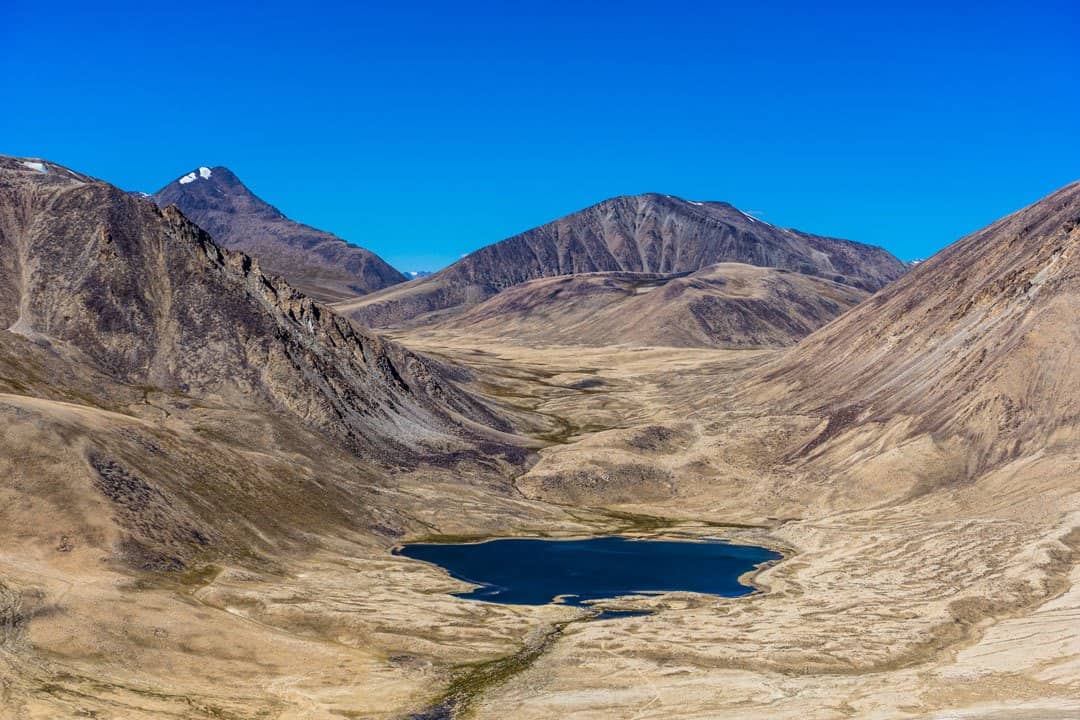
30km away was Pakistan, on the other side of this “corridor” that had been carved out by the Soviet’s during The Great Game in the early 1900s.
The Hindu Kush has been the intrigue of great explorers for centuries, and here it was towering in front of us.
The descent from Panorama Peak was quick and soon we were back in the Pajero and at the GBAO checkpoint.
At this point the Pamir River creeps into the scene, only 10m wide at some points, forming the official border between Tajikistan and Afghanistan.
We drove a few kilometres further and were soon following the meandering waterway for the rest of the journey.
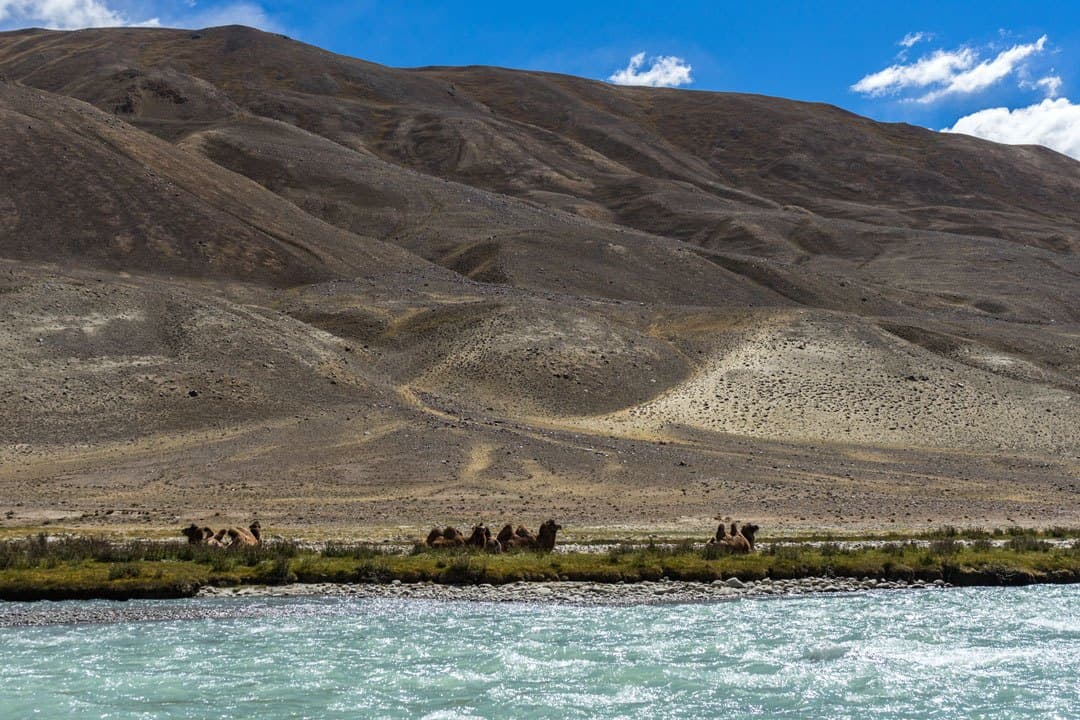
Mohammed parked his car and allowed us to snap photos of Afghanistan. In the hills we could see farmers and small mud-brick houses, and two-humped Bactrian camels wandered along the banks of the river.
Afghanistan was so close, quiet and picturesque. We asked Mohammed if we could swim over to take a photo looking back at Tajikistan. He shook his head. “Big trouble for you.”
I looked around. “But there is no one else here.”
He whispered, “The army. They are watching.” And with that grim warning, we continued on our way.
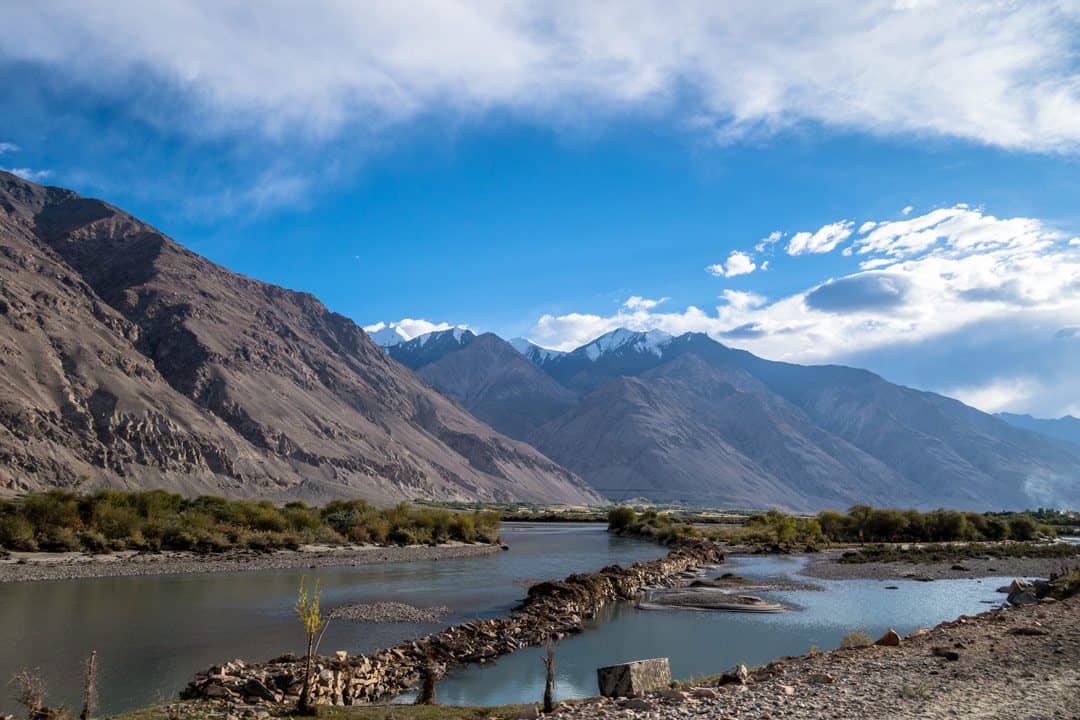
For hours we followed a flat route in the shadows of the Hindu Kush. The river gradually grew wider and more powerful as tributaries rushed in from alpine glaciers.
The beauty we encountered behind every rounded bend took our breath away faster than the climb to Panorama Peak.
Soon the road climbed high into the mountains, following the contours of the cliffs. Any lapse in concentration from Mohammed would have resulted in us tumbling to a final resting place far below.
Luckily he remained attentive and cautious.
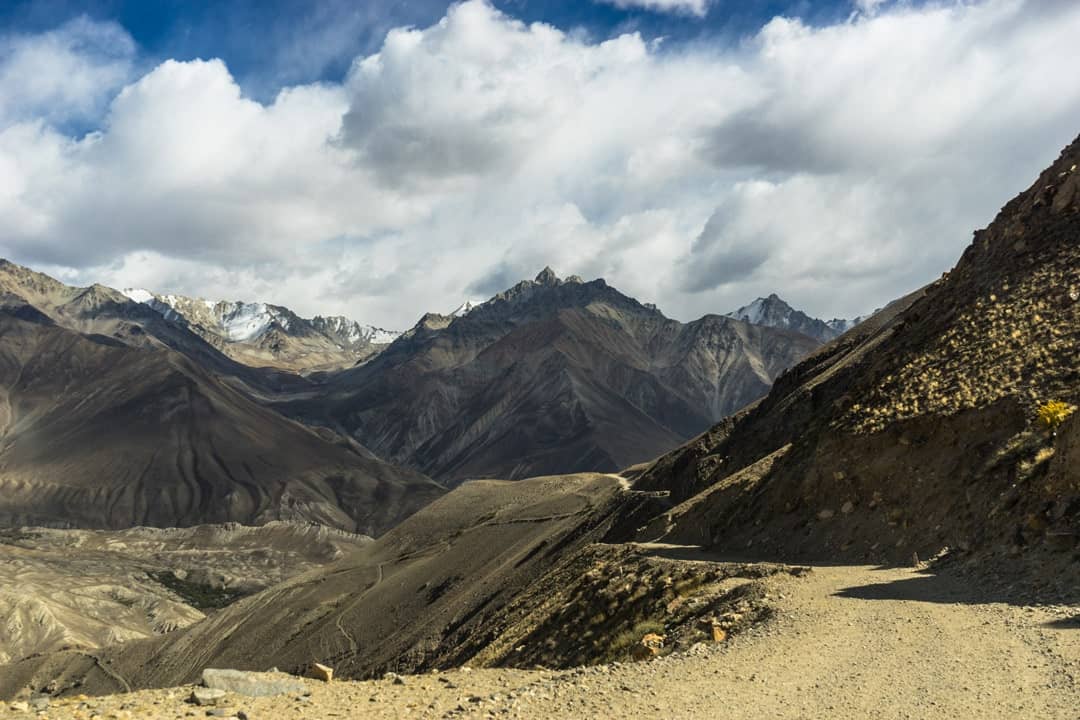
Dropping down towards the town of Langar we saw the lush farmland of the Wakhan Valley, stretching in from hidden regions of Afghanistan.
Langar is home to an ancient fort and megalithic petroglyphs, and its location could not be any more inspiring. After exploring the sights we opted to make the most of the daylight and move onto the smaller village of Yamg.
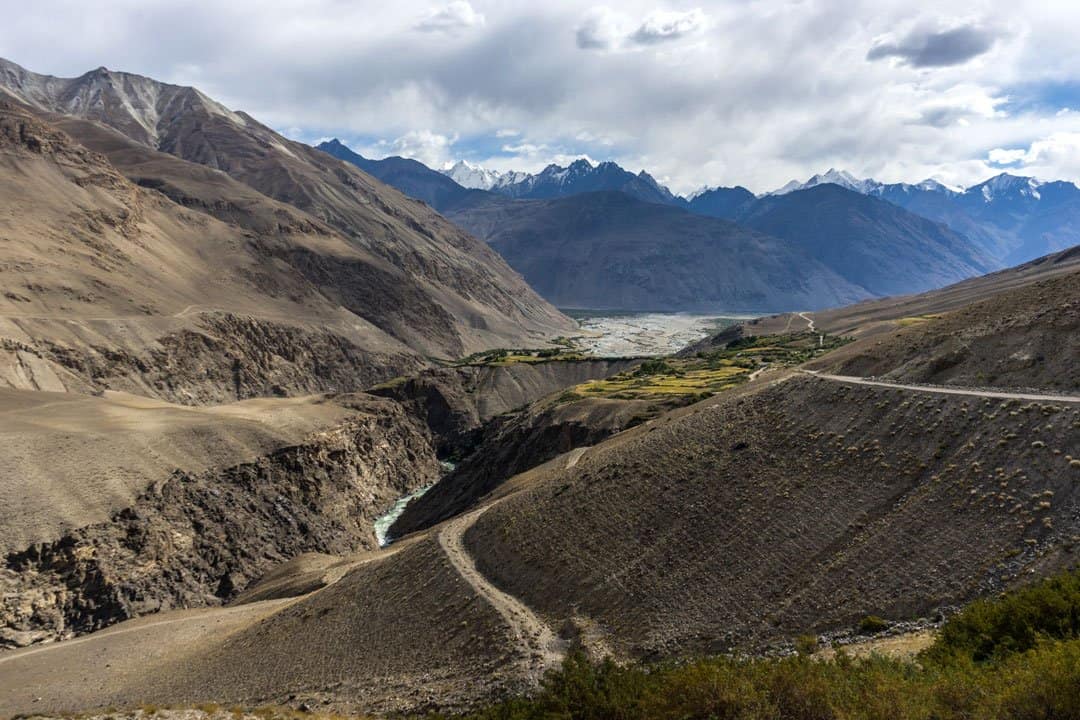
We stopped over in Vrang to climb around the quarry-like rock walls and to explore one of the region’s most interesting sites*, a Buddhist shrine.
Here some young boys approached us and bowed their heads in a respectful way, miming that of Buddhist monks. We allowed them to take us there and were surprised when they ran off without asking for money
Arriving late into Yamg night had already begun to fall, and Mohammed took us to Aydar’s Guesthouse. Aydar is the leader of the village, and spoke decent English.
His guesthouse felt less like an authentic homestay and more like a business, and we were eager to move on the next day. In the morning we walked around Yamg’s quaint streets and moved towards Yamchun, less than an hour on.
*Our good friends Thomas and Veronika recently used this guide on their own travels, and have reported that they were very underwhelmed with the Buddhist shrine. Perhaps we may have been too generous with our appraisal of it.
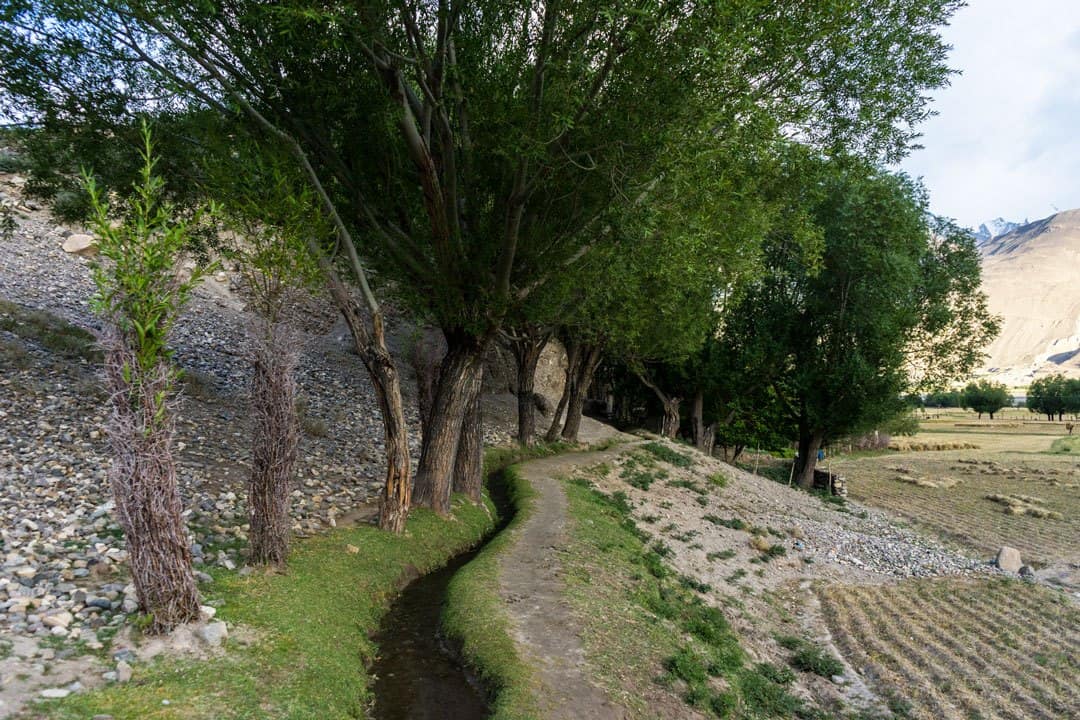
There are countless things to do in Langar, and for most people this is why they end up spending the night here. It also is a more logical spot to stop in terms of time spent on the road.
About 3km before Langar, make sure you check out the Ratm Fort, an old relic from the Silk Road that has great views over the Pamir River (now turning into the Panj River) and into Afghanistan.
You can walk around past the family’s house to get to it. Just make sure you watch your footing when stepping close to the edge inside the fort – there are plenty of loose stones.
If petroglyphs are your thing then climb into the hills to find over 6000 of them. To get there go to the school, follow the powerlines up the hill towards the cemetery, then keep going up until you can cross the small stream.
There’s also some Islamic shrines scattered around the village. It really is quite picturesque, and easy to see why people stay here.
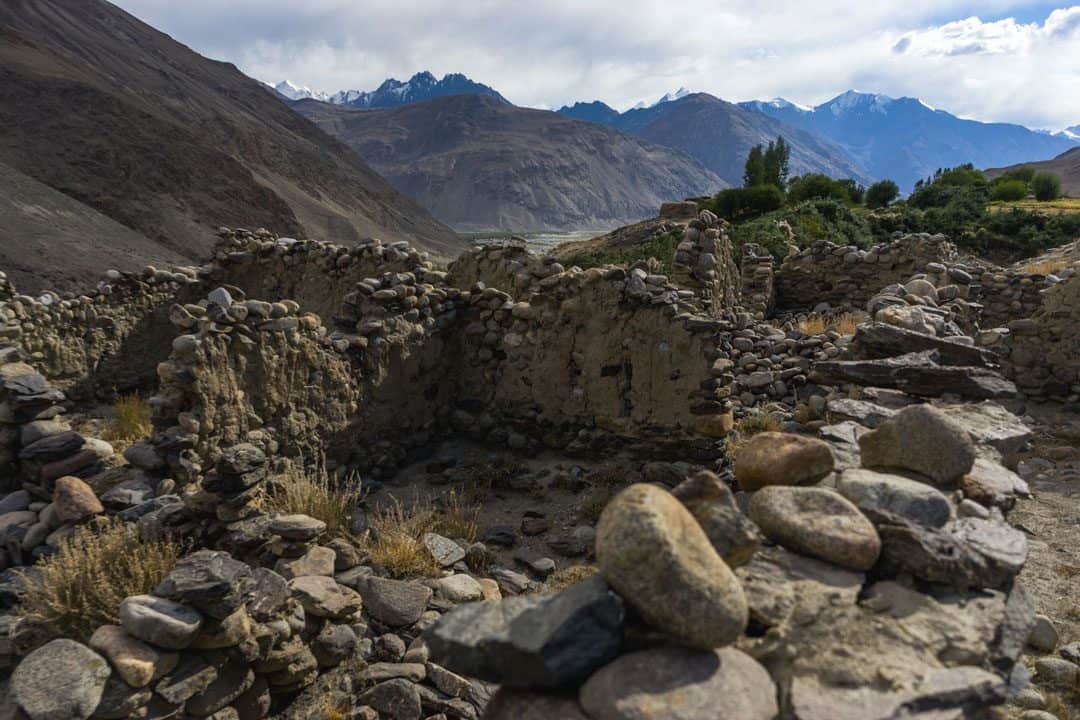
There’s also quite a few cool things to do in Yamg. There is the Yamg Wakhani Museum, dedicated to local legend and Sufi mystic Mubarak-i Wakhani. You can find old musical instruments and relics of his life here.
Near the museum is a solar calendar as well. To be honest we didn’t visit any of these due to a bad taste left by our homestay owner (who also happened to manage all the attractions in town), so we simply walked around the beautiful, bucolic village.
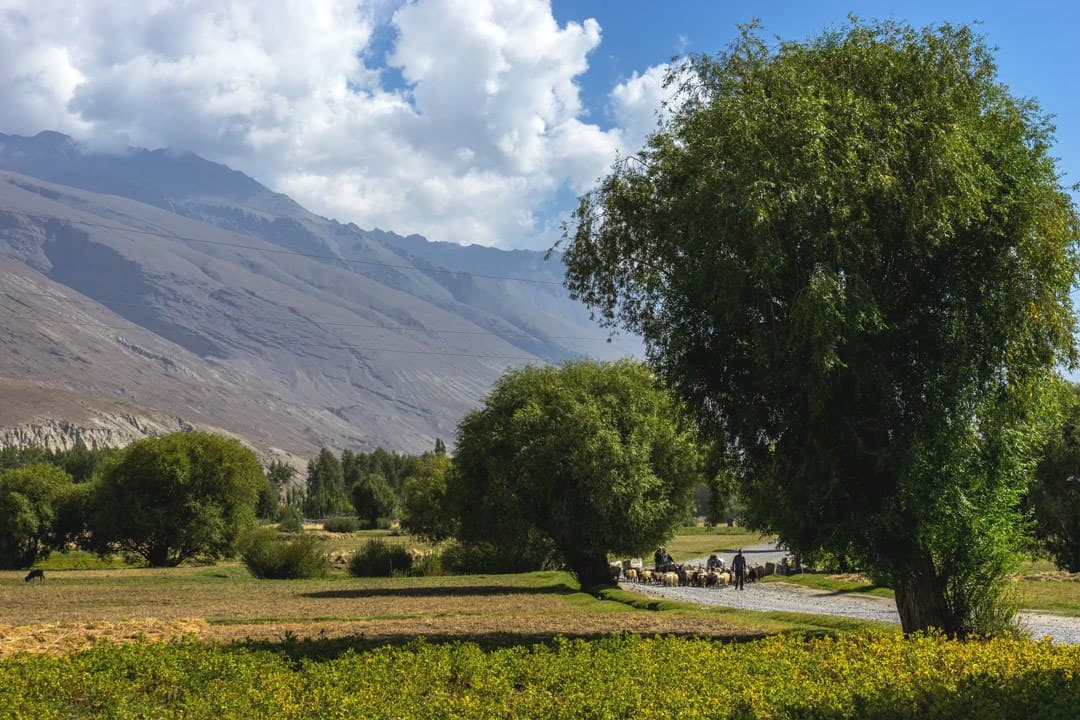
We stayed in Aydar’s Guesthouse, but we don’t necessarily recommend it . It was overcrowded with group tours when we arrived, and while Aydar was smiling when we first got there, he made a big deal about how we were inconveniencing him by coming so late and tried to charge us $20 for a place on the floor there, with dinner and breakfast being extra.
When we asked for a cheaper price he got aggressive, saying that he had the best guesthouse in town and that if we didn’t like it we could leave. So we grabbed Mohammed to leave, and Aydar dropped the price to $15*.
During dinner Aydar’s son gave us a very nice and detailed explanation of Pamiri architecture, which was fascinating. He then asked for money for his explanation.
We refused, and he asked if we’d like to stay after dinner to watch a cultural dance his sister was doing. Sure, we replied. “It is only a $10 donation to watch the dance,” was his response. We went to bed instead.
In all honesty the place wasn’t bad – there was a shower, the mattresses were comfortable and the food was great. It just felt like a money-grabbing business trying to take advantage of tired travellers.
Others have stayed there and enjoyed it though, so perhaps we just got them on a bad day.
*(We asked to pay in Tajik Somoni, and he gave us the worst rate ever. We then said “fine, can we change our USD into Tajik Som at your rate?” and he cracked it, demanding we go to the market to see what the rates were there. We just paid in USD after that.)
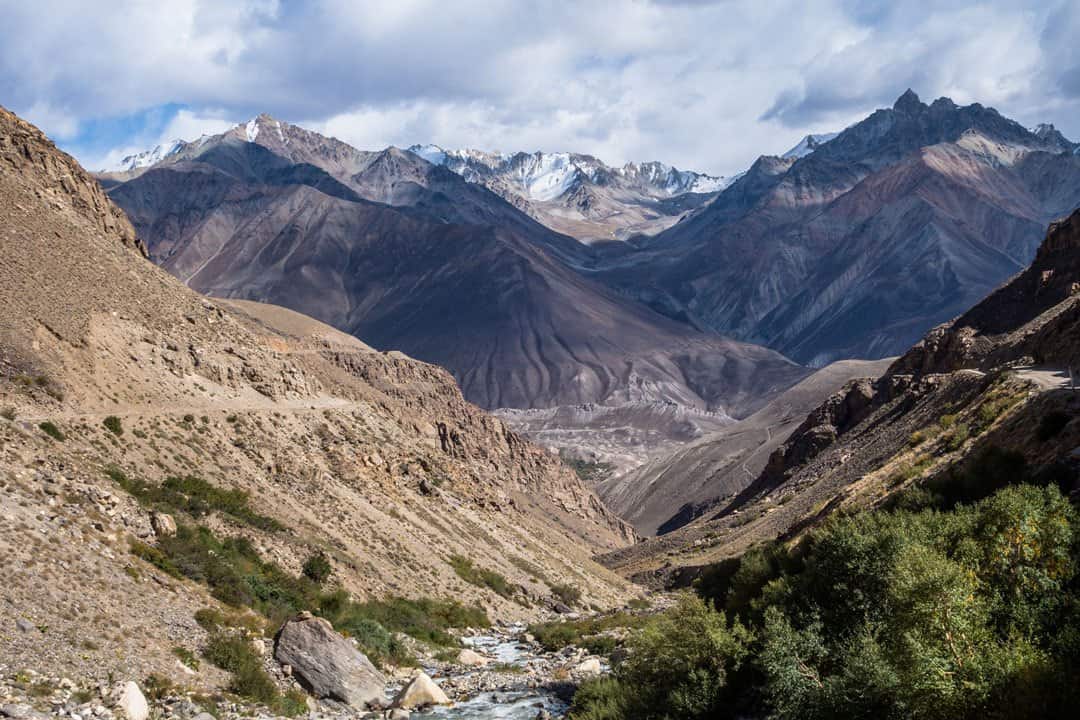
Our original plan was to stay in Langar, but we decided to drive on. The reason being that our cyclist friend Nick had caught the owner of one guesthouse stealing money out of his bag there (sorry can’t remember which one). When we said this to Mohammed he agreed that the lady steals a lot from travellers at that guesthouse.
We then asked if there were any other homestays, and Mohammed recommended a different one, who was his friend. “But food is very bad,” he said. “Everybody gets poisoned there.”
We tried to go to another one but Mohammed kept talking them down (we suspected it was because he didn’t get a commission or free stay at those ones for bringing us), so we pushed on to Yamg.
Our friends have stayed in Langar without problem, so this is up to you whether you want to try it or not. If we were to do this trip again we would take the risk and stay in Langar for a night, or even two.
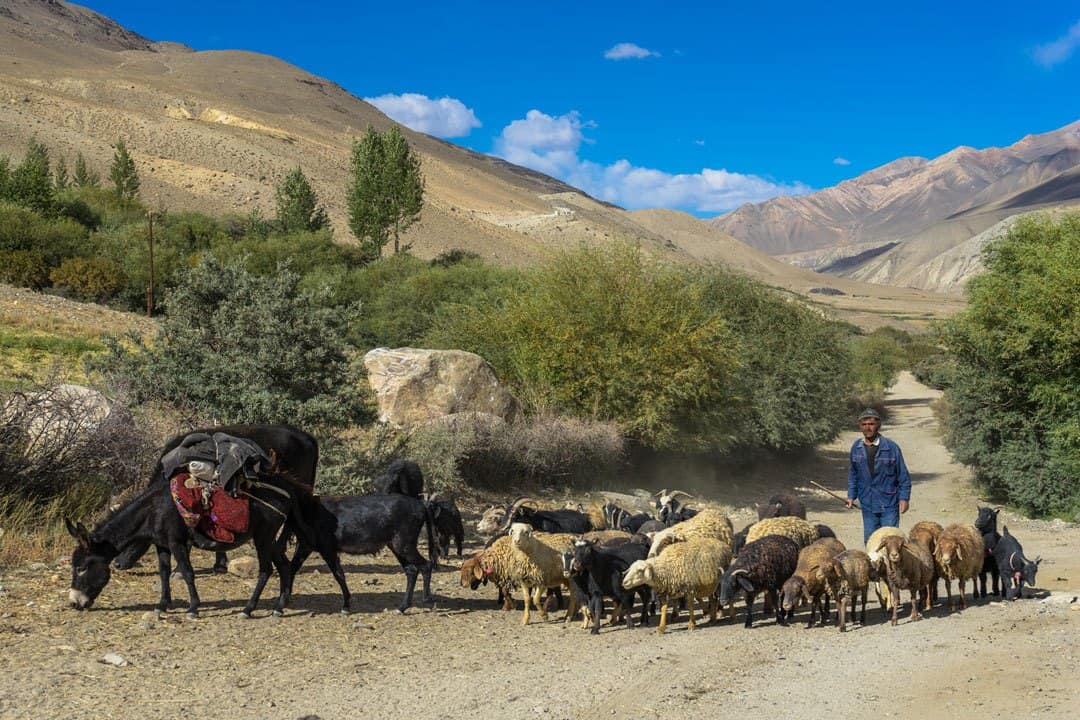
Day 6 – Yamg to Yamchun
Yamchun is famous for having the two most spectacular attractions along the whole Wakhan Corridor: The Yamchun Fort and the Babi Fatima Hot Springs.
The 2200-year-old Yamchun Fort sits precariously on the edge of a crumbling mountain, offering perhaps the best views of anywhere encountered in Tajikistan. Today the fort is left in ruins, but its foundations and walls can still be admired.
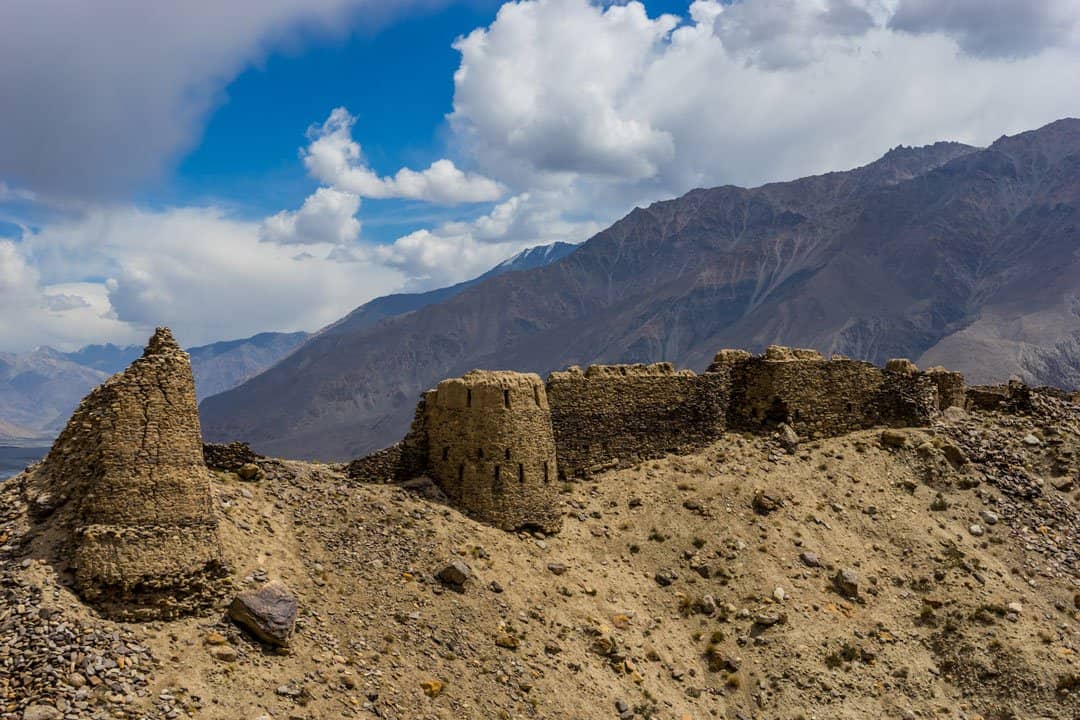
Our group separated for the first time in five days, and found our own corner of the fort to seek solitude and reflect on our surroundings.
Further up the hill the Babi Fatima Hot Springs flow into man-made pools, and the water is believed to boost fertility. Men and women are given separate pools to bathe in, and clothes are forbidden.
We paid our 10 Somoni ($1.25) each, stripped down and joined the locals in the steaming waters.
Clean and refreshed, we drove slowly down the mountain searching for another homestay we had heard about from other travellers.
Unsigned and hidden from view, the homestay took us over 30 minutes to find. But when we did discover it, we were in paradise.
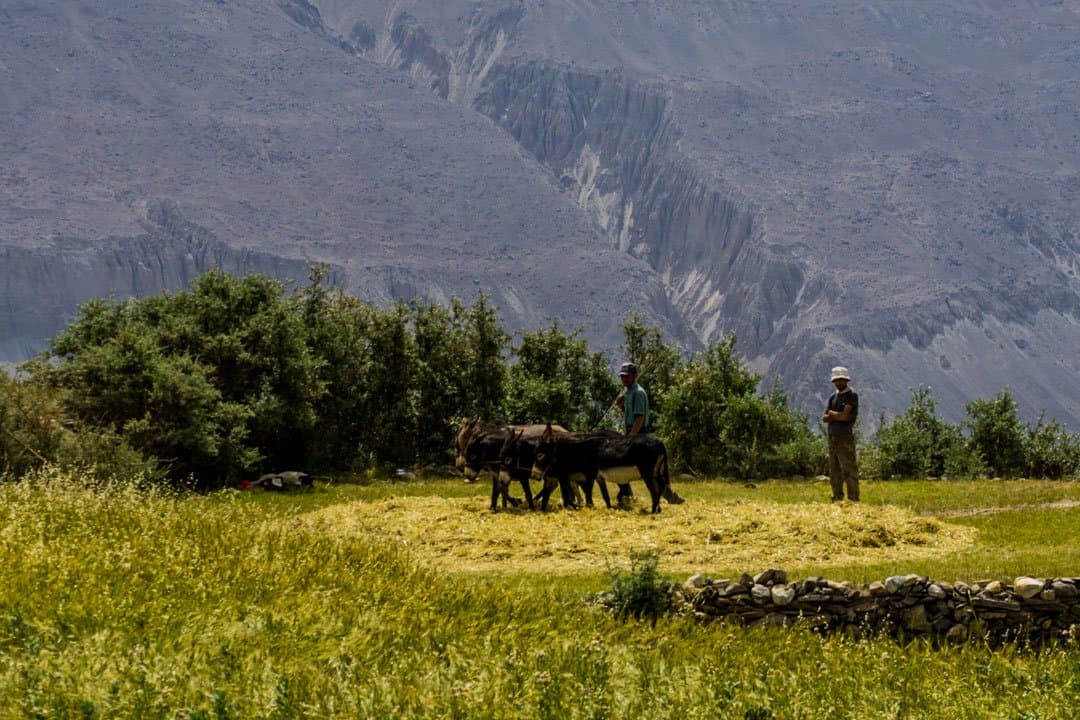
It was perhaps the best example of Pamiri style decorations that we had encountered, complete with crimson carpets adorning the walls and a four-tiered skylight in the centre.
A vegetable garden, fruit trees and sunflowers made up the yard, with the gaps in the leaves offering stupendous views over the Wakhan Valley. Our afternoon was spent playing card games and basking in the sensational vistas.
Obviously the two main things to do in Yamchun are the fort and the Babi Fatima Hot Springs.
The fort is a great place to wander for an hour or so, and you can grab some epic photos. Climb around, find a shady spot and relax.
The Babi Fatima Hot Springs are equally cool and make for a relaxing session after exploring the ruined fort. Men and women are separated, and clothes are not allowed (yep, time to nude up).
The setting is really nice, nudged up against a rock overhand and filled in with cement to block out the elements.
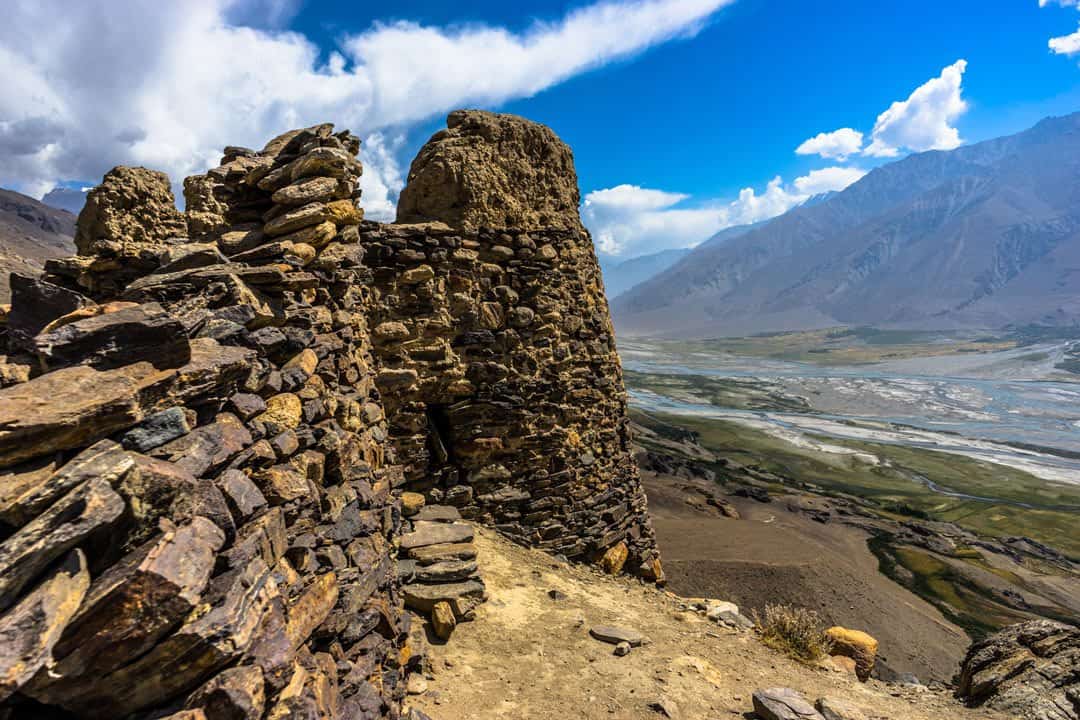
We found a discreet homestay on one of the switchbacks coming down from the Yamchun Fort. It really was hard to find, as the road drops away steeply while the house is up on a hill slightly.
It was maybe the 4th or 5th switchback down from the fort. It is on the left-hand side of the road if you are driving downhill.
The owners were amazingly friendly, and the house was gorgeous. We actually could have spent another night here just to chill out, but decided to head to Khorog instead.
It was $15 per person and included lunch, dinner and breakfast. The food was impeccable!
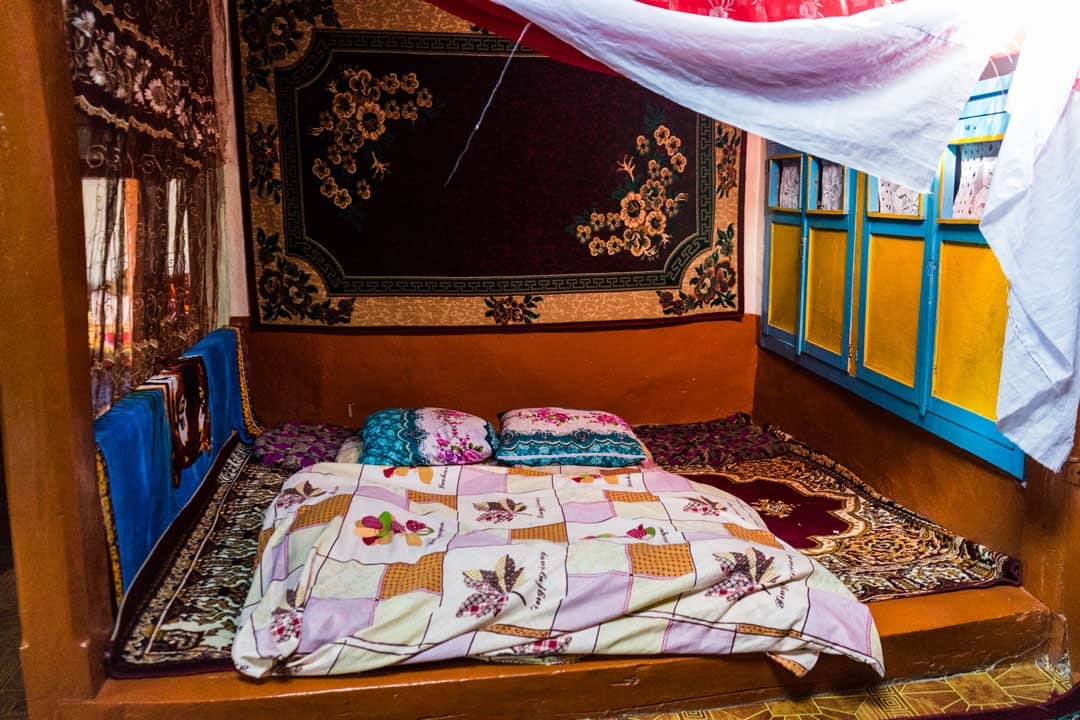
Day 7 – Yamchun to Khorog
Leaving in the morning was a reluctant endeavour, but it was time to finish our Pamir Highway journey. We continued on the road, stopping at key photo opportunities, and at another ancient fort.
At the town of Ishkashim we passed the international border crossing into Afghanistan. Every Saturday for years had seen a cross-border market operating on a small island between the two countries.
Normally it was the best opportunity for tourists to interact with Afghani sellers without entering the country.
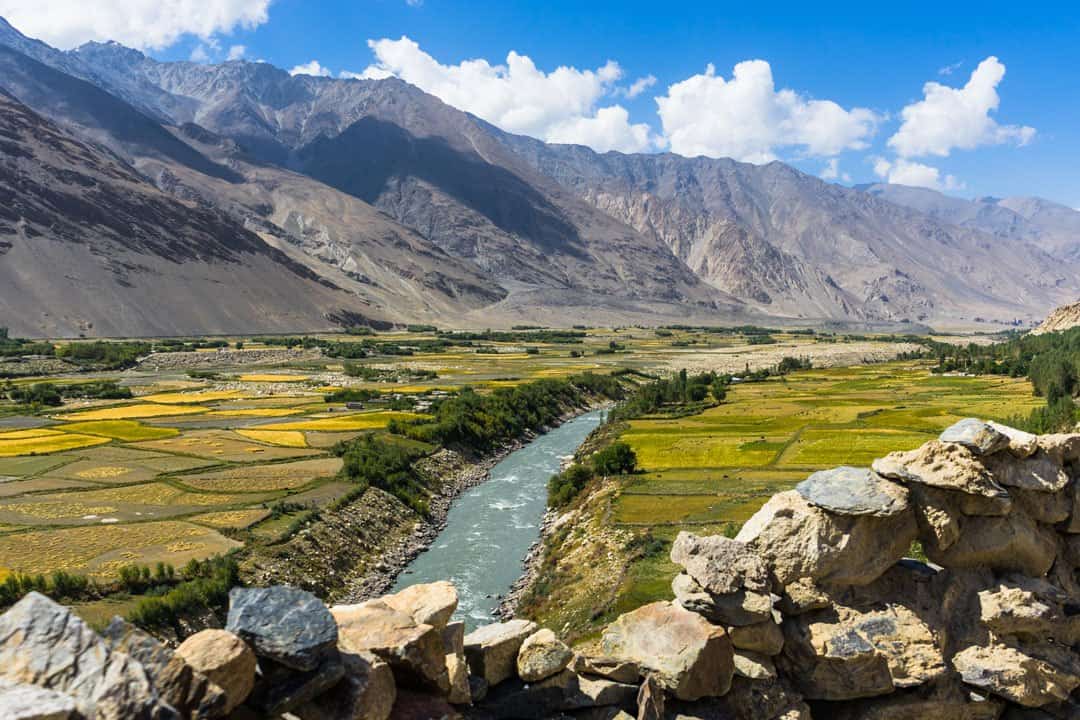
Unfortunately for us the market had been closed for six weeks due to instability in the region. The Taliban had been moving closer to the border, and were now reportedly 20km from Ishkashim.
The gates were open, but no one was making the crossing.
We stopped by at the Ishkashim Fort, another Silk Road relic with a formidable location on the edge of the Panj River.
With views over lush farmland and the high position allowing a phenomenal sight of the natural border between Afghanistan and Tajikistan, it may be one of the most unique spots along the Pamir Highway.
We snaked along the mountains before finally arriving in Khorog, the biggest town we had visited since Osh. Mohammed drove us to the Pamir Lodge where we pitched our tents, cracked a beer and celebrated the end of our Pamir Highway adventure.
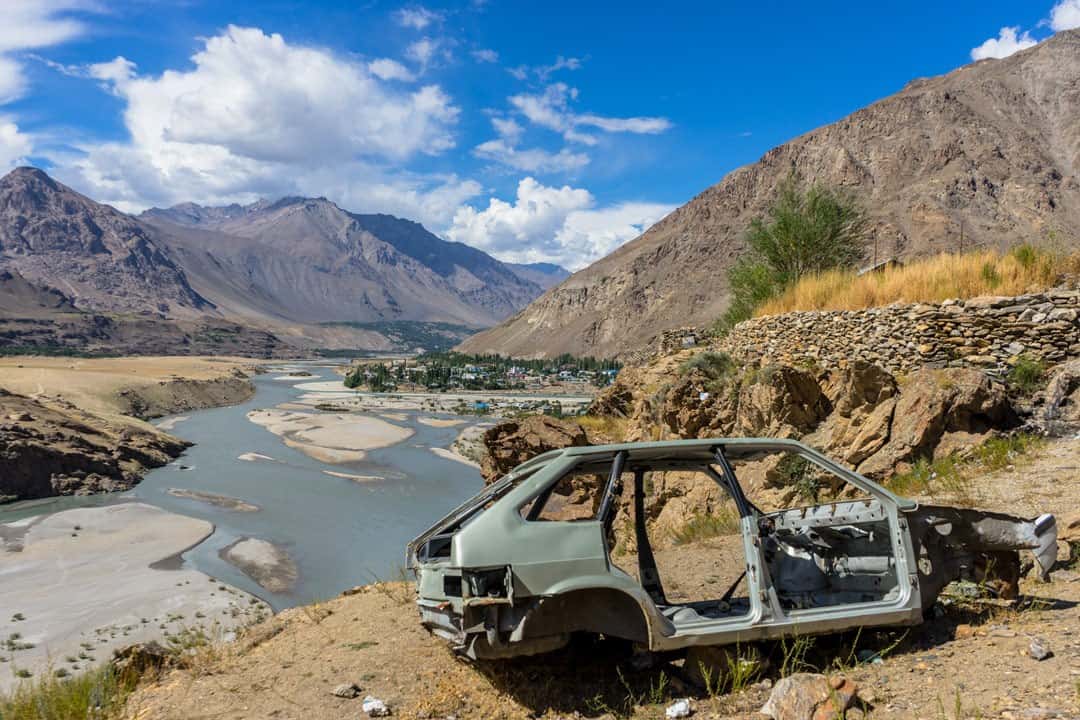
There are plenty of things to do in Khorog, but to be honest the town’s main appeal is to be used as a resting point before or after a Pamir Highway road trip and to stock up on supplies.
You can take a marshrutka out to some of the nearby villages, or check out the botanical gardens just outside of town.
There’s also a great hike into the Jiseu Valley with a long suspension bridge over the river.
Hot Tip: Eat at Dehli Dharba. It’s a great Indian restaurant with decent prices. Walk towards the river down an alleyway when you hit the MicroFinance Bank on the main street.
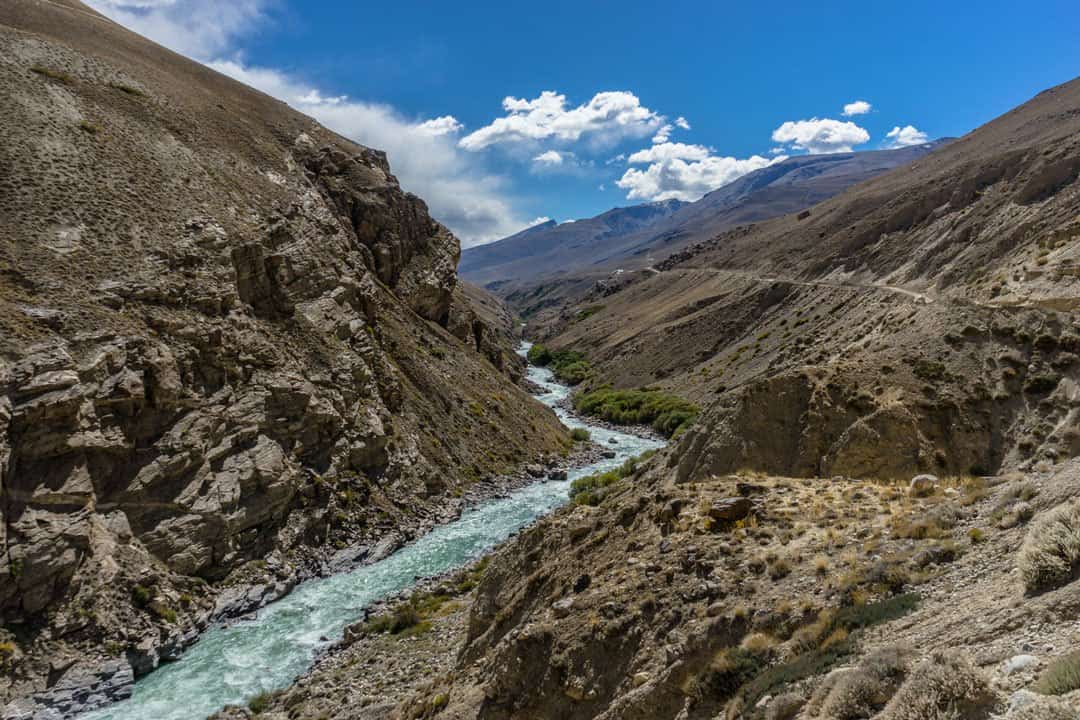
Khorog has a lot of decent options of places to stay, but we chose to stay at the most popular one: The Pamir Lodge.
It’s a bit of a legend around the region for having the highest concentration of people to swap stores and advice with, and it’s a cool setup. It also has wifi.
It’s $9 per person for a private room, or $5 to pitch your tent (either on the grass or on the timber deck). We spent 2 nights in a private room, then jumped in our tent for the next few nights.
To get there you turn up the hill at the Afghan embassy. It’s a little walk out of town, but not too bad. The manager also speaks decent English, and is a great guy to chat to if you want to travel into Afghanistan or explore more of the region.
- READ MORE: Our comprehensive guide to the best backpacking tents on the market
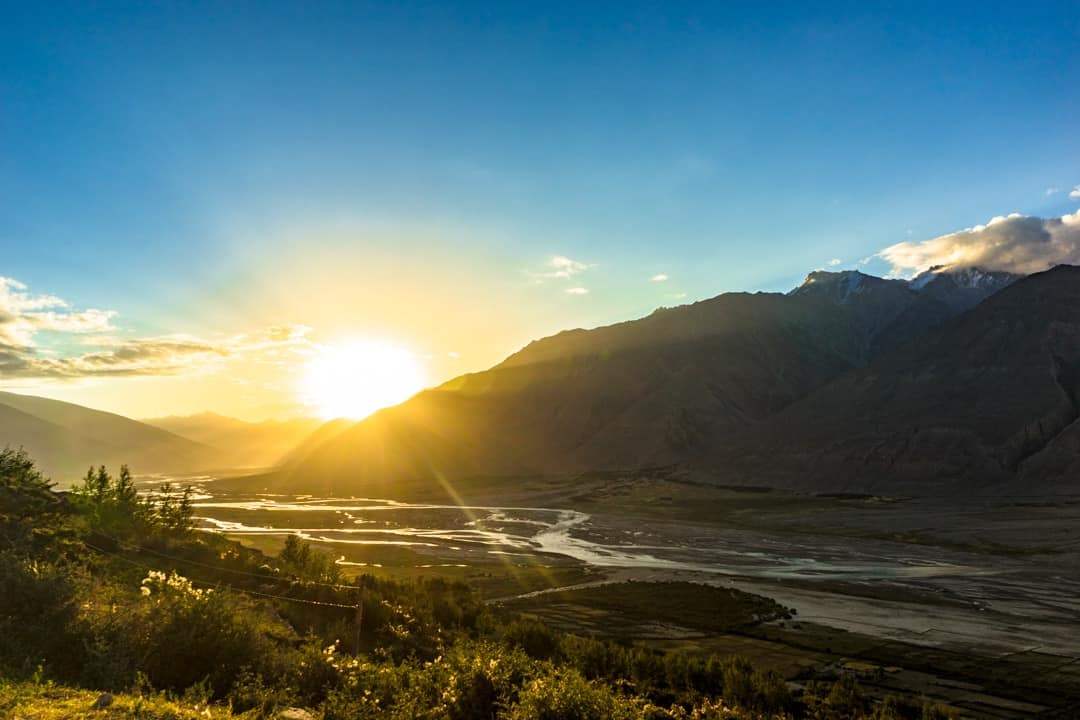
Extra Information for Travelling the Pamir Highway
Here’s a bit of extra information to help you plan your adventure along the Pamir Highway.
Remember we now recommend making bookings through Visit Alay . You can of course still try to organise this on your own if you’d like.
Budget for the Pamir Highway
Exploring the Pamir Highway is not cheap. Homestays are, on average, higher than most places in Central Asia due to the remoteness of them. Food is also more expensive.
Renting a 4×4 in Osh is charged per kilometre. A standard rate is $0.75 per kilometre, but this can go up or down depending on the quality of the driver, the reliability of the car, etc.
Expect to spend about $100 per day on car rental. You also have to pay for the driver to return to his home. This is charged at about half the usual rate, but he will take the most direct way possible.
It’s also about $20 per day for the driver in addition to the car rental.
Vehicles are best split between 4 people, to keep the costs down. Fuel is included in the price of car rental.
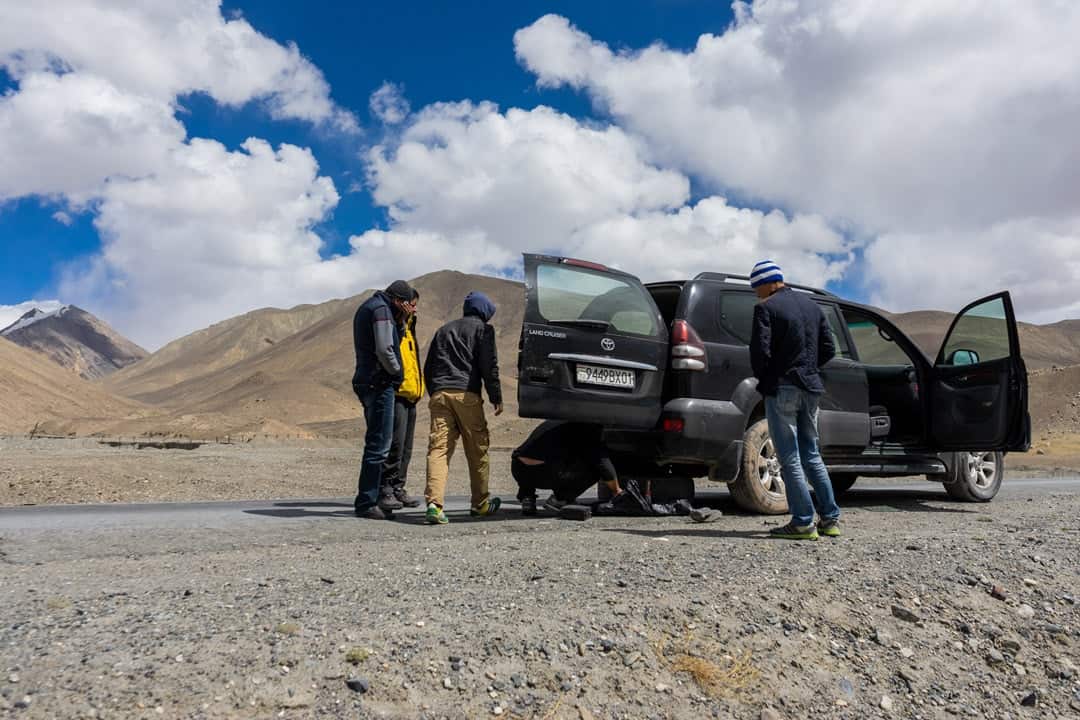
Homestays range from $12-20 per person, per night, including meals. This is not luxury by any means, but it is a great experience staying with a family and learning about the Pamiri culture.
You will also need to buy some food supplies along the way for lunches and snacks. Bring some water too, although you can fill up at streams along the Pamir Highway. We recommend having a SteriPEN or water filtration system of you do this.
As a good estimate expect to spend between $50 – $60 per person, per day on the Pamir Highway for a group of 4.
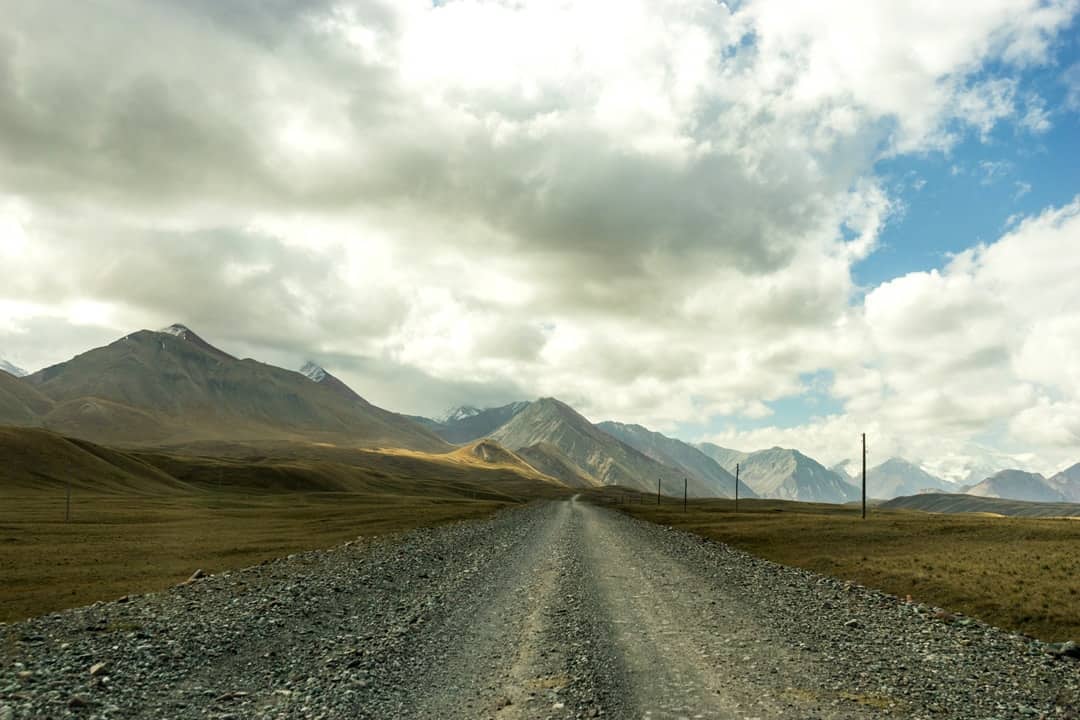
We recommend travelling with new USD notes, ranging from $5 up to $100. All homestays will accept USD as payment.
We also suggest exchanging some of your USD for Tajik Somoni so you can make smaller purchases in the markets. You can do this at the bank in Murghab or Khorog.
There are NO ATMs between Osh and Khorog. Bring all the cash you need with you.
There is no problem with camping along the Pamir Highway, as long as you take precautions and don’t pitch your tent near anyone’s property without asking them permission.
If you are riding a bike or self-driving you can get off the main roads and find a quiet patch out of the way. If you’re hitchhiking just do the same and walk up into the mountains or out of sight of villages. Another option is to ask the owners of the various homestays if you can pitch your tent in their yard.
Keep in mind that the temperatures do plummet at night, even in summer. Make sure you have a warm sleeping bag, a decent tent and thermals!
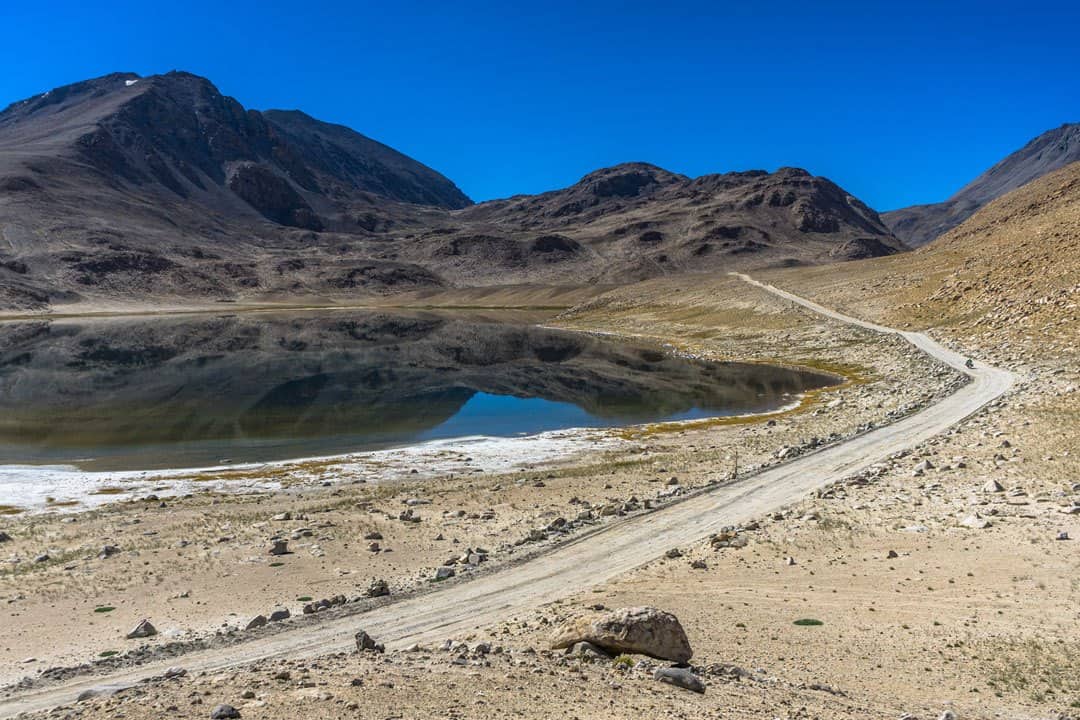
If you’re looking to add a few extra days along the Pamir Highway you can quite easily spend up to 2 weeks (or more) doing it.
Sary Moghul and Bulunkul have some great options for multi-day treks. In Bulunkul these may need to be planned in advance so you can get the permits.
We also just discovered that it’s possible to drive or hike up to Lake Zorkul, which is the start of the powerful Pamir River. It’s at the northern end of the Wakhan Corridor on the border of Tajikistan and Afghanistan.
It’s in a nature reserve and we have no idea if permits are required to visit it. Ask at Osh Guesthouse or at the GBAO checkpoint where M41 heads to Khorog and you travel on to the Wakhan Valley.
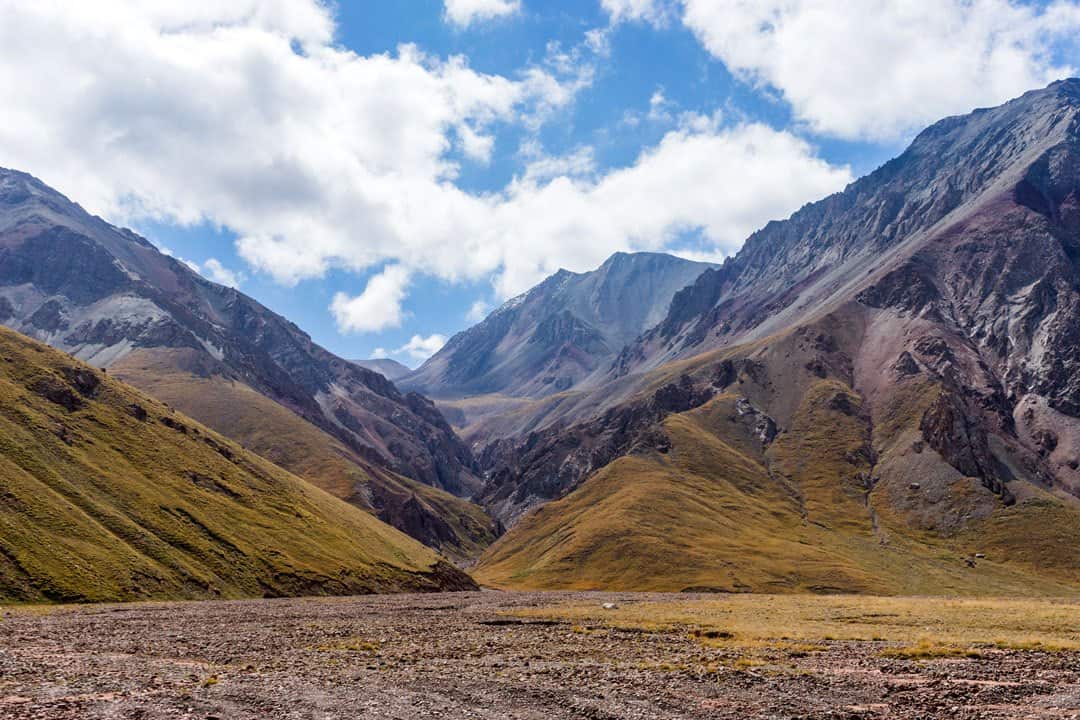
Another option is to do the Pamir Highway trip in reverse, starting in either Dushanbe or Khorog. If you go from Dushanbe we recommend breaking it up into two days, as it’s a long, long, bumpy trip. There’s also meant to be some nice hiking opportunities along the way.
If you want to leave from Khorog you can organise everything at the PECTA office. Go to the Pamir Lodge to find people to split the costs if you are renting a 4×4.
[box] Have you travelled on the Pamir Highway? Let us know what your experiences and tips are below![/box]
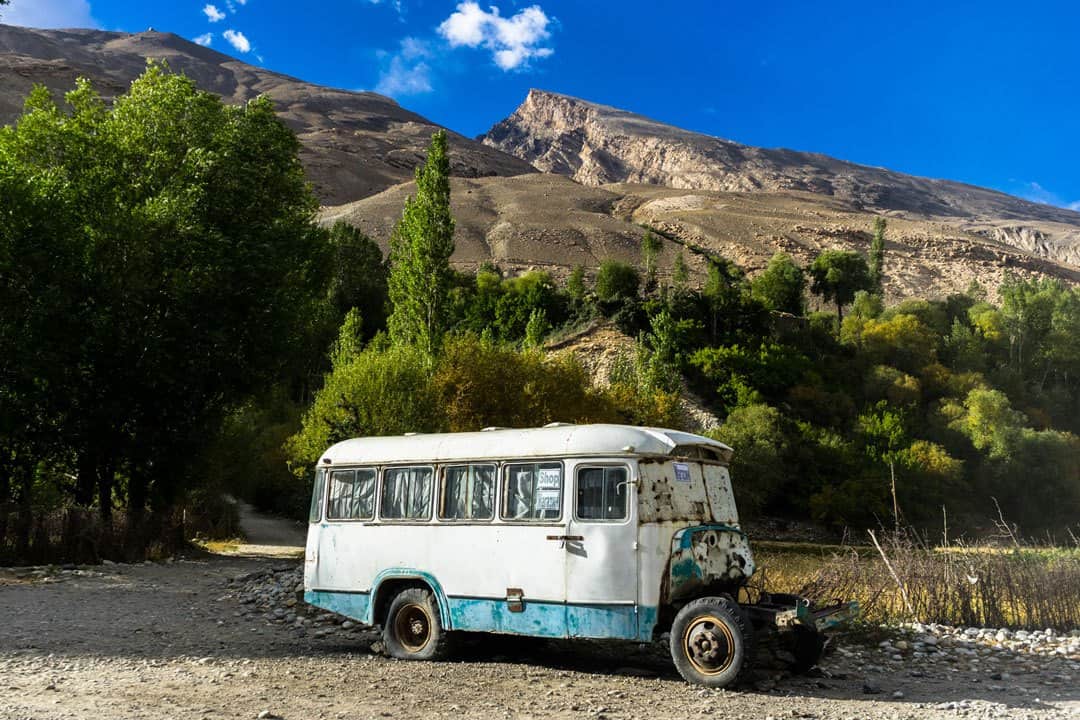
Alesha and Jarryd
Hi, We’re Alesha and Jarryd!

We’ve been traveling the world together since 2008, searching for the planet’s best destinations and adventures.
Love Travel?
Sign up for our free weekly newsletter for the best travel tips, ideas and deals!
We respect your privacy. Unsubscribe at any time.
READ MORE...
Getting Around Magnetic Island – ‘How to’ Transportation Guide
The Ultimate GUIDE to the Best MAGNETIC ISLAND BEACHES and Bays
14 Best Day Trips From Reykjavik, Iceland (2024 Guide)
Related Posts
Espresso display review – is this the best portable monitor in 2024, travel jobs – how to make money travelling the world, emerald lake lodge – a perfect canadian winter getaway, 51 thoughts on “the ultimate pamir highway, tajikistan travel guide (2024)”.
Maybe someone knows if after the Kyrgyz-Tajik border war in 2022 all borders between Kyrgyzstan and Tajikistan are closed or is it possible to cross the border now?
Great guide! I’m very interested in doing the highway in July this year, starting from Khorog. I was wondering if the guest houses offer vegetarian meals along the highway? Or if you think it’s feasible/have any advice on doing the trip as a vegetarian? We’d be renting a 4×4 and driver as you did. Thank you!
Amazing and very well written guide, We are hoping to ride the Pamir from the direction of Osh on motorcycles and if we can go via the Bartang valley then that would be great. Either way we will be travelling in this wonderful part of the world. We start our little trip in Ulaanbaatar in May so it’ll be warm by the time we arrive in Tajikistan. Thanks for a great guide.
Thank you so much Trev. Doing it on motorbikes would be amazing. Sounds like an amazing trip when you go. Maybe your plans have been delayed right because of the current health crisis. Hope you still do it. 🙂
This is so helpful blog.I am planning for next year, can you pls let me know which month did you visit Pamir highway? And how safe is wakhan corridor??
Hi Mayuri, we did the Pamir Highway in August. It is very safe. The people are so lovely along the highway. If you have your own vehicle, make sure you are prepared. There are not many mechanics along the way. All the roads are gravel. All the best
Hey Alisha and Jarryd, It is always a pleasure reading about your epic travels. The latest, to Tajikistan, is so informative. A lot of people worry about security issues in such places yet there are hidden nature gems to see.
Hi Lydia, We travel to Tajikistan every year and have never worried. We always feel safe. There are places in some western countries that are way worse, one that comes to mind is the US. Please do not read everything you see in the news. Tajikistan is a beautiful raw country. Yes it does have their issues, but so does every country. There are restricted areas that tourists are not allowed to go but that is no where near the tourist route. We suggest people go on a tour and have a local guide who is knowledgeable about the country. Take care
Thanks for a very useful blog… do you have any details for the northern route from Murghab to Khorog… as i want to start and end at Murghab…kind of round trip..
No we don’t have any information sorry. We didn’t take that route. Hope you have a great trip and find what you are looking for. 🙂
Awesome blog guys! 8 days (renting 4×4 with driver) should be enough from Dushambe to Osh?
Definitely. It will be fast but doable. Just have in mind what you want to see and don’t so you can charge through areas. All the best. Have a great trip.
One of the best travel guide to how to plan your travel to Pamir Highway
Thank you so much Talant 🙂
Bonjour !. Nous avons visité le Pamir en 2019. Jamais on a du de payer a aucun frontiere, c’était fin avril début mai, on avait eu de la neige a Bulunkul, splendide paysage avec de la sortie de jak sur la neige. A refaire. Nous sommes allee jusque le pont suspendue , belle balade et plus on peut séjourné pour la prolonger.
Nice blog! How easy is it to find another traveller to split cost? probably do it on coming sept after world nomad games 2018.
Your best option is to contact Visit Alay. They will be able to put your name down on a list and if any other travellers contact them for a trip, they will contact you. Hope you get to travel Tajikistan. It is incredible. Have fun at the World Nomad Games.
hi we are a group of 6 docs from india ,planning a central asia trip. 5 stans. want to some how squeeze the pamir highway if not full atleast part of it due to time constrain. we plan to start from osh, day one:drive down till karakul lake then back again to sary tash ,then take the A372,overnight at sarigon, day two drive to Dushanbe. valuable guidance and advice welcomed. thanks
Hi, Maybe contact the Osh Guesthouse in Osh. This is who we went through. You can talk to them about what you want and maybe they can help. All the best and have a great trip.
We have an update. Now contact Talant at Visit Alay. He will reply promptly and speaks fluent English. Hope you have a great trip. https://visitalay.com/pamir-highway/
It looks a nice roadtrip : full of adventures and meeting people along the way. Plus it looks quite peaceful and the pictures are pretty !
It was a great trip. Thank you
Thanks for the great tips, and a fantastic write up. Looks like you had great experience. I see the images and landscape resemble the Ladakh part of India. What is the best time to visit this route, is it it June-Sept?
Hi Sas, Thank you so much Glad we could help. June to September is a great time to travel the Pamir Highway. Have a great time.
In Osh, be sure to exchange your money into Tajik Somani and leave a few Kyrgyz Som before leaving as you will need to pay for accommodation and food along the way and the closest town you can exchange after Osh is Murghab with questionable rate.
Thank you for the tips Addy. 🙂
Such an excellent read, Alesha and Jarryd! Tajikistan seems like an awesome travel destination and I rarely read posts about this charming destination. I’ve read so many new things about this place from your experience!
Thank you so much Agness. It is an amazing country. Definitely check it out one day. 🙂
Hi Guys, I am planning a trip to Central Asia and Caucasus for three months starting on May 11 and ending on August 12th. My itinerary would start in Georgia, Armenia then fly to Tashkent, next overland to Tajikistan and ending in Kirguistan; so I would do the Pamir Highway from Dushanbe to Khorog. As I am a solo traveler woman, I would need some other travelers to share the costs of renting a car, where in Dushanbe do you think I could contact them? I have read about contacting in Osh but not in Dushanbe. I have planned that way as the return flights from Bishkek are cheaper than those of Dushanbe. Thank you so much for sharing your wonderful stories and useful information with us. Greetings from a 65 y.o Venezuelan lady
Hi Noelia, what an amazing trip you are going to have. Your best option is to maybe contact Green hostel in Dushanbe or Pamir Lodge in Khorog.They may have more information or you can ask to put a note on the notice board. If you want to leave from Khorog you can organise everything at the PECTA office. Go to the Pamir Lodge to find people to split the costs if you are renting a 4×4. Sorry we can’t help you more. We wish you all the best and would love to hear about your travels. Do drop us a line some time. Take care. 🙂
This is a very useful webpage. However, I’m still wondering how much you paid for renting the 4X4.
Sorry, in the meantime I noticed the info towards the end. I’m still curious, though how much it cost in total. Was it $1200? Also, how did you get out of Khorog at the end? Flying?
Yes it was. We split is up between 4 of us over 7 days. From Khorog you can get a helicopter or a small plane to Dunshanbe. But you can not book tickets, you just rock up to the airport in the morning and they’ll let you know if they are flying. It is through a valley so sometimes the winds are too strong. The other option is to get a shared vehicle. The will pack in 7 people plus the driver in a 4×4 and it will take up to 15 hours. The road is rough and raw. Be prepared. Happy travels. 🙂
Hi they are offering group tours for 7 seater cars? I mean for 7 persons instead of four? Bec. most of the iffers are for group of fours only. Thanks.
Hi Andrian, We are talking about the transport from Khorog to Dushanbe. If you choose to hire a driver the price for this section of Tajikistan will be higher and you can put as many or as little people as you want in the 4×4. We took shared transport which means we share with locals to make it cheaper for ourselves. They put 7 people from Khorog to Dushanbe and the drivers will not leave the station in Khorog until all seats are filled in their car. Along the Pamir Highway from Osh (Krygyzstan) to Khorog (Tajikistan) we hired a driver and we spilt the price between 4 people. Happy travels
Wow, this post is really amazing! I would love doing this but I would be a solo traveller and I am not sure it I have the balls to do this haha. I might be afraid to not be able to fill up a 4×4 (I would like to split the costs) and afraid of a lot of other things. Did you ever feel unsafe? In what period did you make this trip? I would have time in April; do you know anything about the climate then and the conditions of the roads? If it would be snow all over the place, it’s perhaps not the best time to do this trip!
Hi Barbara, my friends and i (3 of us – 2 boys and a girl) planning to do PHT also in april next year, end of april to be exact and still planning about our trip. we are malaysian which is not really hardcore backpackers but love to see nature, and love to enjoy the good scenery, our planning currently will start pamir highway trip in osh around 28 @ 29 april till early may arnd 5 – 6 may maybe.. because of the budget, yeah, im planning to find another travel partner to rent a 4×4.
however, we still have not confirmed yet about this pamir highway trip due to our small budget. in case you still interesting please do contact me thru my email [email protected]
Hi Chek Wan, That is amazing you are planning to travel the Pamir Highway. Do double check if it is open. In the winter months they are closed and you can not access a lot of the roads. We think it is open May to October but do check. Try to contact Osh Guesthouse. They might be able to help you out. 🙂
Hi Barbara, don’t worry about filling up a car. It will happen. Surprisingly there are many people wanting to do the trip and they are either travelling solo or as a couple. We stayed at the Osh Guesthouse but it you are not staying there you can easily pop in and put you name on the board. You may have to wait a week at the most. If you are in Bishkek, give them a call and put you name on the board then. Then you have a little time to explore and get down to Osh. We didn’t feel unsafe once. There are a lot of security checks but this is normal. In April I think the season is closed. It is only open from May to October. Do ask around and check. All the best and have a great time.
Hi guys, did you have to get double entry visa to access the Wakhan corridor or to get Afghani views?
I have read some people have said you need an Afghan visa for Wakhan corridor and double entry visa.
We just want to drive along the corridor or even at least see it from a distance.
Thanks for reading! Great article btw, we are going to follow the 7 day plan.
Hey Dennis. Yes you need a double entry Tajik visa and the GBAO permit to be able to enter (and return from) the Afghani Wakhan Corridor, but not if you stay in Tajikistan (just GBAO permit needed). If you don’t have these you can see the Afghani side from Tajikistan, although we have heard amazing things about the mountains across the border if you get a chance to cross. Happy travels.
Just finished a small group tour on the Pamir Highway on August 3rd. You captured the feel of being there . . . in both word and great pictures. I literally have some of the same shots! Thanx for sharing your adventure.
Thank you so much Laurel. We are so glad you had an amazing time. What was your highlight? We can not wait to get back to this part of the world. (Sorry for the late reply) 🙂
Hi Jarryd, this is such useful information. Thank you. We have booked a 4WD for 8 days and plan to drive between Osh and Dushanbe. Do you think that is going to be tight? We don’t plan to hike/trek which is something that consumes time.
Also did you by any chance spend time in the North of Kyrgyzstan around Lake Song Kul/Karakol etc. We are debating how much time to spend there in light of the fact that we will have spent 8 days on the Pamir Highway. It also looks very nice and somewhat similar. Any advice here? Thanks!
Hey PJ, glad you enjoyed the article. How exciting that you have 8 days on the Pamir Highway! If you’re not planning on trekking, and don’t want to spend too much time in Khorog, it’s definitely doable.
Also we just got back from Karakol actually, and there’s some incredible cultural stuff going on there, such as Dungan (Muslim minority from China) cooking classes, yurt stays at Jyrgalan, boat tours, etc. It’s really growing as a tourism destination. Stop by the tourist office that is next door to Fat Cat Cafe and tell them NOMADasaurus sent you. Happy travels.
I am absolutely amazed at the beauty of these places. It’s rugged, raw and surreal. My personal favorite is the picture of the soldiers playing with the local and the scenery in the background. Thank you so much for penning down the itinerary in such detail. We are definitely going to add this to our list for the year. Will probably bother you with questions, when we do 🙂
Thank you so much for reading. It was a little surprise to walk around town and seeing a bunch of soldiers playing volleyball. And some still armed too. Crazy. It was a definitely a highlight of our Central Asia trip. Highly recommend it. Happy travels and happy planning Divya and Vikas
so. Freaking. COOL! Thanks dudes, the pics are dope but that Russian tank takes the gold for me though. Now my personal travel-bucket list has been lengthened… again. Lookin’ forward to more!
Thanks so much Aaron. It’s an awesome place to travel. Definitely get there sooner than later. 🙂
wow!It sounds really exciting.The views along the highway are superb.Definitely home stay experience is worth to spend time with locals while understanding a bit of their culture…
Thank you. They were so amazing. All the homestays were wonderful and the food was so delicious. A few spoke a little English or our driver helped us out when he could.
Leave a comment Cancel reply
Save my name, email, and website in this browser for the next time I comment.
Nature has been kind to Tajikistan, bestowing the country with breathtaking beauty: here you’ll find mountains, glaciers, lush river valleys and dense forest, supporting a bewildering array of flora and fauna. Sophie Ibbotson, author of Tajikistan: the Bradt Guide
Tajikistan is the roof of the world. When you first start to read about the country, this same cliché pops up time and again.
Initially it may seem that such repetition shows a lack of imagination among writers (at least a century of them, and counting), but when you finally come to stand atop a peak in the High Pamir, staring down as a concertina of meringue-like peaks unfolds beneath you, or even swoop down to land on a scheduled flight, holding your breath else the pilot brushes the snow off the mountaintops with the underside of the plane, you too will find the same phrase tripping off your tongue. Tajikistan is the roof of the world.
Nature has been kind to Tajikistan, bestowing the country not only with breathtaking beauty but with a moderate climate too. Mountains and glaciers, lush river valleys and dense forest support a bewildering array of flora and fauna, including the famed (but sadly camera-shy) Marco Polo sheep and the even rarer snow leopard.
Hot springs – either the result of geological faults or miracles enacted by ancient holy men – are scattered through the valleys, their warm, mineral-rich waters both a pleasant diversion on a journey, and, for local Muslims, important pilgrimage sites. Alpine meadows bursting with the bright colours of spring flowers create a patchwork rainbow that streaks across the horizon, the pastures welcome picnic spots for road-weary tourists and grazing goats alike.
Food and drink in Tajikistan
Tajikistan does not have a long tradition of eating in restaurants: it was nigh on impossible during the Soviet period due to food shortages and the fact that people were encouraged to eat collectively in the work canteen. This has changed in urban centres, particularly as families choose to host wedding feasts and other large celebrations in restaurants rather than at home, but you will not find the density or diversity of restaurants typical in some other parts of Asia.
Restaurants in Tajikistan (particularly those situated outside of Dushanbe) typically have a limited menu of Russian and Tajik dishes. It is rare for everything listed to actually be available. If the restaurant is not fully booked for a celebration you won’t need a reservation, nor to wait for a table. Service may be chaotic but it is generally good-natured.
Sit-down places to eat typically fall into three categories. There are large, often fairly ghastly, restaurants which only cater to groups, either private parties or tour groups. These serve a buffet or set menu, and they may or may not welcome independent guests.
Second, and infinitely preferable, are Western-style restaurants which have multiple tables, a menu, and cook to order. You can wander in off the street and sit down, as long as it’s during opening hours. In larger cities you’ll have a choice of different cuisines – Dushanbe’s restaurant scene is looking decidedly cosmopolitan these days – and you can expect a reasonable level of customer service. You will be expected to leave a tip: 10% is standard.
Thirdly, you have local cafés, which are unpretentious and generally offer good value for money. These typically serve Tajik cuisine or other easily prepared snacks, and depending on the establishment you will either order from the counter and then take a seat, or wait for someone to come to you. There is unlikely to be a menu, and staff may well not speak English, so be prepared to look around at what other people are eating, point and smile. A tip, though not expected, is always appreciated.
More common than restaurants and cafés are street-side food stalls: from American fast-food stands with burgers and fries, to smoking grills and the vinegary smell of shashlik and onions wafting down the road, making your stomach rumble. Women with trays piled high with savoury pastries saunter through markets and the lobbies of office buildings; trestle-tables nearly buckle beneath the weight of freshly baked bread. The local fare tends to be tastier (and cheaper) than attempts at foreign food.
Tajik cuisine
Tajikistan runs on bread and tea. Wherever you are, from a customs post to a shepherd’s hut, there will always be a kettle on the boil and a few china tea bowls filled with a light, steaming tea.
Tajik cuisine is definitely central Asian (plenty of grilled meats and dairy products), but with an influence from Afghanistan and Russia too. The national dish, as far as there is one, is plov or osh , an oily rice-based dish with shredded carrot, meat and occasionally raisins, roasted garlic or nuts. Plov is eaten with the hands from a communal plate at the centre of the table.
Equally popular is qurutob . Balls of salted cheeses ( qurut ) are dissolved in water and poured over dry, flaky bread. The dish is then topped with onions fried in oil. It may be accompanied by laghman (noodle soup with mutton). Tajik restaurants tend to offer diners quite a limited menu.
Every meal is accompanied by round, flat bread called non . Non is treated almost reverentially: it should not be put on the floor, placed upside down or thrown away. If it has turned stale it should be given to the birds.
Common snacks include manti (steamed meat dumplings), somsa (triangular pastry with a meat and onion stuffing) and belyash (deep-fried dough stuffed with minced lamb).
Dairy products feature heavily in Tajik cuisine. In addition to the qurut are chaka (sour milk) and kaymak (clotted cream), both of which are eaten with bread. Western-style yoghurt, including bottled yoghurt drinks, is popular for breakfast. If you are in Tajikistan in late summer and early autumn, the country is bursting with fresh fruits. Roadsides stalls sell watermelons the size of beach balls; the sweet, juicy pomegranates are a glorious shade of pink; and you can also enjoy grapes, apricots, apples, figs and peaches.
Health and safety in Tajikistan
The medical system in Tajikistan is seriously overstretched. The quality of medical training has fallen since the end of the USSR, many doctors have left to find work abroad, hospitals are run-down and equipment is out of date. Outside the major cities there is also a shortage of drugs and other medical supplies.
If you are ill or have an accident, you will be able to receive basic emergency treatment in Dushanbe, Kulob or Khujand but will then require evacuation (MEDEVAC) to a country with more developed medical infrastructure for ongoing care. One of the best hospitals in the country is in Khorog, opened with the help of the Aga Khan Foundation, with doctors who have often trained or worked overseas and tend to speak a good level of English.
Most towns in Tajikistan have aptekas, small pharmacies selling a range of generic drugs. You do not need a prescription to purchase medication, but should read the instructions carefully or get someone else to explain them to you.
Do not drink tap water – it can be a serious health hazard. Use bottled water, which is widely available, or even better, take a reusable water bottle and filter with you. Water purification tablets can be used when trekking or camping.
Tajikistan is generally a safe country for tourists to visit. All parts of the country are accessible to foreigners, though you will need a permit to visit GBAO. It is advisable to check the FCO travel advice before travelling, however, as issues such as Covid-19, natural disasters, and border openings/closures may influence how and when you travel.
Female travellers
Tajikistan is generally a safe place to travel, whether you are male or female. That said, you should exercise the usual personal safety precautions and dress modestly, especially in conservative rural areas. It is not culturally acceptable to wear revealing clothing (including shorts, vest tops, or T-shirts which reveal your stomach) in Tajikistan. If in doubt, look at what ordinary women are wearing on the street, and dress with commensurate modesty.
LGBTQ+ travellers
Homosexuality has been decriminalised in Tajikistan but there is, to our knowledge, no open gay scene in Dushanbe. Many people in Tajikistan are deeply conservative, especially when it comes to the issue of sexuality, and homosexuality is still often seen as a mental illness (a hangover from the Soviet period).
If you are travelling with a same-sex partner, you would be wise to refrain from public displays of affection and be cautious when discussing your relationship with others: it is often simplest to allow others to assume you are simply travelling with a friend. Double rooms frequently have twin beds, so asking for one room is unlikely to raise eyebrows in any case.
Travellers of colour
Travellers of African descent, and those with red or blond hair and very pale skin, tend to stand out while travelling through Tajikistan, despite millennia of cultural mixing in the region. You may be stared at on the street, or approached to have your photograph taken, especially in smaller towns and rural areas. Many of these interactions are out of curiosity and easily, even humorously, managed. However, alcohol-fuelled aggression is not uncommon, so try to avoid physical confrontation if possible.
Travelling with a disability
People with mobility problems will experience difficulty travelling in Tajikistan. Public transport is rarely able to carry wheelchairs, few buildings have disabled access, and streets are littered with trip hazards such as broken paving, uncovered manholes, and utility pipes. Hotel rooms are often spread over multiple floors without lifts and assistance from staff is not guaranteed. If you have a disability and are travelling to Tajikistan, you are advised to travel with a companion who can help you when the country’s infrastructure and customer service fall short.
Travel and visas in Tajikistan
Unless you are a CIS national, you will almost certainly need a visa to enter Tajikistan. The Ministry of Foreign Affairs now offers an electronic visa for tourists that can be processed online through a special website . The process usually takes up to five business days, requires a scanned copy of your passport (with at least six months’ validity remaining) and costs US$50, plus an additional US$20 if you wish to visit the GBAO.
As of 1 March 2020, you can now apply for an e-visa with multiple entries, which is ideal if you’re planning a wider trip through central Asia and need to enter Tajikistan more than once.
Getting there and away
However you choose to travel, Tajikistan is not a particularly easy country to reach. Land borders open and close somewhat erratically, flights are irregular at the best of times and cancelled at the first sign of bad weather, and wherever you arrive from by train you’ll require a passport full of visas and the patience of a saint.
The vast majority of visitors arrive in Tajikistan on a flight to Dushanbe and this is, on balance, the easiest way to travel. Unless there are extenuating circumstances, you will need to have a visa before boarding the plane and may be prevented from flying if you do not.
Direct flights to Tajikistan tend to come only from the Middle East, Russia and the other CIS countries, although national carrier Somon Air is starting to open up new routes, including a new direct flight to New Delhi. It is likely, therefore, that if you take a flight originating in Europe or the USA you will need to get a connection in one of the regional hubs (Almaty, Istanbul or Moscow).
The safety record of many of central Asia’s airlines is such that they are prevented from flying in European airspace, although Somon Air does serve a number of more localised routes, including to Moscow and Istanbul.
There is a certain romance attached to train travel, and if you have the time to sit and watch the world pass by at a leisurely pace (very leisurely in the case of the old Soviet rail network), it is still a viable way to reach Tajikistan. Regardless of where the train originates, you will need to ensure you have a valid transit visa for every country en route , as well as a visa for Tajikistan.
Ticket classes are categorised in the Russian style. First-class or deluxe accommodation ( spets vagon ) buys you an upholstered seat in a two-berth cabin. The seat turns into a bed at night. Second class ( kupe) is slightly less plush, and there are four passengers to a compartment. Third class ( platskartny ) has open bunks (ie: not in a compartment) and, if you are really on a very tight budget indeed, a fourth-class ticket ( obshchiy ) gets you an unreserved and very hard seat. Bring plenty of food for the journey, and keep an eye on your luggage, particularly at night, as theft is sadly commonplace.
There are three main train routes to Tajikistan. There are two trains a week in each direction between Moscow and Dushanbe, a weekly service between Moscow and Khujand, and a twice-weekly service between Samara (Saratov) and Khujand. All these services pass through Tashkent; the Dushanbe train also passes through Samarkand. Tickets to Moscow (second class) start from just over US$145 and the trip takes four days.
The train timetable for the whole Russian rail network (including central Asia) is online at www.poezda.net . The Man in Seat 61 also has detailed information, including personal observations, about train travel in the former USSR.
Our preferred way to enter Tajikistan is through a land border, not because customs and immigration make it a particularly easy or pleasant experience, but because of the freedom having your own transport gives you once you finally make it inside.
Border crossings open and close regularly, often with little warning, and some crossings are open only to locals and not to foreigners. Keep your ear to the ground and, if in doubt, contact a tour operator or Tajik consulate before confirming your travel plans. We have previously ignored our own advice, with the result that we had to drive overnight from Panjakent to the Oybek crossing north of Khujand to leave Tajikistan before our visas expired. We would not recommend you follow suit.
When to visit Tajikistan
Tajikistan’s climate is continental, and varies dramatically according to elevation, so when to visit Tajikistan depends on where you are going. It is the wettest of the central Asian republics, but again rain and snowfall depend on location, from the relatively dry valleys of Kafiristan and Vakhsh (500mm a year), to the Fedchenko Glacier, which receives in excess of 2,200mm of annual snowfall.
Temperatures in Tajikistan’s lowlands range on average from -1°C in January to as much as 30°C in July. The climate is arid, and artificial irrigation is required for agriculture. In the eastern Pamirs it is far colder: winter temperatures frequently fall to 20° below freezing, and the average temperature in July is just 5°C.
When to visit
Tajikistan explodes into life in the spring. As the snows subside and the higher parts of the country once again become accessible, the lower mountain slopes and pastures are a riot of colour. Tajiks celebrate Navruz, the Persian New Year, on the spring equinox, 21 March, with feasting, dancing and adrenalin-charged games of buz kashi , Tajikistan’s answer to polo.
In the summer months, when temperatures in Dushanbe and the lowlands soar to uncomfortable levels, the Pamirs come into their own: you can drive the Pamir Highway without the risk of snow from June to September, and at the same time climb the higher peaks. Glacial meltwaters have slowed, the rivers are no longer in spate and, though an occasional blizzard may still catch you unawares, you can join the shepherds as they drive their flocks up into the mountains to grow fat on the grasses of high pastures.
Tajikistan marks its Independence Day on 9 September, and the crops in the Fergana Valley and other agricultural areas are harvested. The fresh fruits at this time of year are divine. Nights in late September will already be cold in the Pamirs, and from October roads in the higher mountains will be impassable due to snowfall and ice. As the autumn progresses the emerald-green trees that form ribbons through the bottom of each river valley turn almost overnight to a fiery red and orange. In Tajikistan’s lower regions, which include most of the north and southwest, there’s a bite to the air come nightfall, but bright sunshine still warms up the day.
The winter is hard in Tajikistan, with many communities cut off and, if the harvest has been poor, dangerously short of food. For those with money, however, the snowfall marks the start of the ski season, and the Takob ski resort becomes busy with day trippers from Dushanbe.
What to see and do in Tajikistan
Some 12km to the east of Bokhtar are the archaeological remains of Ajina Tepa, the 8th-century Buddhist monastery from which the remarkable Sleeping Buddha (now in the National Museum of Antiquities in Dushanbe) was uncovered in the 1960s.
Though all of the finds were removed to Dushanbe or museums in Russia, it is still possible to see remnants of the 2.5m-thick mud-brick walls that protected the internal courtyard and monastic buildings. Approximately 1,500 artefacts have been excavated from the site since the initial archaeological dig in the 1960s, a testimony to the monastery’s importance and opulence.
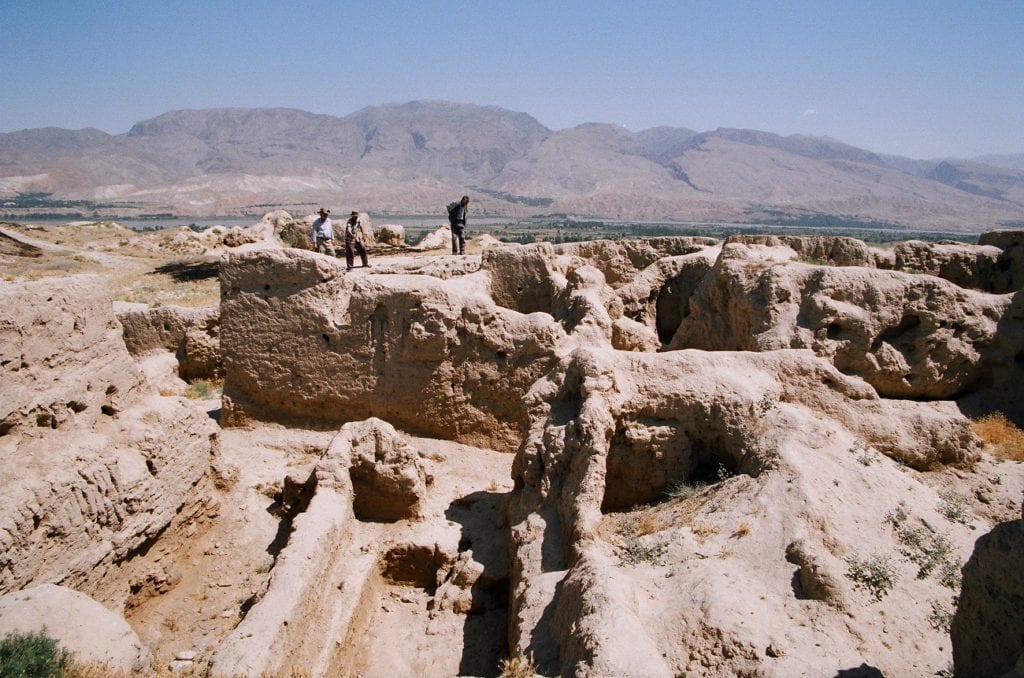
Ironically, despite its holy affiliations, the name Ajina Tepa itself means ‘Devil’s Hill’, and fragments of gargoyles and other demon-like sculptures were found among the ruins; scholars believe these items served to scare away opponents of Buddhism.
With its style caught somewhere between stark Soviet-era and laid-back Western café culture, Tajikistan’s capital city feels more like a market town than a metropolis. Its skyline is scraped by a handful of mid-rises and accented by the world’s now second-tallest flagpole, and the parks and gardens have benefited from some lush landscaping and impressive water features.
Without centuries of Silk Road wealth or the patronage of indulgent emperors, Dushanbe’s façades have historically been far humbler than those of many of its central Asian rivals, though that is changing with the controversial push towards bigger, bolder buildings: the opulent Navruz Palace and immense National Museum of Tajikistan among them.
But the geography of the valley, the paths of the rivers, and the acres of parkland and trees still define the shape of the city and give it a quietly bustling feel. In the heart of the Hisor Valley, at the confluence of the Varzob and Kofarnihon rivers, Dushanbe (meaning ‘Monday’) takes its name from the weekly market, which historically took place on this site.
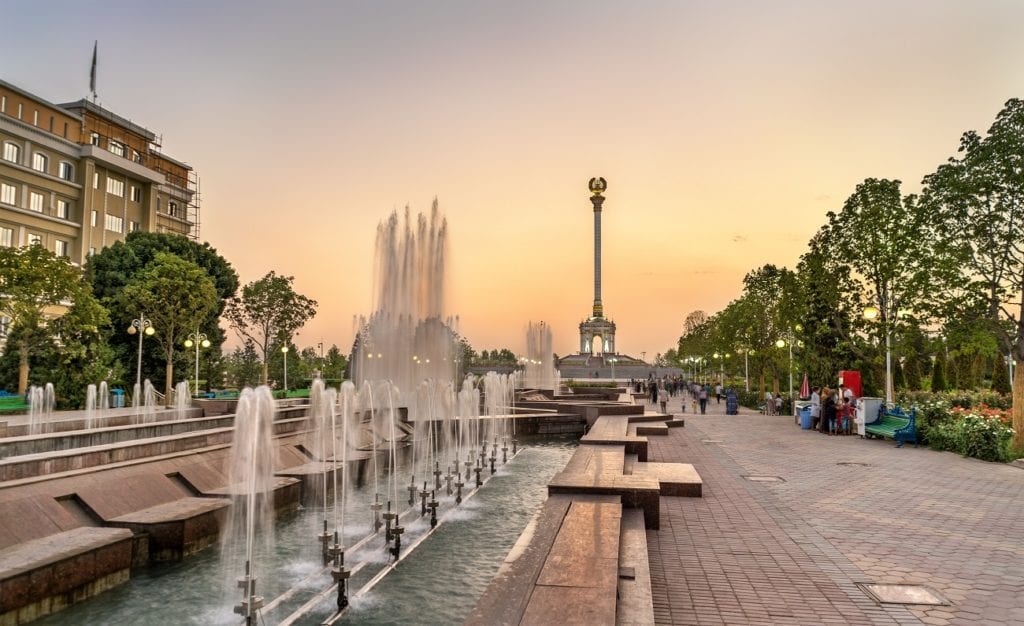
Dushanbe’s geographical isolation may have contributed to its less starkly Soviet architecture, but many of the more notable buildings from the country’s decades as a republic of the USSR – including the central post office and the much-loved Vladimir Mayakovsky Drama Theatre – have been demolished in recent years and replaced by even larger commercial structures financed by developers from across Asia.
Still, many of the buildings in the centre of the city are predominantly low-rise, brightly painted, and hark back to an earlier Russian style. The tree-lined avenues, and the manicured parks and cafés in squares, create an almost continental feel, and the clutch of monuments and museums speak to Tajikistan’s push for a post-independence architectural legacy.
The best things to see and do in Dushanbe
National museum of antiquities.
The largest and most important museum in Dushanbe, this cultural highlight houses artefacts covering 3,000 years of Tajik history. Recently renovated, the museum is laid out according to a mixture of geography and chronology. Some of the more important items are labelled in English, and the staff are keen to tell you about the items on show.
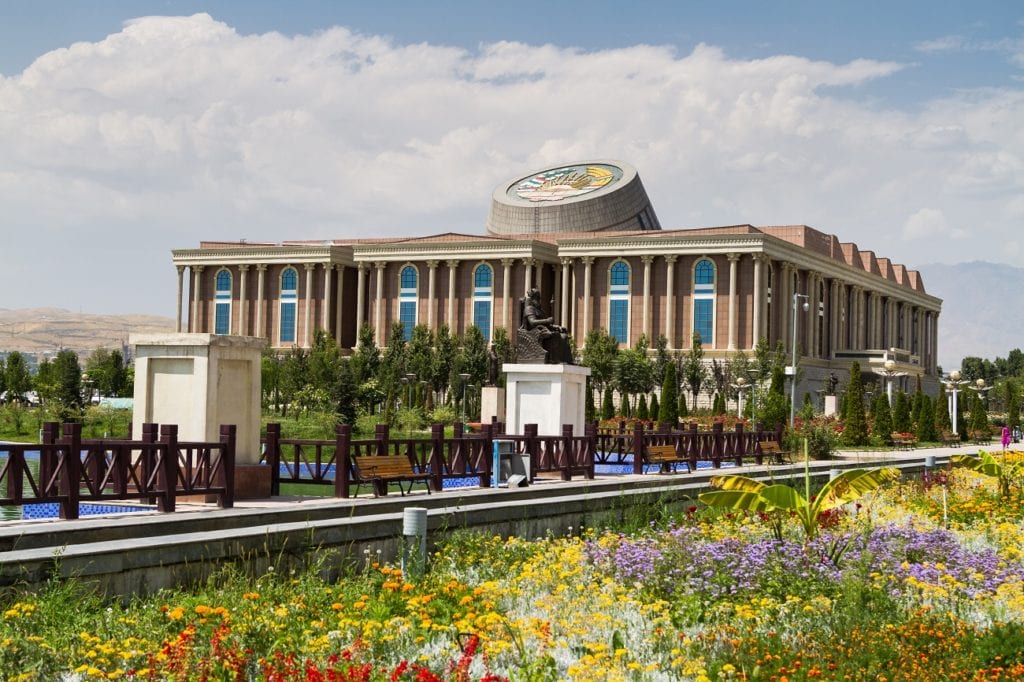
The museum’s greatest draw, the Sleeping Buddha, takes pride of place on the second floor. Since the destruction of the Bamiyan Buddhas in 2001, this 16m-long statue is the largest remaining Buddha in central Asia. Dating from around ad500 and sculpted from local clay, it was discovered at the Buddhist monastery of Ajina Tepa in 1966 and had to be moved to Dushanbe in sections.
Rudaki Park
Sandwiched between Rudaki and Ismoili Somoni, this sprawling park is a well-maintained space with numerous flower beds that come into bloom in early summer and are a colourful addition to the landscape right through to autumn. In September, the beds are a riot of red and orange.
Whichever path you take through the park you’ll be unable to miss the world’s second-tallest flagpole. Rising 165m above the park, this controversial structure cost US$3.5 million to build and was erected as the world’s tallest in May 2011 as part of celebrations to commemorate 20 years of Tajik independence. Three years later, the city of Jeddah erected a 170m pole, snatching the flag for Saudi Arabia.
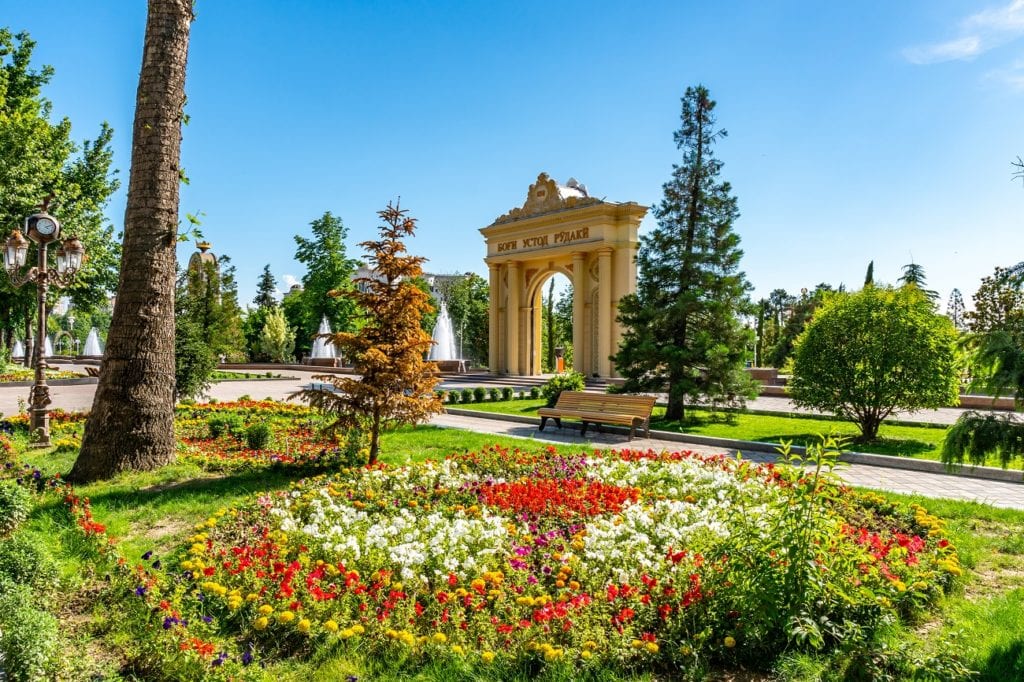
At its heart lies the Palace of Nations, an imposing structure that can be seen from across the city. With its golden dome, it is home to both President Rahmon and many of the government ministries. Though photogenic, the palace guards are a little jumpy about foreigners wielding cameras, so if you wish to take a photo then do so subtly. This is not the place to set up your long lens on a tripod.
Other photo opportunities in this area are the ostentatious golden statue of Ismoili Somoni with its two uniformed guards, the elegant, marble Independence monument (aka Stele), and the rather more tasteful Arch of Rudaki. The statue of Rudaki stands beneath a colourful mosaic arch and is reflected in the pool of water below. Don’t miss the immense artificial waterfall built into the side of a hill overlooking the racetrack and the river.
National Library of Tajikistan
Relocated from its original position by the Academy of Sciences, the new National Library opened in 2012 and is designed to look like an open book. The biggest library in central Asia, it holds over 10 million books – the original building housed only 2.5 million when it opened, but a call was put out to Tajiks to donate books to help fill the shelves.
On the first floor you can find books about Tajik history, culture and traditions. The library also houses an important collection of ancient manuscripts that includes one of the earliest copies of Firdausi’s famous work, the Shahnama (Book of Kings).
Writers’ Union Building
On the northern side of Ismoili Somoni, this is one of Dushanbe’s most unusual but striking constructions. It dates from the Soviet period but its façade is covered with life-sized statues of Tajik poets and other cultural heroes whose lives and work span the last millennium.
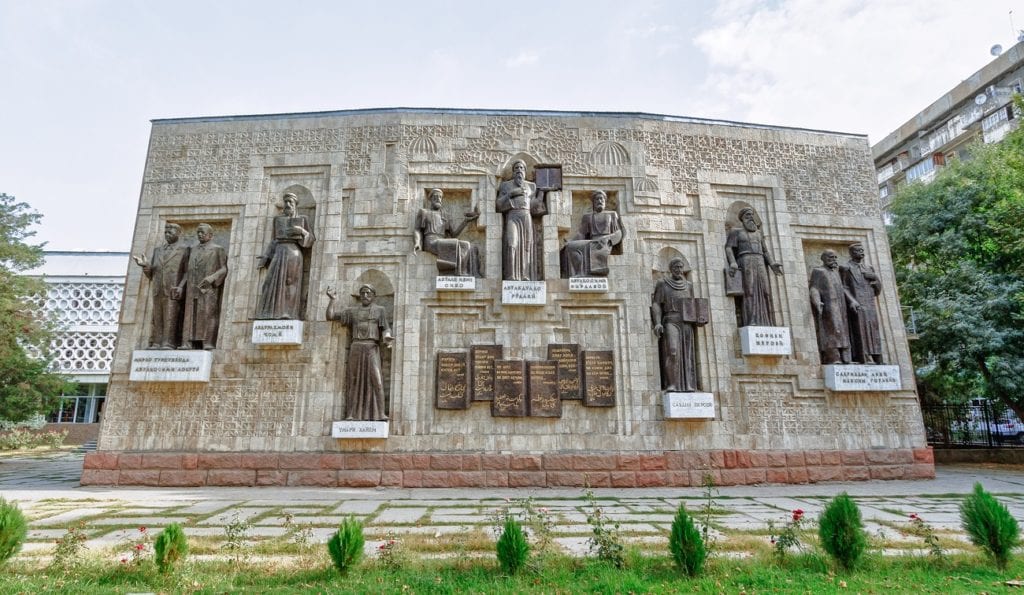
With the notable exception of Firdausi, few of the names are easily recognisable to foreigners, but this monument does show the high esteem in which the Tajik people hold their vernacular literary figures.
Garm Chashma
Some 30km south of Khorog on the road to Ishkashim is the village of Andarob – the turning-off point for Garm Chashma, the best hot springs in Tajikistan. Legend has it that Ali struck the ground with his sword while fighting a dragon, and hot water spewed forth.
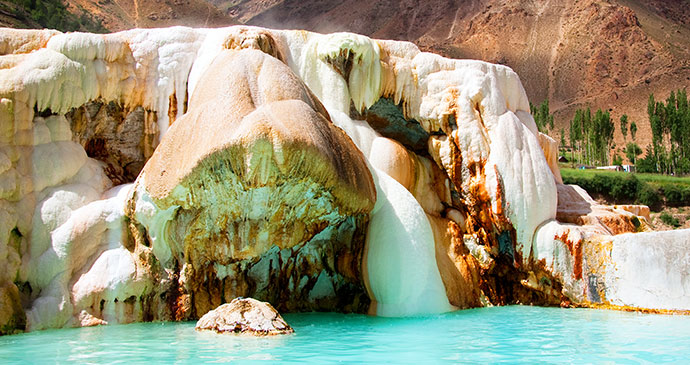
The springs, which are surrounded with a vast, cave-like mineral deposit, are reputed to treat 72 different types of illness, the primary ones being dermatological and orthopedic conditions. They are used in turn by men and women; if you arrive during the other sex’s session you can either wait or use the covered (and far less dramatic) side pools.
It is expected that you will bathe naked, and the salts and sulphur leave your skin feeling remarkably soft. At 65°C, it’s recommended to stay in the water for only 10–15 minutes, but we were assured by staff at the pool that the waters are safe for everyone. Prices range from TJS2 to TJS25 depending on when you go and whether you use the VIP pool.
It is possible to stay at the site overnight at the Somon-TM hotel, owned by the president’s daughter. Rooms are all en suite and expensive by Tajik standards (especially outside Dushanbe), but you do get breakfast and a private session at the VIP pool included in the price.
Close to Andarob, a little off the main road, is the Kuh-i Lal (Ruby Mountain) described by Marco Polo. The mine here still produces small quantities of spinels (also known as balas ruby) and you will occasionally be offered uncut stones to buy.
One of Tajikistan’s largest and wealthiest cities, Khujand has an almost cosmopolitan air and it bears the weight of its turbulent history well. Parks and monuments have all been sensitively restored, the bazaar is one of the liveliest in central Asia, and the mighty river, Syr Darya (Jaxartes), is a striking urban centrepiece. The well-paved streets, commercial centres and modern airport all reflect the city’s relative prosperity and solid position as an economic engine in the Fergana Valley.
Khujand feels much friendlier and relaxed than Dushanbe, having a compact centre where it’s impossible to escape the smell of its infamous shashlik, and many an hour can be whiled away people watching from the pavement restaurants and cafés.
While its most famous monuments are centuries old, they are starting to be rivalled by newer attractions such as the cable car, opened in 2019, and the increasing number of boat trips being offered down the sparkling clear river.
The best things to see in Khujand
Sheik muslihiddin mosque.
The fairly modern Sheik Muslihiddin Mosque is the city’s largest place of worship and cuts a striking figure on the skyline: the intricate portico, tiled minaret and turquoise domes would not look out of place in Bukhara or Samarkand. There is an attractive 19th-century minaret made of baked-mud bricks. It stands 21m tall and is a particularly popular resting place for the local pigeon population.
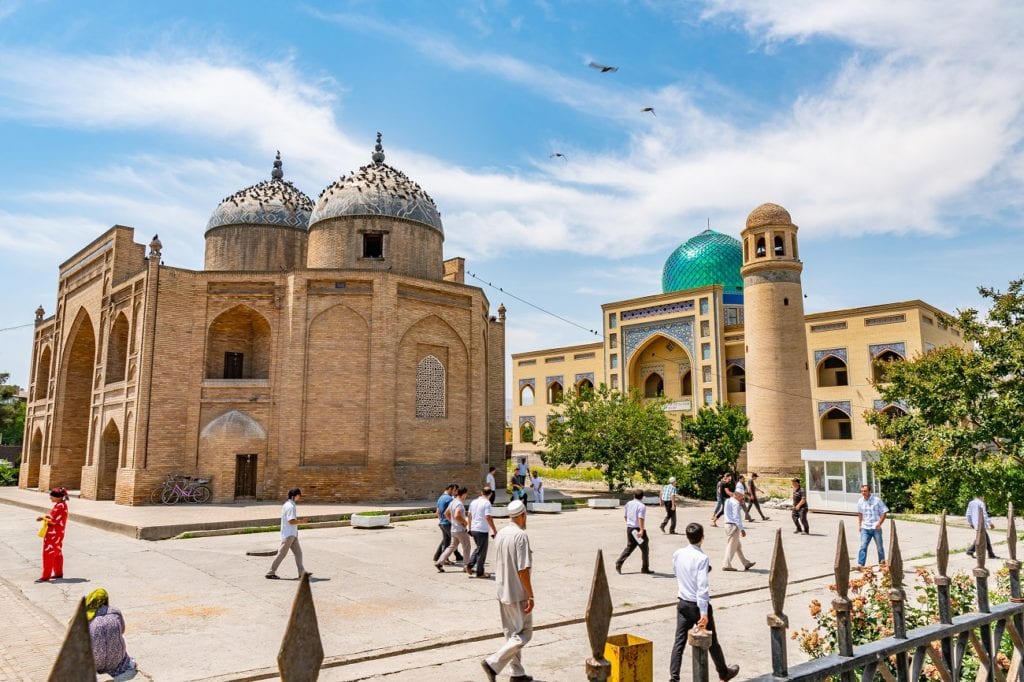
Sheik Muslihiddin (1133–1223) is buried in the 14th-century gilded mausoleum on the same site. He was a holy poet come miracle worker who was revered by local people. Originally buried in the suburbs, his remains were moved here shortly before the Mongol invasion. The mud-brick tomb and its contents were burned by the Mongols and completely destroyed, so the mausoleum you see today dates from two later periods of construction in the 14th and 16th centuries respectively.
Panjshanbe Bazaar
On the opposite side of the square to the mosque is Panjshanbe Bazaar, Khujand’s central market. The vast pink edifice with its attractive white plasterwork and central semi-dome looks as if it should be the set for a fairy-tale wedding or an 18th-century royal ball, but it in fact dates from 1964 and was always intended to house market traders and their wares.
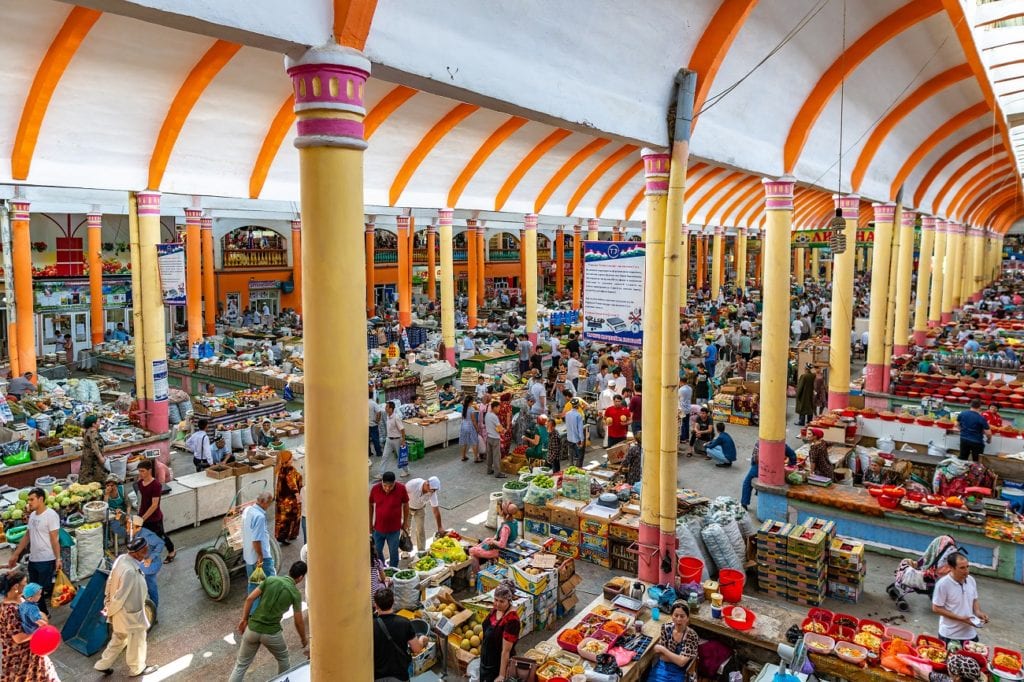
Climbing the stairs to the right of the main entrance enables you to get a closer look at the beautifully painted ceiling, and also offers a good vantage point for photographs across the square. The market itself has a lively atmosphere, particularly in the morning, and you’ll scarcely be able to set foot among the fruit stalls before someone will accost you with a slice of melon or handful of pomegranate seeds to try.
Every kind of good is for sale here, and the hours fly by as you rummage around, engage in riotous charades and buy all sorts of things you never knew you needed. It’s a great place for people watching, and the market traders are friendly, always keen to chat and pose for photographs.
Khujand Fortress
A short distance west of Ismoili Somoni is Victory Square (also called Pushkin Square) and the historic centre of the city: Khujand Fortress. Archaeological excavations on the site have unearthed Graeco- Bactrian coins, pottery shards and other items which date the earliest parts of the citadel to the 4th century bc. Many of these are displayed in the museum.
The fortress was continually rebuilt and expanded for 2,500 years, however, as every time it was attacked, significant reconstruction was required. It reached its greatest extent in the 13th century, with thick clay walls atop an embankment, a water-filled moat, and a city wall encompassing 20ha of land, but even then it was no match for Genghis Khan. The Mongols completely destroyed the fortress.
Kamoli Khujand Park is home to one of Khujand’s newest tourist attractions, a cable car taking you on a slow and graceful journey over the Syr Darya, with an optional stop on the north side of the river. VIP carriages offer the opportunity to relax and enjoy the view while sitting on a sofa.
Lake Sarez (3,263m) is often referred to as the ‘sleeping dragon’, and it is easy to see why. It was formed by an earthquake in February 1911 estimated to be between 6.5 and 7.0 on the Richter scale, as the resulting landslide shifted over 2 billion m³ of rock and formed the Usoi Dam. At approximately 5km long, 3.2km wide and up to 567m high, it is the tallest natural dam in the world.
Named after the village buried by the landslide, it killed an estimated 302 people. The isolation and destruction of the mountain tracks was such that word did not reach the Russian posts at Murgob and Khorog about the earthquake for six weeks.
Following a landslide that caused a 2m-high wave in the lake in 1968, investigations were held into the stability of the dam. The primary danger is thought to be a partially detached section of rock around 3km³ in size which could break loose and fall into the lake. Owing to the narrowness of the valley below, a flood would be highly destructive.
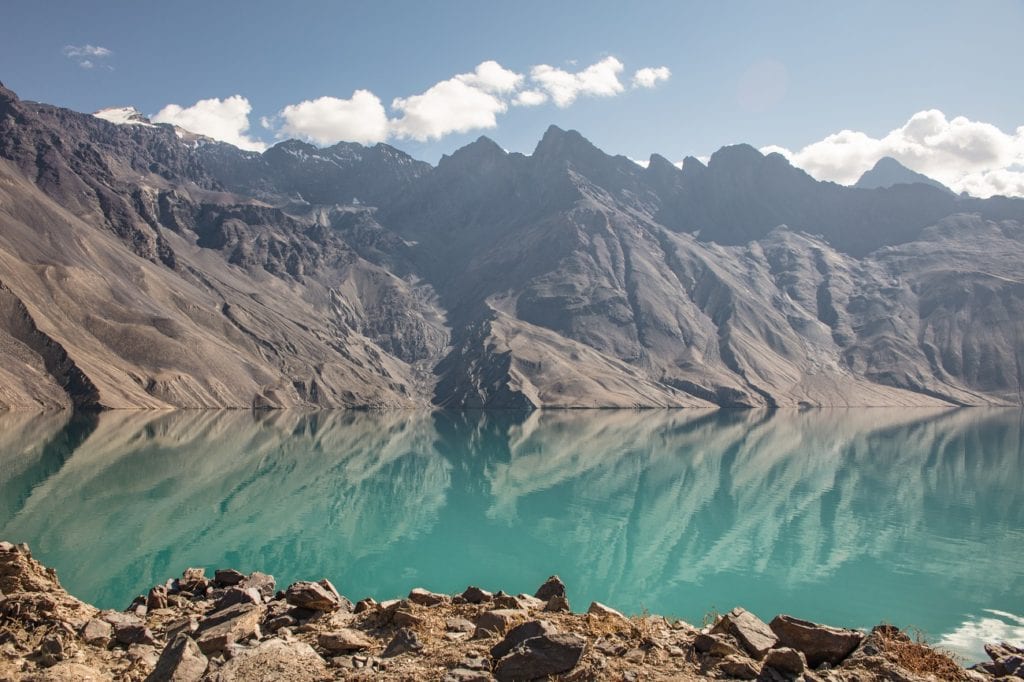
Initially, a 50m-tall wave of water travelling at 300km/h would destroy all of the villages in the Bartang Valley. Within 10 hours, the wall of water would flood the flat parts of south Tajikistan before dividing into two large rivers which move on to Uzbekistan and Turkmenistan, finally reaching the Aral Sea. In total, it is thought the flood could affect over 5 million people, 370,000 of whom are from Tajikistan.
Trekking routes
Treks focused on Lake Sarez start in Barchidev, the last settlement where you’ll find a homestay. The first day of the trek takes you south along the Murgob River and to the vast, natural dam at Usoi, the village now buried beneath the rockfall. It is possible to turn from here to Barchidev if you only have time for a short trek, though most people prefer to continue round the lake to Irkht. There are two variations to this part of the route: a boat trip across the water, or the strenuous and vertigo-inducing climb over the Marjanai Pass (3,972m).
Irkht was once a meteorological station, but little indication of this now remains. It’s another day’s hard walk up the Langar River to Vykhinch and thence the three head-like lakes at Uchkul. There is another steep climb, this time to the Langar–Kutal Pass (4,630m), from where it is 20km to the summer pastures at Langar (not to be confused with Langar in the Wakhan Corridor). You’ll be welcomed with bread and tea, and possibly fresh ewes’ milk too.
Langar lies just below Jasilkul, one of the four largest lakes in the Pamirs. The final leg of the trek winds its way down the river valley to Bachchor at the northeastern end of the Gunt Valley. The path rejoins the road at Bachchor, whence it is 22km back to the Pamir Highway or 116km to Khorog. We would advise driving.
To complete this trek you will need detailed topographical maps of the area. The best currently available ones are those produced by the Soviet military, and thankfully the topography of the area has changed little since they were drawn up. You can download the complete set from Mapstor . They go down to 1:50,000 scale.
Maps are no substitute for a competent guide who knows the local area and can read the conditions on the mountains. You should contact PECTA or Pamir Silk Travel , both of which are in Khorog, to get a reliable recommendation.
Ideally located only a short drive from the Uzbek border, with its historical sites and bustling bazaar, Panjakent (often spelled Penjikent) strongly deserves to be more than just an overnight stop en route between Tajikistan and Uzbekistan .
Long the gateway between the two countries, it should probably be part of Uzbekistan given that 70% of the population is ethnically Uzbek. The superb archaeological sites of ancient Panjakent and nearby Sarazm have earned it the moniker ‘the Pompeii of central Asia’ and are potent reminders of its historical importance and erstwhile wealth
Ancient Panjakent
Ancient Panjakent is remarkable due to the state of its preservation. Having been abandoned suddenly and never built over, it is still possible to walk the streets laid out much the same way as they were the day the Arabs came. At its height in the 8th century, the city covered around 20ha, and about half of this area has been carefully excavated, with finds being removed to the National Museum in Dushanbe and the local Rudaki Museum. Most impressive among the buildings are the citadel on top of the hill overlooking the city, the necropolis, and the fine, once multi-storied buildings where the famous frescoes were discovered.
There is a small museum near the entrance to the ruins, featuring a handful of artefacts and detailed information about the life of Russian archaeologist Boris Marshak, who spent half a century excavating the site and lobbying for its preservation. As per his will, Marshak is buried on the grounds.
Taxis can be hired to visit the ruins, which overlook the modern city a mere 2km south of Rudaki, adjacent the airport. The labyrinthine ruins are open around the clock, but it is advisable to visit only within the operating hours of the museum.
Some 15km west of Panjakent, just before the newly reopened Uzbek border, are the impressive ruins of one of Tajikistan’s other great archaeological sites: Sarazm. Discovered in 1976 by the Soviet archaeologist Abdullojon Isakov, it is remarkable for both its size and its antiquity.
Sarazm is an open-air site so there are no fixed opening times, and no entrance fee. Local people may appear to ‘guide’ you around the site, in which case give them a small donation for their time. There is very little information on the site itself aside from a few weathered information boards, so it’s a place you can let your imagination wander.
The earthen mounds and depressions on the site were once urban structures, burial sites and reservoirs, and a visit to Sarazm is a nod to the long human history of Tajikistan. Known by archaeologists as a ‘proto-urban site’ because of its status as one of the world’s oldest cities, the Sarazm settlement originally spread across 130ha.
It was the first settlement in central Asia to form such far-reaching trading connections and have such a vibrant cultural heritage. Carbon dating confirms it was already inhabited by 3500BC, peaking at the start of the Bronze Age when it was likely the largest metallurgical centre in central Asia. It thrived until the 3rd millennium BC and was added to UNESCO’s list of World Heritage Sites in 2010 (the first UNESCO site in Tajikistan) in recognition of its historical significance in being the physical and cultural meeting point of settled farming tribes and the nomads of the Eurasian steppe.
The name ‘Sarazm’ means ‘where the land begins’, and for several millennia the settlement served as a great centre of trade and industry, producing handicrafts, tools and other artefacts that were sold and utilised throughout the ancient world.
The Pamir Highway
The prize for the world’s best drive is hotly contested, but the Pamir Highway certainly comes close to perfection (at least in terms of thrills and views). Magnificent mountains, gushing rivers and waterfalls, summer settlements with nomads and sheep, and scarcely another vehicle in sight are all points in its favour.
While it’s not a route for the faint-hearted, if you have the physical and mental stamina it’s a once in a lifetime experience whether you’re travelling by two wheels or four. Be sure to visit in the summer months as the road is impassable during the rest of the year.
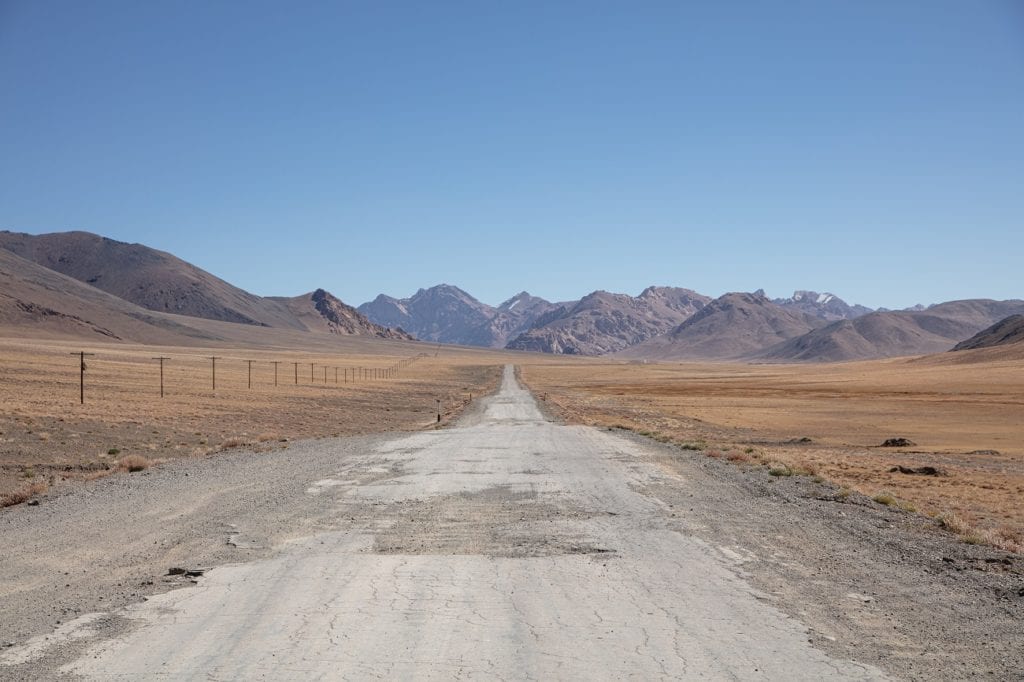
Whether you choose to take the southern route through the southwest of Tajikistan, or the harder, more rugged route through the central part of the country, either way you end up in laid-back Khorog, the backpackers’ hub in the Pamirs. From here it’s a challenging drive south to the Afghan border, then on to the windswept wasteland of the Murgob Plateau.
Khorog to Murgob
The eastern section of the Pamir Highway between Khorog and Osh, Kyrgyzstan, was built by Soviet military engineers in the early 1930s. Its construction was a phenomenal achievement. It is the second-highest international road in the world (after the Khujerab Pass between Pakistan and China), and primary construction took just three years.
It was significantly upgraded to allow improved military access for the Soviet invasion of Afghanistan in 1979, as this was one of the most important routes for the ill-fated campaign. However, the road appears to have received little love and attention since, and this is a challenging route requiring a sturdy vehicle and a lot of patience.
If using apps to map your route, expect the journey to take considerably longer than the estimated duration, and take your time – the views are beautiful, and the odd memorial is a stark reminder that it is more important to reach your destination safe, albeit a little later than planned.
Murgob to the Kyrgyz border
The final stretch of the Pamir Highway heads north from Murgob to Bor Dobo, just across the Tajik–Kyrgyz border, and thence to Sary Tash and Osh, Kyrgyzstan’s second city. This northern part of the Pamirs is the remotest part of Tajikistan, and also home to some of the finest trekking routes (and rarest wildlife) in the country.
Strangely, the quality of the roads seems to improve, and the final stretch of the Pamir Highway in Tajikistan takes you past more jagged peaks and turquoise lakes.
As you near the Kyrgyz border, you’ll also see a short fence on your right – this understated feature is the border with China.
Yagnob Valley
The word Yagnob (or Yaghnob) is thought to be derived from the Tajik adaptation of the Yagnobi phrase ‘ix-I nou’, meaning ‘ice valley’ or ‘ice river’. Until the Russians blasted the road through the mountains, the Yagnob Valley was almost entirely cut off from the outside world, accessible only on foot when the weather would allow. It remains one of Tajikistan’s most wild, unspoilt spots and a fascinating anthropological microcosm.
The valley’s singularity of language, traditions and landscape was first noticed by Europeans in the late 19th century, but the inhabitants of the region themselves consider their ancestral line to go back some 2,500 years into the past, to the era of the ancient Sogdiana civilisation.
At almost 3,000m above sea level, the valley houses a mere 500 people during the winter months spread among some ten small settlements, though this swells to around 3,000 in the summer. The low population is due mostly to forced resettlement of the villagers to cotton-growing regions by the Soviets in the mid 20th century. The Yagnobis’ stone houses are typically clustered in the relatively wide areas along the Yagnob River, surrounded by spectacular mountain peaks and incredible trekking trails.
Tajikistan is a paradise for nature lovers and those who spend time in the great outdoors, and this is never more true than in the Yagnob Valley. Zamin Karor (the Yagnob Wall, which translates as ‘quiet ground’) can be found in the Yagnob Valley. The dramatic cliffs can be seen for miles around and are often home to climbing competitions. There are eight distinct peaks with altitudes ranging from 3,709m to 4,767m, with western and northwestern walls providing the most complex mountaineering routes.
The valley is also home to striking petrified forests dating back to the Jurassic period, when the region was much more humid and fertile. The ferrous vines and hardened tree trunks stand up to 5m high, a reminder of the valley’s timelessness and the resilience of nature.
Related books
For more information, see our guide to Tajikistan :
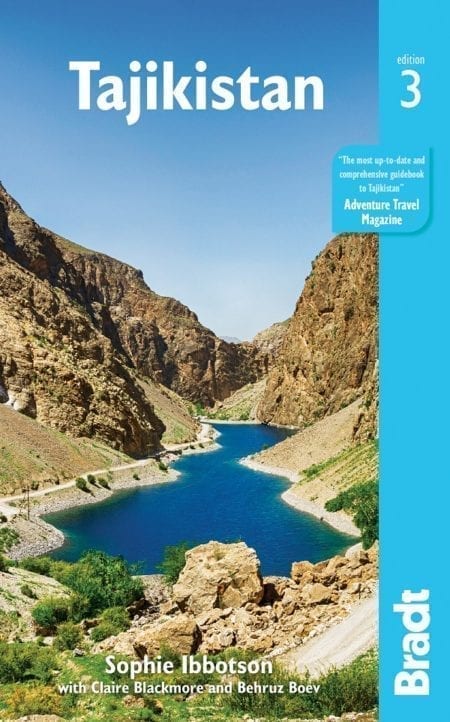
Related articles
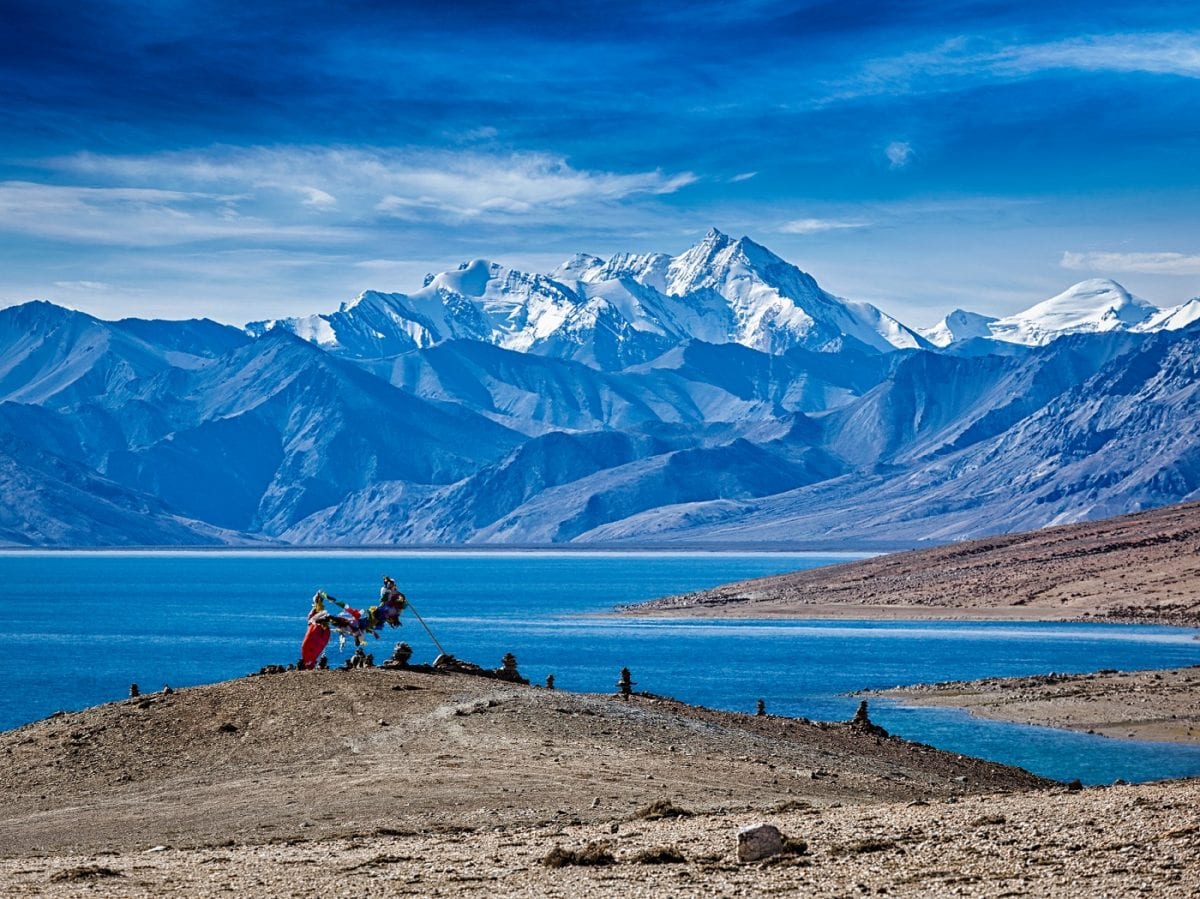
The most impressive lakes in the world
From boiling lakes to vast alpine bodies of water, these are our favourite lakes from around the world.
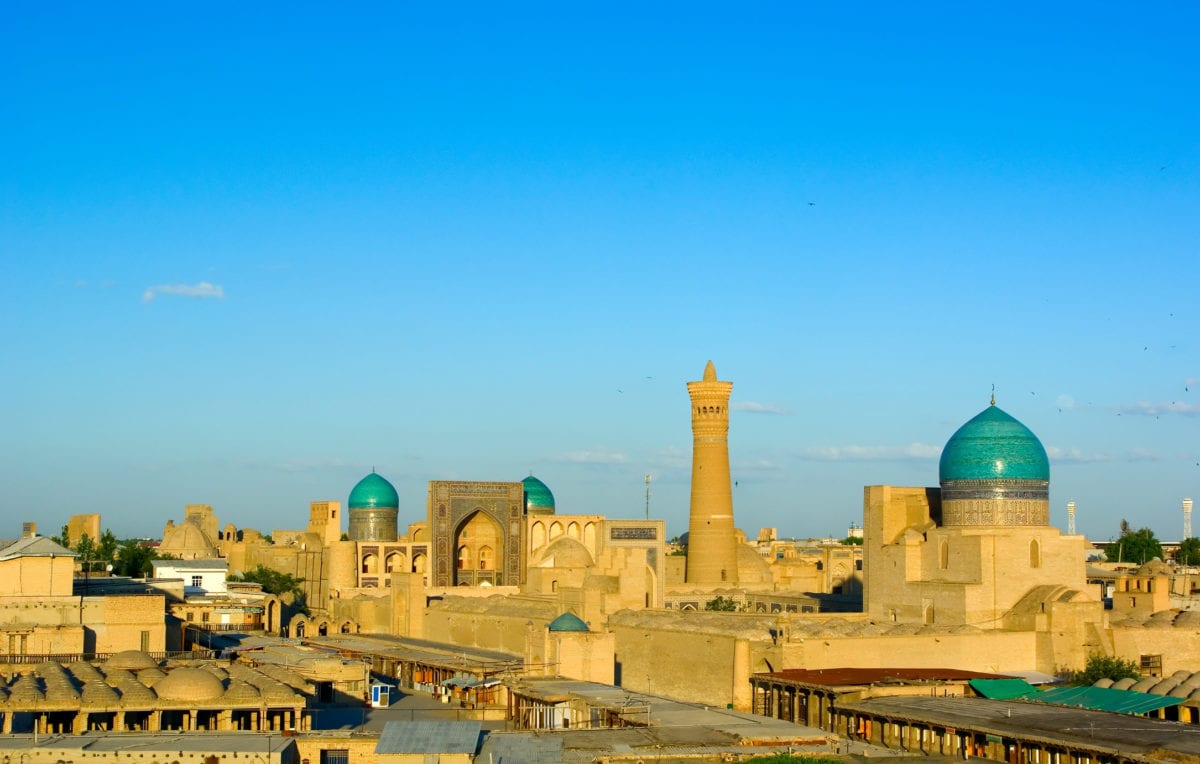
Mosques, mausoleums and madrasas: our favourite Silk Road sights
Discover our favourite sights along one of the most important trading routes in history.
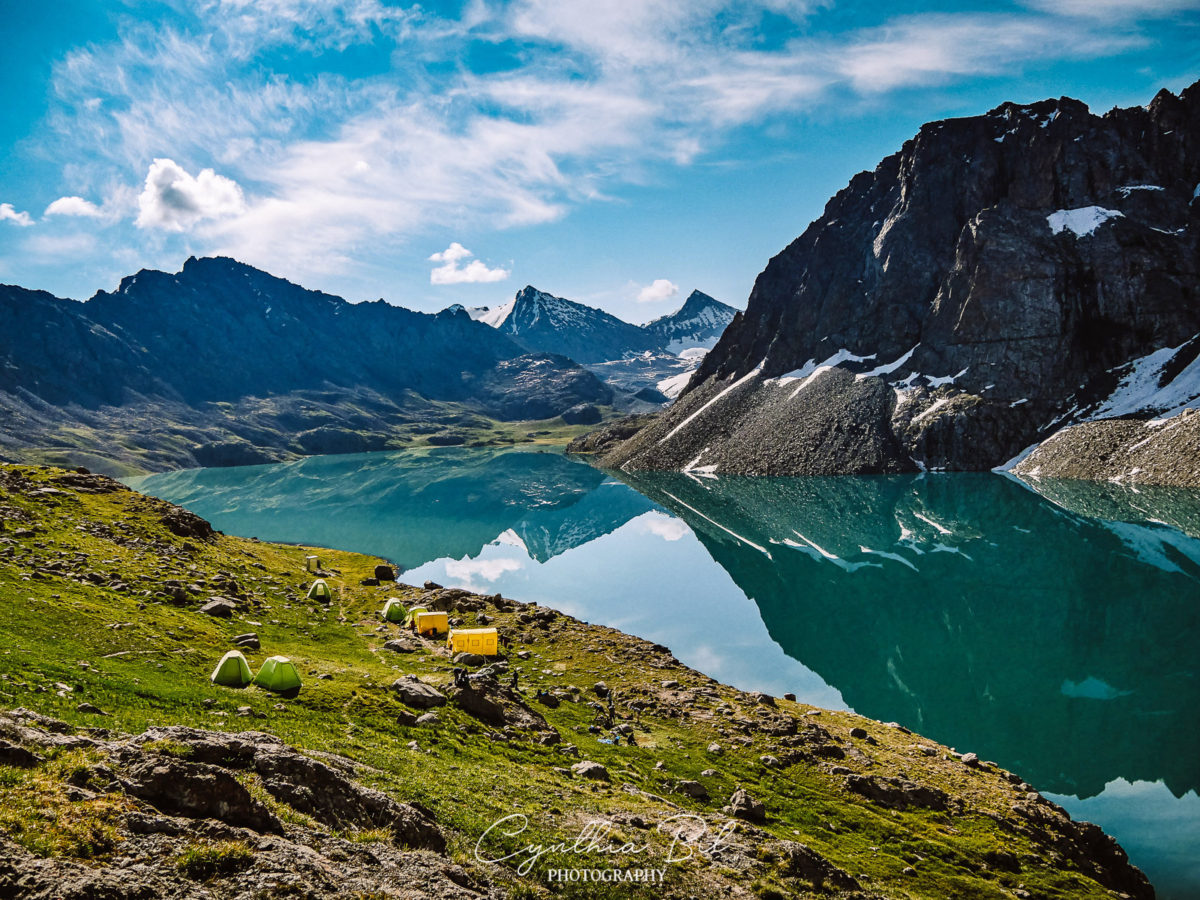
In photos: the best of Central Asia
Exploring one of our favourite regions with our Photographer of the Month, Cynthia Bil.
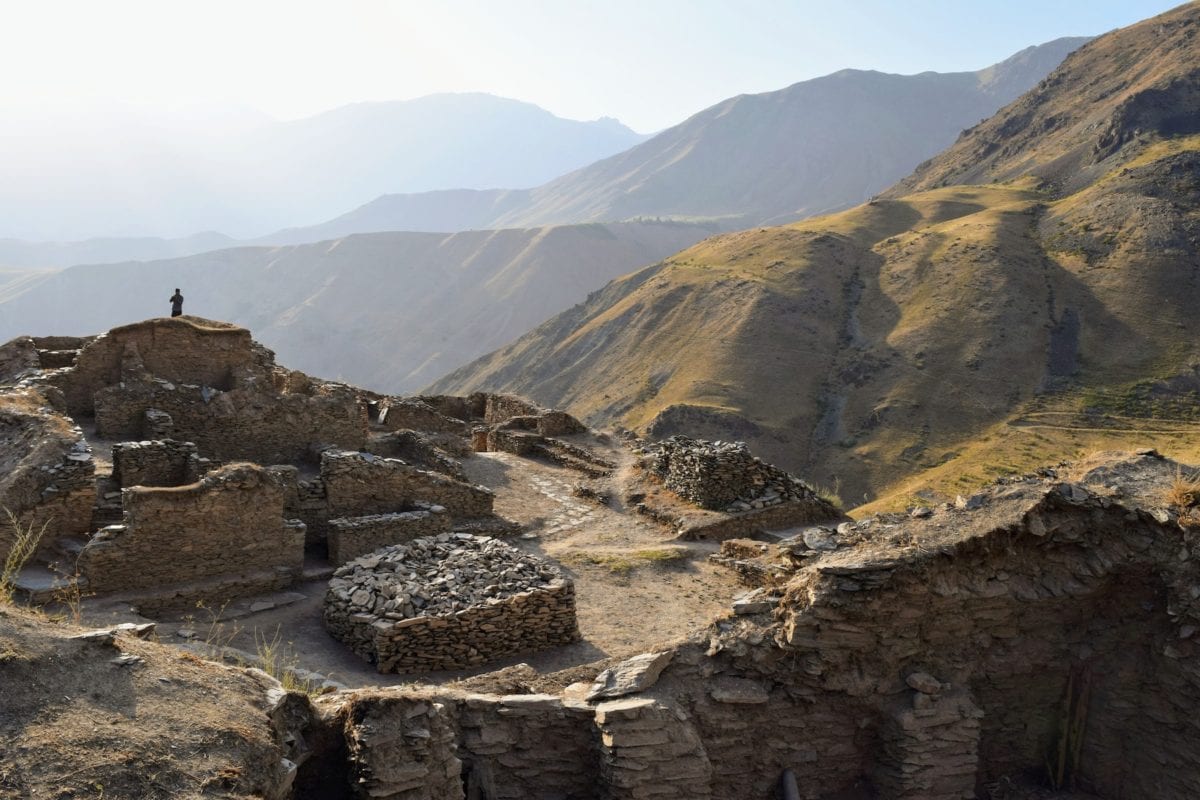
A land where mountains and mankind meet
Tajikistan’s tourism industry is taking on a new focus, one that brings its breathtaking landscapes to life through a millennia of history.
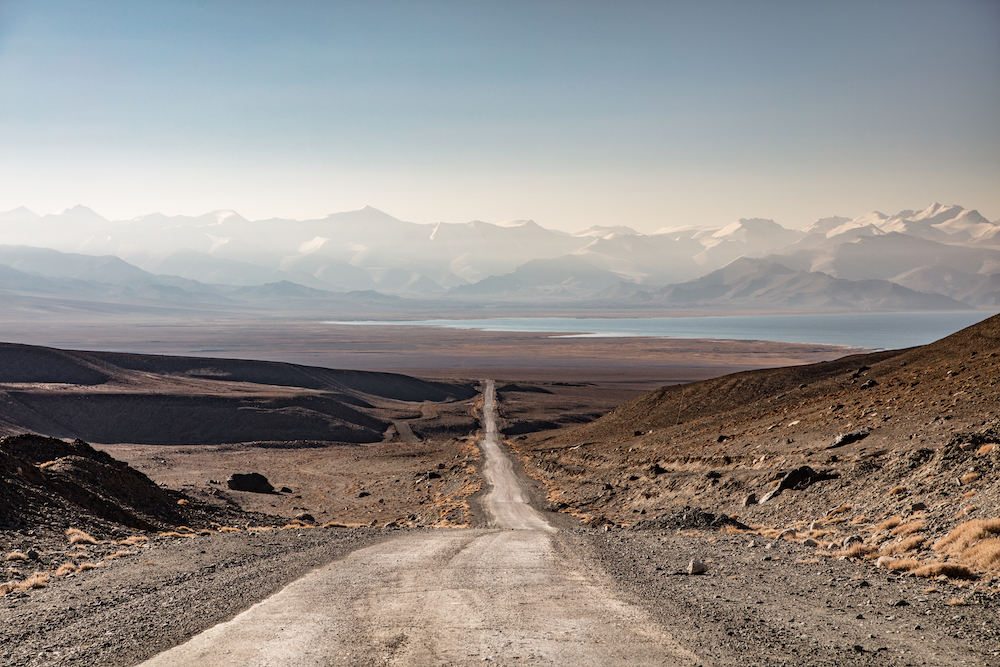
Cycling the Pamir Highway
If you are serious about the challenge, then the chance to see things at your own pace and to meet Pamiris will be among the greatest rewards of cycling.
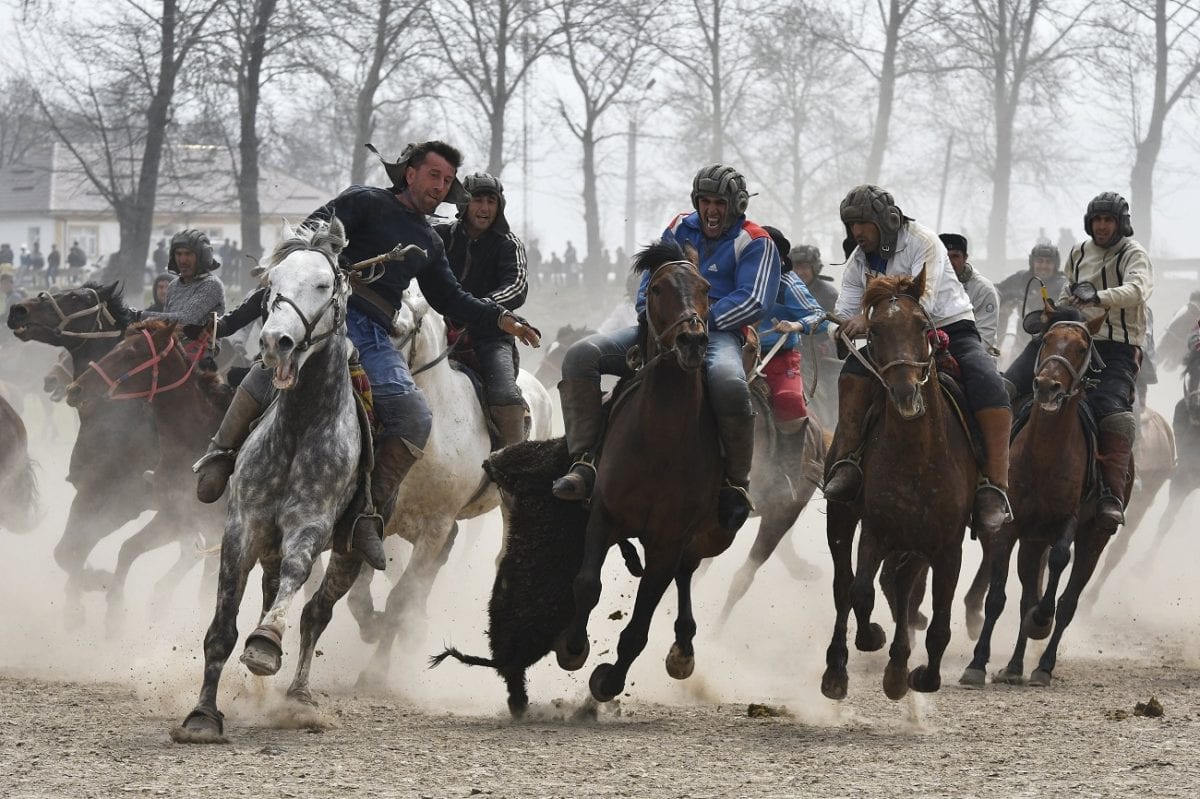
Introducing dead goat polo: Tajikistan’s national sport
Never mind the Premier League; this is the weekend’s real entertainment.
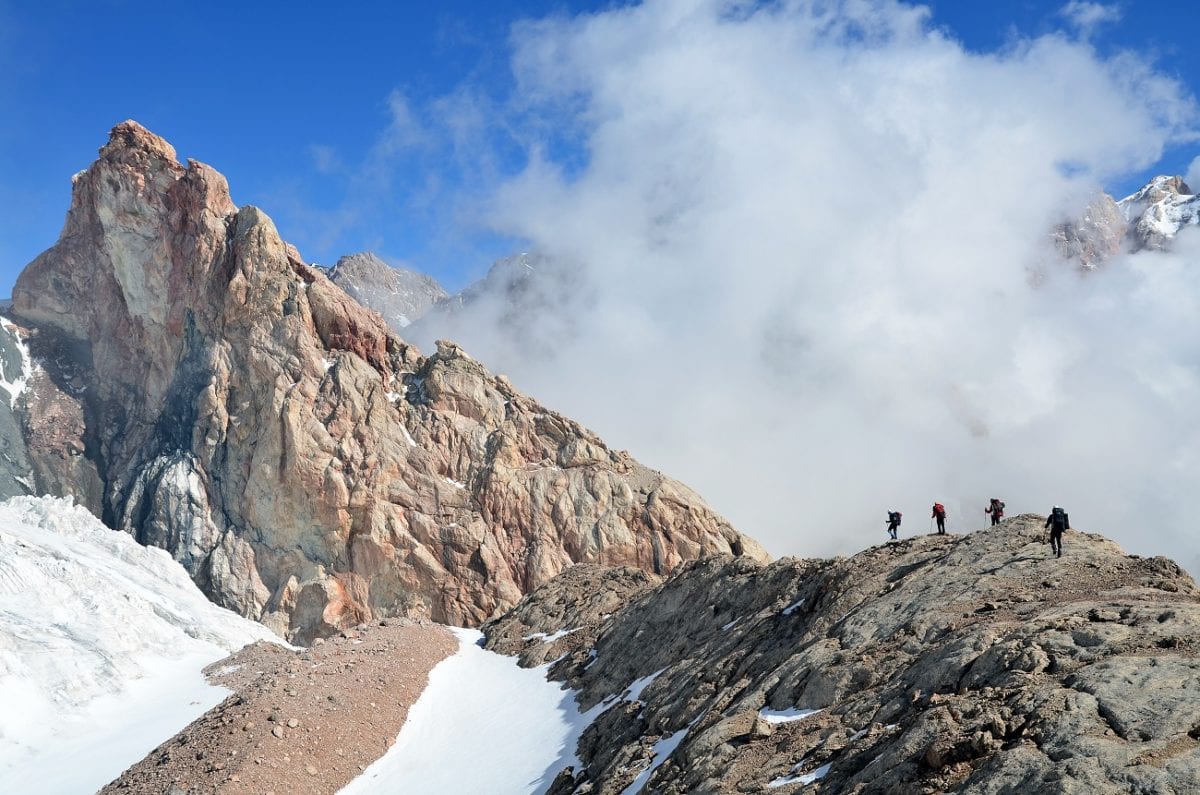
The best trekking routes in the Fann Mountains
The Fann Mountains are a veritable adventure playground for climbers and trekkers alike.

Tajikistan Travel
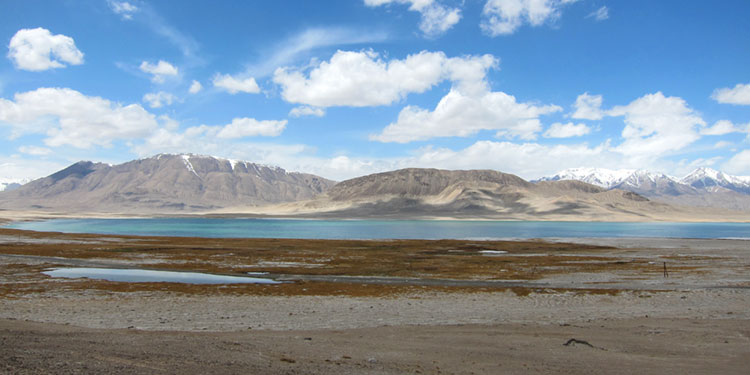
Tajikistan Travel is an ascent to the Roof of the World in the Pamirs, counted among the world’s tallest and most grandiose mountain chains. Yet this age-old land also has roots as deep and as ancient as time itself. Hints of antiquity are sensed among temple ruins, heard in the obscure tongue of secluded communities and seen in rich cultural overtones preserved among a persevering people who take pride in their land.
And rightfully so, for while Tajikistan may be small, it sets some lofty records in Soviet Union territory. Somoni Peak in the Pamir Mountains is the tallest summit in the entire region, while the town of Murghab is the highest city in the former USSR. Bulunkul Lake sees the coldest temps in this huge swath of land, and the 13-meter-high Buddha statue discovered near Bokhtar (ex Kurgan Tube) is Central Asia’s tallest Buddha by far. Beautiful Nurek Dam is one of the largest of its kind in the world, while traces of the region’s oldest language can still be heard in the Yagnob Valley. Welcome to Tajikistan, land of record-breaking discoveries!
Your Guide to Tajikistan by a Local Travel Expert
- 1. Is Tajikistan Worth Visiting?
- 2. Your Dream Vacation
- 3. Tajikistan Visa Matters
- 4. Is Tajikistan Safe for Travel?
- 5. Choose Your Transport
- 6. Tajikistan Travel Seasons
- 7. Tajikistan Travel Map
- 8. How Many Days Do You Need in Tajikistan?
- 9. At Your Service
- 10. Holidays and Festivals
- 11. Curious about Tajik Cuisine?
- 12. Dos and Don’ts in Tajikistan
- 13. Speak the Language
- 14. Virtual Tajikistan Travel Guide: Further Reading
- 15. Did You Know That…
Is Tajikistan Worth Visiting?
Despite having all but flung its doors wide open to the outside world in recent years, many travelers remain unaware that the joys of Tajikistan are not limited to tenacious backpackers alone. Amateur anthropologists and history buffs, nature lovers and curious globetrotters alike will appreciate the land’s finer qualities:
- Tajikistan is authentic, free by and large from manufactured tourism and still deeply rooted to its intrinsic culture. Anyone desiring to see the world from a different angle will find new perspective on the roof of the world as they come ready to learn from an ancient society.
- Tajikistan is rustic, offering lakes, mountain ranges, waterfalls, remote villages, lush valleys and winding backways to anyone longing to step away from the hectic pace of life and rediscover true beauty.
- Tajikistan is exciting, and while this may sound trite, there really is an air of anticipating the unknown in this land. Come prepared to expect the unexpected and soak up every minute of your journey!
Your Dream Vacation
Hike in the footsteps of Alexander the Great. 4WD your way along one of the highest mountain arteries on earth. Bring the pages of history to life among city ruins dating back thousands of years. Trace the spread of Zoroastrian, Buddhist and Islamic thought through forgotten byways and valleys. Learn from village families as you share a local meal under the starry sky.
The country abounds in opportunities too numerous to list, but we’ve done out best by highlighting some of our favorites to consider as you plan your Tajikistan itinerary:
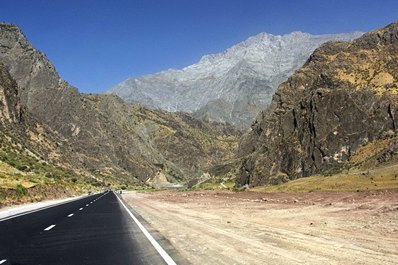
Visa Matters
Easy-to-obtain Tajikistan visas are just one more reason to add this nation’s stamp to your passport. Citizens of over 20 Asian and East European nations can receive 30-90 day visa-free entry, while passport holders of most other countries are eligible to obtain a visa upon arrival or a simple electronic visa, valid for up to 45 days. Tourists who do require a Letter of Invitation may receive visa support through Advantour or other locally-based travel agencies.
- Tajikistan Visa
Is Tajikistan Safe for Travel?
Tajikistan’s government places a high priority on the safety of its tourists, a sentiment shared by the majority of its population. Most people you meet during your travels will be eager to welcome you to their homeland or provide you with needed assistance. In fact, many tourists count the Tajiks’ warmth among the highlights of their travels. Violent crime involving foreigners remains low, and an awareness of high-altitude weather conditions, local customs and basic safety measures will go a long way in enhancing your travel experience.
Choose Your Transport
Tajikistan’s accessibility has grown exponentially in the past decade, and today direct flights link capital city Dushanbe with some of the world’s busiest hubs, including Frankfurt, Istanbul, Moscow, Dubai and Saint Petersburg. National carrier Tajik Air is by far the foremost provider, although well-known companies including Turkish Airlines, FlyDubai and Kazakhstan-based Air Astana also offer regular routes.
Thanks to its high-altitude terrain and developing transportation system, Tajikistan’s land border crossings and in-country transport via taxi or bus will doubtless provide an element of adventure to your travels. For those less keen on developing their aptitude for patience and flexibility , pre-arranging private transport is the most advisable, and comfortable, option.
Tajikistan Travel Seasons
If you wish to tour Central Asia but have an aversion to deserts, Tajikistan is a good fit for you! The wettest country in the region, it joins neighboring Kyrgyzstan in claiming summer, not spring, as peak tourist season. Yet each time of year holds unique charm in Tajikistan:
Winter: Clearly the ideal time of year for skiing and outdoor sports, winter transforms Tajikistan’s mountains into a frosty wonderland, beautiful without a doubt yet potentially dangerous for all but the most experienced mountaineers.
Autumn: Sporadic rains and chilly evenings chase many visitors away during October and November, yet this is a great season to visit if you wish to stick to Dushanbe and other lower-altitude destinations, where golden autumns hues can take Tajikistan’s beauty to a whole new level.
Spring: Early spring rains lead to truly gorgeous landscapes by May, when regular mountain travel again becomes possible. Spring in Tajikistan is filled with holidays and is ideal for a mountain-city combo tour, as neither will be insufferably hot or cold.
Summer: Sunny but not as sweltering as Uzbekistan, it is the perfect season for cross-country travel, including Pamir tours, and for swimming, camping, hiking and other outdoor excursions.
- Tajikistan Climate and Weather
- When is the best time to visit Tajikistan?
Tajikistan Travel Map
Use the Tajikistan map to locate the country’s major destinations and find out what each one has to offer:
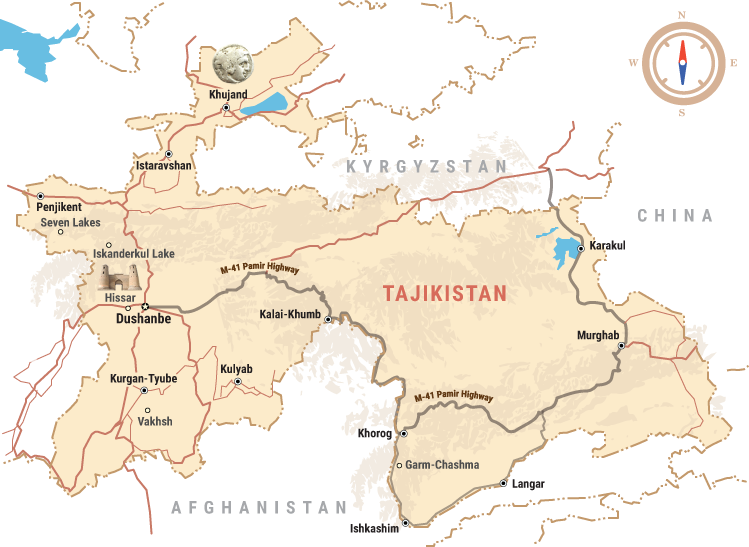
How Many Days Do You Need in Tajikistan?
While Tajikistan can be appreciated even on a quick jaunt from neighboring Uzbekistan or Kyrgyzstan, the country is best experienced at a local pace – unhurried and relaxed. Use our Tajikistan itinerary as a rough guide which can be adapted according to your personal preferences and interests.
- Dushanbe – Tajikistan’s capital and largest city offering tree-lined boulevards, parks and modern comforts. How long should I stay? 2-3 days, depending on how many day trips you wish to take Major Sites: National Museum of Tajikistan, Hissar Fortress, Rudaki Park How to get off the beaten path: Take a day or overnight trip to Iskanderkul Lake or Varzob Valley.
- Khujand – Energetic and welcoming city which is one of Central Asia’s oldest and Tajikistan’s second-largest. How long should I stay? 1-2 days Major Sites: Timur-Malik Fortress, Payshanba Bazaar, Somoni Park How to get off the beaten path: Relax at Kayrakkum Reservoir or take a day trip to Uzbekistan capital Tashkent.
- Penjikent – Strewn with history and straddling Uzbekistan’s border, the city is a great base for onward travels. How long should I stay? 1-1,5 days Major Sites: Sarazm, Ancient Penjikent, Rudaki Museum How to get off the beaten path: Overnight at Seven Lakes or plan a trip through the Yaghnob Valley.
- Istaravshan – Historically significant and culturally authentic town between Khujand and Dushanbe. How long should I stay? 1 day Major Sites: Hazrat Shah Architectural Complex, Mug Teppe, Kok Gumbaz (Abdul Latif Sultan Madrassah) How to get off the beaten path: Spend the morning among Sogdian ruins in Bunjikat or drive the Anzob Pass.
- Khorog – Preserver of Pamiri culture, it’s the largest city in the Pamirs and capital of Gorno-Badakhshan. How long should I stay? Half day for sightseeing, or longer if you wish to rest before Pamir Highway travels Major Sites: Pamir Botanical Gardens, Khorog Central Park, Khorog Regional Museum How to get off the beaten path: Freshen up at Garm Chashma Hot Springs or overnight in a village near Bulunkul Lake.
- Murghab – Highest town in the entire region, Murghab is a rugged but welcoming Kyrgyz outpost. How long should I stay? 1 day Major Sites: Lenin statue, Jameh Mosque, Drive to Karakul lake through the Ak-Baital Pass How to get off the beaten path: Ride a camel around Rangkul Lake or stay in a yurt camp in Pshart Valley…this is as remote as it gets! Note: Murghab is also a great stopover point for those wishing to combine a Pamir trip with Kyrgyzstan travel.
- Bokhtar (ex Kurgan Tube) – Southern Tajikistan’s largest yet oft-overlooked city which is steeped in history. How long should I stay? 1-2 days Major Sites: Khodzha-Moshad Mausoleum, Ajina-Tepe Buddhist Monastery, Hulbuk Fortress How to get off the beaten path: Visit the healing waters of Chali Char Chashma or explore Takht-i-Sangin Temple (Oxus Temple).
At Your Service
Tajikistan can be a tricky land to navigate, as a well-coordinated system of in-country travel is not yet established in the Pamirs and other rural areas. We at Advantour are happy to assist you in any way needed, from answering initial visa inquiries and pre-booking train and airline tickets to providing airport pickup and full-length tours.
Our Tajikistan travel services include:
Tajikistan Holidays and Festivals
Tajikistan’s community-centered, ever-hospitable culture reaches its full display of grandeur during the nation’s most beloved holidays. Joining all of Central Asia in extravagant celebrations of Persian New Year (Navroz) and independence from the Soviet Union, Tajikistan also hosts some truly unique festivals which could just become the highlight of your stay:

Navroz (March 21) – Horse races, kite-flying, splendid performances, lighthearted games and special holiday foods are celebrated by joyful crowds in national dress. Best place to celebrate: Dushanbe, Hissar or Khujand
Sayri Guli Lola Tulip Festival (late April, date varies) – The full-on arrival of mountain tulips is celebrated with two days of dancing, parades, traditional wrestling contests and feasts of plov and homegrown produce. Best place to celebrate: towns and villages across northern Tajikistan
Roof of the World Festival (July, date varies) – Pamiri culture and customs are brought to the spotlight through a huge festival of song, dance, crafts, poems and food, while musical guests from around the world strum international tunes in shows of solidarity. Best place to celebrate: Khorog
At-Chabysh Festival (early August) – Also known as the Buzkashi-Kozladrani Festival, this spinoff of Roof of the World Festival celebrates Pamiri Kyrgyz culture with national horse races, arts and crafts, Kyrgyz yurt displays and culinary treats. Best place to celebrate: Murghab
Independence Day (September 9) – Tajikistan remembers its hard-earned independence through traditional and pop concerts, fireworks and street carnivals designed to entertain young and old alike. Best place to celebrate: Dushanbe
Curious about Tajik Cuisine?
Tajik culture has absorbed elements of Persian, Turkic and Russian culture over the centuries, and local cookery is no exception. From fast foods to filling home-cooked specialties, be sure to taste-test these local favorites:
- Qurutob – Salty yogurt is poured over bread and topped with onions and veggies in this national dish
- Osh – Perfectly seasoned rice and beef simmered with yellow carrots, raisins, chickpeas and garlic
- Mastoba – Hearty local soup of meat, rice and vegetables topped off with yogurt and herbs
- Belyash – Melt-in-your-mouth fried dough patties stuffed with potatoes or various meats
- Sambusa – Pockets of flakey dough perfected with flavorful fillings of meat, pumpkin or potato
- Halvaitar – Flour and sugar are dissolved and flavored with nuts and vanilla in this irresistible dessert
- Kaurmo Shurbo – Satisfying soup filled with tender chunks of meat, boiled potatoes and vegetables
- Katlama – This flaky layered dough, fried and served in round loaves, goes great with soup or yogurt
- Chaka – Scrumptious sour yogurt sauce poured over dishes and scooped up with warm slices of bread
Read on for a more in-depth look into Tajikistan cuisine.
- Tajikistan’s National Dishes
Dos and Don’ts in Tajikistan
Tajikistan does not have strict laws in terms of dress code or religion, but knowing a bit of cultural etiquette can make your trip more enjoyable, both for you and the Tajiks! Use our friendly Tajikistan travel advice as a starting point, and when in doubt, ask your guide or travel coordinator for further tips along the way:
- Dress conservatively in rural areas out of respect for local customs
- Carry toilet paper with you wherever you go, as it runs in short supply almost everywhere
- Drink only bottled or filtered water to avoid unpleasantries during your travels
- If going as a guest to someone’s home, bring a gift and remove your shoes before entering the house
- Secure the necessary permits for travel to restricted areas (i.e. Gorno-Badakhshan) before you hop on the plane. While possible to obtain in country, it will require extra time
- Step on or over the tablecloth, traditionally spread across the floor, as this is considered rude
- Eat or drink all the food and tea served to you in someone’s home unless you wish for seconds
- Be offended by personal questions regarding your salary, marital status, etc., as such questions are normal
- Plan to travel to the Pamir Mountains without a pre-arranged guide or vehicle
- Forgot the opportunity to experience Tajikistan’s diversity through travel to different cities and regions
Speak the Language
Tajik, a Persian language most closely related to Dari and Farsi, is the only official language of Tajikistan. Russian, although spoken by fewer Tajiks now than in the 20th century, can still prove useful in the capital and among the older population.
Virtual Travel Guide to Tajikistan: Further Reading
- Tajikistan Travel Tips
- Tajikistan Tours Pages
Did You Know That...
- Tajikistan is almost completely mountainous, with 93% of its land dominated by peaks.
- Tajikistan is the smallest of the Central Asian nations, measuring just over 143 thousand square kilometers.
- Tajik is the only language in Central Asia which is Persian and not Turkic-based.
- Nurek Dam in western Tajikistan is the second-tallest dam in the world.
- Over one-third of the nation’s income is derived from the wages of Tajiks who work abroad and send their salary back to locally-based family members.
- Traces of Sogdian, the Silk Road lingua franca, can still be heard in the language of the Yagnobi people of the Yagnob Valley.
Tajikistan Guide
- Landmarks and Attractions
- UNESCO World Heritage Sites
- Exhibitions & Events
- Travel Restrictions - Covid-19
- Tajikistan Tourism
- Tajikistan Trip Planner
- Best Time to Visit
- Solo Traveler Guide
- Things to Do in Tajikistan
- Tajikistan Flights
- Embassy and Consulate
- Embassies in Tajikistan
- Crossing Borders
Tajikistan Services
- Private Tours
- Group Tours
- Cancellation Policy
- Visa Support
- Travel Agency
- 3 Other destinations
- 4.1 Spelling
- 4.2 Climate
- 4.3 Terrain
- 4.4.1 Early history
- 4.4.2 Under Russian rule
- 4.4.3 Modern history
- 4.5 Economy
- 4.6 Visitor information
- 5.2 By plane
- 5.4 By boat
- 5.5 By train
- 6.1 By minivan or shared taxi
- 6.2 By marshrutka
- 6.4 By plane
- 6.5 By train
- 10.2 Shopping
- 11.1 Dietary issues
- 15.1 Natural disasters
- 15.2 Solo female travel
- 16 Stay healthy
- 19.1 Embassies
Tajikistan is a landlocked country on the ancient Silk Road in Central Asia . The nation's majority culture is non-Turkic, unlike its neighbors to the north and west and east. Tajikistan is the poorest country out of the former Soviet states, owing to its remote geography and a devastating civil war that wracked the country from 1992 until 1997. But travelers here will find a land of stunning beauty, replete with soaring mountains, quaint pamirs (U-shaped valleys or plateaus surrounded by mountains), turquoise alpine lakes, Silk Road cities and ruins, and a charming and hospitable people. For those looking to experience a true adventurer's dream in the Roof of the World without the throngs of tourists in Nepal and Pakistan , Tajikistan is the place to be.
Regions [ edit ]

Other destinations [ edit ]
- 39.001944 71.99975 1 Pamir Mountains — with passes between 3,200 and 4,500 m (10,500 and 14,800 ft), and Lake Karakol .
- 39.170556 68.625833 2 Zeravshan Valley — valley including the Fann Mountains, one of Central Asia's prime trekking and climbing destinations.
Understand [ edit ]
Spelling [ edit ].
There is no universal system for transcribing Tajik into English. Having been part of the Soviet Union, Russian spellings are often used for transcribing place names into English, but this has become less common as Tajikistan has begun to establish its own identity. The most commonly seen spelling differences will be the interchangeability of O's and A's, A's and E's, and G's and H's. Sometimes consonants can be doubled. As an example, the Hisor mountain range can appear as Gisor, Gissar, or Hissar as well.
Street signs for major cities – at least those concerning toponyms – are written in both Tajik and English. Occasionally, these signs will write Ғ, Қ, and Х as G, K, and H, instead of Gh, Q, and Kh. The letter ъ, which represents the glottal stop, is usually written as an apostrophe ('), but may also be omitted when transcribing.
Climate [ edit ]
Tajikistan is very hot and sunny most of the year. In the west, north and south of the country there is a temperate inland subtropical climate (but palm trees do not grow). The hottest part of the country is the southern region – Khatlon Vilayat. The climate of this part of the country is generally similar to that of neighboring Uzbekistan and the far north of Afghanistan . This can be compared with the climate of northern Greece , central Italy , northern Spain or partly southern France , central Turkey , or with the climate of northern California or Colorado .
The hottest months in this country are June, July and August. July is especially hot, and the temperature is considered normal from +45 to +55. Nevertheless, such temperatures are easier to tolerate here, since the air here is very dry, not humid, as, for example, in India , Thailand , Malaysia and similar countries. It is most comfortable to visit this country from mid-May to early June or from August to early September, when it is not cool, as in winter, but also not very hot, as in the height of summer. But it is worth considering that in April and May, as well as in September and October, rainy, cloudy and windy days are not uncommon. There will definitely be no rains and cloudy days only in the summer months. It may snow in Tajikistan in winter, but it usually melts after a few days, remaining only in mountainous areas.
The climate of the eastern country (Gorno-Badakhshan Autonomous Region) and other high-altitude areas is worth mentioning separately. There is severe weather here, when it is very hot during the day, and with the onset of darkness, extreme cold begins. For example, in summer during the daytime the temperature can be +35-45, and at night +5. In winter, the night temperature in the mountains can reach -25.
The Tajik portion of the Ferghana Valley is consistently about 1°C colder than in Dushanbe at any given point of the year. Being at the mouth of a long valley with a wide open desert to the west, the area around Khujand is usually very windy, which makes the temperature feel even cooler. Snow is usually uncommon in northern Tajikistan, with cities like Khujand and Isfara getting only a few days of snow a year.
Terrain [ edit ]
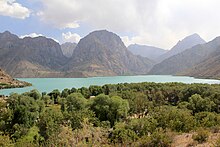
Tajikistan is 93% mountainous, and is home to a handful of peaks over 7,000 m (23,000 ft). The eastern region of the country is dominated by the Pamir mountains, which themselves are the northernmost extension of the Hindu Kush. Running across the middle of the country are the Alay mountains (which splits Tajikistan from Kyrgyzstan) and the Turkestan mountains (which separates Khujand and the Tajik portion of the Ferghana Valley from the south). Smaller notable ranges include the Gissar/Hisor range near Dushanbe, the Zeravshan range, and the Fann mountains near Panjakent. The Tian Shan range clips Tajikistan in the northeast and makes up most of the country's border with China .
There are three main valleys/flatlands in Tajikistan: the Tajik portion of the Ferghana Valley includes the cities of Khujand and Isfara, and are more tied with the neighboring Uzbek and Kyrgyz portions of the valley than they are with southern Tajikistan (mainly because the mountain passes between Dushanbe and the Ferghana Valley often become impassable in the winter). West of Dushanbe is the picturesque Zeravshan (Zerafshan) Valley, in which the jewels of Tajikistan lie: Panjakent and the Seven Lakes. The southwest of the country around Kulob and Bokhtar/Qurghonteppa is mainly flatlands comprised of cotton fields and what little intensive agriculture the Tajik climate can host. In the Pamir region, small U-shaped valleys dot the land along riverbanks, and up near Lake Karakol there are some "flatlands" (in reality high-altitude mesas).
The country's lowest point is at the Amu Darya on the Afghan border (300 m), and its highest point is at Qullai Ismoili Somoni (7,495 m).
History [ edit ]

Early history [ edit ]
The ancient site of Sarazm near the Uzbek border was inhabited since as far back as 3900 BCE, possibly making it the oldest city in Central Asia, and one of the oldest in the world (it was a contemporary of Ur and Argos ). We have no idea who occupied Sarazm; artifacts discovered seem to relate to some other regional sites, and there were obvious fire-altars (although whether they were Zoroastrian or not is still unknown). It is highly unlikely, though, that the people at Sarazm were related to modern-day Tajiks, since the Indo-Iranian migrations are believed to have started around 2000 BCE, almost 2 full millenia after Sarazm was established.
The earliest people in the region in the region for whom we have names were Indo-Iranian nomads or semi-nomads called the Saka/Scythians by today's scholars. By the 6th century BCE, a different group of Indo-Iranian people called the Sogdians emerged. These Sogdians organized political units in greater Central Asia based around towns or fortresses on key trade routes (like their "capital" at Panjakent ), but they never unified into a greater political empire. Buddhism spread out of South Asia through Afghanistan and Tajikistan on its way to China, and even today some Buddhist remains can be found at archeological sites and museums throughout the country. By the 8th century CE, various Turkic confederations migrated into Central Asia, displacing and absorbing the local Sogdians and forever altering the ethnic makeup of Central Asia. But due to the remoteness and hostile environments of Tajikistan and Afghanistan, Persian-speaking peoples were able to retain their individual cultures without being fully absorbed by their Turkic neighbors. The Battle of Talas (751) between the Arab Caliphate and Tang China in what is now Kyrgyzstan introduced Islam as a religion of victory to the Turkic and Iranian peoples of Central Eurasia, and the conversion of many Central Asians (both Turkic and Iranian) by Sufi mystics forever altered the religious landscape of the region.
The region covering today's Tajikistan was part of various versions of the Persian Empire for much of its history. This region has been an important place for flourishing Persian culture and language. The success of Persian-speaking/writing polymaths, poets, and religious thinkers during the Umayyad Caliphate established Persian as the language of the arts in the Islamic world. (Arabic became the language of God, Persian of art and love, and Turkish of war, per historian Kenneth Harl.) The great Central Asian cities of Samarkand, Bukhara, and Khiva were historically populated by a mix of Turkic (mainly Uzbek) and Tajik peoples, and both peoples lay claim to those cities' legacies. All three cities existed as independent khanates by the 1700s; the Khanate of Bukhara controlled the western half of today's Tajikistan. During the late 1800s, the "Great Game" between Imperial Russia and Great Britain led the former to annex eastern Tajikistan (the Pamirs ) and the Ferghana Valley and turn the Khanate of Bukhara into a protectorate.
Under Russian rule [ edit ]
With the Russian Revolution in 1917, Central Asia experienced the Russian Civil War. The main Central Asian component of the civil war was the Basmachi revolt, which was eventually brutally suppressed by the victorious Bolshevik Soviets. As 'punishment' for the revolt, the nominally-independent Khanates of Khiva and Bukhara were absorbed into the Soviet Union, and in the 1930s under a policy of "national delineation", borders were drawn in Central Asia. Ostensibly, these were to give each major ethnicity (as defined by the Soviets) a Soviet Socialist Republic (SSR), but the way the borders were drawn were to deliberately weaken the political power of any of the SSRs (hence the mess that is the Ferghana Valley) – during this process, the three main Central Asian cities (Khiva, Bukhara, and Samarkand) were carved into the Uzbek SSR, which has influenced current Tajik national identities and foreign relations. In 1990–1991, Tajikistan suddenly found itself independent.
Modern history [ edit ]
Tajikistan has experienced three changes in government and a five-year civil war since it gained independence from the USSR in 1991. In March of 1992, a violent crackdown on protests in Dushanbe combined with regional ethnic tensions led to a civil war. A peace agreement among rival factions was signed in 1997 and implemented in 2000. The central government's less-than-total control over some areas of the country has forced it to compromise and forge alliances among factions. Attention by the international community in the wake of the war in Afghanistan has brought increased economic development assistance, which could create jobs and increase stability in the long term.
Economy [ edit ]
Tajikistan is the poorest and least developed former Soviet republic. In 2022, remittances accounted for 51% of Tajikistan's GDP, making it the most remittance-dependent economy in the world.
The main resources of Tajikistan are water, aluminum, cotton, electric power, fruits, vegetable oils, and textiles. Drug trafficking is a major source of income in Tajikistan, especially in the areas around the Afghan border.
Visitor information [ edit ]
- Travel Tajikistan website
Get in [ edit ]

Visas [ edit ]
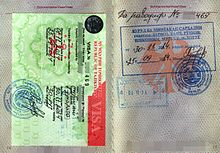
Nationals from Armenia , Azerbaijan , Belarus , Georgia , Kazakhstan , Kyrgyzstan , Moldova , Mongolia , Russia and Ukraine do not need a visa for visits up to 90 days.
From 1 January 2022 Tajikistan has implemented a 30-day visa-free policy for passport holders of 52 countries. See the website of the Ministry of Foreign Affairs for details.
Following the trends of other Central Asian countries, visas are increasingly easy to obtain, particularly for nationals of wealthy countries. This policy is designed to stimulate tourist activity in Tajikistan. There is no longer a requirement to register with OVIR for tourist visits under 30 days. Letters of invitation are no longer needed on arrival at Dushanbe airport, but are needed to prearrange a visa from the UK and US embassies.
Evisas for 60 days are available for US$30 for citizens of most wealthy countries. You may apply for a GBAO permit along with the evisa for an extra US$20. The evisa can be used at all land borders and airports, and is typically approved within two working days. Some people have reported teething problems with the evisa system (see Caravanistan), but for the most part the system works well and saves a page in your passport. Remember to print the e-visa before arrival, they will not accept a digital copy. Black and white is fine.
You may apply for a visas in advance at a Tajik embassy or online (see above), or if you are a citizen of a country that has no Tajik embassy, you may purchase one upon arrival at Dushanbe Airport. To save time you can complete and print a form before arrival . It is best to use the Tajik form, bring two passport photos, a handful of photocopies of your passport and cash. The process takes around 10 minutes. Tourist visa in Tajikistan costs US$25 in Dushanbe International Airport and in consular representatives abroad. A separate permit is required if you wish to travel to the GBAO region. It is easily obtained when applying for a visa or in Dushanbe, cost is US$50 locally or at consulates in Central Asia, but is usually free in Europe.
If crossing a land border then get a visa prior to arrival. The embassies in Vienna and London are the most professional. You may struggle to get a visa at some consulates who will simply say “get it at the airport” (e.g. Kabul), which isn't useful if you want to arrive by land.
By plane [ edit ]
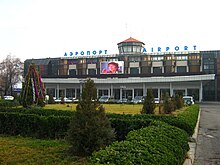
National carrier Tajik Air and the new private airline Somon Air are the country's two airlines. From Dushanbe, flights are available to numerous cities across Russia, including Moscow (Zhukovsky airport), Saint Petersburg, Samara, Sochi, Chelyabinsk, Novosibirsk, Perm, Krasnoyarsk, Orenburg, Irkutsk, Nizhnevartovsk, Surgut, Kazan & Yekaterinburg.
Aside from Russia, the main international destinations to/from Tajikistan are:
- Istanbul — Turkish Airlines, Somon Air
- Dubai/Sharjah — Somon Air, Tajik Air
- Frankfurt — Somon Air
- Tehran — Somon Air, Iran Aseman Airlines
- Almaty — Somon Air, Air Astana
Flights between Jeddah and Dushanbe are set to begin in March 2024 through Somon Air. Also starting in 2024 are flights between Khujand and Dubai/Istanbul, giving travelers more options when planning how to get in/out of the country.
Periodically you can find flights between Dushanbe and Tashkent or Samarkand, but these happen less routinely than flights to the above destinations.
The airport in Khujand has service to about a dozen Russian cities through 8 carriers plus a weekly China Southern Airlines flight to Ürümqi. There are also routine Dushanbe-Khujand (and vice versa) flights every day for about 400 somoni.
By car [ edit ]
While relations with Uzbekistan are the best among Tajikistan's neighbors, it is the most crossed by travelers and the roads to these crossings are in much better condition than those leading to Kyrgyzstan or Afghanistan. The journey from Tashkent to Khujand takes about 2½ hours and is frequently travelled by private cars and marshrutkas (minibuses) which will take you along for a small amount (under US$10). The short (60-km) trip from Samarkand , Uzbekistan to Panjakent is also frequently travelled by private cars and marshrutkas. As of 2019, the border crossing near Panjakent is open without hassle, after being closed due to strained relations between Tajikistan and Uzbekistan . If you want to go to Tashkent from Khujand , you have to cross the border at the Oybek post; if you want to go to Samarkand from Khujand you'll want to cross at the Qushtegirmon/Bekobod crossing. There are marshrutkas and taxis from Khujand to Oybek. Taxis cost from 50 to 100 somoni depending on time of a day.
In winter months, snow blocks the passes connecting Dushanbe with the north of Tajikistan. To travel between Dushanbe and the north during these months, you need to head south and cross from Termez (in Uzbekistan ), which will take you around the west & south sides of the mountains and take you to Dushanbe.
From Kyrgyzstan, there are a couple of options, mostly from Osh and none make for a very smooth journey. The rugged, remote Pamir Highway (see next paragraph) is the slowest, but most popular. From the crossroads at Sary-Tash, a road leads west for 500 km through the Karategin Valley to Dushanbe. A little rugged near the border, but not nearly so as the Pamir Highway. As of May 2019, the border (crossing the border near Kara-Myk village) is completely closed to foreigners. Reasons for this are speculative but according to locals, there are a few villages near the border with extremist activity and foreigners aren't taken kindly to; best not to go anywhere near, or at least be discreet if you do. A third option is from the Batken region to Isfara . This road passes through several Uzbek exclaves and used to be a complicated process necessitating multiple-entry visas, but as of May 2019 the drive is just like any other marshrutka ride.
A scenic, albeit rough, journey into Tajikistan is via the Pamir Highway which runs from Osh to Khorugh to Dushanbe. Just about the only highway in the GBAO region, this route ranges from smooth tarmac full of buses, trucks to a single-lane road carved into a cliff. The border crossing lies at 4280 m and peaks at the Ak-Baital Pass at 4,655 m. The journey takes 2–3 days from Osh-Khorugh and three on the rougher stretch from Khorugh to Dushanbe, longer if you want to stop and enjoy the scenery. Minivans travel the route from Osh to Murghab every few days for US$15; hitch-hiking on Kamaz trucks and ZIL petrol tankers is also possible anywhere en route for US$10. A 4-wheel drive is necessary and large portions of the highway are impassible in winter and frequently blocked by mudslides in spring.
The US has funded a couple of bridges connecting Tajikistan with Afghanistan . Roads from Bokhtar , Kulob , & Dushanbe lead to the main crossing at Nizhnii Pyanj. From there, a road leads south to Kunduz . There is a bridge at Khorugh leading to Feizabad, Afghanistan, and a few mountainous roads elsewhere in the GBAO leading to Afghanistan.
A border crossing with China was opened in 2004. The crossing and connecting roads link the Pamir Highway with the Karakorum Highway and provides a link to Kashgar (Kashi) to the north and Pakistan to the south. As of 2010, it remains closed to foreigners.
By boat [ edit ]
A ferry operates across the Pyanj river between Afghanistan and Tajikistan that costs roughly US$10 one way. However, the opening of the US-funded bridge over the Pyanj will likely end this service, which crosses roughly three times per day and does not run on Sundays.
By train [ edit ]
There are two international connections to Tajikistan: Moscow-Dushanbe (2 per week) and Moscow-Khujand (once weekly), both visible on the Russian Railways website. Passengers are only supposed to board them only at stations in Russia and in Kazakhstan. There are only service stops on Uzbek and Turkmen territory. Trains to Moscow are popular with migrant workers.
The Moscow-Khujand train crosses Kazakhstan and Uzbekistan so one simply needs respective transit visas.
The Moscow-Dushanbe train takes around five days and crosses Kazakhstan , Uzbekistan , Turkmenistan and Uzbekistan again. The Turkmen part is virtually inaccessible for non-Tajik citizens as Turkmenistan does not issue transit visas "from-then-again-to Uzbekistan" and one would need a standard non-transit visa (Tajiks don't need any papers for transiting Turkmenistan with this train). One could in principle leave the train before it enters Turkmenistan, take a bus/taxi and re-board it again once it re-enters Uzbekistan.
Get around [ edit ]

By minivan or shared taxi [ edit ]
Scheduled minivans run between the major cities but otherwise hiring a vehicle or sharing one with other passengers is the only way to travel around the country. Prices are generally per person, not for the vehicle, and divided by the number of passengers. You can always pay for the entire car too if you are either in a rush or don't want to share with strangers. The nice thing about shared taxis is that the drivers will almost always drop you off at your destination, rather than a set point in the city like a marshrutka or minibus will do.
SUVs can be hired and leave daily from Khujand's large minibus terminal located just outside the city. Prices are negotiable but should be in the range US$60 per person. Check that the vehicle is fit for long road travel, and inspect the spare tire.
By marshrutka [ edit ]
Marshrutkas are similar to minivans in design but that act more like buses in that they have set routes they travel. Most Tajik cities will have a plethora of marshrutkas that run different routes. A marshrutka ride within a town usually costs 2.5 somoni per person and is paid when you get on the vehicle (although marshrutkas to and in Isfara will collect fares when you leave the vehicle). These are often the fastest form of transportation in cities, as they only stop when people want them to (either when they're hailed like taxis or when someone inside says stop), as opposed to buses that call at every stop. To tell the driver to stop, simply say "dored" (stressed on the second syllable). Some drivers will slam on the brakes then and there, while others will glide to a stop at the next available pull-off.
Talk [ edit ]
The national and official language of the country is Tajik , which is one of several dialects of Persian . It is written using the Cyrillic script, which was introduced to the country by the Soviets in the 1930s. Speakers of Dari (Afghan Persian) or Farsi (Iranian Persian) should have no problems with getting around. Tajiks are very fond and proud of their language; therefore, learning a few words of Tajik will most certainly endear you to the locals.
Russian is the main language of inter-ethnic communication and is held in high regard; Russian is a compulsory subject in Tajik schools, and is widely used in avenues such as government and commerce. Families of former Soviet officials or descendants of immigrants from Russia might have Russian as their primary language, even if they identify as Tajik culturally.
Uzbek is spoken in the northern parts of the country.
Although younger, well-educated Tajiks and those working in the service industry know enough English to have a basic conversation, very little of it is spoken, even in Dushanbe . Some knowledge of Tajik, Russian, or both is therefore essential for the independent traveler.
See [ edit ]

Do [ edit ]
Tajikistan is a remarkable place, and there is plenty to do, from the Silk Road mystique of places like Khujand and Istaravshan, to the stunning, untouched mountain scenery of the Pamirs and their accompanying allure of trekking routes and unclimbed peaks. The Fann Mountains could be a good alternative to the Pamirs. They are easy to reach and provide good trekking options.
Dietary issues [ edit ]
Vegetarians in Tajikistan are blessed and cursed: on the one hand, the Tajik national dish, Qurutob , contains no meat whatsoever and can be found quite easily in most restaurants. On the other hand, its essentially the only thing on the Tajik menu that lacks meat. Travelers who are fine eating the same meal every day will have no problem with this, but travelers who want variety in their meals might.
Most Tajik foods, including Qurutob, may be cooked using animal-derived oils.
Osh/Plov is usually served with meat and/or eggs, but they're cooked separately and added on top at the end, so vegetarians can easily pick off what they don't like. You can also try ordering plov "bé gusht" (without meat). There still may be animal oils used while cooking the rice.
Vegans will have a hard time in Tajikistan, as dairy, eggs, and animal oils might not be considered "meat" by Tajik chefs.
Travelers with other common dietary restrictions will face varying degrees of success in finding adequate meals. Tajiks are well aware of most common allergies, so tell your waiter or chef if there's something you need to avoid in the meal. Even then, it's still recommended you bring anti-allergy medications (such as epipens) with you – especially as the Tajiks might not all be aware of the concept of cross-contamination.
Gluten-free travelers will face difficulties, as most of the non-meat dishes consumed in Tajikistan are bread-heavy. Plov is gluten-free since it's just rice.
Drink [ edit ]
- Green tea — Tajiks customarily enjoy drinking unsweetened (or sweetened) green tea all throughout the day. Hence, it is the country's national beverage.
- Compote — A distilled fruit punch.
Water in Tajikistan has two dangers: one is the quality, which is vastly below Western or East Asian standards – it should not be consumed. The other is the relative frequency with which the water is shut off from buildings (including restaurants). Travelers should drink bottled water and avoid ice (and drinks made with ice, like milkshakes and smoothies). Travelers should also be prepared for possible water shutoffs while they're there. Long-term travelers should consider buying 5- or 10-liter jugs of water (like those found at office coolers) for when the power or water goes out (usually the two act in tandem) or for washing vegetables with.
Sleep [ edit ]

Sleeping options in Tajikistan include the following:
In Dushanbe, there are a few large hotels, including the Hyatt Regency and the "Tajikistan" in the central city. Most are ex-Soviet era and tend to be over-priced and in poor condition. There are a couple of newly built hotels offering western standards of accommodation for around US$70–220 per room.
MSDSP guesthouses
The Aga Khan's Mountain Societies Development Support Programme has a network of guesthouses in places like Kalaikhum and Khorog, offering a good standard of accommodation. Full board is around US$40 per person
Formal homestays
The French NGO ACTED is establishing a network of homestays in the Pamir region, around Murghab. For around US$10 per person per night you get a comfortable bed in a family home. The facilities are basic, i.e. no running water and an outside toilet, but guests can expect comfortable clean rooms, good local food and a very warm welcome.
Independent guesthouses
In Dushanbe, Khorog, and Murghab there are a small but growing number of independent guesthouses. These are similar in standard and price to the ACTED homestays.
Online accommodation
Many cities of Tajikistan offer free accommodation in homestays through couchsurfing.com
The app/website "Somon.tj" is the Tajik version of eBay, but it also lists apartments for rent. Some renters allow short-term rentals (some daily, some weekly, etc.) for a very low price, but knowledge of Tajik/Russian is required to use it.
Work [ edit ]

Finding work in Tajikistan can be a difficult experience. This is largely due to the following factors: low salaries, emigration, and the fact that jobs tend to not be widely advertised.
For a country that depends entirely on remittances (they constitute 20-40% of the country's GDP), do not expect Tajikistan to be some economic utopia; many Tajiks often emigrate to countries like Russia , Kazakhstan , and so on since there are limited opportunities for success in the country. Rates of pay are lower compared to its neighbors.
Also, due to the higher standard of living, some families from Tajikistan live and work in neighboring Uzbekistan , as well as in Turkey , the UAE , and European countries.
If you are a native speaker of English, have a TEFL/TESOL certification, and some prior teaching experience, you're likely to find a job in one of the many schools in the country, since there's a huge demand for English teachers in Tajikistan. Don't expect the process to be that comfortable if you're not fluent in Tajik , Russian , or both; you need to be knowledgeable in one of those languages to adapt to the country's cultural climate.
Stay safe [ edit ]
Perhaps surprisingly, Tajikistan is one of the safest countries in the world in terms of petty thefts and tourism-specific crimes. Travelers here are treated with respect, and outside of the bazaars pickpockets are not common. Of course, travelers should still bring with them their common sense, but Tajikistan is much safer in this regard than most of Europe and Latin America.
Some factional fighting spilling over from nearby Afghanistan (as well as local warlordism) can occur in Tajikistan. Visitors should keep abreast of the security situation and not take any unnecessary risks. Generally, the Pamir region and areas close to the Afghan border have the potential to be the most volatile.
After sunset, it is not advisable to walk around outside alone; generally, do not travel unaccompanied to rural areas.
Of significant concern is the inability of Tajikistan's law enforcement entities to provide adequate and immediate assistance. Lack of manpower, low salaries, and inadequate training all contribute to a lack of professionalism among law enforcement entities. Police officers in Dushanbe have been known to ask for bribes from expatriates and tourists, even when no crime has been committed. It is always best to travel in groups if you are traveling at night and avoid areas heavily patrolled by the police (including Rudaki Park) if you have been drinking. If you are asked for a bribe, play dumb. Even if you speak Russian or Tajik, it is best to pretend like you do not understand the officer's request. They will usually lose patience and leave you alone. Never argue with or provoke the police. If you are the victim of a crime, consult with your embassy. Your embassy may be able to help you locate stolen items or to renew your passport.
Even in Dushanbe, power outages (and with them, water shutoffs) can strike at any time, and can last upwards of a few days. Consider having one or two portable chargers fully charged at any given point in case of a power outage so you can recharge necessary electronics.
In some places it is illegal to take pictures of certain buildings. In some places driving under the influence could land you immediately in prison.
Penalties for possession, use or trafficking in illegal drugs in Tajikistan are severe, and convicted offenders can expect long jail sentences and heavy fines.
The number of items that can be exported may be limited. It is illegal to export or possess unprocessed stones and metals and jewelry without a hallmark (mark of authenticity). Even if visitors have a receipt confirming legal purchase of such items at a store in Tajikistan, the items must be declared upon departure.
Natural disasters [ edit ]
Tajikistan is prone to earthquakes.
Solo female travel [ edit ]
Traveling in Tajikistan is generally safe for solo women who have already experience of traveling solo in other countries. However, there are a few points to keep in mind when visiting Tajikistan, including:
- Dress code: especially outside of the capital Dushanbe, it's advisable to cover shoulders and avoid wearing shorts or short skirts. Wearing a headscarf is not necessary and is discouraged by the local authorities, but keep one on you when planning to visit a mosque (on paper, only men can visit Tajikistan's mosques, but some have been known to let female tourists in on occasion).
- It's not unusual to be catcalled on the streets of Dushanbe and the best policy is to simply ignore the calls.
- Some people recommend wearing a (fake) wedding ring and pretending to be married with children to avoid unwelcome male attention.
- When visiting a nightclub, always go accompanied as single females in night clubs are often considered to be prostitutes.
- The Pamirs Eco-Cultural Tourism Association (PECTA) has female guides for when you want to go trekking and you don't feel comfortable going alone with a male guide.
Stay healthy [ edit ]
The healthcare system in Tajikistan is best described as severely underdeveloped.
Do not drink tap water . There is no working purification system, and outbreaks of typhoid are common, and even cholera (rarely). Other preventable endemic illnesses are hepatitis A, rabies, poliomyelitis and tick-borne encephalitis. The occasional anthrax case comes in, but it's rare nowadays. There are, during the hot season, a few pockets where malaria can occur. HIV is a growing health threat in Tajikistan. There is now an English-speaking comprehensive primary care clinic in operation by the name of Prospekt Medical , right behind the Embassy of China. In the Pamir mountains, the risk of altitude sickness is substantial. In case of ANY accident, call your embassy. Health insurance and medical evacuation insurance are strongly recommended.
For long-term visitors, it's not a question of "will you get food poisoning", but "when". Be prepared for it.
Longer stays may consider the hiring of private drivers and home security guards. Rent out secure known owners' places.
Air quality in the winter (and sometimes in other seasons) in the cities can be horrendous, with practically everyone using coal-powered heating. The increase in coal pollution combined with mountains that trap the pollution means there are often high levels of particulate matter in the air. It is recommended that you wear an N-95 mask while traveling outside during times of poor air quality. If you are spending considerable amounts of time in Tajikistan, it's a good idea to acquire an air purifier for your place of residence.
Respect [ edit ]
- Tajikistan is a fairly conservative society, and women should be fairly modest in public. Headscarves and face-coverings are exceptions and not the norm. For men, shorts will generally attract disapproving stares, even in larger cities like Dushanbe. Although some Tajiks can be extremely friendly, it is not uncommon for people to be equally rude. Tajiks in general are very welcoming to tourists. While you should be wary of scams in the larger cities, do not be alarmed if young people approach you to say hello and practice their English. When speaking to older Tajiks, place your right hand over your heart: this is a sign of respect reserved for older men or women in Tajik society.
- Only men are allowed inside the mosques in Tajikistan. Women usually pray in their homes or at work in private areas; it is expected that Muslim women visiting the country as tourists do the same. However, some mosques in the larger cities have been known to allow female tourist groups to enter to tour the mosque, although prayer still seems to be restricted to men. That being said, women are allowed in some mosques if they're 1) asking a religious question, 2) traveling with a male companion, and 3) visiting outside of the normal prayer times.
- Unlike some of its neighbors in the region, same-sex activity is legal in Tajikistan. However, social attitudes towards LGBTQ+ issues are quite conservative and there are no laws protecting sexual minorities from discrimination or harassment, so LGBTQ+ visitors should exercise caution and avoid public displays or acknowledgements of their non-hetero lifestyles. It is common for Tajik men to walk hand-in-hand or with arms draped around each other's shoulders, but that is not seen as anything sexual.
- Tajiks are very offended if you compare their country with neighboring Afghanistan . They admit that they are culturally and historically close, but consider their country, unlike Afghanistan, "more civilized and modern", as well as "several times safer".
- Many Tajiks have a favorable view of Russia and Russians, since almost every Tajik family has at least one relative who has been or is in Russia for work or study. Tajikistan also has a fair share of Russians living in it (especially in Dushanbe). Opinions regarding Russia and the situation in Ukraine vary between Tajiks, but it's best to avoid those conversations.
Connect [ edit ]
Tajik telecom companies charge for internet usage by the amount downloaded. This is especially important to note for persons planning on living in Tajikistan and paying directly for the service, for example US$50 per month for up to 1GB of downloads. You will need to have a Ministry of Immigration registration form to purchase private internet service.
With most of the major internet service providers, you have to pay a certain amount in somoni by the first of each month in order for the service to renew monthly, even if you officially have a "X-month" plan. Luckily, this can be done at any orange kiosk in any city or village in any part of the country. All you have to do is enter your Tajik phone number (which you'd get when you get a SIM card) and then put however much money you want into the slot. If you are planning on being away from civilization around the start/end of a month, take this into account and plan ahead.
It is wise to download a good VPN for Tajikistan. The government is known to restrict and lift internet or site-specific access seemingly at random. According to local advice, Megafon is the only network provider that works in the Pamirs. US$1 for the SIM card, then US$10 for one month of unlimited social media use and 3GB Google. Take a local and their passport with you to buy a SIM card, the process is a lot simpler.
Officially, all publicly-accessible websites (e.g. Wikivoyage) are accessible in Tajikistan, however, it's wise to avoid anything that you might consider politically or culturally iffy. Internet speed varies greatly from day to day.
Cope [ edit ]
Embassies [ edit ].
- United States — 109A Ismoili Somoni Avenue, Zarafshon, Dushanbe 734019, tel: +992-37-229-23-00, fax: +992-37-229-2309. The consular section is open M–F 08:00–17:00, and closed on US and Tajik holidays.
- Has custom banner
- Has map markers
- Has warning box
- Has warning box with out of date warning
- Outline countries
- Outline articles
- Country articles
- Has Geo parameter
- Central Asia
- All destination articles
- Pages with maps
Navigation menu
Tajikistan Travel Guide: 8 Places You Can’t Miss! (With Images)
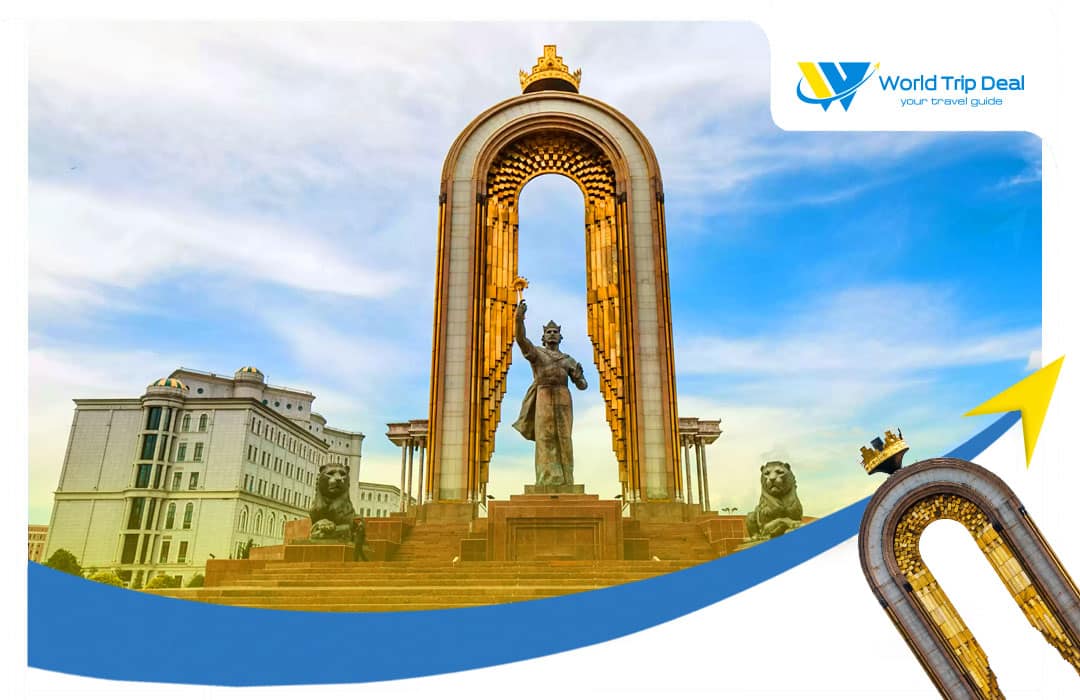
- Hidden Gems
Table of Contents
Ultimate tajikistan travel guide: tour like a pro.
Buckle up and get ready for the adventure of a lifetime as we delve into the hidden treasures of Tajikistan. This breathtaking country is a diamond in the rough, waiting to be discovered by those who are willing to take the road less traveled. Tajikistan is a country that is rich in history, culture, and natural beauty.
From the majestic snow-capped peaks of the Pamir Mountains to the bustling and vibrant bazaars of Dushanbe, Tajikistan has something for everyone. Whether you’re a seasoned adventurer or a curious traveler, Tajikistan tourism is guaranteed to leave you spellbound.
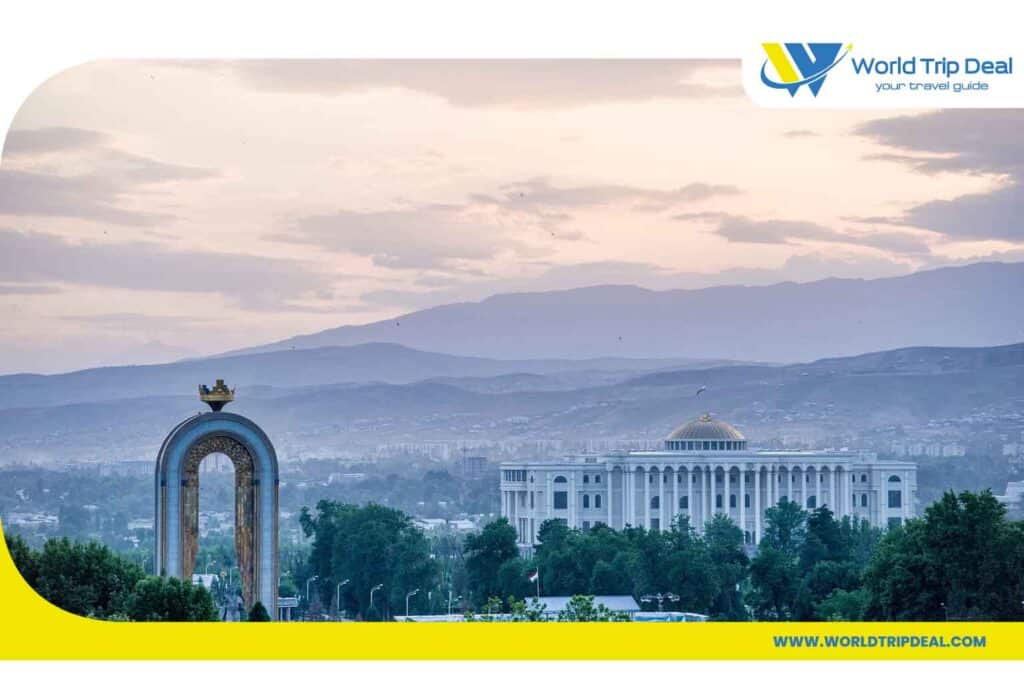
In this guide, we will take you on a journey to explore the best of Tajikistan tourist places, so get ready to be immersed in a world of adventure, culture, and beauty. So, pack your bags, grab your camera, and let’s embark on a journey you’ll never forget!
Tajikistan Travel Guide: Top 8 Tourist Attractions
Tajikistan is a country full of surprises and wonders that are just waiting to be explored. From bustling cities to the majestic mountains, Tajikistan has something to offer for every kind of traveler. Join us on a journey to explore the best of Tajikistan tourism places, so you can experience the magic of this country for yourself.
Dushanbe: The City of Museums
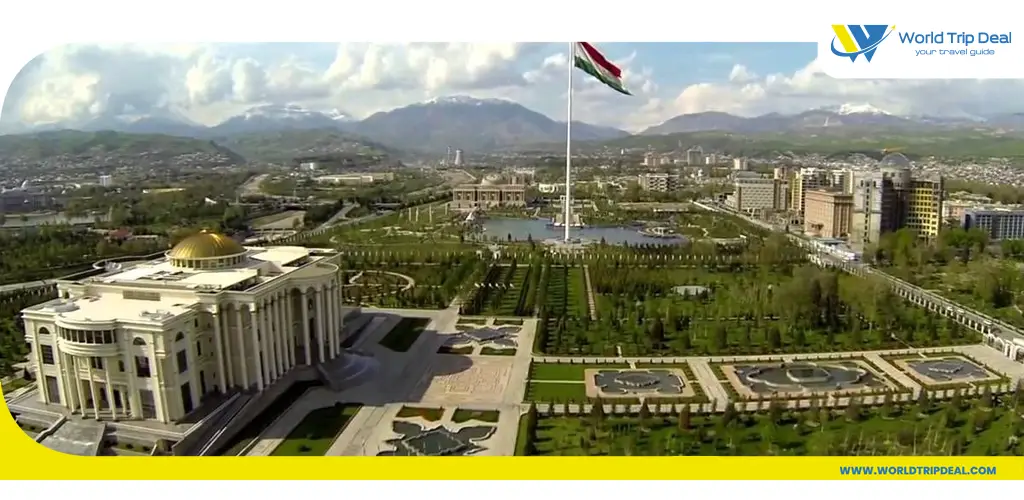
Dushanbe, the capital city of Tajikistan, is a vibrant and modern city full of life. The city is home to some of the best museums in the country, including the National Museum of Tajikistan, which houses a rich collection of artifacts and exhibits that showcase the history and culture of the region. Dushanbe is also a great place to sample some of the local cuisine, which is a blend of Persian, Russian, and Central Asian flavors.
Iskanderkul: The Mirror of the Mountains
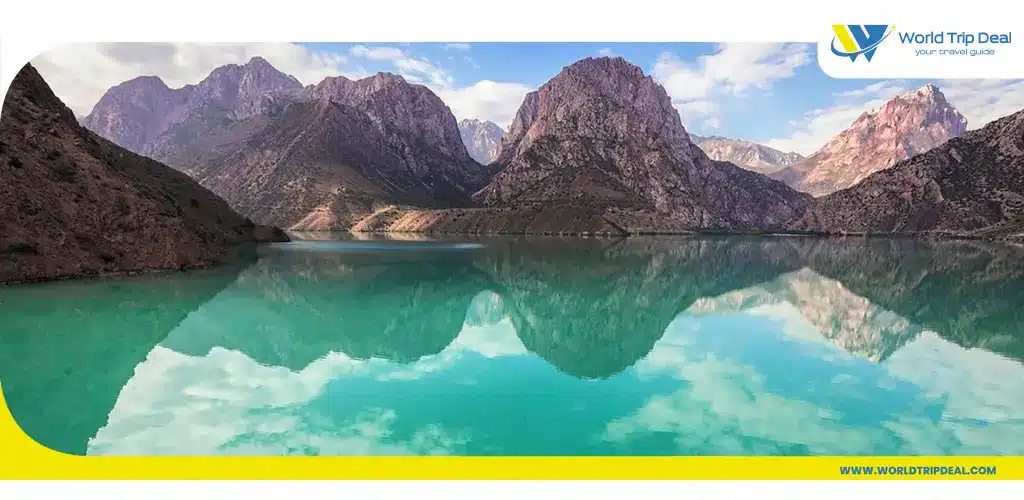
Iskanderkul, also known as Alexander’s Lake, is a stunning mountain lake located in the Fann Mountains. The lake is surrounded by picturesque scenery and is a popular spot for hiking, camping, and picnicking. The area is also home to several waterfalls and hot springs, which are great for relaxing after a long day of exploring.
Khujand: The Sapphire of Tajikistan
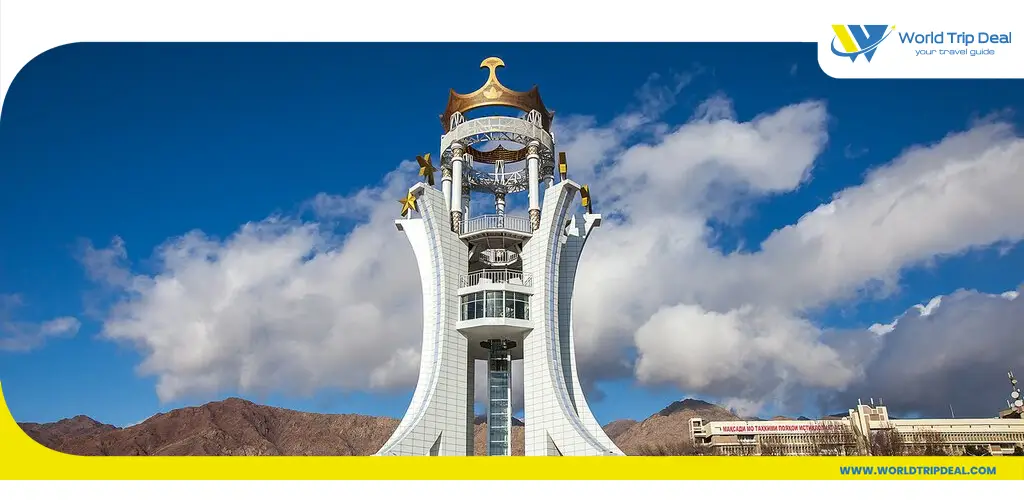
Khujand is the second-largest city in Tajikistan and is located in the northern part of the country. The city is home to some of the best historical sites in Tajikistan, including the Sheikh Muslihiddin Mausoleum and the Khujand Fortress. Khujand is also a great place to experience the local culture, with lively bazaars, traditional music, and delicious food.
Panjakent: The Gateway to Ancient Persia
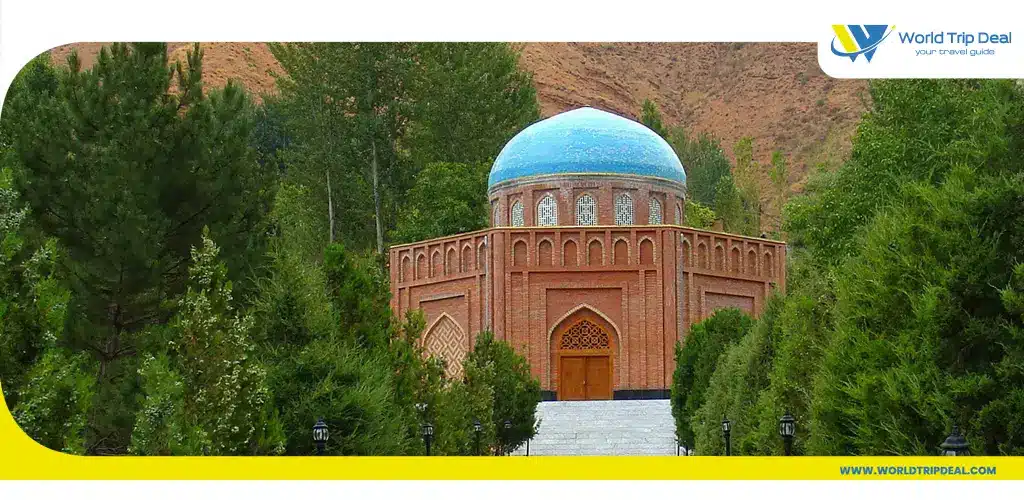
Panjakent is an ancient city that was a major center of the Sogdian civilization. The city is home to several historic sites, including the ruins of the ancient city of Sarazm, which is a UNESCO World Heritage Site. Panjakent is also a great place to shop for souvenirs, with local crafts and textiles being some of the most popular items.
Kalai-Humb: The High-Altitude Haven
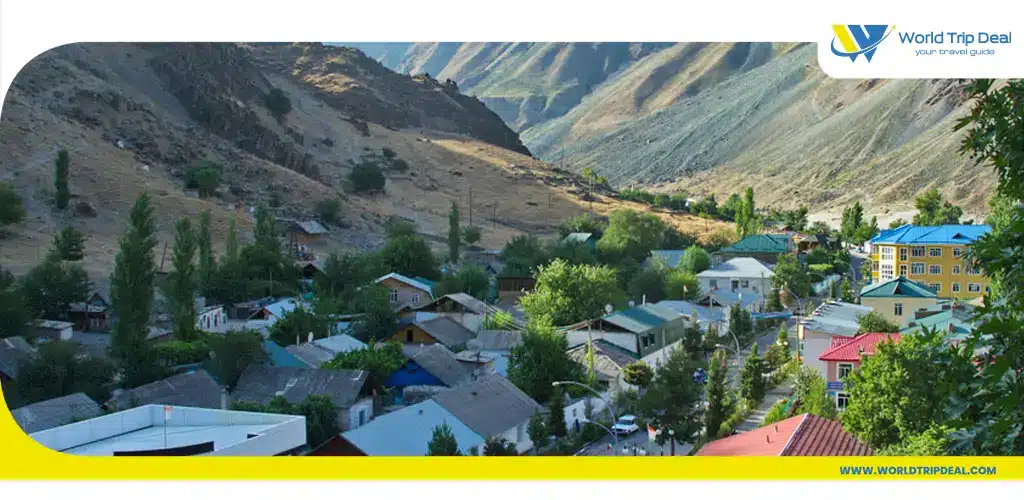
Kalai-Humb is a small town located in the Pamir Mountains and is a popular stop for those on the Pamir Highway. The town is home to several guesthouses, a great place to stay while exploring the surrounding mountains. Kalai-Humb is also a great place to experience the local culture, with traditional Pamiri music and dance being a highlight.
Khorog: The City of Stones
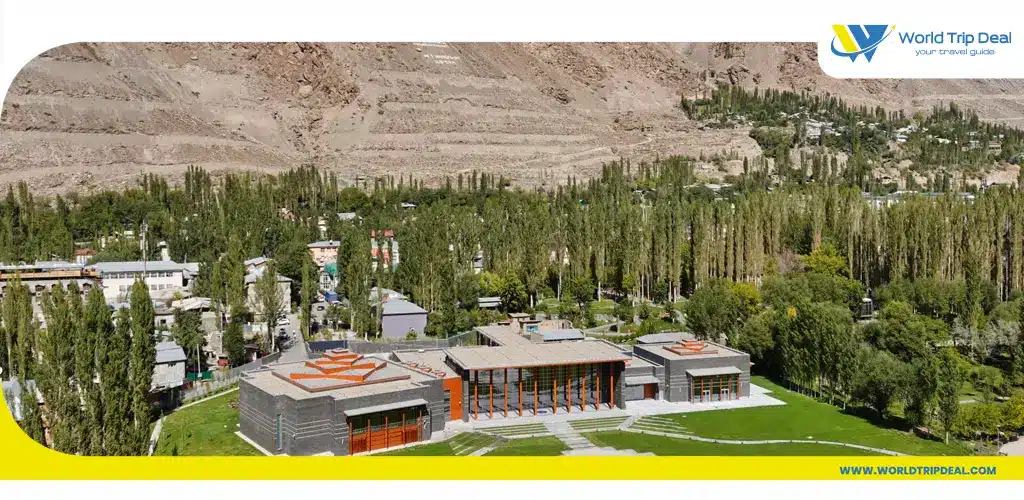
Located in the heart of the Pamir Mountains, Khorog serves as the capital of the Gorno-Badakhshan Autonomous Region. The town is home to several historic sites, including the Khorog Museum, which houses a collection of artifacts that showcase the history and culture of the region. Khorog is also a great place to experience the local culture, with traditional music and dance performances being a regular occurrence.
Murgab: The Wild East of Tajikistan
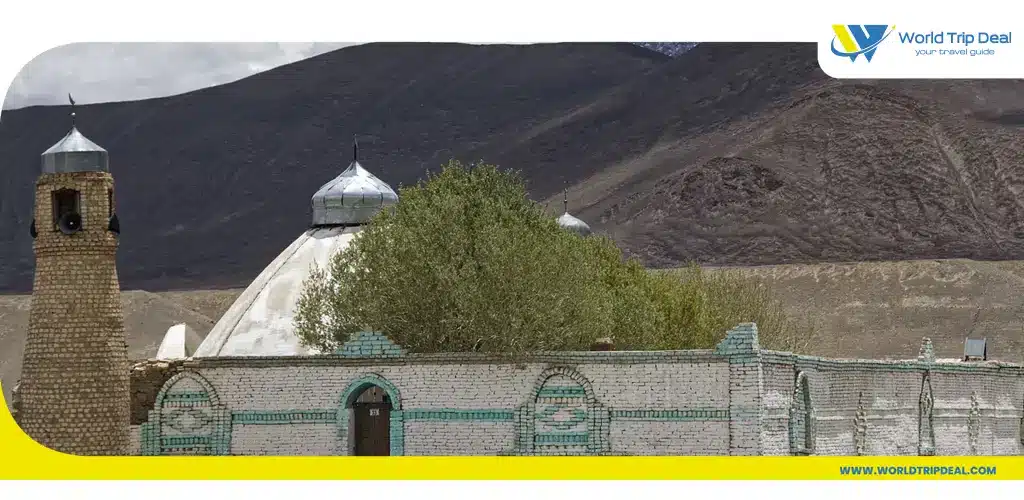
Murgab is a small town located in the high-altitude region of the Pamir Mountains. The town is a popular stop for those on the Pamir Highway and is home to several guesthouses. Murgab is also a great place to explore the surrounding mountains, with hiking and horseback riding being popular activities.
Oshkosh: The Town That Time Forgot
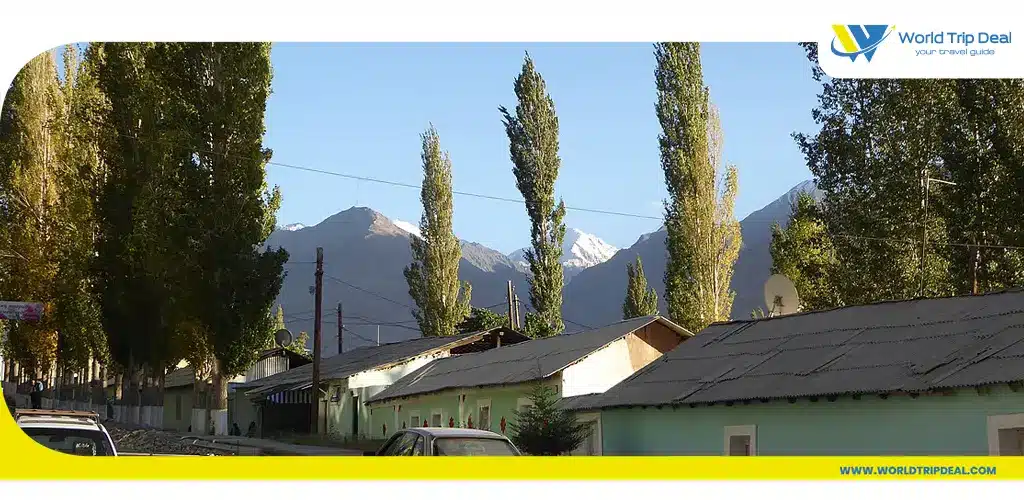
Ishkoshim is a small town in the Wakhan Valley and a popular stop for those traveling from Tajikistan to Afghanistan. The town is home to several historic sites, including the Ishkoshim Fortress and the Bibi Fatima Hot Springs. Ishkoshim is also a great place to experience the local culture, with traditional music and dance performances being a highlight.
Tajikistan is a country full of surprises and hidden gems that are just waiting to be discovered. Whether interested in history, culture, or natural beauty, Tajikistan has something for you.
Tajikistan People: An Inspiring Fusion of Culture and Tradition
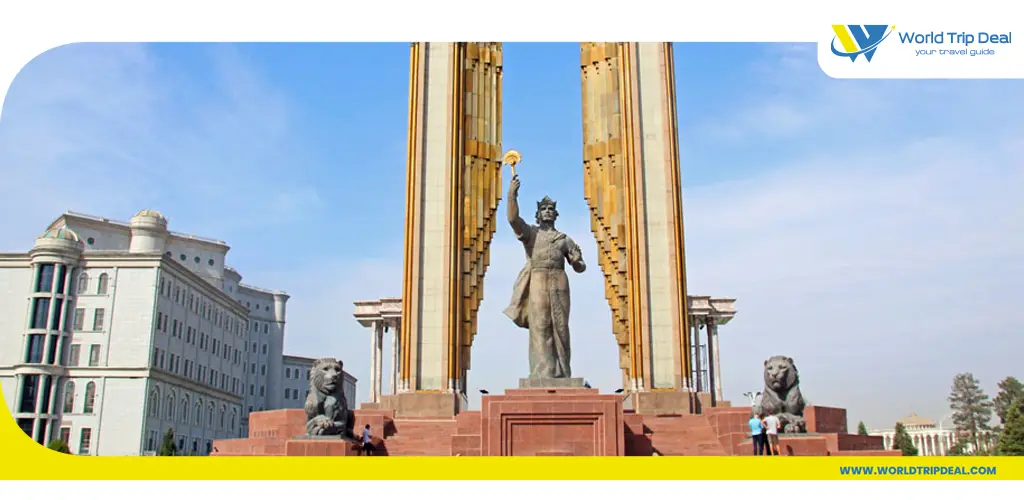
Tajikistan’s people are warm, hospitable, and diverse. The majority of the population are Tajiks, who have a rich Persian culture and a love for poetry, music, and dance. They value family ties and respect for elders, and their traditional clothing is colorful and unique.
Other ethnic groups, such as Uzbeks, Kyrgyz, and Russians, also contribute to the country’s cultural diversity. Despite their differences, Tajikistan’s people have a strong sense of national unity and pride, and they are passionate about preserving and sharing their cultural heritage.
Tajikistan: The Year-Round Destination
When it comes to the best time to visit Tajikistan, it largely depends on your preferences. The summer months of June to September are typically the warmest and driest, making it a perfect season for trekking, festivals, and outdoor activities. Spring and autumn offer cooler temperatures and fewer crowds.
However, if you’re planning a trip in winter, be prepared for extremely cold temperatures and snow. Regardless of the time of year, you’ll be sure to experience the warm hospitality of Tajikistan’s people and the awe-inspiring natural beauty the country has to offer.
Your Guide Navigating the Tajikistan Tourist Visa Process
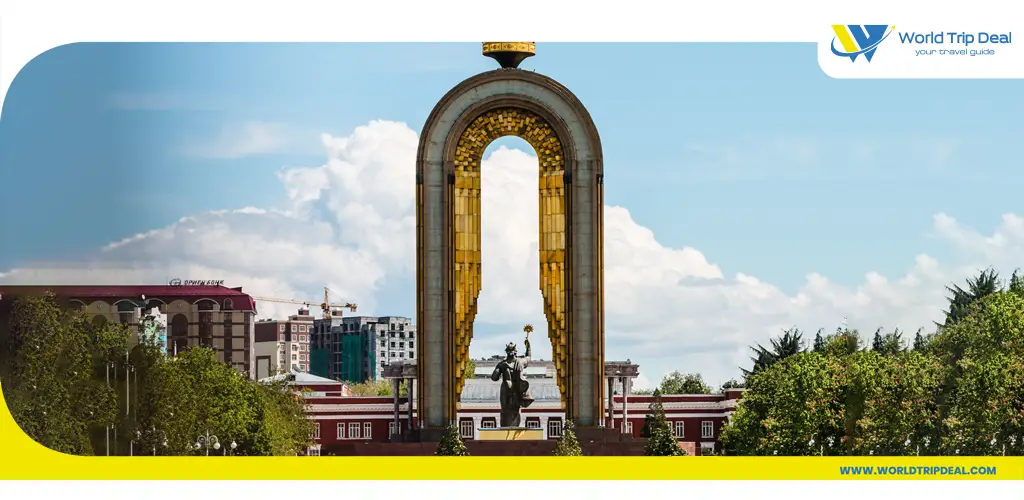
If you’re planning to visit Tajikistan, you’ll need to obtain a tourist visa before your arrival. The Tajikistan tourist visa requirements may vary depending on your nationality, the purpose of your visit, and the duration of your stay. In general, you’ll need to submit the following documents to your nearest Tajikistan embassy or consulate:
- A completed Tajikistan tourist visa application form
- A valid passport with at least six months of validity
- A passport-sized photo
- Proof of travel arrangements, such as a flight itinerary or hotel reservation
- Payment of the Tajikistan tourist visa fee
Additionally, you may need to provide other documents such as a letter of invitation, a travel insurance policy, or a certificate of vaccination. It’s always advisable to check with the Tajikistan embassy or consulate in your country to confirm the requirements and any additional documents needed for your specific case.
Tajikistan Tourism Packages: Explore the Wonders of This Hidden Gem
Looking for a hassle-free way to experience Tajikistan? WorldTripDeal offers exciting Tajikistan tourism packages that cover all the must-see destinations. From the bustling capital city of Dushanbe to the tranquil beauty of Lake Iskanderkul, our Tajikistan tourism packages provide a unique opportunity to explore the country’s culture, history, and natural beauty.
Our experienced guides will take you on a journey through the Pamir Mountains, where you’ll enjoy breathtaking views and connect with local communities. With WorldTripDeal, you can customize your package to suit your interests and schedule, and we’ll take care of all the details. Start planning your adventure today and experience the best of Tajikistan with WorldTripDeal!
World Trip Deal
For more Information Please Visit WorldTripDeal .
- Skip to primary navigation
- Skip to main content
- Skip to footer
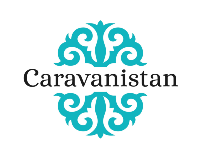
Caravanistan
The Silk Road Travel Guide
The Pamir mountains capture the imagination of travelers more than any other destination in Central Asia. From the high wind-swept semi-desert of the far east, to the Wakhan valley where you can wave and chat to villagers in Afghanistan: the Pamirs are a unique place that have captured the hearts of many adventurous, hardy travelers.

Hardy and adventurous are keywords here, though. The roads are bad, the homestays rudimentary at best, and a stomach bug is difficult to avoid. If you are not fussy about comfort, get ready to dig into the distinct landscapes and culture of the Pamirs.
To all adventurers who prefer their trails unmarked: the Pamirs are your spiritual home. Get on the Pamir Highway .
Table of Contents

Travel to Tajikistan often equates “ doing the Pamir Highway ” or “ trekking in the Fann mountains “. Although those are both excellent ideas, we would like to offer up some more suggestions to expand the range of ideas.
What’s great about Tajikistan is how every area – the north , the south , the Pamirs – blends together natural beauty, village life and historic sights. That makes the task of separating out specific “things to see and do” difficult, as it is really all about being in a place and peeling back the many layers one by one, as you stay longer.
But here are 30 suggestions anyway.

Building an itinerary
Flights to Dushanbe are expensive. If you are planning to fly in and out, it makes sense to start and end your journey in a neighbouring country. Nearby airports are Tashkent , Samarkand and Osh . If you are planning a longer trip, read our multi-Stan itinerary advice .
Especially Osh makes a lot of sense for a fly-and-drive holiday. Placed just outside of the country, it neatly ties a loop around Tajikistan.
Starting off in lowland Osh (1), the Pamir Highway goes up, up, up until some of the highest mountain peaks in the world start coming into view. If you have the time, a visit to the Kyrgyz Pamir-Alay (2) is worthwhile both for hikers and horse riders and for those who just want to gaze up Peak Lenin from their yurt entrance.
Cross the border into Tajikistan at over 4 000 m and arrive at desolate Karakul (3). Then it’s onto frontier town Murghab (4), through the wind-swept Alichur valley to one of the world’s coldest villages, Bulunkul (5).
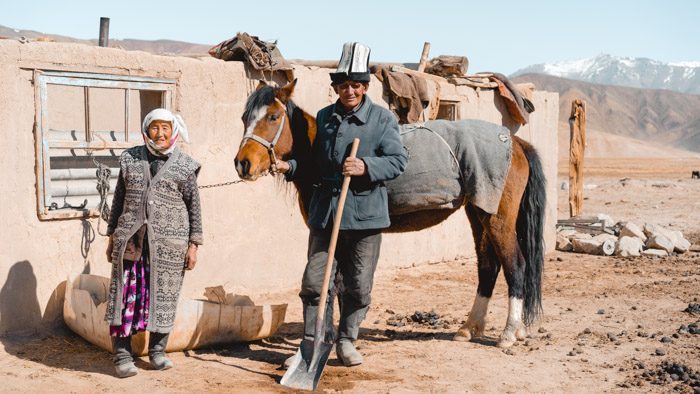
After Bulunkul, turn off to the Wakhan Valley (6) to peek across the border to Afghanistan , and even Pakistan in the distance. Culturally, a different world. Khorog (7) is the capital of the Pamirs, which means you can access the internet here. It’s also the backdoor into the Afghan Wakhan Corridor .
Then it’s time to leave the Pamirs and head towards lowland Tajikistan, but before you get there, you still have the chance to explore several side valleys – the Bartang Valley (8) is the most popular one.
Dushanbe (9) is interesting mostly for what it says about the deplorable mindset of Tajikistan’s elites, and the possibility of getting a real coffee. Once rested, head back into the mountains – the Fann mountains (10) this time. Exit to Khujand (11), which bustles with the energy of the Ferghana Valley, and make your way back to Osh through southern Kyrgyzstan.

The rest of Tajikistan
With all the focus on the Pamirs, you would almost forget there is another side to Tajikistan as well.
Dushanbe is the natural hub for travelers, and it’s a pleasant place to prepare for or cool down from mountain exploits. From Dushanbe, hikers can move north to the Fann mountains . They are just as stunning as the Pamirs, but not as big. East of the capital lies the Rasht Valley . Few people visit the mountains here.
Panjakent and Khujand are trade towns near the Uzbek border, more bustling in their vibrations than the laid-back tempo of the rest of Tajikistan. These are the gateways to Uzbekistan and Southern Kyrgyzstan , as well as less visited places like Yagnob and the Upper Zarafshan Valley .

The Khatlon district south of Dushanbe is boiling hot in summer, but also has its share of attractions, and works great for day and weekend trips out of Dushanbe when the mountains become too snowy, or as a stopover en route to the Pamirs.
Shared taxis
Traveling by road in Tajikistan is exhausting (due to bad roads and high altitudes), frustrating (due to frequent breakdowns, mudslides or avalanches), scary (tired drivers, big cliffs) and exhilarating (due to the spectacular scenery).
Road transport in Tajikistan drives without schedule, instead waiting for passengers and departing when full. For the long stretches, examine your driver’s face before you get in: drivers sometimes work until exhaustion, so make sure you feel safe. Also inspect your vehicle (spare tire, tire pressure, …): shit happens (often), so try to be prepared!

If you are heading for smaller settlements you will need to book a whole car if you don’t want to wait for ages for enough passengers to assemble. Make sure you get a 4WD vehicle if heading for the mountains: 2WD taxis tend to overestimate the off-road ability of their vehicles.
Within cities, check which taxi app you should use .
Planes and trains
Flying in and out, both Dushanbe and Khujand host international flights, although both are not well-connected and more expensive than Osh, Bishkek or Tashkent. Dushanbe also has internal flights to Khujand and to Khorog to cut travel time.
After a 20-year interruption, trains between Tajikistan and Uzbekistan are running once more after the death of old president Karimov. Local trains are super-slow: only for true train geeks and slow travel fanatics.
For more specifics on cross-border transport, see Tajikistan’s border crossings .
Self-driving and cycling
Generally a very good way to get around Tajikistan. Car rentals should be booked in advance if you are planning to come in summer. Roads are bumpy and petrol is bad, so go easy on your vehicle to make it last.
All and more in our articles on driving and cycling Tajikistan.

Transport in winter and spring
As soon as winter falls over Tajikistan, many places hidden behind high passes become very difficult to reach over land because of snow. The Pamir Highway remains open year-round though. The same goes for the road to Khujand and the southern plains.
In spring, road blocks do not come from avalanches, but from mudslides or rockslides. Only in high summer relatively easy access to all parts of the country is ensured, but even then, make sure you factor in some rest days to buffer possible delays.
Khorog – Dushanbe
Should you take the airplane or the road? If the air service is working , it’s worth considering, since the views are spectacular and the long overland journey tends to take its toll on travelers.
It is a long journey of 14 hours by car. Think about breaking the journey into smaller parts by ventures into the valleys of Bartang, Vanch or Rasht , or watching wildlife in the Darwaz range .
- Self-drive in Tajikistan
- Trains in Tajikistan
- Cycling in Tajikistan

Practical details
Have a look first to see if you need a visa for Tajikistan . Tajikistan has had safety issues in the past decade: a 2018 rogue attack killed 4 cyclists and civil unrest has blocked off the Pamirs on several occasions. We discuss possible concerns in detail on the safety in Central Asia page .
Of the 5 stans Caravanistan covers in depth, Tajikistan is the most culturally sensitive one. Have a look at the dos and don’ts for traveling in Tajikistan to avoid painful misunderstandings.
Health-wise , diarrhea is very common for travelers in the Pamirs. While cases of serious altitude sickness are rare, getting a headache when ascending the Pamir plateau is not. Going off the beaten track, you should take more precautions to prevent cholera, malaria and Lyme’s disease.

There is no mains electricity in much of the Pamirs and outside Dushanbe and black-outs are common, especially in winter. Locals turn on generators for a few hours per day. Think about taking along a portable solar panel if you need a constant supply of electricity.
Exchanging money is easy in major towns like Khorog, Dushanbe and Khujand, but getting money from an ATM is unreliable outside Dushanbe. Paying by card is impossible in most of the country.
The sim card situation is always changing. It’s possible to get some internet in the Pamirs, but don’t count on it. More details in our Tajikistan articles on money and banking and communications .
Despite an interesting culinary heritage , food security in the Pamirs is an issue, and you should not rely on buying food between Osh and Khorog besides what is offered in homestays – shop in advance. Outside of Dushanbe’s restaurants , it’s often the standard dull and unhealthy Central Asian menu, although Tajik diets are less meat-heavy. We discuss your options as a picky eater .

For orientation , Maps.me is often better than google maps. If you are a reader, have a look at our favourite books about Tajikistan .
It’s cold enough in summer on the high Pamir plateau, so almost all cyclists time their trip for July and August. Hikers and climbers do the same. With a car, a warm hat and an adventurous spirit, you can enjoy Tajikistan in colder seasons. Definitely a special experience.
Tajikistan’s lowlands, on the other hand, are best enjoyed out of summer, when the temperatures reach boiling point.

To learn more, read our detailed breakdown about when to visit Tajikistan , and our Tajikistan events calendar .
Budget and accommodation
Although Tajikistan is the poorest post-Soviet country, services are not super cheap, even if the quality is often so-so. Blame its remote location and local elites’ stranglehold on the economy.
A Pamir homestay will cost around 15$ with half board, and petrol costs around 1 euro / liter. The lack of transport in the Pamirs forces a lot of budget tourists to shell out for a tour with a driver , while bad roads mean the price of car rentals is high as well. We go in depth on the budget question at the Tajikistan travel budget page .
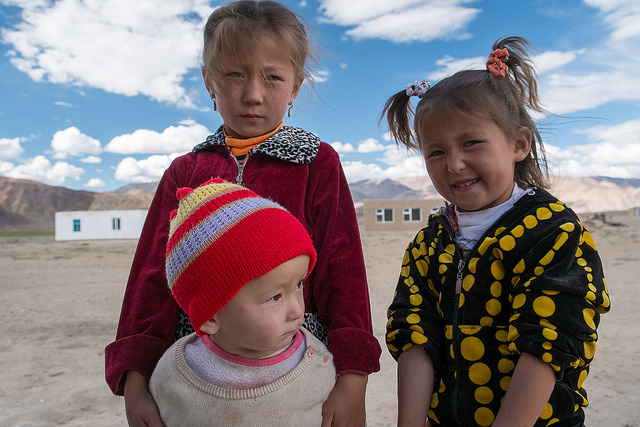
There are no hotels in Pamir outside of Khorog, only homestays. Dushanbe’s accommodation options are limited, especially in the midrange, but otherwise adequate.
For more on homestays, camping, electricity black-outs, unexpected hospitality, tarof, … see the accommodation chapter .
Tours and tour operators
We only work with a few people in Tajikistan who we trust to deliver a consistent level of service, even in busy times. Sharaf is a mountain climber and trekking guide in international standing who knows the Pamirs (both on the Tajik and the Afghan side) and the Fann mountains like his back pocket.
Khudik is our master of logistics that we rely on for Pamir Highway jeep tours.
Have a look at our Tajikistan tour template suggestions for ideas, or simply send us your own ideas for a customised tour .
Destinations
- Pamirs : The Pamir Highway winds its way through landscapes from another planet
- Karotegin : Dushanbe and around + the Garm valley
- Sughd : Khujand, Penjikent, 7 Lakes, Fann mountains and Iskanderkul
- Khatlon : a different Tajikistan: hot, flat, but also nature and history
More country guides
- Turkmenistan
- Afghanistan
More on Tajikistan
- Tajikistan starter guide
- Things to do
- Accommodation
- Budget estimates , communication & banking
- Visas & border crossings
- When to visit & events calendar
- Self-driving
- Northern Tajikistan
- Central Tajikistan
- Southern Tajikistan
Travel Guide
Tours & rental.
- Custom tours
- Search all tours
- Pamir Highway tours
- Uzbekistan tours
- Kyrgyzstan tours
- Car & motorbike rental
Visa invitations
- Russia (tourist)
- Russia (business)
Get to know us
- What people say
- Letter from the Silk Road
- Terms & Conditions
- Follow us on Instagram
Do you have a request for this tour operator? Send a message
Not exactly what you were looking for? Check out our custom tour offer: competitive prices, tailored to your needs and wants. Customize your tour

Tajikistan travel guide, including map of Tajikistan, top Tajikistan travel experiences, tips for travel in Tajikistan, plus how to follow the Pamir Highway thr
Sandwiched between Afghanistan and China, this former Persian settlement is made up of a mêlée of clans. It has a long and swashbuckling history; it is the land where Alexander the Great battled the Scythians, where Russian and British spies played cat and mouse and, most recently, where civil war raged.
But despite being the poorest of all the former Soviet countries, it is rich in travel experiences, offering striking scenery and gargantuan peaks (a staggering 93% of the country is mountainous).
Perfect for those who like adventure with a capital A, this is a wild, rugged region where you’ll find yurt-dwelling farmers, gleaming lakes and the Pamir Highway, one of Asia’s greatest road trips.
Wanderlust recommends
- Take the high road – drive along the Pamir Highway where you’ll be treated to dazzling alpine views at every twist and turn
- Snuggle up in a yurt amidst scenic pastureland
- Explore the Silk Road relics and natural beauty of the Wakhan Corridor
- Saddle up to see the Pamir plateau on horseback
- Go hiking in the Fan Mountains, where you can wander among Tajik herders, lakes and wild goats
Wanderlust tips
Keep your documents handy as the military in all towns will be eager to vet your papers; there are numerous checkpoints, too. Arrive armed with small gifts to repay the Tajik hospitality you will undoubtedly encounter. Take a good first aid kit as you could find yourself a long way from medical facilities. A satellite phone is a must if you plan to head off into rural areas alone.
Further Reading
Travel in tajikistan: vital stats.
- Capital of Tajikistan: Dushanbe
- Population of Tajikistan: 7.3 million
- Languages in Tajikistan: Tajik, Russian, Uzbek
- Time in Tajikistan: GMT+5
- International dialling code for Tajikistan: +992
- Voltage in Tajikistan: 220V 50Hz AC
- Visas for Tajikistan: Tajikistan visas
- Money in Tajikistan: Somoni (TJS). There are ATMs in Dushanbe and Khojand but few in the rest of the country. Credit cards are accepted by a small number of hotels and services in Dushanbe, while travellers cheques are not accepted at all – you will need a ready supply of cash. US dollars are useful. Take newish notes as worn ones may pose a problem.
- Travel advice for Tajikistan: Foreign & Commonwealth Office
- Tajikistan tourist board: Tourist Development Center
When to go to Tajikistan
With 300 sunny days a year you would be hard pressed to pick a wrong time to visit, although the sweltering temperatures of around 40ºC in the summer months (June-September) don’t suit everybody. This is the best time to see the mountains but in early summer some river crossings can be dangerous. Winter temperatures between November and February hover around freezing in the capital but can plunge to between -20 and -40º C in the Pamirs. Some mountain passes are closed at this time. The best seasons are spring (March - May) and autumn (September-October). Spring is mild but wet and avalanches and landslides can leave roads impassable. Autumn is also mild and is perfect for trekking.
International airport
Dushanbe (DYU) 5 km from Dushanbe.
Getting around in Tajikistan
In the capital and large cities such as Khojand buses , minibuses and taxis are plentiful. Getting from A to B elsewhere is no mean feat. Trains run to some of the major destinations. Shared taxis and minibuses ply certain routes such as the run from Dushanbe to Khojand and Penjikent, and east to Khorog. Self-drive car hire is available though roads are bad, petrol stations are few and far between and there are no car recovery companies should you break down.
Tajikistan accommodation
With a minimal tourist infrastructure, choices are limited. Hotels and rented apartments are usually soulless former Soviet blocks. Instead, opt for a homestay with a Tajik family or a spell in a mountain yurt . You’ll get to glimpse how Tajiks live and dine like a king but facilities are usually pretty basic, with squat toilets and no running water.
Tajikistan food & drink
A traditional spread consists of dried fruit , sweets and nuts followed by soup , then meat and, finally, plov (fried rice, meat and chopped turnip or carrot). Meals are served with non (flatbread). Other specialties include qurotob (flaky bread coated in cheese ball liquid and topped with onions), mantu (steamed meat dumplings), sambusa (meat and onion pasty) and belyash (fried yeast case stuffed with minced meat). You’ll find plenty of dairy products, most commonly chaka (sour milk) and yoghurt , as well as an abundance of grapes and melons . Tea is served with meals, between meals and whenever else the occasion calls for it.
Health & safety in Tajikistan
On the whole Tajikistan is stable and relatively safe. You should be careful near the volatile Afghan border. Unexploded mines are a hazard along the Afghan, Uzbek and Kyrgyz borders and in the Tavildara region. Lone female travelers should be wary, particularly outside the cities. Medical facilities are poor and basic supplies are thin on the ground. Take precautions against TB, typhoid cholera, malaria and altitude sickness – consult your GP or travel health clinic well in advance of departure.
Related Guides

Afghanistan

Slow travel

Frontier and expedition

Meet the locals

Walking and trekking
Related articles, loading more items, loading trips.

Join our newsletter
Get the very best of Wanderlust by signing up to our newsletters, full of travel inspiration, fun quizzes, exciting competitions and exclusive offers.
Tajikistan Travel Guide
Popular destinations, san francisco, new york city.
- Terms of Use
- Privacy Policy
- Your US State Privacy Rights
- Children's Online Privacy Policy
- Interest-Based Ads
- About Nielsen Measurement
- Do Not Sell or Share My Personal Information
- Nat Geo Home
- Attend a Live Event
- Book a Trip
- Inspire Your Kids
- Shop Nat Geo
- Visit the D.C. Museum
- Learn About Our Impact
- Support Our Mission
- Advertise With Us
- Customer Service
- Renew Subscription
- Manage Your Subscription
- Work at Nat Geo
- Sign Up for Our Newsletters
- Contribute to Protect the Planet
Copyright © 1996-2015 National Geographic Society Copyright © 2015-2024 National Geographic Partners, LLC. All rights reserved
The Ultimate Guide To The Wakhan Valley, Tajikistan
Updated May 2024 , T he Ultimate Guide To Tajikistan’s Wakhan Valley was originally written in February 2018
The Wakhan Valley, a geographical region that sits mostly in northern Afghanistan, but stretches over into southern Tajikistan. The Wakhan Valley is bound by the Pamir and Hindu Kush Mountain Ranges but its Wakhi people can be found outside of these areas of Tajikistan and Afghanistan in Pakistan’s Gilgit , Upper Hunza, and Gojal Valleys, as well as around Xinjiang Uyghur Autonomous Province, China .
In this guide we’ll be focusing on the Wakhan Valley in Tajikistan, not the Afghan Wakhan Corridor .
Need Travel Insurance and Evacuation Services for Tajikistan?
Start shopping for travel insurance plans over at IATI Insurance . Readers of the Adventures of Nicole get a 5% discount off your plan.
The Adventures of Nicole partners with Global Rescue to offer the world’s leading medical evacuation and security advisory services. To travel with peace of mind, shop evacuation coverage at Global Rescue .
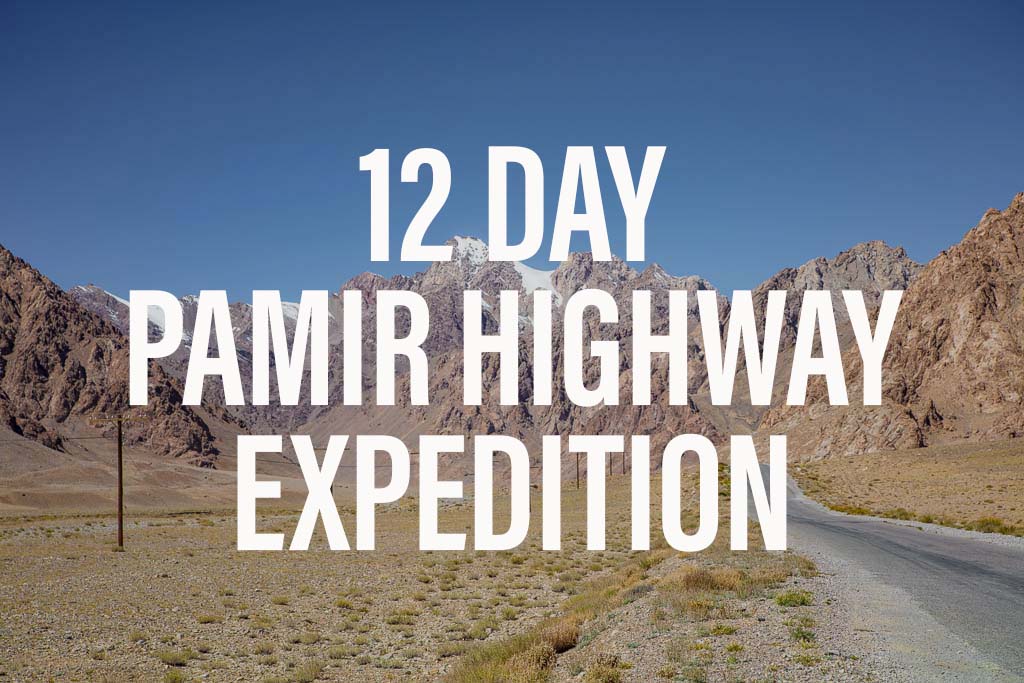
Wanna join a group expedition on the Pamir Highway?
I will be leading a 12 day expedition down the Pamir Highway June 25-July 6, 2024. There is also an option for a 25 day Tajikistan Expedition that also includes a trek in the Fann Mountains.
Adding the Wakhan to your Pamir adventure? Check out the Pamir Highway Guide Need help creating an itinerary? Check out my 10 day Pamir Highway itinerary
History of the Wakhan Valley
The Wakhan is where the east meets west in the Central Asia region, and because of that, is historically important going back thousands of years. The Western Wakhan was conquered by Kujula Kadphises in the earlier part of the first century AD to become one of the five principalities of the Kingdom of Kushan.
It straddled both sides of the River Panj and Pamir River, and until 1883 was ruled by a hereditary line from the capital of Qala e Panja ( which presently sits in Afghanistan ).
In the 1880s after pressure from Britain, the Wakhan became ruled under the Emir of Afghanistan. In 1873 and 1893 agreements between Britain & Russia and Britain & Afghanistan were made ( see Great Game ) to use the Panj & Pamir Rivers as a border and to form the Durand Line as a border for British India, thus resulting in the split of the historic Wakhan region into the Russian Empire ( Tajikistan ) and the Wakhan Corridor ( Afghanistan ), with the Afghan Wakhan Corridor acting as a buffer between the two empires.
In 1949 Communist China, under the rule of Mao Zedong sealed the borders between the Wakhan and China, ending an over 2,000-year-old caravansarai route and essentially sealing off the area ( particularly the Afghan side ) from the world, while the Russian development of the Tajik Wakhan connected it with other parts of Tajikistan.
Wakhi people, or Khick – as they call themselves in Wakhi, can be found in both the Afghan and Tajik Wakhan. They also live in adjacent areas in Xinjiang Uygur Autonomous Province over in China, and the Gilgit-Baltistan and Khyber-Pakhtunkhwa Provinces of Pakistan.
Practical Information
Where is the Tajik Wakhan Valley? The Tajik portion of the Wakhan Valley sits in southeastern Tajikistan along the border with Afghanistan with the main section of the Wakhan sitting between Ishkashim and Langar.
What languages are spoken in the Wakhan? Wakhi is the language spoken in the greater Wakhan region, although there are dialects from village to village. The language is related to Farsi spoken in Iran, Dari in Afghanistan, and Tajik, however, it isn’t mutually intelligible. Russian is widely understood in the Tajik Wakhan, as well as Tajik and Pamiri.
It’s close to Afghanistan, is it safe? The war in Afghanistan hasn’t much affected the Tajik side of the Wakhan. There has been an instance when fighting in the Afghan Badakhshan intensified, so Tajikistan ultimately closed the entire GBAO ( Gorno-Badakhshan Autonomous Oblast ) to foreigners. In general, yes, the Tajik Wakhan Valley is safe to visit.
How many days should I spend? It depends on your interests and how much time you have available. Many will cross the Wakhan in 1-2 days, paying quick visits to the sites and fortresses.
Others will opt to spend a week or more getting a more in-depth experience in the Wakhan. There are also some treks to be done in the Wakhan Valley as well as in the Afghan Wakhan Corridor, so if that is of interest it can take on additional time to your Wakhan visit.
What time of year should I go? The time that it is easiest to visit the Wakhan and have the best weather is from June to September. April and May can be muddy due to landslides and melt-off from the mountains.
Winter can get pretty cold and the roads can become difficult with snow. October is a cooler month to visit, but you will get the beautiful fall colors before winter sets in by November.
Do I need any special permits to visit? You will need a Tajik visa and GBAO permit. Skip here to find out more.
What are my options for lodging? In general, you will be staying in homestays. Expect to pay 90-220 TJS per night including dinner and breakfast at a homestay. The closest accommodation to a hotel/hostel in the Wakhan would be Hanis Inn located as you arrive in Ishkashim from Khorog.

The currency used in the Wakhan Valley is the Tajik Somoni. The current exchange rate as of May 2024 is:
- $1 USD = 10.95 TJS
Which Direction?
The villages at the fringes of the Wakhan Valley are Ishkashim and Langar. If coming from Osh and Murghab you will most likely leave Bulunkul via the Khargush Pass to enter the Wakhan Valley. If arriving from Dushanbe and Khorog you arrive in the Wakhan at Ishkashim. A trip into the valley from either direction will be equally as beautiful.
Tajik Visa and GBAO Permits
As stated earlier, you will need a Tajik Visa and GBAO permit to travel in the Wakhan. You can apply for a Tajik e-visa and GBAO permit here .
You can also get your GBAO permit at the OVIR office in Dushanbe for 20 TJS. You must bring your passport and visa for it to be processed.
Optional Permits
East of the Khargush Pass sits Lake Zor-Kul on the Tajik-Afghan border. You do need to secure a Zorkul permit in order to visit. These can be obtained at the PECTA office in Khorog Central Park.
How To Travel The Wakhan Valley
The methods most use to travel the Wakhan Valley are private 4×4 hire, shared taxi, hitchhiking, or cycling. Most who visit the Wakhan Valley do so by private 4×4 hire with other travelers as a detour from the Pamir Highway between Khorog and Osh, or as a loop from Khorog to Khorog combining either the Pamir Highway and Wakhan Valley or the Shokhdara Valley and Wakhan Valley.
Most 4×4 drivers in Tajikistan charge a rate of .70¢-.90¢ per kilometer . The easiest places to arrange a 4×4 with other travelers will be in Khorog, Osh, and Murghab.
In Khorog you can leave a note at the PECTA office, ask around at the Pamir Lodge, or really any accommodation in Khorog to search for other travelers to share costs. In Osh try asking around at hostels around town, or alternatively, in Murghab, the Pamir Hotel and Tulfabek Guesthouse will be your best bets to find other travelers to rideshare with.
Check out the Tajikistan Travel Guide to start planning your trip
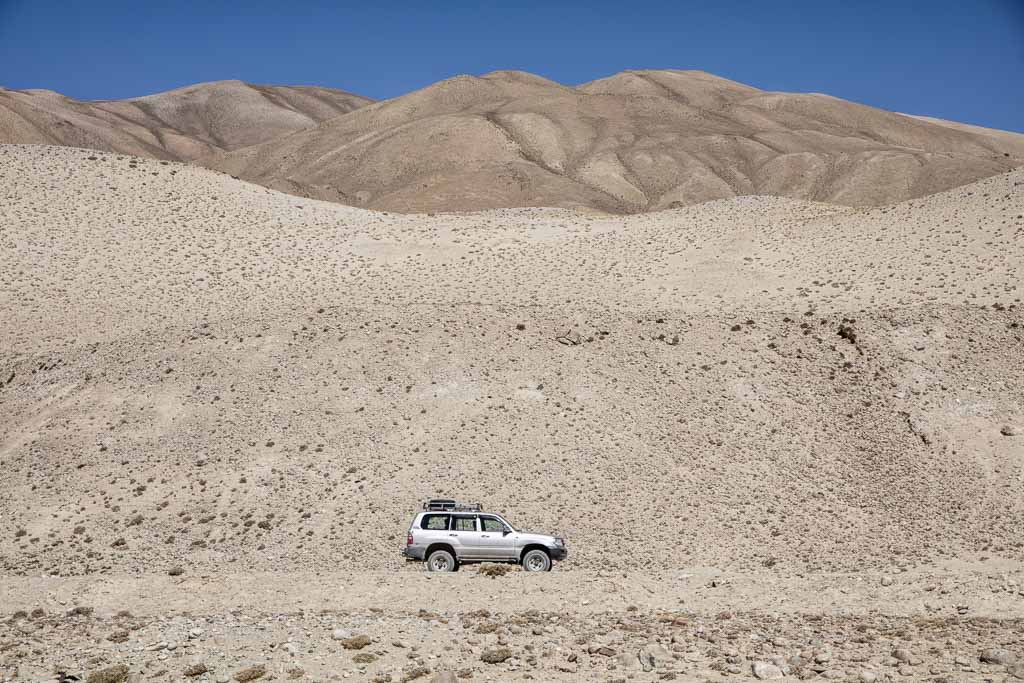
Another option to get around the Wakhan is by marshrutka/shared taxi, which is the closest thing around here to public transport. Here are the most common routes:
- Khorog-Langar: 120 TJS . Departs 5-7 am. Head to the lot across the footbridge from the Khorog Central Bazaar
- Khorog-Ishkashim: 40 TJS . Usually departs before 10 am. Head to the lot across the footbridge from the Khorog Central Bazaar
- Ishkashim-Namadgut: 6 TJS . Taxis departing for either Khorog or Namadgut/Langar can be flagged down on the main road or your guesthouse can arrange pickup
- Namadgut-Tughoz (Yamchun): 20-30 TJS . Easiest to flag a passing car down from the main road or have your guesthouse arrange for you
- Tughoz-Vrang: 5-10 TJS . Tughoz is the village along the main Wakhan Valley Road down the mountain from Yamchun and Bibi Fatima. Ask around at guesthouses to make arrangements (best at least a day in advance) or try to flag a passing car down
- Vrang to Langar: 30 TJS . Vrang to Langar is a relatively short stretch so your best bet will be flagging a passing car down
Lastly, you can try hitchhiking, although parts of the Wakhan can prove difficult by thumb. In general, expect to pay something even when hitching in Tajikistan. Essentially anyone with a car functions as a shared taxi.
It’s fairly easy to hitch between Ishkashim and Khorog in the mornings. Hitching between Ishkashim and Langar will be a little more sparse and the most difficult stretch to hitch is between Langar and Bulunkul. Many hitchhikers will turn to hiring a 4×4 to get between Langar and Bulunkul.
I’ve never cycled in Tajikistan, so I cannot provide first-hand information. What I do know from cyclists I’ve spoken to while traveling in Tajikistan and the Wakhan Valley is that it’s a definite challenge and planning ahead is key. Great sources of information on cycling in Tajikistan are Travelling Two and We Love Mountains .
The Tajik Wakhan Route
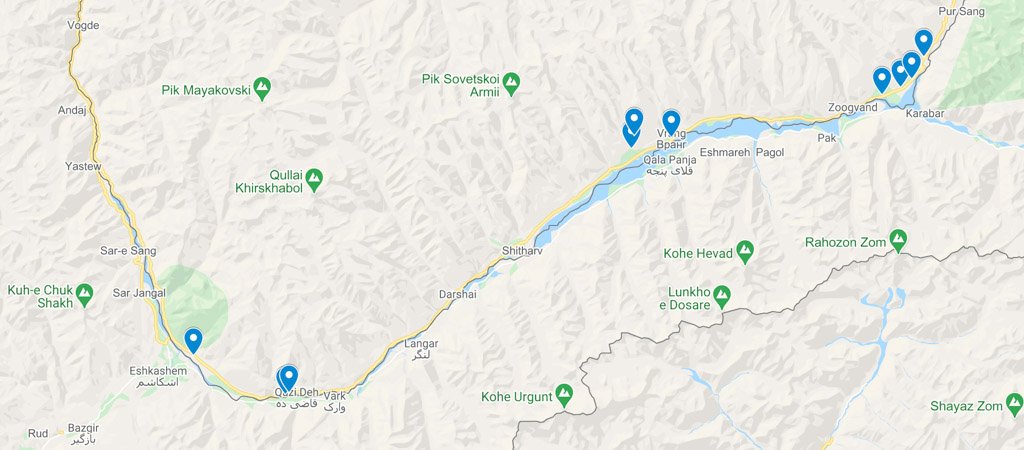
Looking for other side adventures off the Pamir Highway? Check out the Bartang Valley Guide
Khorog to Ishkashim
The 100 km that separates Khorog and Ishkashim have some of the most varied and dramatic scenery in the Tajik Wakhan Valley and at times the River Panj narrows so thin that you feel like you could touch Afghanistan. Around 39 km after departing Khorog is the turn-off for Anderob which will take you to Garm Chashma.
Garm Chashma is a natural hot spring pool just 6 km off the road, and for 5 TJS per person you can have a soak in it, but note the gendered hours: Men can get in from 5-8 am & 3:30-4:30 pm, women have their turn from 8 am-12 pm, 1:30-3:30 pm, & 4:30-5:30 pm. There is also a shrine to Ali in the village at Garm Chashma as well.
From Anderob, if you continue toward the south end of the village you can take a few switch-back turns up to Dasht Village where you can take in aerial views of Anderob and beyond. It is possible to trek from Dasht and Anderob over to Bodomara and Vezdara in the Shokhdara Valley- and are easier routes than the one you’ll read about from Darshai Village later in this section.
Plan your visit in Khorog: The Khorog Travel Guide
Beyond Anderob back on the main road, you will pass the Koh i Lal Mine . Koh i Lal was made famous by Marco Polo as he came across it in 1274 on his ventures along the Silk Road, Badakhshani rubies are still prized to this day.
According to local legend, King Solomon lived in the nearby village of Sist and ordered the devil to mine rubies for him at Koh i Lal, Sist is also home to a shrine called Mazar Khuja i Lal . A little further down the road from Sist is the village of Shanbedah , home to the Oston i Shohburhon shrine.
Continuing toward Ishkashim you’ll reach the village of Kosideh where you turn off the main road to the village of Bagush – home to a 13 AD century graveyard and petroglyphs. Further south on the road you’ll come to Oudj Village where another hot spring can be found.
About 2 km before reaching Ishkashim is the Ishkashim border crossing with Afghanistan. If you want to visit the Afghan Wakhan this is the easiest and safest access point. For those planning to visit Afghanistan read this post to find out how to get an Afghan visa in Khorog .
For those that want to get a chance to step foot on Afghan soil and don’t want to fork over the to $100-220 USD for a visa ( or just don’t have the time to visit for a length of time ), you can try to coordinate visiting Ishkaskim on a Saturday ( as of 2021 this border market is still canceled ). On Saturdays, there is a cross-border market held on an island in the Panj River technically belonging to Afghanistan, where Afghans and Tajiks meet weekly to trade and purchase goods.
The market itself is reportedly an interesting event to attend, however, in the last few years, the market has been irregular with it being canceled most weekends for various reasons from outbreaks of illness on the Afghan side to Taliban forces pushing further into the Afghan Badakhshan. You don’t need a visa to go to the market, you’ll only be asked to leave your passport with the guard at the border gate. Ask locals to check if the market is on when you’re there.
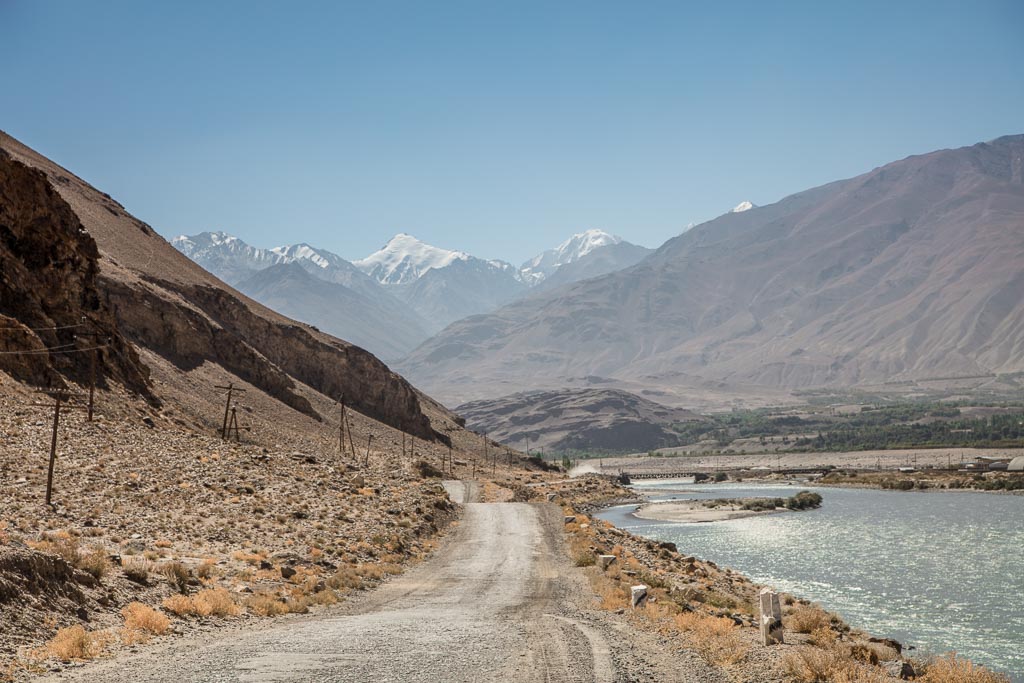
Welcome to the Wakhan! That is if you’re arriving from Khorog .
Ishkashim is small and walkable, yet the largest village in the Tajik Wakhan Valley. If you’re looking for something or a certain place, just ask an Ishkashimi- they’re super friendly and helpful.
I was milling about, slowly making my way to the bazaar in Ishkashim one day when an elderly woman saw me and asked where I was going. I told her the bazaar and before I knew it she grabbed my hand and took me on a shortcut through her neighbor’s yards to the bazaar.
But that’s if the kids don’t find you first- When I arrived back from Afghanistan in 2017, I’d reached Ishkashim a little too late to make the shared taxis back to Khorog and right away a group of kids- two girls and three boys found me. They practiced some English with me and then the girls took me up to their homes to meet their families, one of the girls even took off her necklace and clipped it around my neck (even though I tried to decline and give it back to her- I still wear it every day).
The main highlights to check out in Ishkashim are the bazaar , and the small museum dedicated to Ibrohim Ismoilov – a Bolshevik from the Pamirs, and the cross-border market ( if it’s open! ).
The bazaar in Ishkashim, as well as the handful of magazins ( shops ), are a good place to stock up on goods if you forgot anything before leaving Khorog.
There is one hotel/hostel in town called Hanis Guesthouse, I paid 135 TJS for one night in a double room including dinner and breakfast. They also allow tents in their yard for 17 TJS per night, which includes use of the shower ( they have western toilets and hot showers! ). Unfortunately as of 2021 Hanis seems to be closed, but hopefully will resume operations in the future.
Just outside of Ishkashim there are ruins of a Caravansarai estimated to be from the 6th or 7th century AD and just a little further outside town at a place called Ryn there is a stone sun calendar and the Ostoni Zanjiri Kaba shrine .
Planning to visit the Afghan Wakhan? Read about the Ishkashim Border Crossing Looking for more on all of Tajikistan’s entry points? Check out my post about all of the Tajik Border Crossings for more info
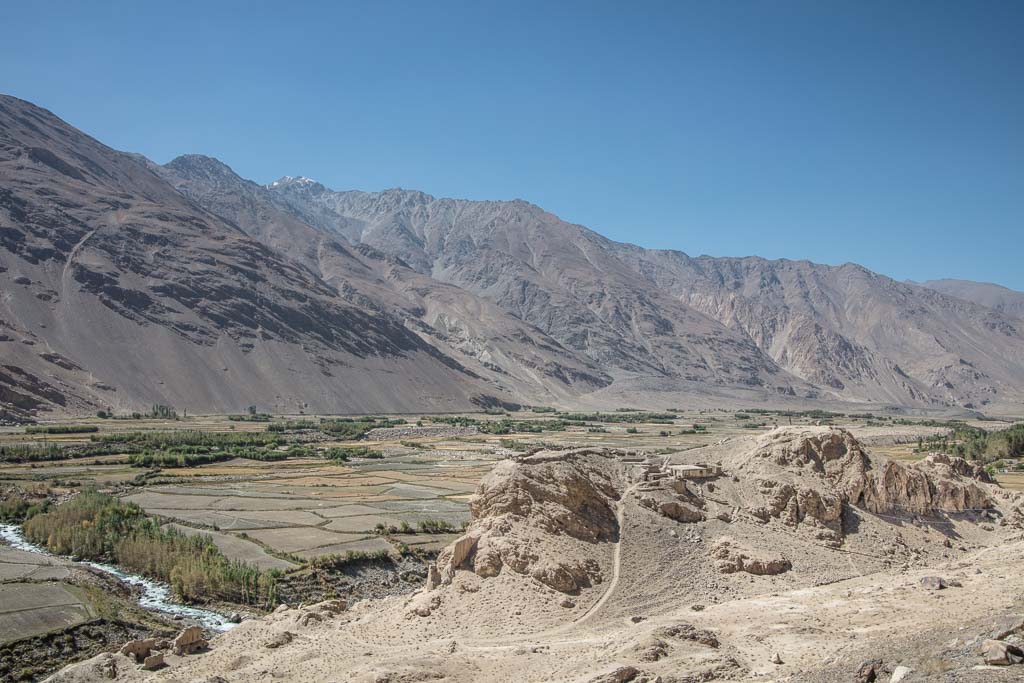
Just 15 km outside of Ishkashim you’ll arrive to Namadgut, where the main draw is the ruins of the Khaakha Fortress . Khaakha is free to visit, although there will likely be a couple of young boys hanging around near the little stand set up selling a few Wakhi handicrafts, who will likely ask for a few Somoni to give you a tour Khaakha ( and also the opportunity for them to practice their English language skills with you ).
The oldest sections of Khaakha are estimated to have been constructed in the 2nd century BC during the Kushan Empire, and Khaakha was believed to be the leader of the Siah-Posh which was a fire-worshipping tribe, whose descendants can be found in Nuristan in Afghanistan. There are armed Tajik border guards that are present at Khaakha, so make sure and check with them for permission to explore the reaches of the ruin nearing the river.
Nearby to Khaakha is a small museum, entrance is 10 TJS, ask around to locate the museum director Odinmammad Mirzayev to open the doors for you.
Namadgut to Yamchun
About 27 km northeast of Namadgut you’ll come to the village of Darshai where you can visit a Mazar with petroglyphs, but the biggest attraction here is the trek to Darshai Gorge .
From Darshai it is possible to do a trek to Darshai Gorge and continue onto a yurt camp. You can continue to trek further to end up at a homestay in Bodomara over in the Shokhdara Valley with views of Mayakovsky Peak.
It is recommended to take a guide especially if planning to trek beyond Darshai Gorge, guides can easily be arranged in the village, and chances are they’ll find you and offer their guiding services before you even have a chance to ask around. There are homestays available in Darshai, as well as some nice places to camp along the road- but if it looks like it may be someone’s property, just ask if it’s okay to set up a tent there.
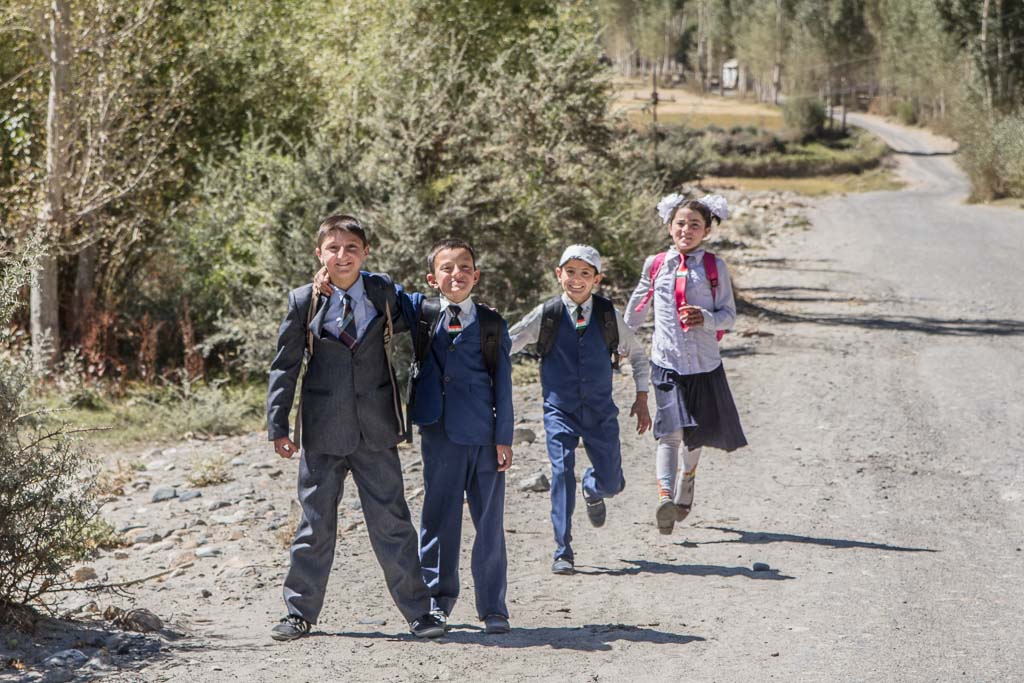
About 10 km northeast of Darshai is the village of Shitkharv , where you can visit the shrine of Oston i Bobo Khoki . Bobo Khoki was believed to have been born and emerged from his mother’s grave after her death.

In the next village over of Zumudg is the solar calendar used to determine the day of Nowruz, otherwise known as the Persian New Year, and to everyone else in the world- spring solstice.
About 5 km northeast of Zumudg is Ptup , home to the Shrine to Shoh Isomuddin , which is believed to be one of the first Ismaili messengers to bring the religion to the region.
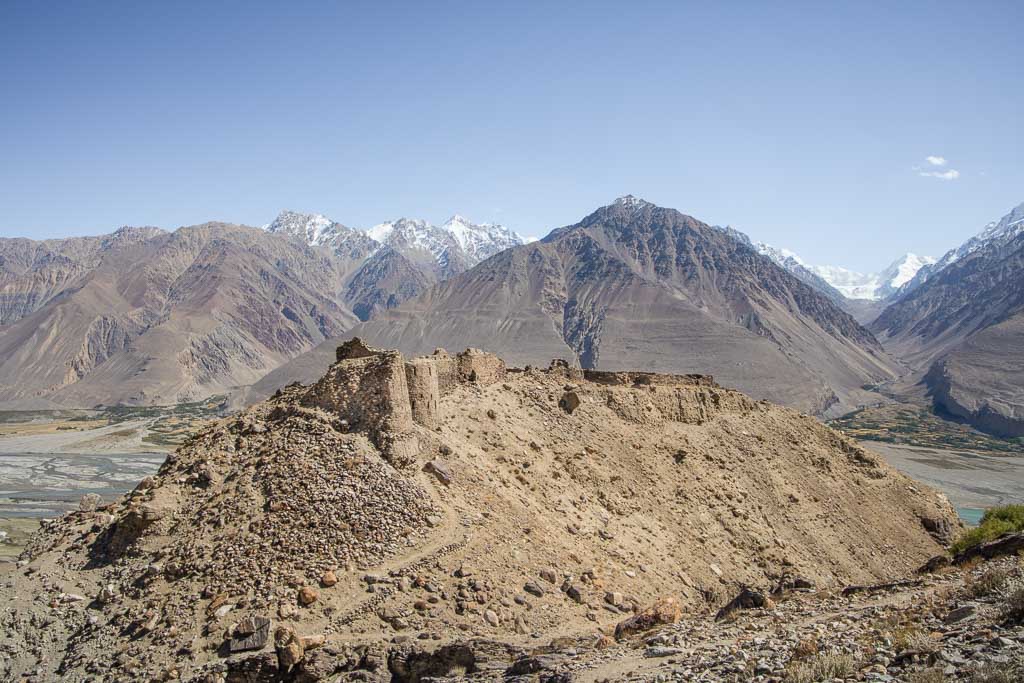
Here it is that you’ll find Yamchun Fortress and Bibi Fatima hot springs, two of the Tajik Wakhan’s most famous attractions. At Tughoz , you’ll turn off of the Wakhan Valley road and go 6 km up hairpin turns to reach Yamchun Fortress. Yamchun Fortress ( the actual name of the fortress is Zamr i atish-parast, meaning fortress of the fire-worshipper ) is a 12th century fort and the most impressive of the remaining castle ruins, although some sections of the fortress are believed to date back to 3rd-1st centuries BC during the Kushan ruling period.
On the eastern side of the site sits a smaller fortress called Zulkhomer . From Yamchun you have great views of the valley, across to Khandood Village in Afghanistan as well as the icy Hindu Kush Mountains serving as a backdrop.
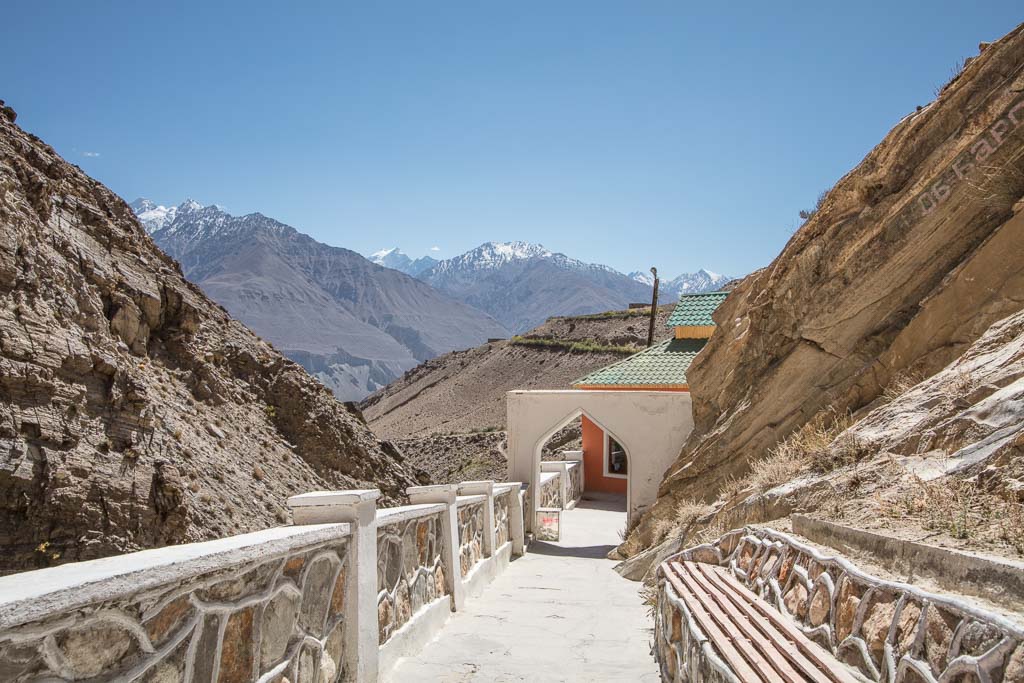
Continue another 1 km uphill to arrive at Bibi Fatima hot springs . The hot spring is open from 5 am-9 pm and entrance is 1 TJS for Tajiks, 10 TJS for foreigners. They alternate genders every other hour and bring your own towel.
Women specifically come here to help boost their fertility. Bibi Fatima is actually one of the more unique hot springs I’ve ever been in, you’ll climb down about 10 steps to be in a cave. And not only is it interesting being in a cave but also if you’re a woman, getting to experience the ritual of the women who come here to boost their fertility.
First, you must drink the water running into the cave, second, there is one special section of the cave wall that you are to touch with your hands, press your lips and forehead too. Next, there is a small pool within the cave that you have to go over to and take the water and pour it over your eyes 3x.
Next, you must go over to the small cave within the cave and climb into it, here you’ll reach under and grab a handful of rocks. You must take the largest of the white rocks in your hand and place them under your tongue and leave them there for the remainder of your soak.
Lastly, when exiting the hot spring you must walk out backward, and do not dry yourself with a towel once back into the dressing room- let yourself air dry, voile! You’re now extra fertile.
Note, you must go into the hot spring nude. There is a nice chaikhana just adjacent to the hot spring if you’re looking to grab a meal after a soak.
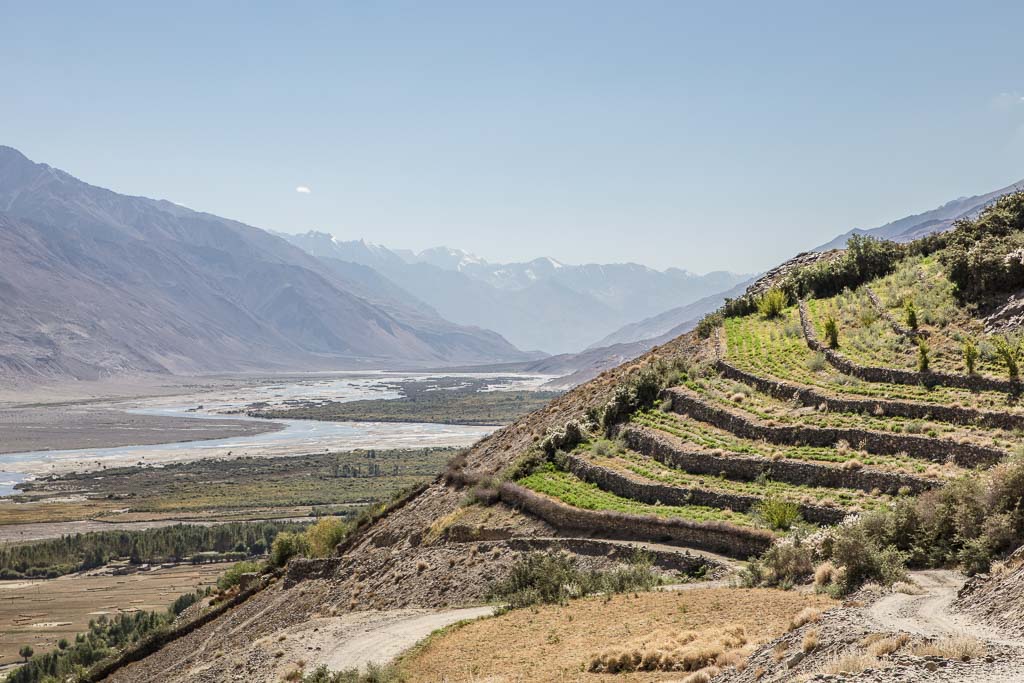
On the way back down from Yamchun there is a scattering of homes, some of which are homestays in the little village of Vichkut .
For those that want to break up their Wakhan journey and spend the night near Yamchun and Bibi Fatima, I recommend staying at Charshanbe’s Homestay (+992 938305239) which boasts excellent views over the valley from their tapchan out front.
Charshanbe has a beautiful Pamiri-style home for guests to stay in where they will serve you excellent soups and plov, and even have a nice western-style toilet and shower in a separate building in the yard. A bed (on a kapurcha- traditional Tajik floor mattresses) including dinner and breakfast will run about 170 TJS per person. His son, Alishoh once worked for PECTA, speaks English, and can create tours of the Wakhan and Pamirs as well.

Yamchun to Langar
Another 5 km northeast from Yamchun will bring you to Yamg , Yamg is home to House Museum of Mubarek Kadam Wakhani , Wakhi lived from 1839 to 1930 and was a Sufi mystic, a musician, as well as an astronomer. Don’t miss the solar calendar for determining Navruz, just outside the museum. Admission is 10 TJS, ask around to find either Aydar Malikmamadov, or his English-speaking son Nozim to let you in.
There are a couple of homestays in Yamg, one of which is ran by the Malikmamadovs’. Continue up the road a short distance to Vnukut village to visit the shrine of Chehel Murid .
Continuing up the road will next bring you to Vrang . Vrang is home to an ancient Buddhist Stupa .

The origins of the Vrang Stupa are actually unknown but a common theory is that it was originally built as a Zoroastrian fire temple. It’s thought to have been a significant religious complex and believed to date back to the 6th century roughly. The rock at the top of the Stupa is believed to have the footprint of Buddha in it.
Scattered around the Stupa are caves that Buddhist monks used to live in. Above the Stupa is a hiking trail that will take you up and over Vrang Pass to Rubot over in the Shokhdara Valley.
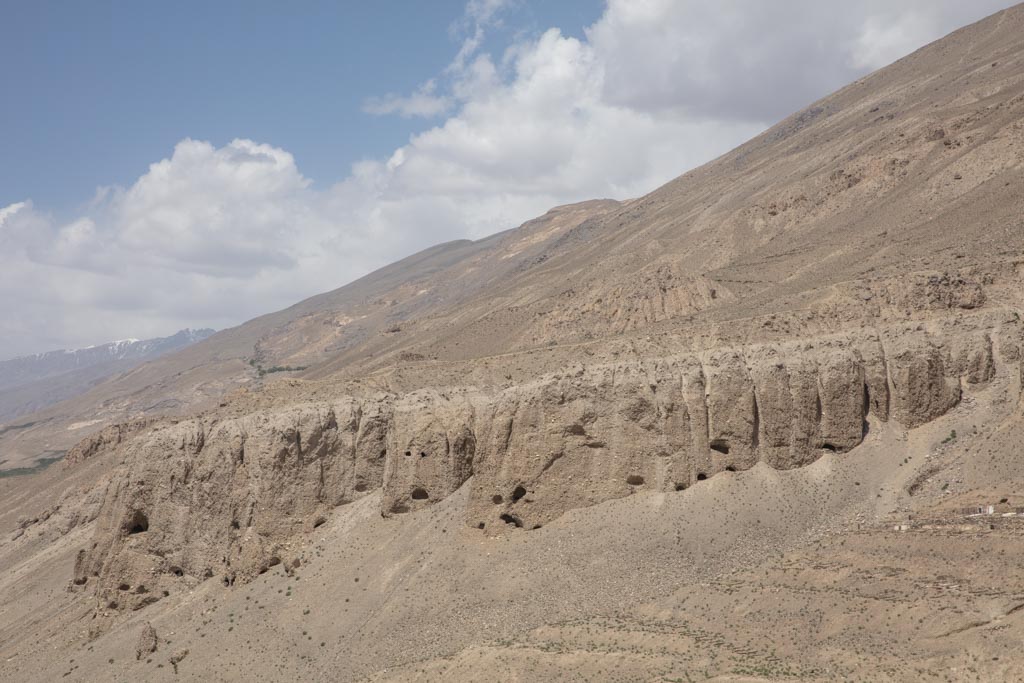
Just below the Stupa you’ll find the shrine and museum to Osorkhona i Abdullo Ansori . Abdullo Ansori was a famous Sufi poet from the 11th century.
There are a few homestays on offer in Vrang. In the next village over of Zugvand there is a shrine to Ostoni Panjai Shoh , as well as nice views across the river to the village of Qala e Panja and the Qala e Panj Fortress dating back to the Siah-Posh days on the Afghan side of the border.
The next stop along the Wakhan is Zong . The biggest attraction in Zong is the Vishimqala ( the Silk Fortress ). Vishimqala was built to protect this stretch of the Silk Road from Afghan and Chinese invaders of the time.

There are numerous shrines and holy places around the village of Zong. A couple of homestays that will take you in for a night exist here in Zong.
Just a little up the road and just before arriving to Langar is the village of Hissor . Hissor’s largest attraction is the Zangibar Fortress and the Oston i Nuri Muhammed Shrine .
In Hissor I without a doubt recommend staying at Davlatkhon’s Homestay (+992 935148819) with nice clean rooms and an indoor shower and toilet. His wife cooks delicious meals and they can help you arrange onwards transport, but note that Davlatkhon and his wife both speak mostly Tajik and Russsian but can phone their daughter who can translate to/from English for you. A bed, including dinner and breakfast, will set you back 220 TJS per person.
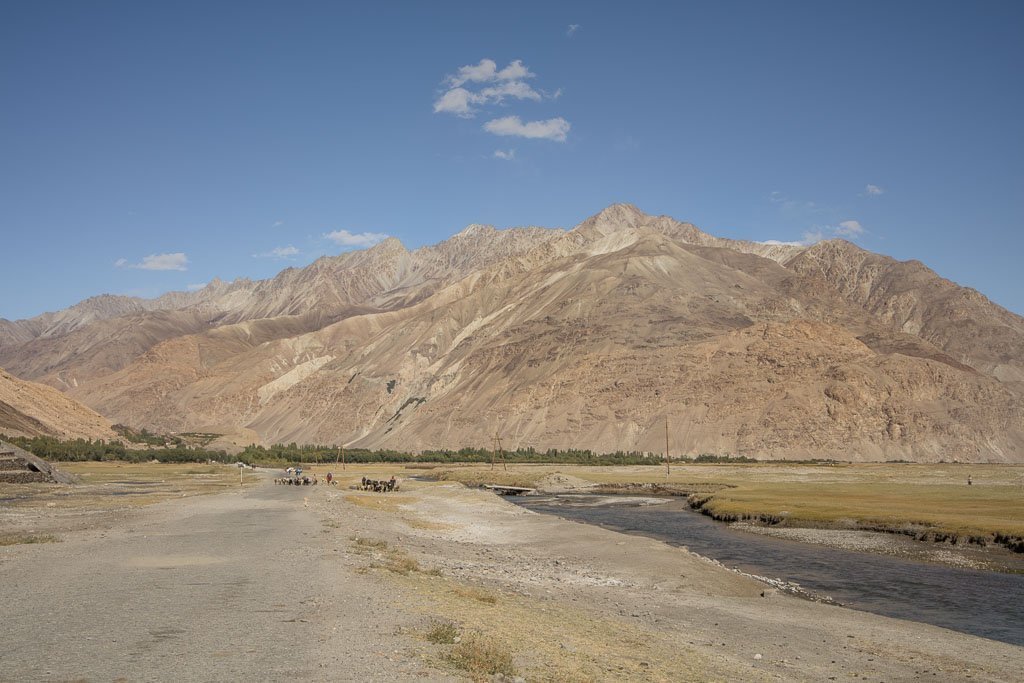
Langar is a decent sized village set in a nice green stretch of the valley where the Pamir and Wakhan Rivers join the River Panj.
Sites to see around Langar include Mazar-i Shoh Kambari Oftab – an important shrine to the sun from Pre-Islamic times, the garden adjacent to it, the Langar Jamoat Khona ( prayer house ), and the 6,000 petroglyphs located just a 20 minute trek up from the Langar school.

From Langar it is possible to do a trek, starting between Hissor and Langar and taking you up to the Pik Engels Meadows with views of the south face and panoramas of the Hindu Kush across the valley. It’s possible to climb the side peak ( it’s unnamed ) from Pik Engels.

For more information on the trek and maps, head over to trekkinginthepamirs.com and pick up Jan Bakker’s Trekking in Tajikistan e-book.
There are a handful of homestays in Langar.
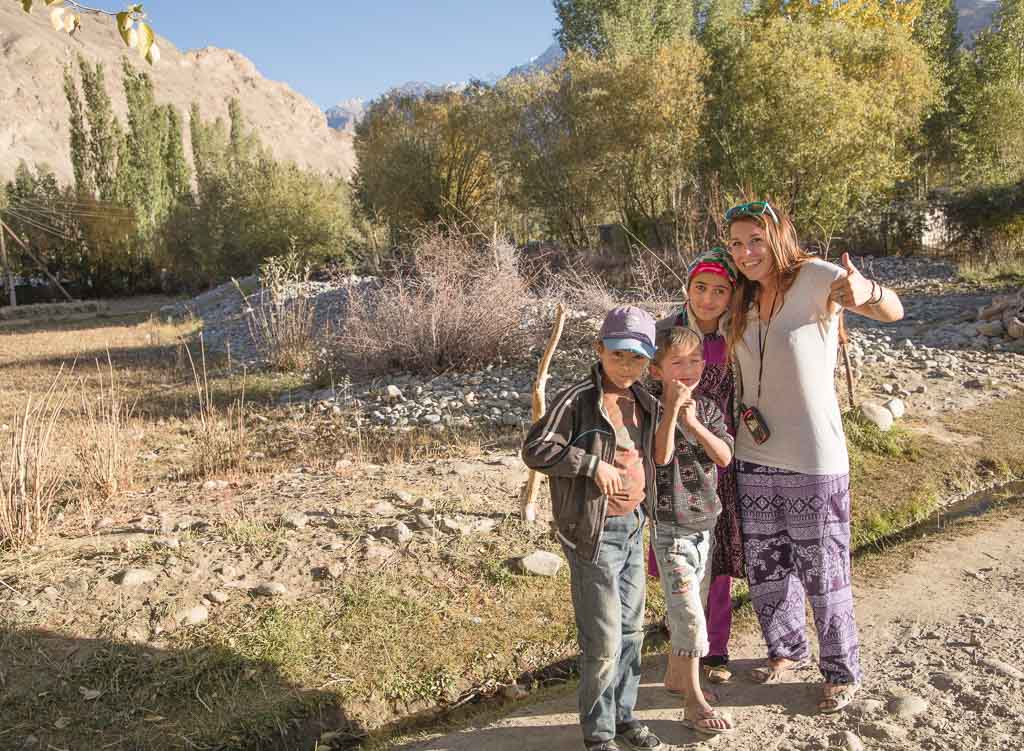
Langar to Khargush Pass

Leaving from Langar up towards Khargush Pass will take you up a series of hairpin turns to Ratm , the official last ( or first depending on the direction you’re headed ) village of the Tajik Wakhan Valley. There is a small ruin of a fortress in Ratm thought to have been built by the Kushans in the 2nd-3rd century BC.
Once in Ratm if you look down toward the river bridge across to Afghanistan where the Wakhan and Pamir Rivers join, just below the Ratm Fortress. It is currently not open to foreigners, however, if it ever does it could make access to the Little Pamir in the Afghan Wakhan much easier.
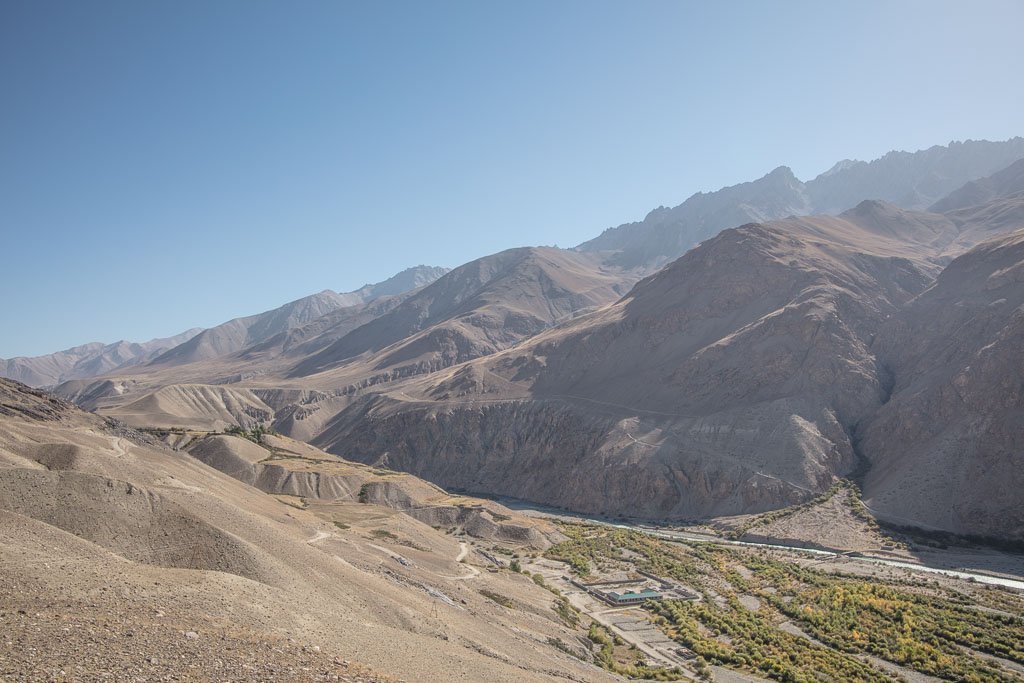
About halfway between Ratm and Khargush, it’s possible to do a trek taking you up and over Mats Pass to Jawshangoz in Shokhdara Valley.
Between Ratm and the Khargush military checkpoint, there are no villages and just a couple of houses, but the winding drive with views of icy peaks in the Afghan Wakhan is exhilarating.

Optional: Visit Zorkul. At the Khargush checkpoint, you will either turn off and head toward Zorkul Nature Reserve (prior permission and permits from the PECTA office in Khorog are mandatory) or continue north over the Khargush Pass to meet again with the M41 near Bulunkul.
If opting to head north past the checkpoint you will eventually arrive at the lunar-like landscapes of Khargush Pass . There are two small lakes located in Khargush Pass, from near these lakes it is possible to do a 1.5 hour trek up Panorama Ridge for amazing views of the stark mountain landscapes around.
Heading east? Read my Eastern Pamir Travel Guide first

Trekking in Wakhan Valley
The Wakhan Valley has huge trekking potential. Many of the treks I am about to mention have been listed in the previous sections.
- Garm Chashma to Vezdara – From the hot spring south of Khorog to the village of Vezdara in the Shokhdara Valley.
- Baghush to Mayakovsky Peak – From the Village of Baghush outside Kosideh visit Mayakovsky Peak’s western edge.
- Darshai Gorge – Start near the bridge in the village of Darshai, walk around a small hill with ruins of a fortress, and follow the path at the side of the river to reach Darshai Gorge.
- Darshai Gorge to Mayakovsky Peak – From Darshai Gorge continue to a yurt camp (only in summer as the yurts are used as hunting camps in winter during the Marco Polo sheep season). From the yurt camp, another day of trekking will take you to Mayakovsky Peak and eventually onto Bodomara in the Shokhdara Valley.
- Vrang to Rubot– Above the Buddhist Stupa in Vrang follow a trail that will take you up and over the Vrang Pass and into the Shokhdara Valley village of Rubot.
- Langar to Pik Engels Meadows – Between Hissor and Langar find the trailhead (there are several). Follow the trail up to a small reservoir and then take the trail headed east. Above Langar, the trail will bend toward the northwest taking you straight to the Pik Engels Meadows. There are optional side trips taking you right up to Pik Engels and to trek an unnamed side ridge.
- Between Ratm and Khargush to Jawshangoz – This trek will take you up and over the Mats Pass and eventually into the Shokhdara Valley to the village of Jawshngoz. Alternatively, you can begin this trek from Langar.
- Panorama Ridge – A steep hike about 7 km before Khargush ( coming from Ratm direction ) that begins just before you reach the first of the two lakes in Khargush Pass. The trek takes 1.5 hours up and 0.5 hours down and gives 360º panoramic views of the pass and stark lunar landscapes.
Most all of these treks are well marked on the Pamirs Map by Markus Hauser. The Langar to Pik Engels Meadow trek has a description in Jan Bakker’s Trekking in Tajikistan book. These treks take place at fairly high altitudes- make sure and take the time to acclimatize properly.
Need more ideas? Read the 10 best treks in Tajikistan

Wakhan Valley Budget
Your daily budget will vary greatly depending on how you go about transportation, but here is a rough guideline, assuming you plan to stay in homestays each night:
Private 4×4 Hire, solo traveler:
$125 USD per day
Private 4×4 Hire, group of 4:
$45 USD per day
Shared taxi/marshrutka, solo traveler:
$20 USD per day
Hitchhiking, solo traveler:
$15 USD per day
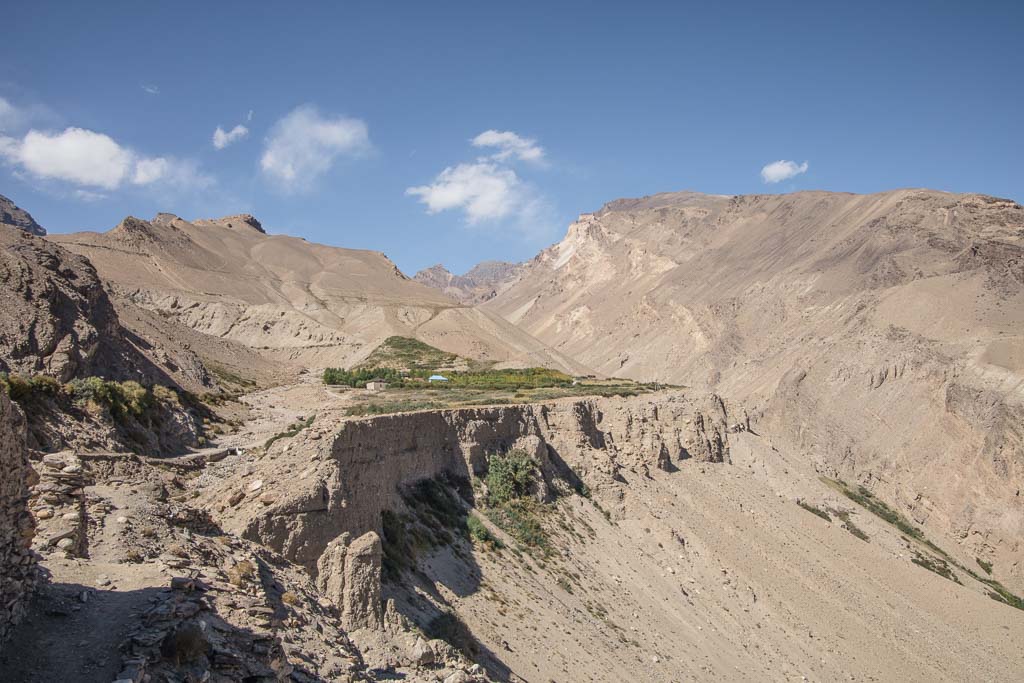
Packing List
Here are a few handy items I like to have on me when exploring in the Wakhan Valley and Tajikistan.
Hiking Gear
- The Inreach Explorer+ . A GPS & SOS beacon, that can also send and receive text messages. Delorme/Garmin offers some good monthly plans when in use.
- A solar charger can be a great way to keep your electronics and batteries charged when trekking in remote areas of the country with no access to electricity for days on end.
- An external battery pack can also help you out in a pinch when batteries are dead and you’re in the middle of nowhere.
- I use the Osprey Ariel 65L backpack and recommend Osprey’s products because of their guarantee. Shop backpacks here !
- A tent is handy if you plan to do any trekking, or are planning to cycle or hitchhike the Pamir Highway. I’ve been using MSR’s Hubba Hubba tent for several years now and can’t recommend it enough. Another favorite is my Mountainsmith Morrison Evo tent .
- A sleeping bag can prove useful if planning to camp while cycling or trekking and also for chilly nights even in a homestay. I use a Nemo sleeping bag cold rated to 15ºF/-5ºC.
- A good pair of hiking boots. My personal favorite is the La Sportiva Nucleo High GTX hiking boot.
- If planning on trekking/camping and you like to enjoy a warm meal I can recommend a lightweight cooking camp set .
- I personally use the Katadyn water filter . Tap water in the entire country is unsafe for drinking and natural water sources can be contaminated.
- Trekking poles can prove helpful.
- A headlamp will come in handy!
- Don’t forget the sunscreen! Don’t let the cold fool you.
- Mosquito Repellant can prove handy in springtime at lower elevations, although I’ve personally never run into many bugs out here in my late summer and fall adventures.
- ‘ The Pamirs ‘ by Markus Hauser. Can be found online on Amazon , or can always be picked up at the PECTA office. The creators also created a Northern Tajikistan map as well as Southern Tajikistan map.
- ‘ Tajikistan and the High Pamirs ‘ by Robert Middleton & Hue Thomas. This is a huge book, but it has so much good info on Tajikistan from the history, great-game stories, travel, and more!
- ‘ Bradt Tajikistan ‘ by Sophie Ibbotson & Max Lovell-Hoare. The most up to day and info-packed Tajikistan guide in print.
- ‘ Central Asia ‘ by Lonely Planet . Handy to have with you, although don’t treat it like a bible. Many times information is out of date as things change rapidly, though proves handy on multi Central Asian nation itineraries. The ‘ Central Asia Phrasebook ‘ by Lonely Planet I found this to be a handy item for Tajik, Russian and Kyrgyz phrases, not so much for the Wakhi phrase section.
- ‘ Trekking Tajikistan ‘ by Jan Bakker & Christine Oriol . Jan and Christine are both wealths of knowledge on trekking in Tajikistan. This is the follow-up to Jan’s original e-book.
Great Online References
- Pamirs.org : A great all-around resource for all things Pamir. From trekking, visa & permit information, cycling, sport, and more!
- Trekking in the Pamirs : Jan Bakker’s website with information on many hikes all over Tajikistan (not just the Pamirs!) .
- PECTA : Can help you arrange anything Pamir. Very responsive.
- Caravanistan : Saule is a wealth of knowledge on Central Asia. They are very responsive via email and can put you in contact with numerous tour agencies in the country.
- Indy Guide : Making travel in the whole of Central Asia & Mongolia easier buy providing the largest community marketplace of Central Asian tour operators and drivers.
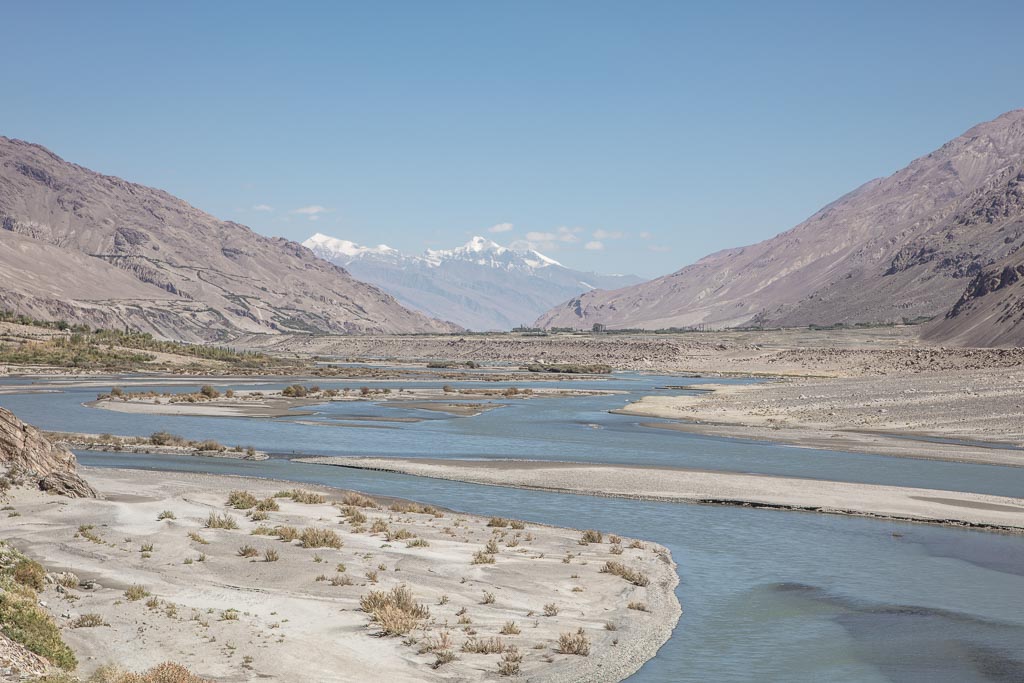
Want More Posts From The Wakhan?
In 2016, 2017, 2018, and 2021 I explored the Tajik Wakhan Valley and in 2017 I finally got across the border into the Afghan Wakhan Corridor.
- The Afghan Wakhan Corridor in photos- A few of my favorite photos from my time spent in the Great Pamir and Wakhan Range.
- Solo female travel in Afghanistan: The Wakhan Corridor- What it was like and what you need to know.
- How to get an Afghan Visa- Getting an Afghan visa isn’t as difficult as you would think from the consulate in Khorog.
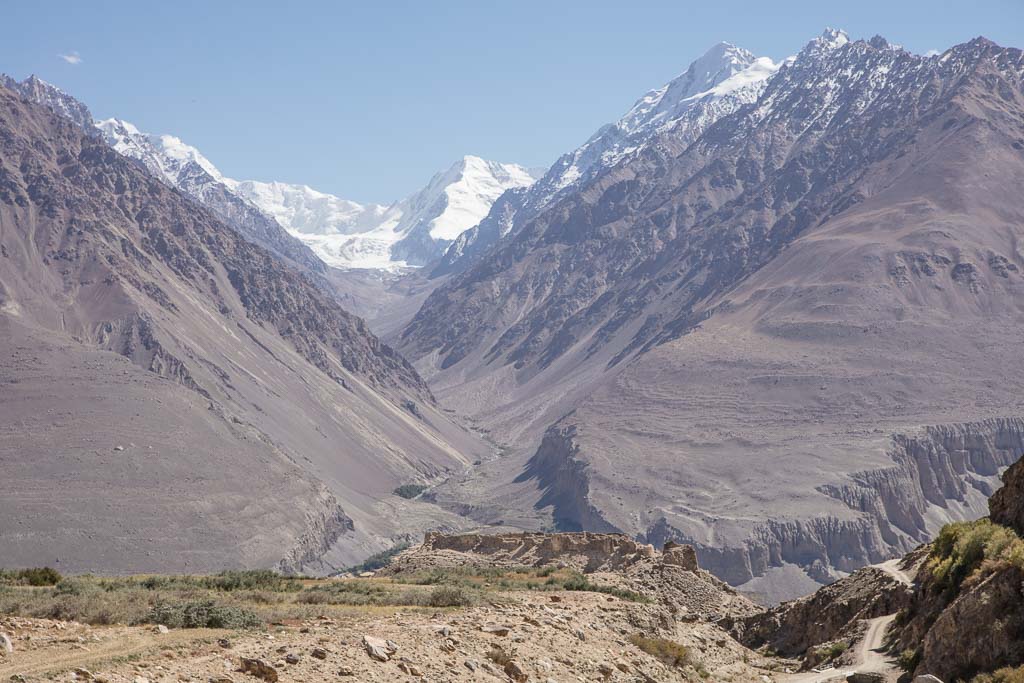
More Posts from Tajikistan:
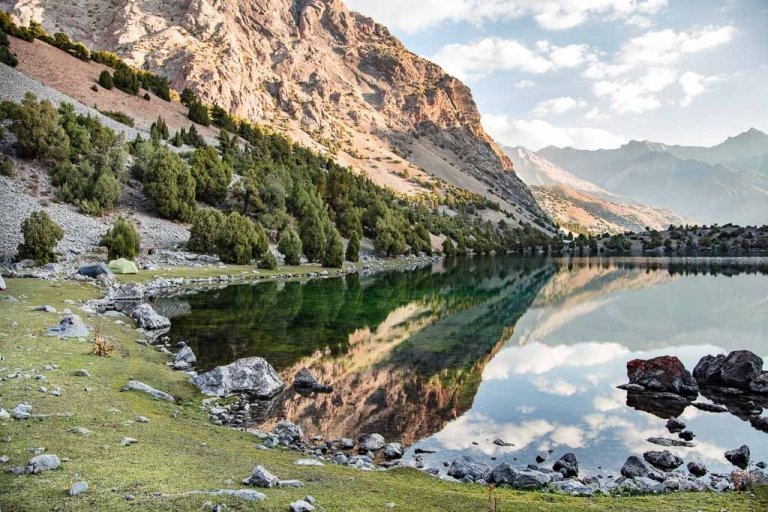
10 Reasons To Visit Tajikistan
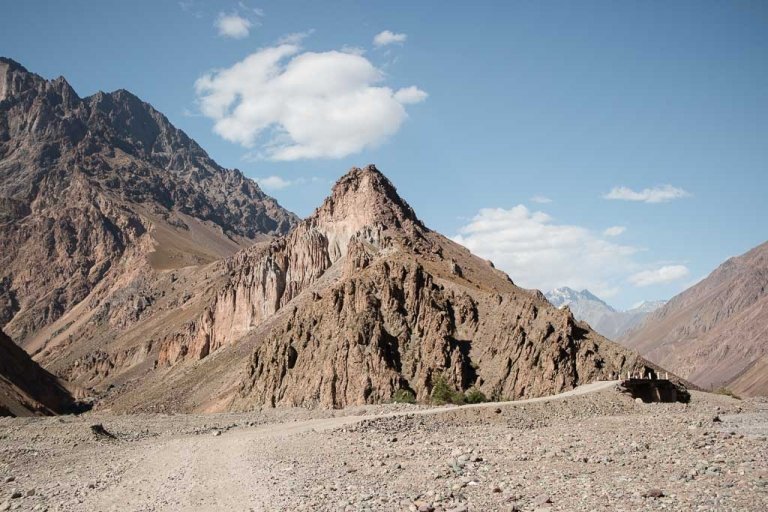
Bartang Valley Guide

A 10 Day Pamir Highway Itinerary including the Wakhan Valley

Ishkashim Border Crossing Between Tajikistan & Afghanistan
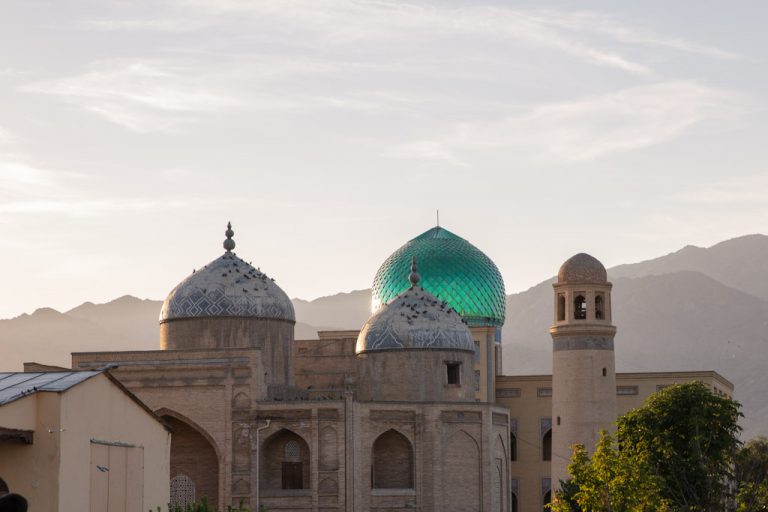
Khujand Travel Guide + 14 Things to Do In Khujand

The Best Restaurants In Dushanbe
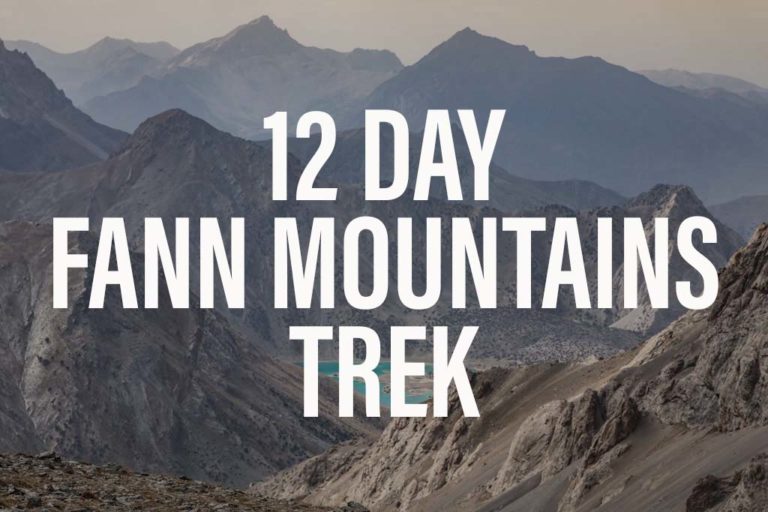
Fann Mountains Trekking Expedition, Tajikistan June 12-23, 2024
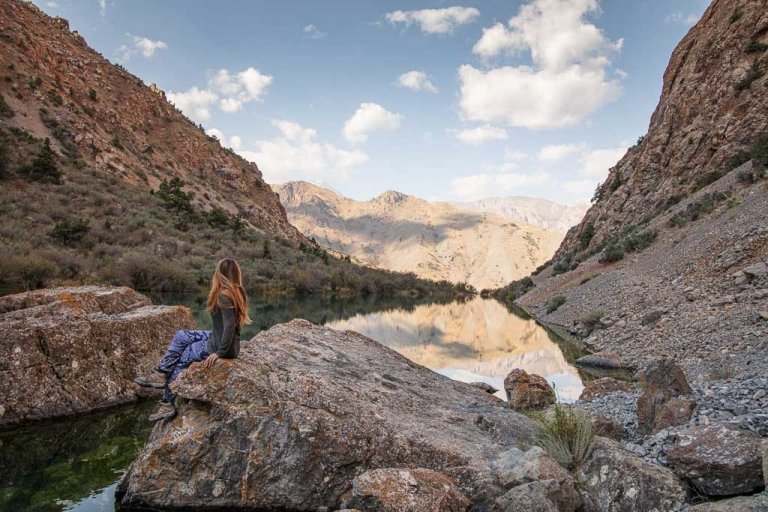
The Ultimate Tajikistan Travel Guide
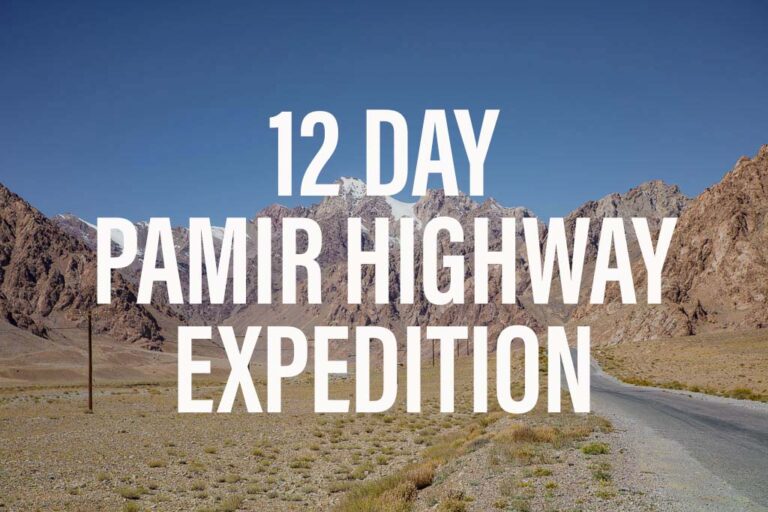
12 Day Pamir Highway Expedition June 25-July 6, 2024

25 Day Tajikistan Expedition June 12-July 6, 2024

Trekking The Haft Kul in Tajikistan’s Fann Mountains
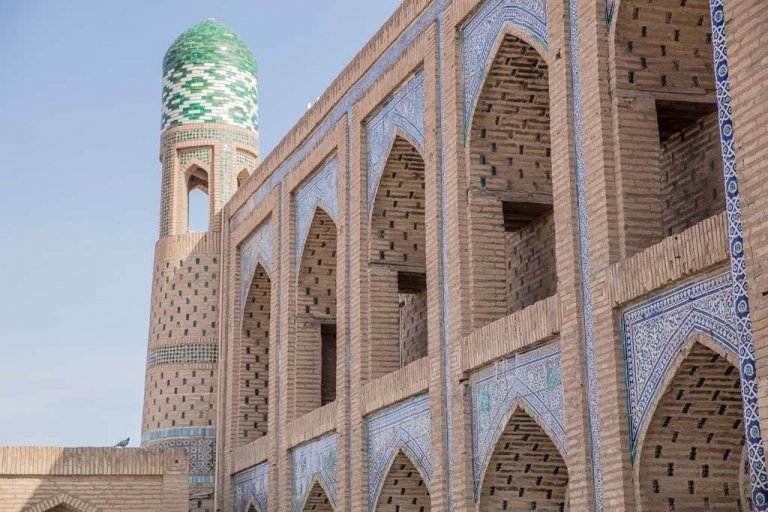
Two Week Tajikistan & Uzbekistan Itinerary

Tajikistan Itinerary For 1-4 Weeks
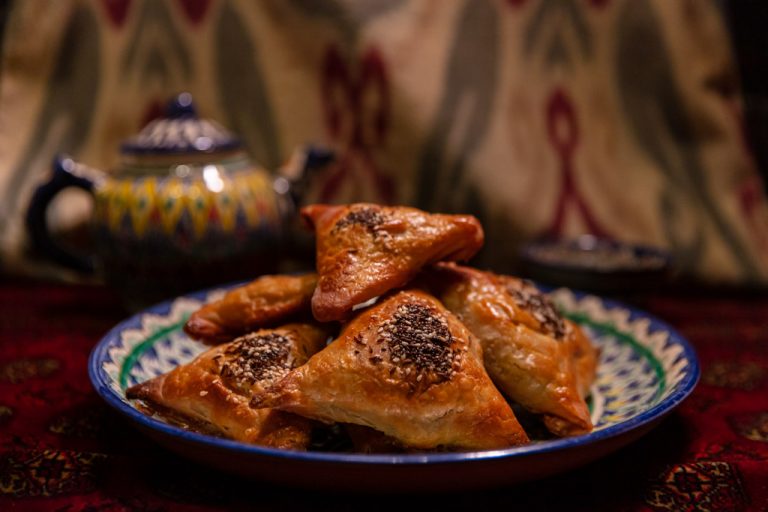
Must-Try Tajik Food: Best Food in Tajikistan

A Guide To Tajikistan’s Fann Mountains

The 10 Best Hikes In Tajikistan
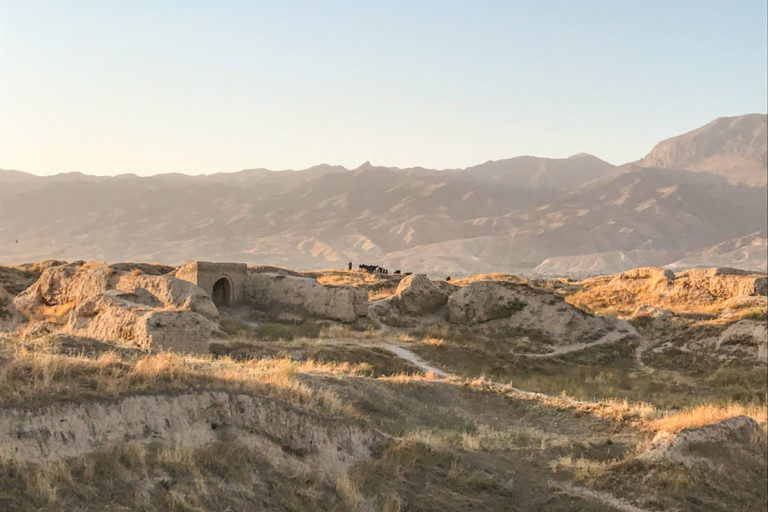
Panjakent Travel Guide + 6 Things To Do In Panjakent, Tajikistan
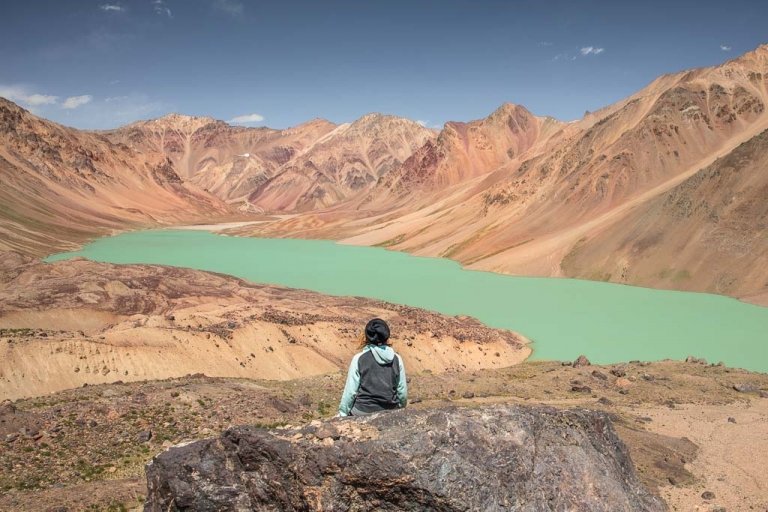
17 Things To Do In Tajikistan
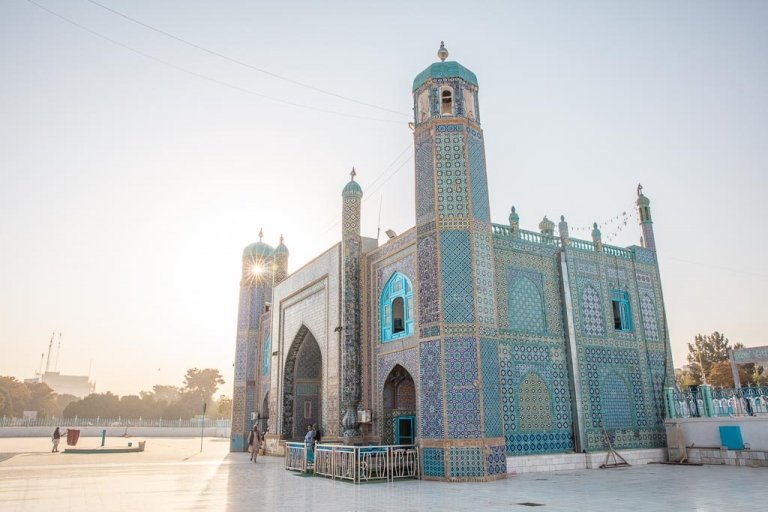
A Beginner’s Guide To Central Asia Travel: Discover The Silk Road
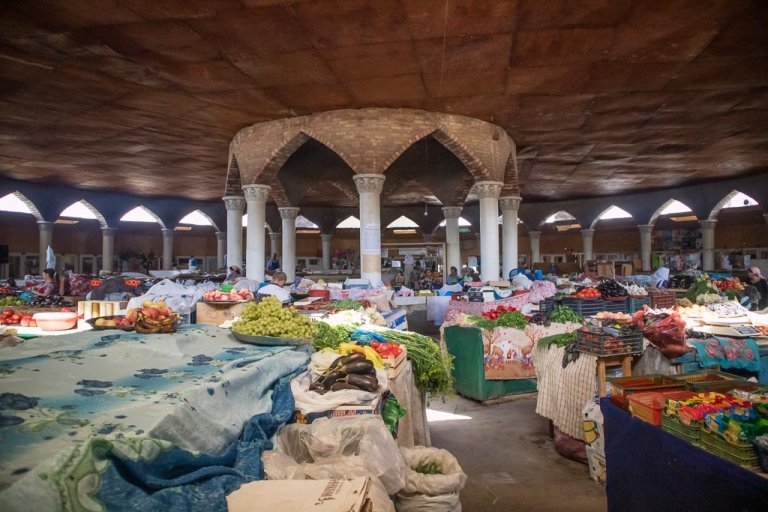
Panjakent-Samarkand Border Crossing Between Tajikistan & Uzbekistan
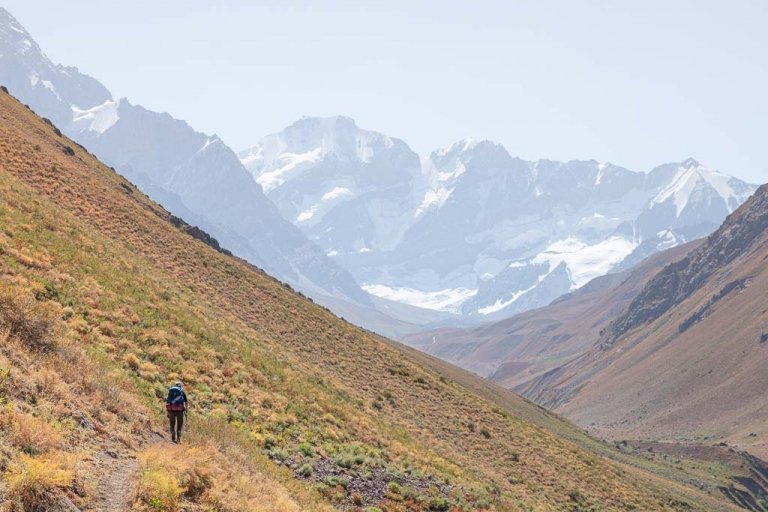
Rasht Valley, Tajikistan
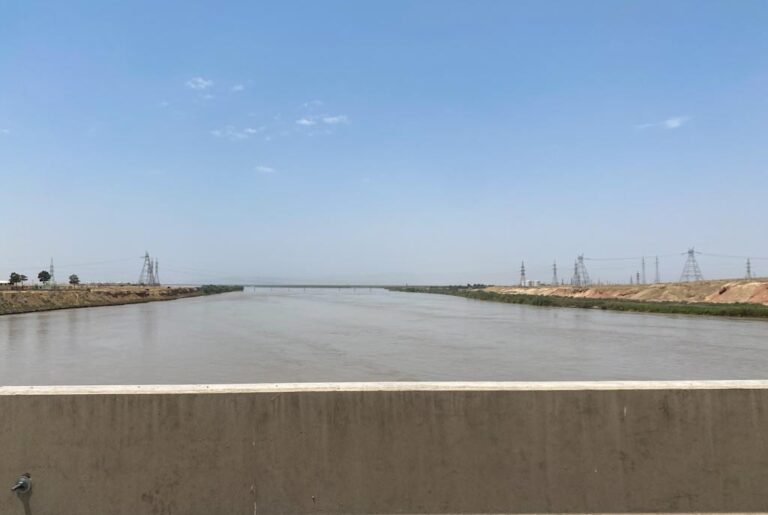
How to Cross the Shirkhan Bandar Border Crossing Between Tajikistan & Afghanistan and get an Afghan Visa on the Border

The Gardan i Kaftar Hike In Tajikistan’s Rasht Valley
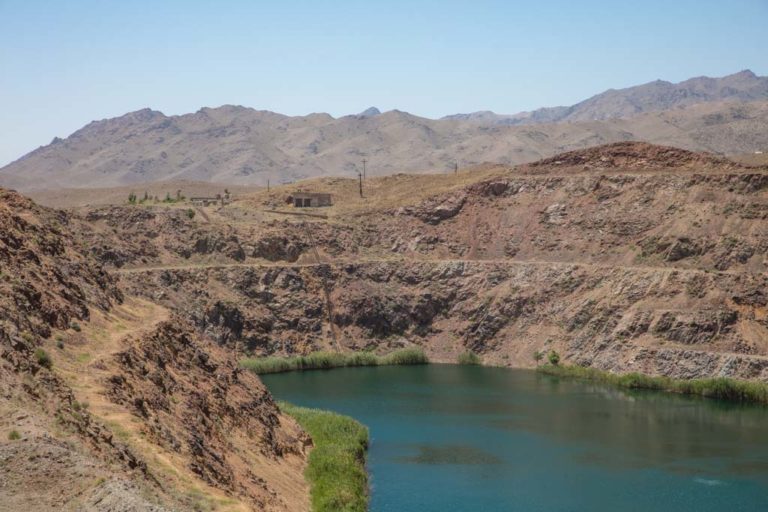
A Day Trip To The Taboshar Uranium Mines in Istiklol, Tajikistan

A Day Trip to Madiyan Hot Springs, Tajikistan

Windswept Desolation In Karakul, Tajikistan

Gumbezkul Pass Hike, Tajikistan
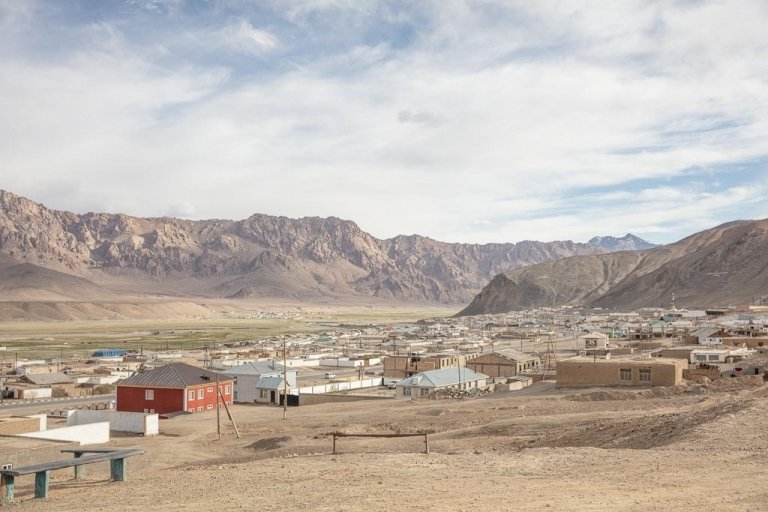
Murghab Travel Guide + 4 Things To Do In Murghab, Tajikistan
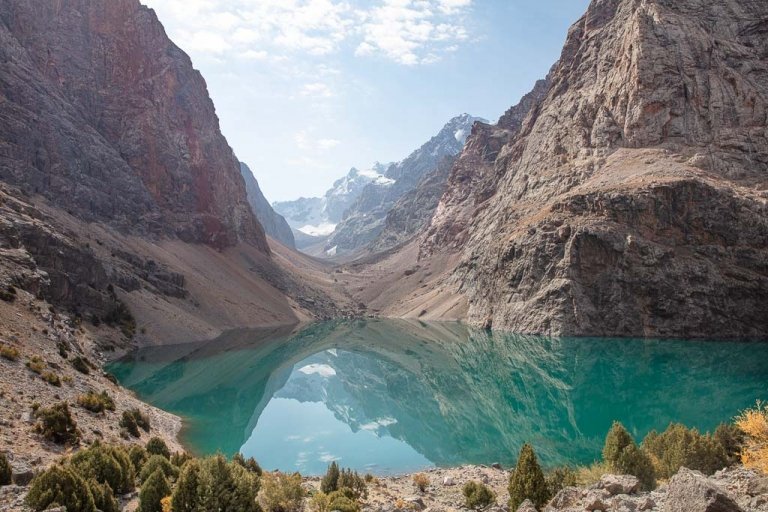
The Beautiful Bolshoi Allo Lake In Tajikistan’s Fann Mountains
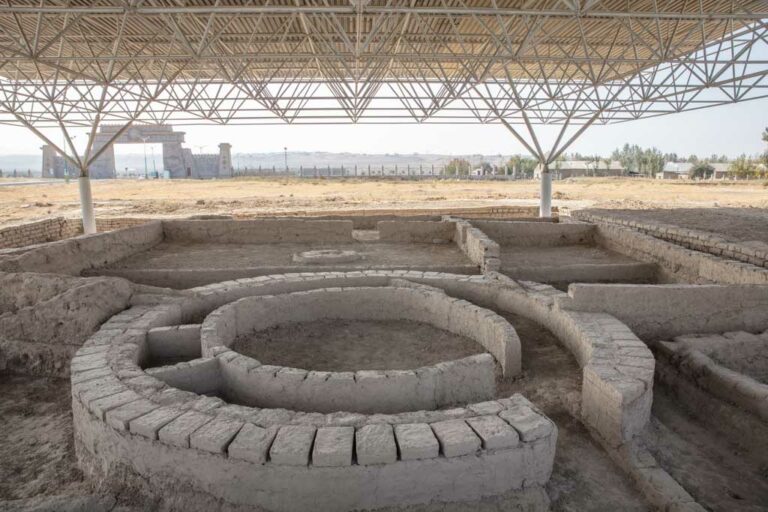
Sarazm Ruins, Tajikistan: The Oldest City in Central Asia

How To Get To Khafrazdara Valley, Tajikistan

Qala i Khumb Travel Guide, Tajikistan

A Giant Salt Flat in Tajikistan? Welcome to Akhkon
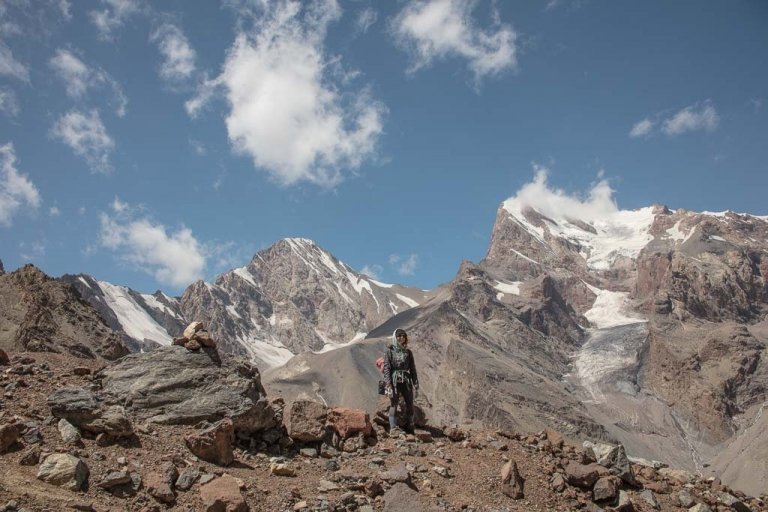
Crossing Chimtarga Pass

How To Get To Timur Dara Lake, Tajikistan
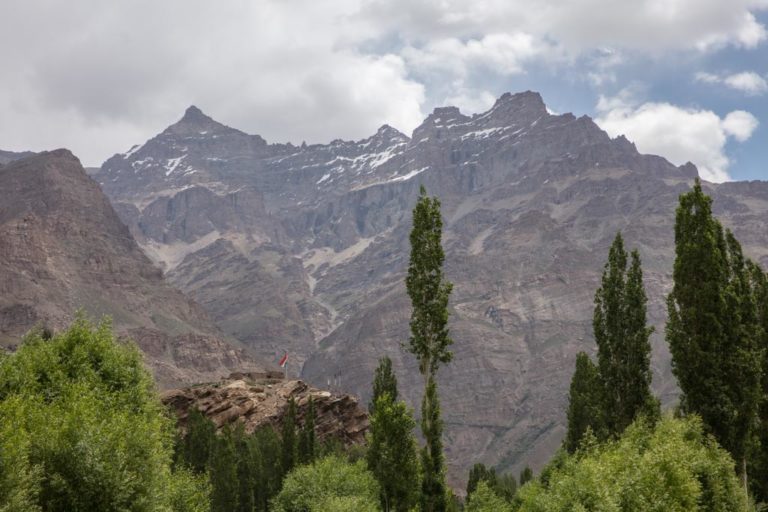
A Guide to the Shokhdara Valley, Tajikistan

How To Get To Lake Sarez, Tajikistan

Trekking to Pik Engles Meadow in Tajikistan’s Wakhan Valley

Across Tajikistan In 80 Photos
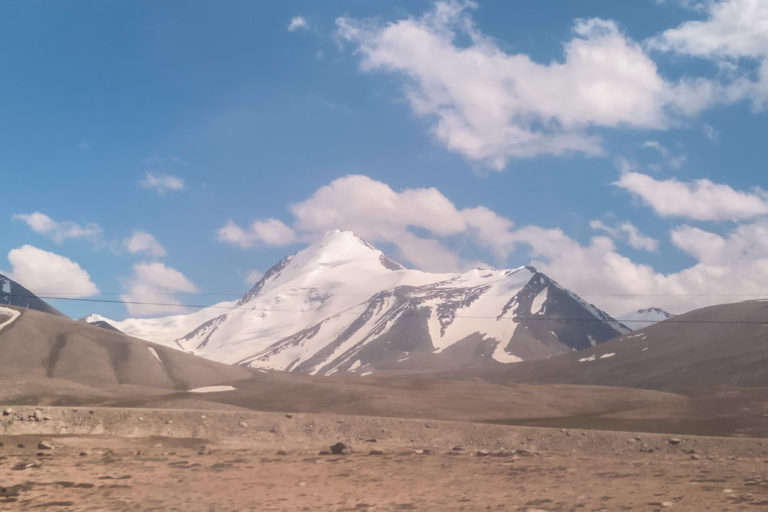
Climbing Kyzyldong in Tajikistan’s Pamir Mountains

How To Get To Hisor Fort, Tajikistan

Crossing Kyzyl Art Pass Between Tajikistan & Kyrgyzstan
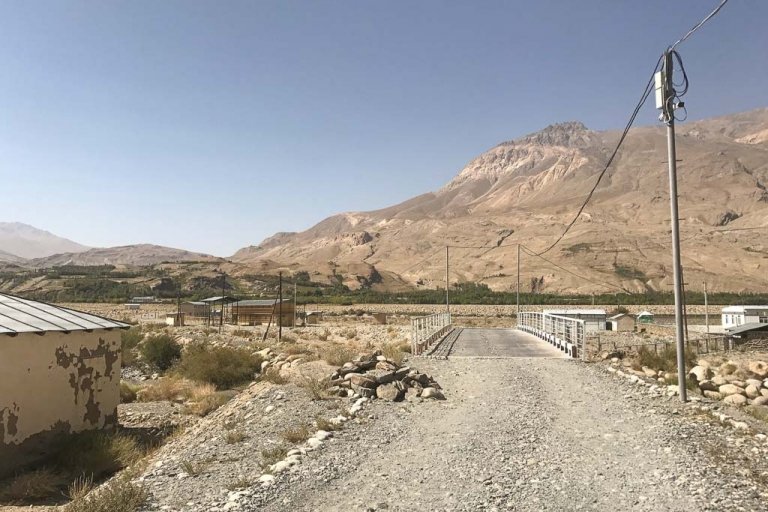
Tajikistan Border Crossings
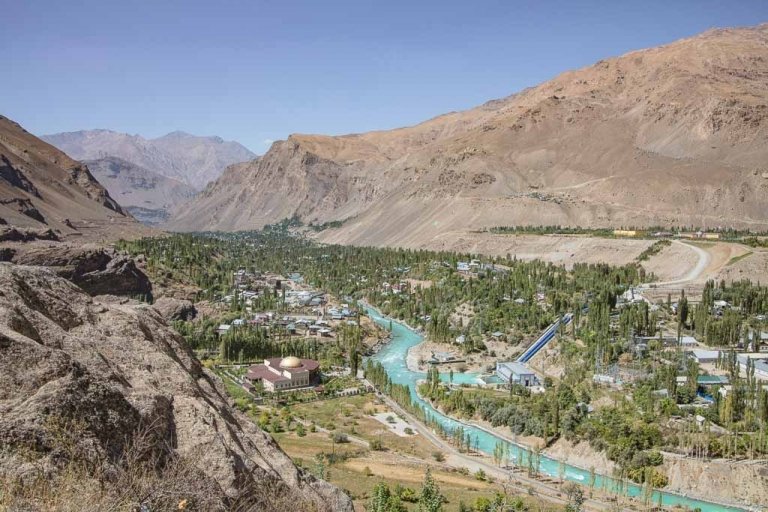
Khorog Travel Guide + 7 Things To Do In Khorog

Is Tajikistan Safe? The Short Answer: Yes
Solo female travel in tajikistan.

Tajikistan Visa Guide: How to Get a Tajik Visa
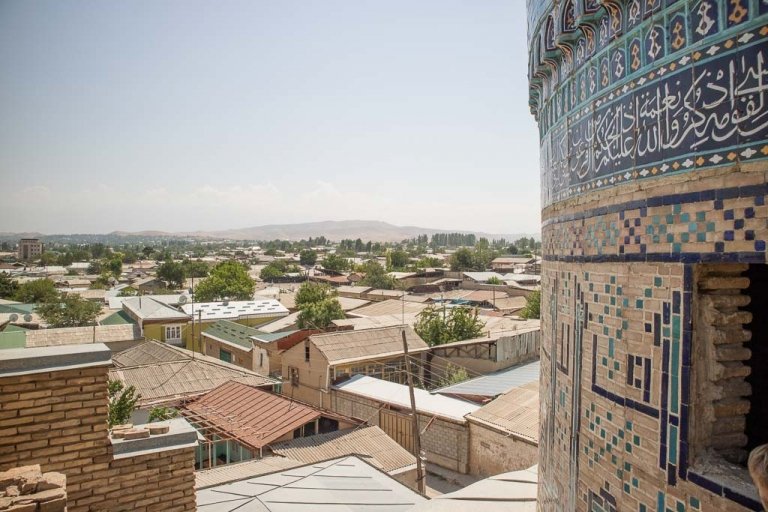
Istaravshan Travel Guide + 9 Things To Do In Istaravshan

The Tajik Wakhan Valley Travel Guide

Jizeu Trek: Tajikistan’s Best Overnight Hike In The Pamirs
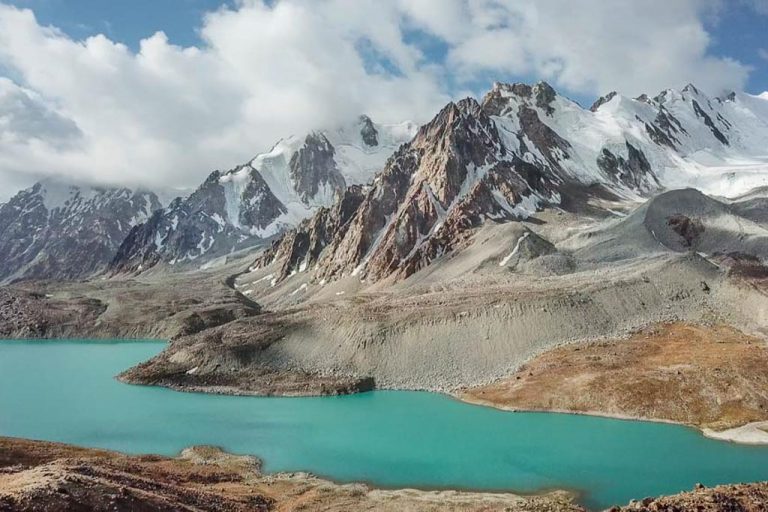
10 Reasons to Visit The Pamirs
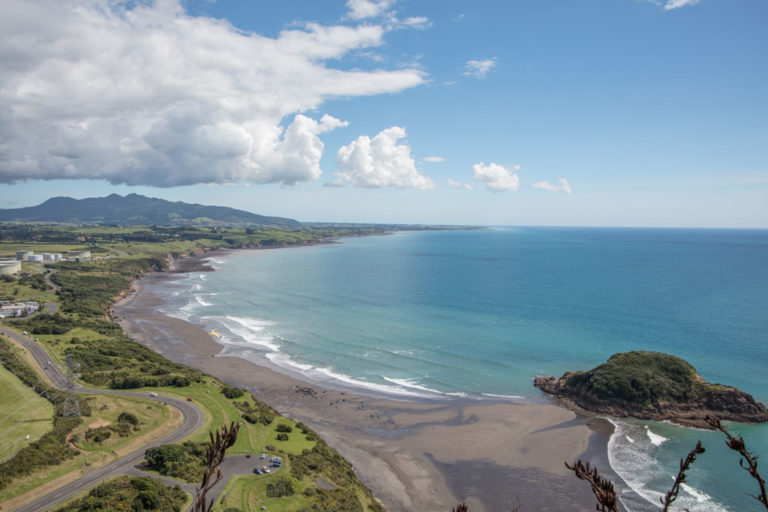
The Best Road Trips In The World
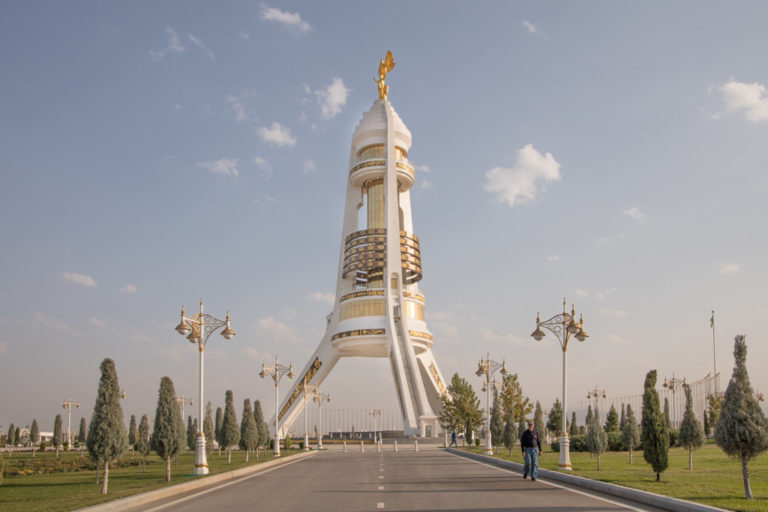
A Simple Guide To Central Asia Visas
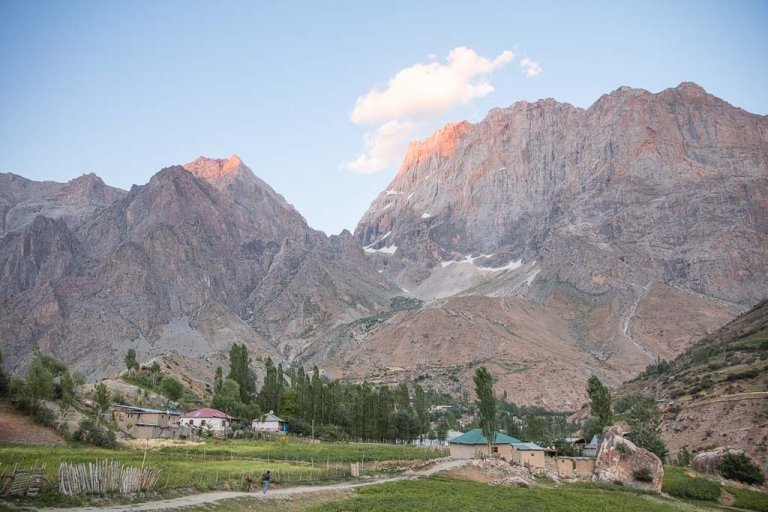
Yagnob Valley Trekking & Travel Guide
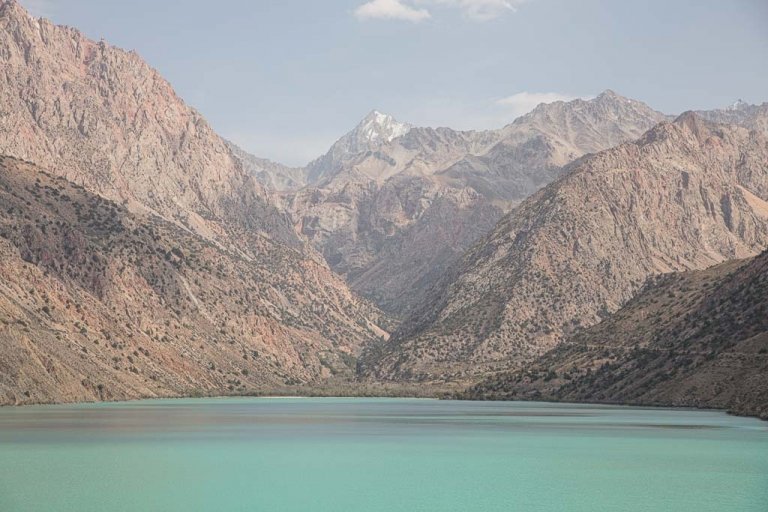
Iskanderkul & Sarytag Travel Guide, Tajikistan
Hike the lakes loop in tajikistan’s fann mountains.
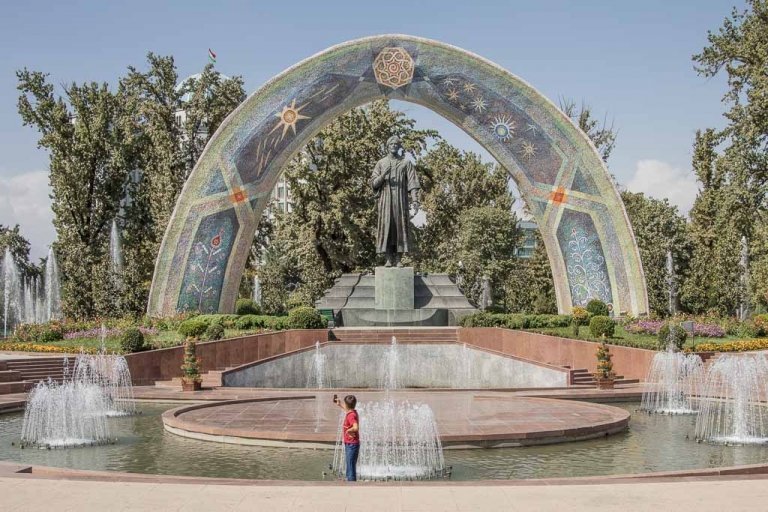
10 Things To Do In Dushanbe + Dushanbe Travel Guide
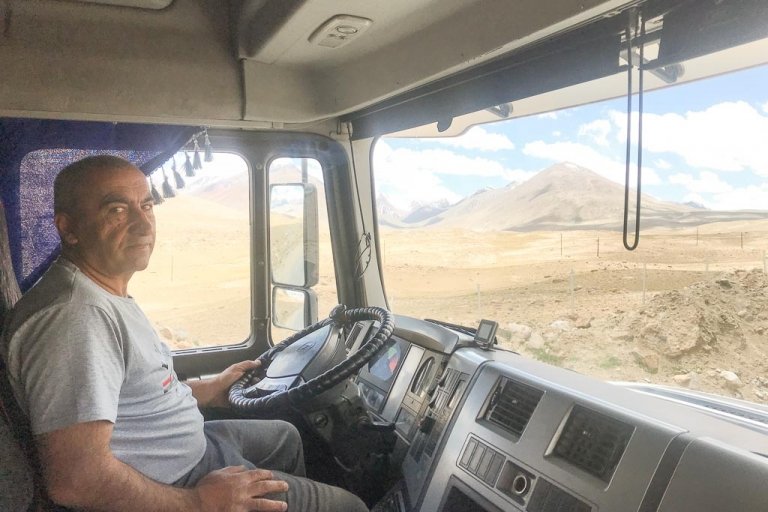
Crossing The Qolma Pass Between Tajikistan & China
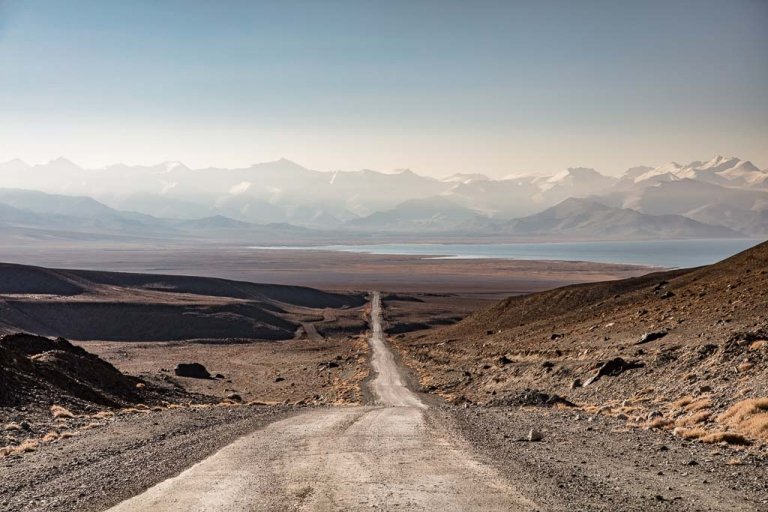
The Ultimate Guide To The Pamir Highway

7 Tips For Solo Female Travel In Central Asia

Crossing Dukdon Pass In Tajikistan’s Fann Mountains

South Aral Peak Hike, Tajikistan
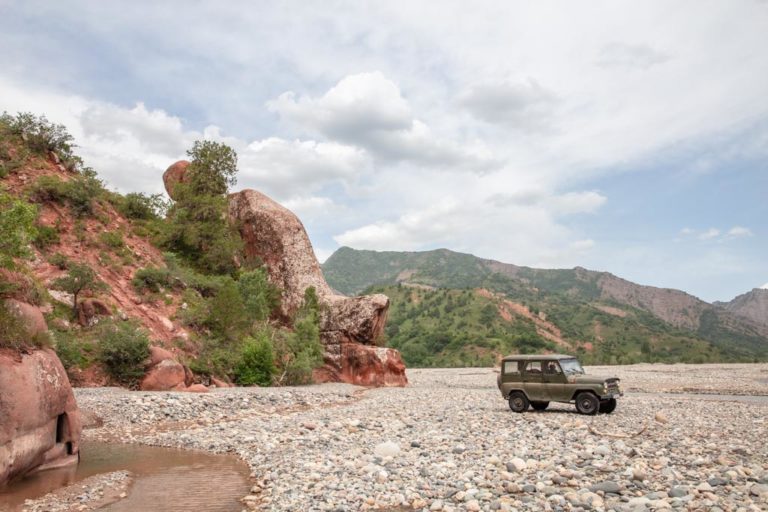
Visiting the Sary Khosar Nature Reserve, Tajikistan

How to Visit Childukhtaron, Tajikistan
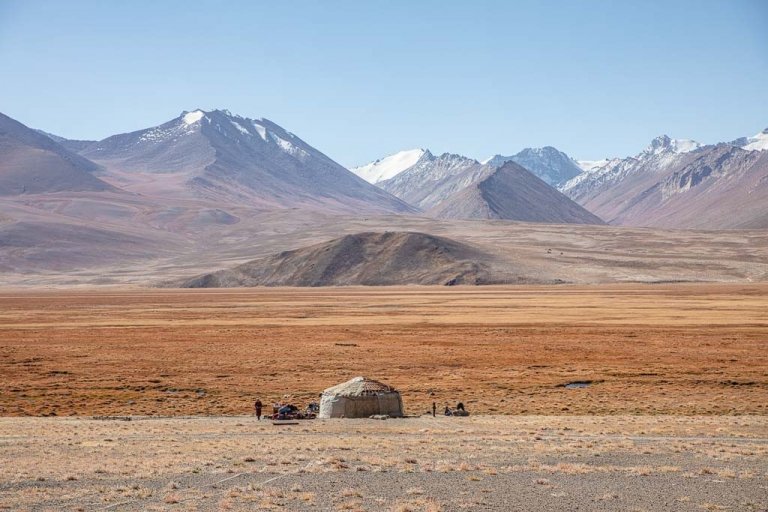
Eastern Pamir Travel Guide
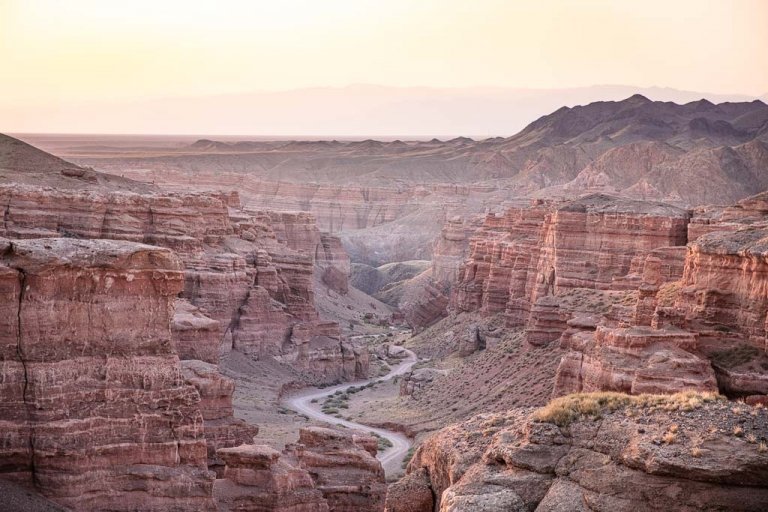
10 Off The Beaten Path Destinations For 2021
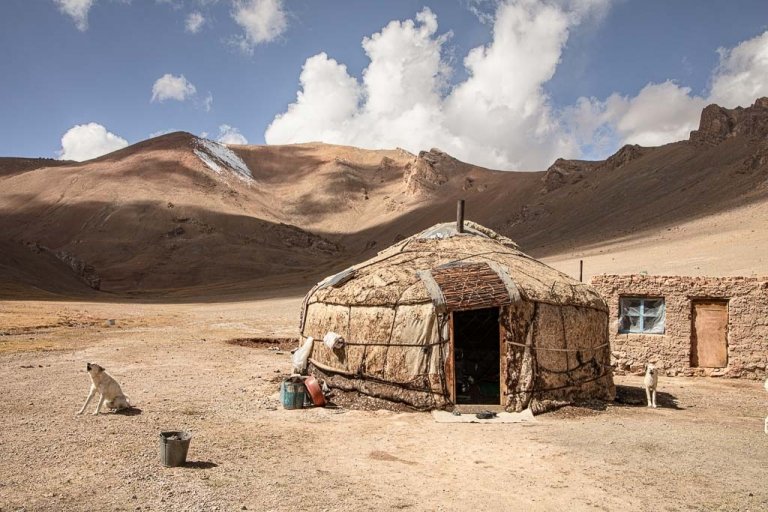
Travel with Me to China, Tajikistan and Pakistan in 2018!
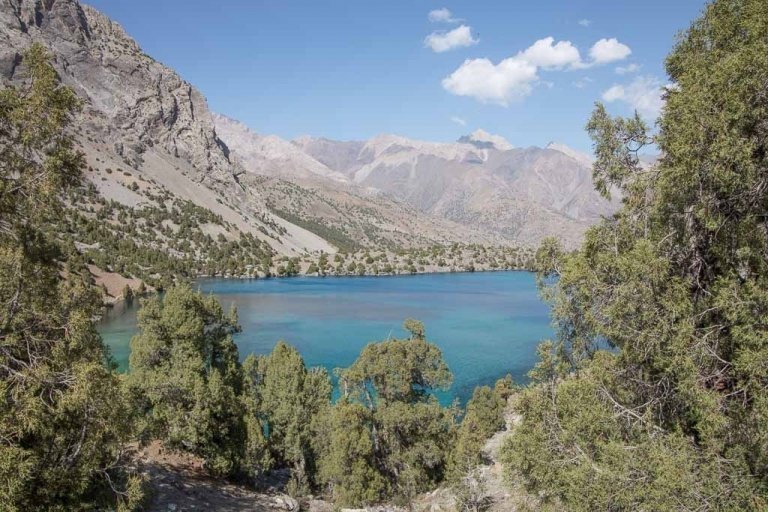
Walking Among Giants in Beautiful Tajikistan
9 thoughts on “the tajik wakhan valley travel guide”.
Hi. I did the Wakhan in 2016 renting a 4×4 with 3 others I met at the hostel in Khorog. He abandoned us in Murghab, not fulfilling his initial obligation to return two of us to Khorog. The resulting adventure is another story. Enjoyed your article – very thorough and accurate. Having owned your exact Osprey backpack, I thought is awful (it was custom fit with heat formed waist belt). For the last 12 years I have owned both the Deuter Futura Vario 50+10 and 60+10. Great pockets and endless great features with an adjustable backband to be able to size and fit the pack endlessly. A webbing wore out on my original 50+10 and Deuter replaced the entire pack. Have used the 60+10 to backpack alone the L trek in Iceland carrying tent etc, stove and food with no problem at age 66.
Oh wow, sorry to hear about the abandoning driver, but it sounds like you still had quite the adventure. I do have a couple of friends that absolutely love Deuter packs and said the same, they hated Osprey. Oddly, I did try Deuter and they just didn’t fit my body, though they are good quality packs.
I am Ibrahim from Wakhan Khandud. l am a guide in the Wakhan corridor if tourists want visit Afghan Wakhan can tell me or contact me I am a local guide in the Afghan Wakhan my price is cheap for all tourists. WhatsApp +93749229030. Thanks.
Hi Nicki, Thank you for this detailed guide. My wife and I are planning to spend 6 weeks in Tajikistan and would like to spend a good couple weeks exploring the Wakhan as it sounds so fascinating.
Hi Mike, Oh that’s great! I hope you both enjoy Tajikistan. There is plenty to keep you on your toes in the Wakhan for a couple weeks. What’s your route? Tajikistan is a place where 6 weeks can fly by and you still will leave with a long list of places to visit (or maybe that’s just me)…
Hi Nicki, I’m planning on village hopping for possibly about a week through the Bartang Valley and about another week through the Wakhan. How many of the villages have electricity/electronic charging options? I have an external battery pack but I think I will probably need to recharge every 3-4 days or so. Thanks for all the great info and pictures! -Jesse
Hey Jesse, Great, glad to hear you’re going to explore around the Wakhan and Bartang villages. In most villages you’ll find that homestays usually will have electricity for at least a few hours per day. I definitely recommend charging up whenever you get the chance. Another good investment is a solar charger- I have the goal zero nomad. It’s lightweight and thin. It does charge slowly, but is a great option in a pinch. If you haven’t already- I have a guide on the Bartang Valley as well you can check out! Please let me know if you have anymore questions, happy to help out.
Thanks, Nicole
Thank you for writing this detailed guide as I am planning out my very first trip to Tajikistan. Your photos on Instagram of Tajikistan is what first piqued my interest in the country, as I like many others had never even heard of the country before. You have clearly put a lot of time and effort into this guide (and others on Tajikistan!) and I really appreciate that as I read so many guides on other blogs about places I’m looking at visiting and it only includes very shallow information on the highlights and not much else, or yet another top 10 list… Don’t get me wrong sometimes top 10’s get me inspired and/or introduce me to a new place that may have never been on my radar.
Keep up the good work. I really enjoy your writing style as well as the great information you provide. This guide has made me even more excited to visit the Wakhan Valley, and I am now really deliberating on visiting the Wakhan on the Afghanistan side!
Hi Kyle! I’m so glad to hear that my photos put Tajikistan on the radar for you, and that you’re actually planning a visit! I hope you have the most amazing time while you’re there. And I will definitely say that a visit to the Afghan Wakhan is well worth the visit if you can spare the time and expense!
Leave a Comment Cancel Reply
Your email address will not be published. Required fields are marked *
Notify me of followup comments via e-mail. You can also subscribe without commenting.
This site uses Akismet to reduce spam. Learn how your comment data is processed .

- Istaravshan
- County facts
- Getting in and out
- Border control
- Getting around
- Communication
- Food and Drink
- M41 "Pamir Highway"
- Wakhan Explorer
- Silk Road Express
- Afghan Rally
- Pamir Highway
- Wakhan Rider
- Bike rentals
- Communism peak
- Korjenevskaya peak

- Tajikistan visa
- GBAO Permit
- Invitation letter
- OVIR registration
- Embassies abroad
- Foreign embassies
- Pamir highway
- Pamir Botanical garden
- Karakul lake
- Wakhan valley
- Fann mountains
- Marguzor lakes
- Afghan Bazaars
- Garm Chashma springs
- Yamchun Fortress
- Khaahka Fortress
- Bibi Fatima Springs
- Hissar fortress
- Iskanderkul lake
- Vrang Buddist Stupa
- Yashilkul lake
- Bulunlul lake
- Bashoro Mausoleum
- The Tomb of Rudaki
- How to Book
- Booking Conditions
- Responsible Travel
- Data Protection

Guaranteed deaprtures 2018
Read more...
Bikes for rent in Tajikistan
Vehicles for rent in tajikistan.
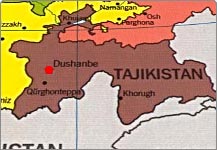
Travel Tajikistan: Pamir Highway and Wakhan Tours
Tajikistan Travel Basics | Tajikistan Tours Visa&Formalities | Must See FAQ's | About Us
[ Gallery ]
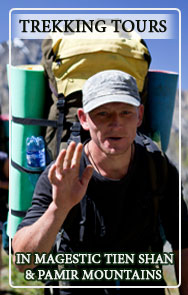
Central Asia Travel Guides
- Hotels Tours Visa

COMMENTS
The Ultimate Tajikistan Travel Guide. Updated April 2024,The Ultimate Tajikistan Travel Guide was originally written December 2016. Where Carib-blue glacial lakes reflect atmosphere scraping mountains, hospitality is something of legend and where travel is just opening up. Without a doubt traveling in Tajikistan is a rewarding experience.
1. Visiting Tajikistan in 2024 - Tajikistan entry requirements 1.1 Do I need a visa to travel to Tajikistan?. Starting from 1 January 2022, citizens of the European Union, USA, Canada, Australia, New Zealand, the United Arab Emirates, Israel, and many more countries can travel to Tajikistan visa-free for a period of 30 days.This visa-free policy is valid at airports and land borders.
Alichur (1 night) - Very cool landscapes, yaks, trekking and Marco Polo sheep safaris. Madyian Valley, close to Murghab - things to do in Tajikistan. Bulunkul (Stopover) - The coldest place in Central Asia is home to a beautiful lake. The trek from Alichur to here is a popular one. You can find a few homestays.
Tajikistan. Asia. The term 'predominantly mountainous' doesn't do justice to a country where over 90% of the land is upland. This fact of nature has given Tajikistan a precious advantage over its neighbours, namely some of the most inspiring, high-altitude landscape in the world. Within an hour of Dushanbe lie multi-hued lakes, peaks that beg ...
The Ultimate Tajikistan Travel Guide. 12 Day Pamir Highway Expedition June 25-July 6, 2024. 25 Day Tajikistan Expedition June 12-July 6, 2024. Trekking The Haft Kul in Tajikistan's Fann Mountains. Two Week Tajikistan & Uzbekistan Itinerary. Tajikistan Itinerary For 1-4 Weeks.
My Tajikistan Travel Guide 2021 Where is Tajikistan? Tajikistan is the smallest, and poorest republic in Central Asia.It is sandwiched between notorious Afghanistan and China, but also borders Uzbekistan and Kyrgyzstan.. As part of the Soviet Union before its independence in 1991, virtually no visitors crossed the border prior to that.
Top-End ($200+/day): If you're looking to travel Tajikistan in style, you'll need a daily budget of around $200 per day. This will cover most of your expenses including food, accommodation, and transportation. In general, top-end travelers can expect to spend around $200 per day.
This comprehensive guide is designed to help you plan your trip to Tajikistan, providing you with valuable tips and insider information to ensure a smooth and unforgettable journey. Whether you are a nature lover, adventure seeker, history buff, or simply craving a unique travel experience, Tajikistan has it all.
Getting around Tajikistan as a tourist can involve a mix of transportation modes due to the country's diverse geography and varying road conditions. Here are some common ways to travel within Tajikistan: Shared Taxis and Marshrutkas: Shared taxis and marshrutkas (minibuses) are common modes of transportation between cities and towns.
Quick Facts and Travel Tips for Tajikistan. Capital: The capital of Tajikistan is Dushanbe City, which has approximately 1.2 million inhabitants and is located on the Western side of the country. Language: The official language in Tajikistan is Tajik, but most people speak Russian as well. Currency: The currency in Tajikistan is Somoni. Currently, 1 USD is worth about 11 Tajik Somoni.
About The World Travel Guide. The World Travel Guide (WTG) is the flagship digital consumer brand within the Columbus Travel Media portfolio. A comprehensive guide to the world's best travel destinations, its print heritage stretches back more than 30 years, with the online portal reaching its 20-year anniversary in 2019.
Tajikistan Travel Guide The ex-Soviet Republic of Tajikistan is a truly wild country that you don't want to miss in your Silk Road journey. The term 'predominantly mountainous' doesn't do justice to a country where over 90% of the land is upland.
Explore Dushanbe. The capital city of Tajikistan is the perfect place to explore before heading out to the mountains if traveling to Tajikistan for the outdoors activities. 5. Don't Leave Without Eating Qurutob. Qurutob is Tajikistan's national dish, a refreshing mix of sautéed vegetables (tomatoes, onions, cucumbers, carrots), yogurt, and spices.
Getting The Tajik Visa And GBAO Permit. How To Travel The Pamir Highway. Day 1 - Osh To Sary Mogol. Day 2 - Sary Moghul To Karakul. Day 3 - Karakul To Murghab. Day 4 - Murghab To Bulunkul. Day 5 - Bulunkul To Yamg. Day 6 - Yamg To Yamchun. Day 7 - Yamchun To Khorog.
Tajikistan. Nature has been kind to Tajikistan, bestowing the country with breathtaking beauty: here you'll find mountains, glaciers, lush river valleys and dense forest, supporting a bewildering array of flora and fauna. Sophie Ibbotson, author of Tajikistan: the Bradt Guide. Tajikistan is the roof of the world.
Tajikistan Travel is an ascent to the Roof of the World in the Pamirs, counted among the world's tallest and most grandiose mountain chains. Yet this age-old land also has roots as deep and as ancient as time itself. Hints of antiquity are sensed among temple ruins, heard in the obscure tongue of secluded communities and seen in rich cultural ...
Tajikistan is a landlocked country on the ancient Silk Road in Central Asia. The nation's majority culture is non-Turkic, unlike its neighbors to the north and west and east. Tajikistan is the poorest country out of the former Soviet states, owing to its remote geography and a devastating civil war that wracked the country from 1992 until 1997.
Tajikistan Travel Guide: Top 8 Tourist Attractions. Tajikistan is a country full of surprises and wonders that are just waiting to be explored. From bustling cities to the majestic mountains, Tajikistan has something to offer for every kind of traveler. Join us on a journey to explore the best of Tajikistan tourism places, so you can experience ...
Budget and accommodation. Although Tajikistan is the poorest post-Soviet country, services are not super cheap, even if the quality is often so-so. Blame its remote location and local elites' stranglehold on the economy. A Pamir homestay will cost around 15$ with half board, and petrol costs around 1 euro / liter.
Tajikistan travel guide. Tip toe your way through our Tajikistan travel guide and get lost in a world of spice stalls, yak carts and towering mountains as you discover how to make the most of your time all the way from Istaravshan to Khorog by way of Iskander-Kul Lake, Dushanbe and the second highest highway in the world, the Pamir Highway.
Tajikistan travel guide, including map of Tajikistan, top Tajikistan travel experiences, tips for travel in Tajikistan, plus how to follow the Pamir Highway thr. Sandwiched between Afghanistan and China, this former Persian settlement is made up of a mêlée of clans. It has a long and swashbuckling history; it is the land where Alexander the ...
National Geographic's latest travel stories about Tajikistan. ... Subscribe. Menu. Travel; Tajikistan Travel Guide. In Tajikistan, visit the ruins of a once mighty Silk Road kingdom. Travel;
Most who visit the Wakhan Valley do so by private 4×4 hire with other travelers as a detour from the Pamir Highway between Khorog and Osh, or as a loop from Khorog to Khorog combining either the Pamir Highway and Wakhan Valley or the Shokhdara Valley and Wakhan Valley. Most 4×4 drivers in Tajikistan charge a rate of .70¢-.90¢ per kilometer.
The climber's paradise would be the three giants of the Pamir mountains: Peak Communism 7495 m- recently renamed to Somoni, Peak Lenin at 7134 m and Peak Korjenevskaya at 7105 m above sea level. For less demanding adventures - trekking and walking tours in Fann mountains, just across the border from Uzbekistan, would be especially popular.